



|

|

|
|
2007, Animalblog by Terry Costales
|
|
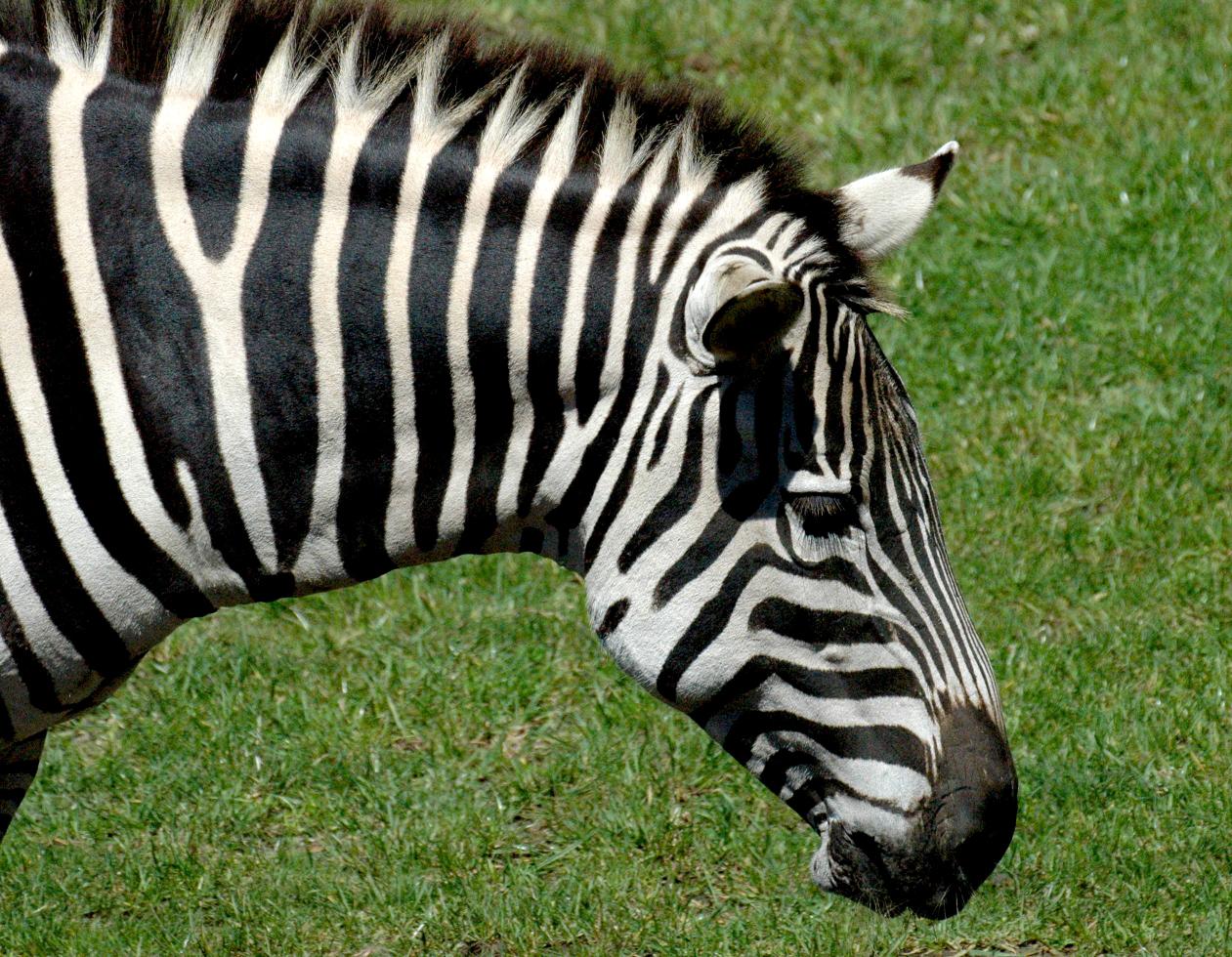
A beautiful Zebra
(2007) San Francisco Zoo • Photo Posted Sunday, October 7, 2007 • © 2007 Terry Costales 
#20071007.jpg Add a comment or report a mistake
|
|
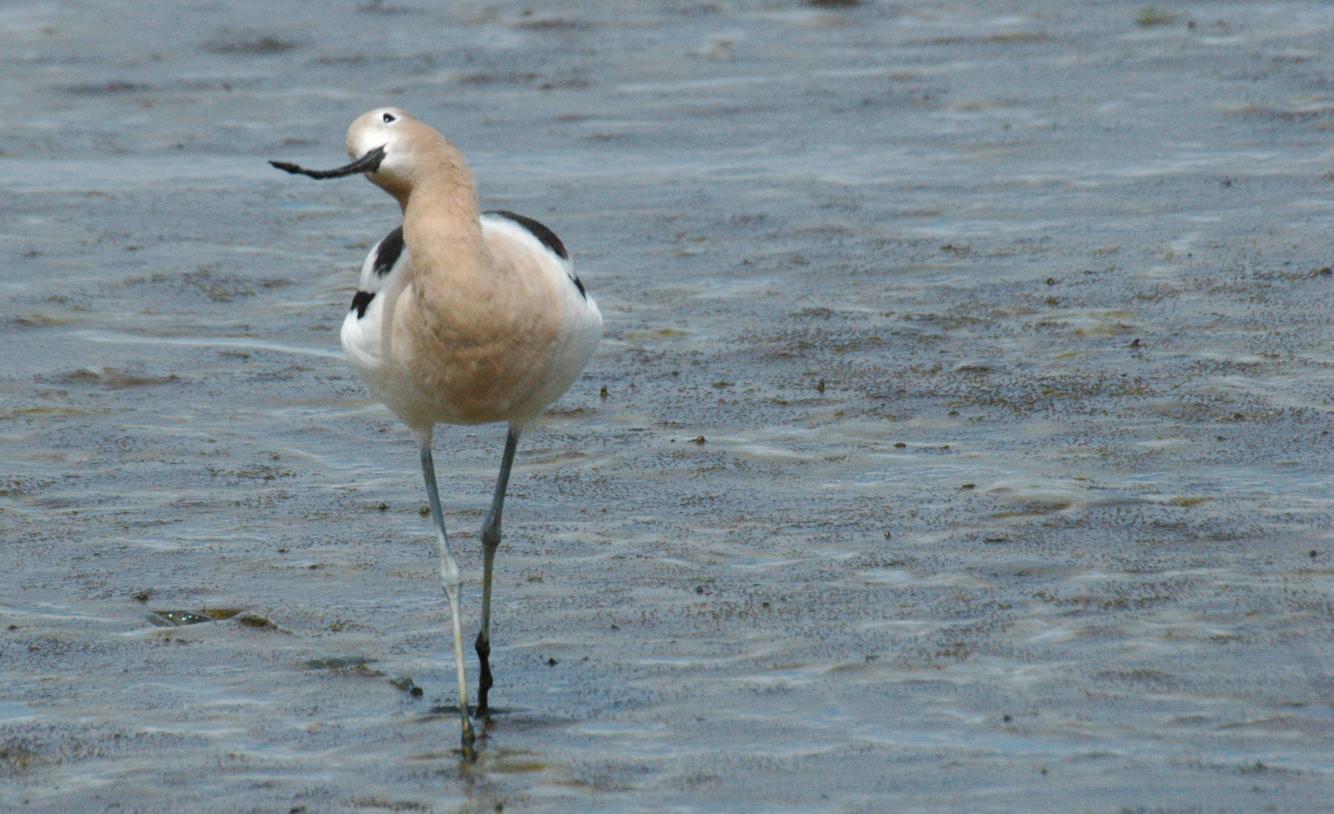
This view shows the extent of the buff coloring avocets acquire on neck and chest in the breeding season. They stand about 15 to 20 inches tall and
Wikipedia

#20070520.jpg Add a comment or report a mistake
|
|
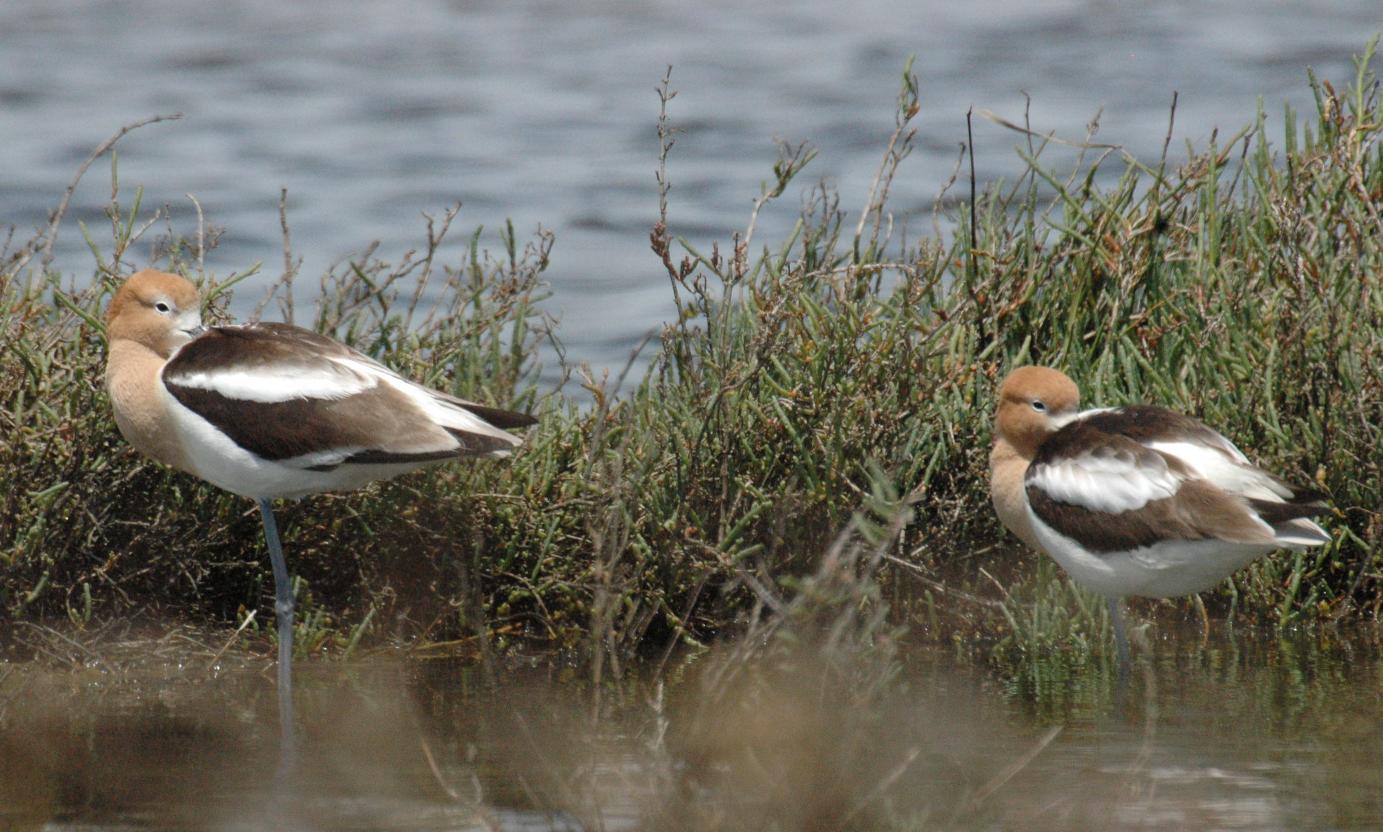 Taken Early May, they are guarding a nest and looking lovely. Maybe next trip out there I can get a shot of some Avocet chicks.

#20070521.jpg Add a comment or report a mistake
|
|
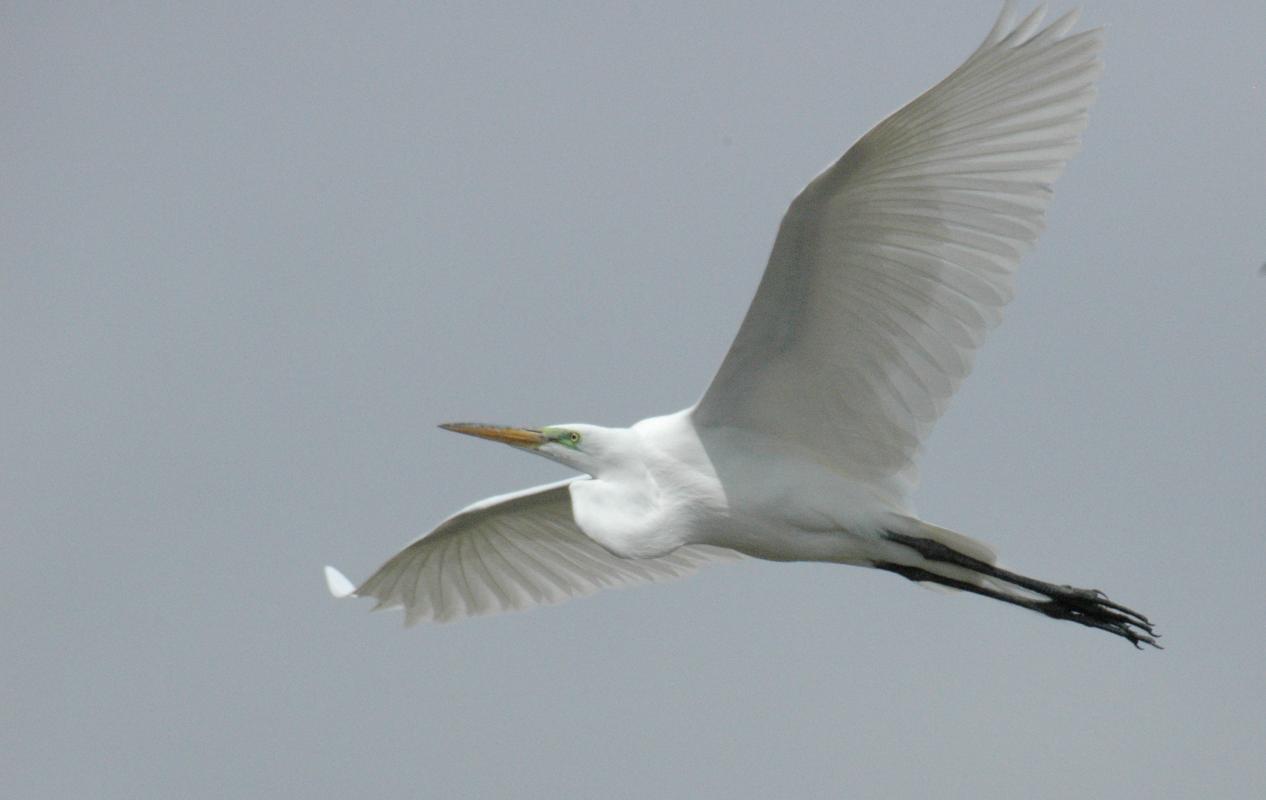 These large egrets are graceful and breathtaking in flight. I watched this bird flying back and forth several times bringing nesting material back to it's mate. There was only one pair that I saw amongst dozens of the smaller Snowy Egrets.
(2007) Palo Alto Bird Sanctuary • Photo Posted May 22, 2007 • © 2007 Terry Costales 
#20070522.jpg Add a comment or report a mistake
|
|
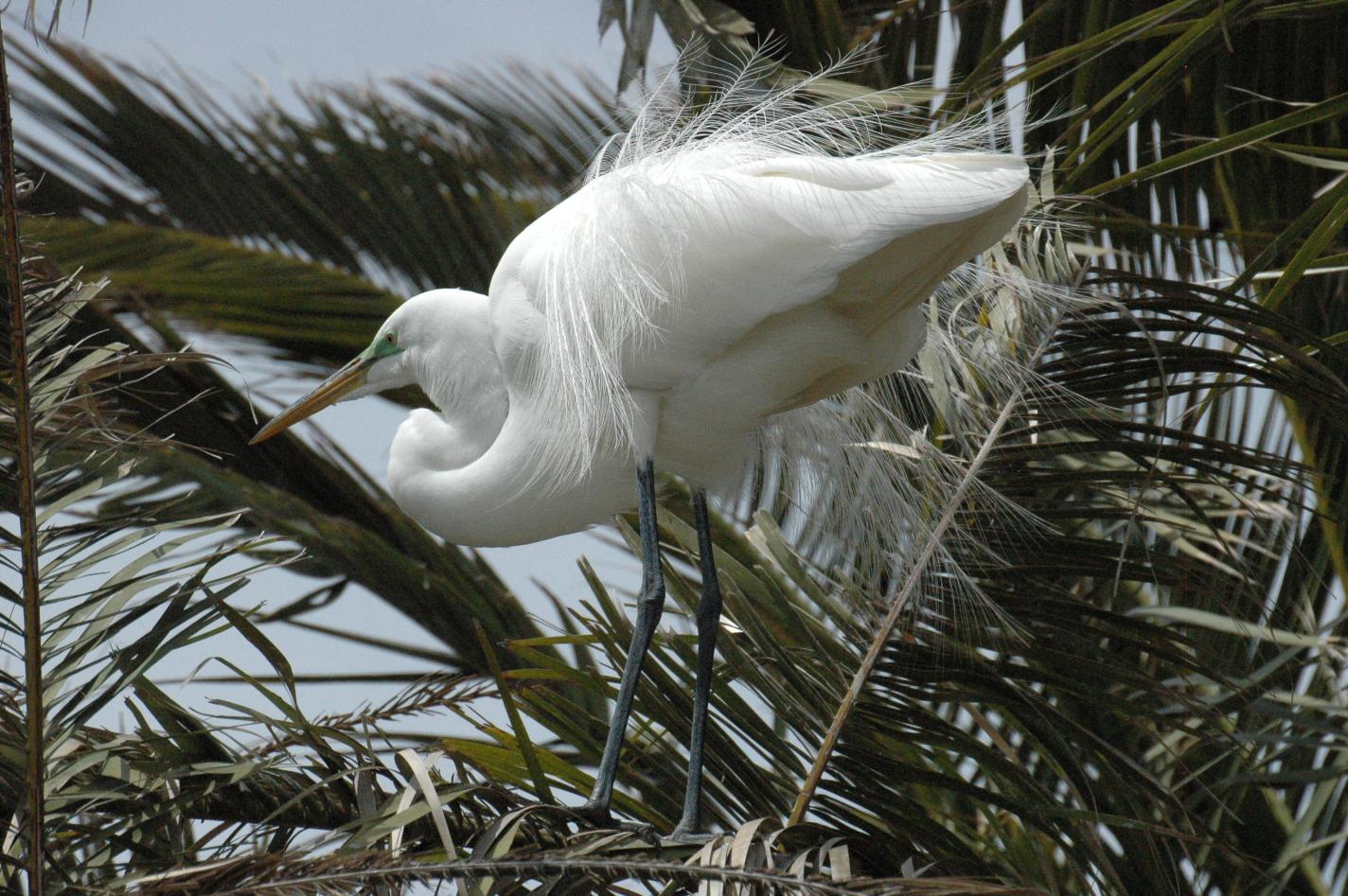 This shows all the markings you would look for in identifying this bird in the breeding season. The lacy plumes on the back and the green/blue "mask" that extends from the base of the bill to the eye are only present during this time. The Audubon Society came into existence to stop the extermination of great Egrets by plume hunters and has this bird as it's logo.
Great Egrets are found world-wide, even in Australia
(2007) Palo Alto Bird Sanctuary • Photo Posted May 23, 2007 • © 2007 Terry Costales 
#20070523.jpg Add a comment or report a mistake
|
|
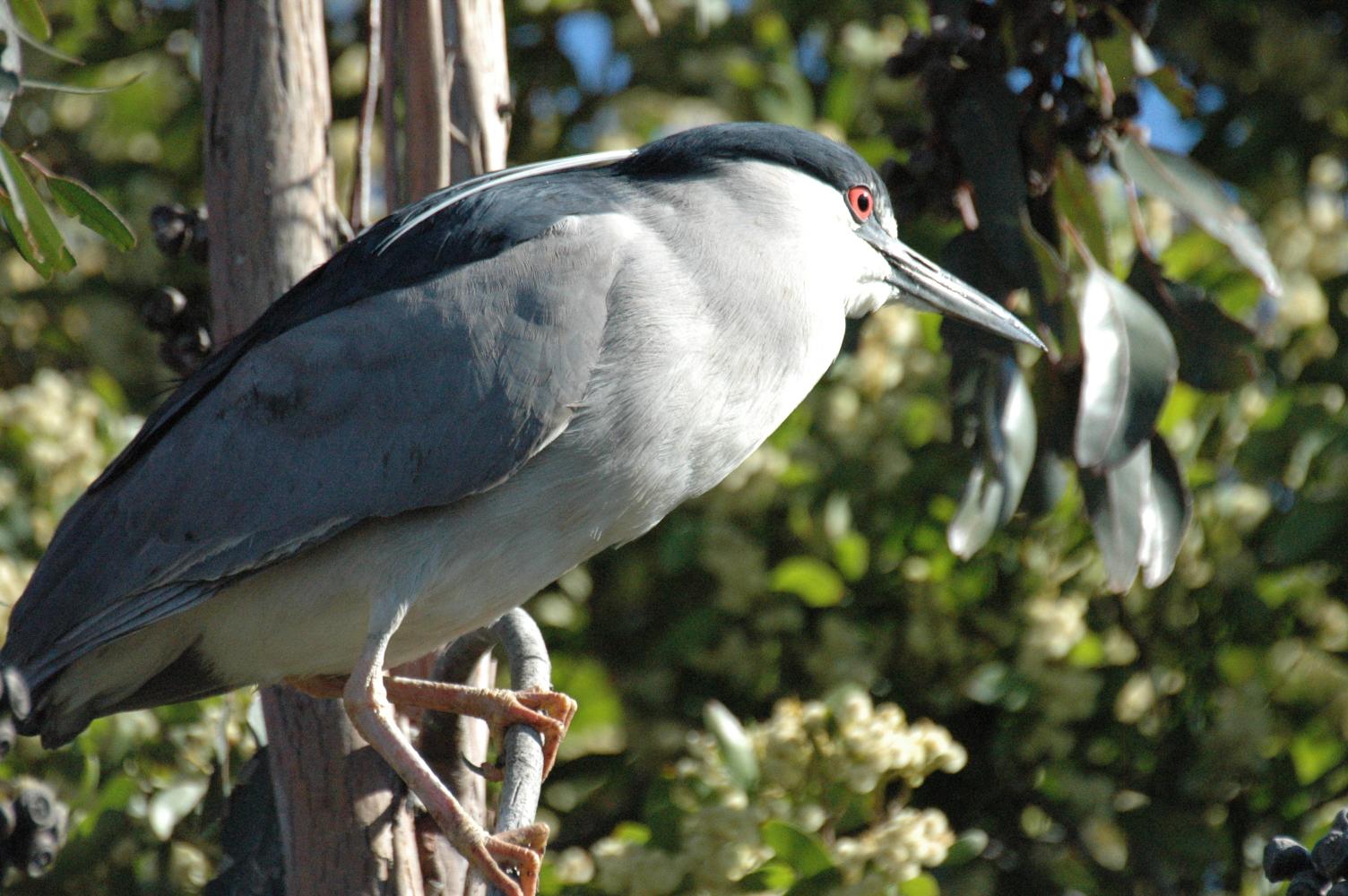 At the sanctuary, there is a group of palm trees next to the large pond that provides prime nesting spots. It is fenced off to ensure the breeding birds are not disturbed. In late March, this was one of many night herons nesting amongst the snowy and great egrets. Its usually yellow legs are pink because it's breeding season.
(2007) Palo Alto Bird Sanctuary • Photo Posted May 24, 2007 • © 2007 Terry Costales 
#20070524.jpg Add a comment or report a mistake
|
|
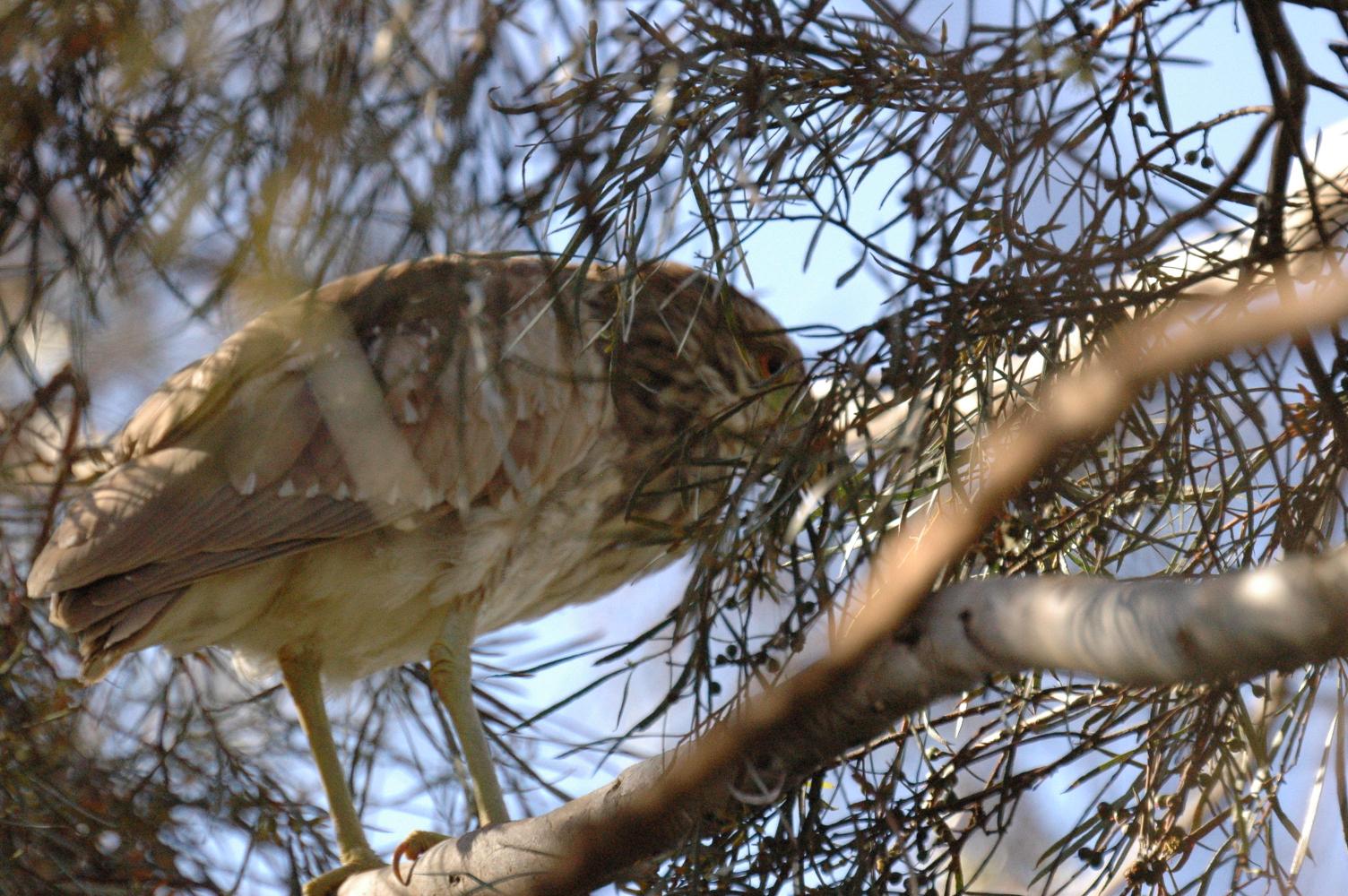 Taken late March, this bird is probably a year or two old and has the yellow legs you see on both juveniles and non breeding adults. They get their full adult plumage in the third year. If you look at this shot and the thumbnail below it, you can see they are roughly the same size and shape. Nice of them to pose for their comparison shots.
(2007) Palo Alto Bird Sancutary • Photo Posted May 25, 2007 • © 2007 Terry Costales 
#20070525.jpg Add a comment or report a mistake
|
|
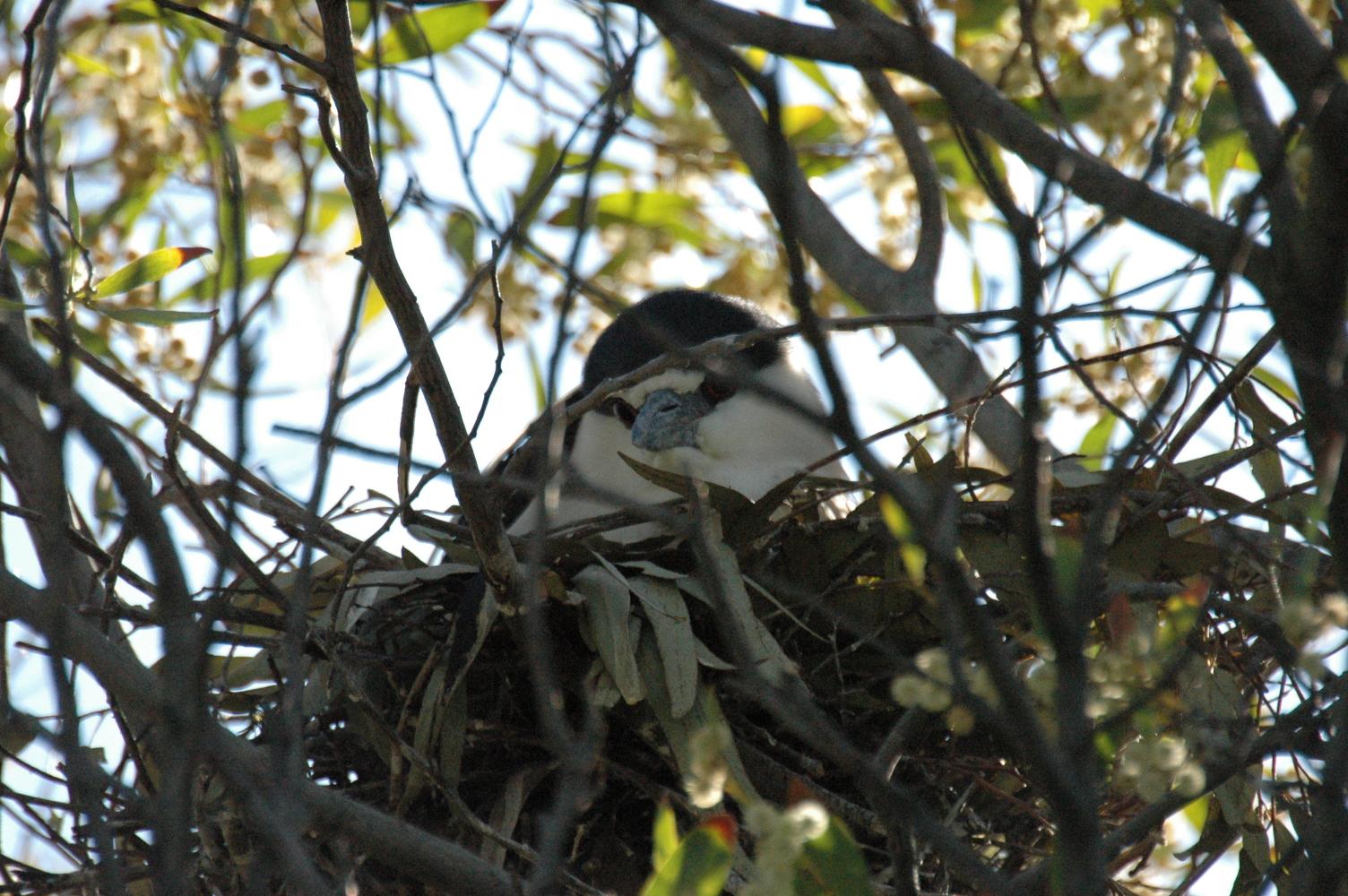 This nest was not in the fenced off area near the pond but next to the picnic tables. The herons are used to seeing and hearing people and seem quite tolerant of being ogled and photographed.
(2007) Palo Alto Bird Sanctuary • Photo Posted May 26, 2007 • © 2007 Terry Costales 
#20070526.jpg Add a comment or report a mistake
|
|
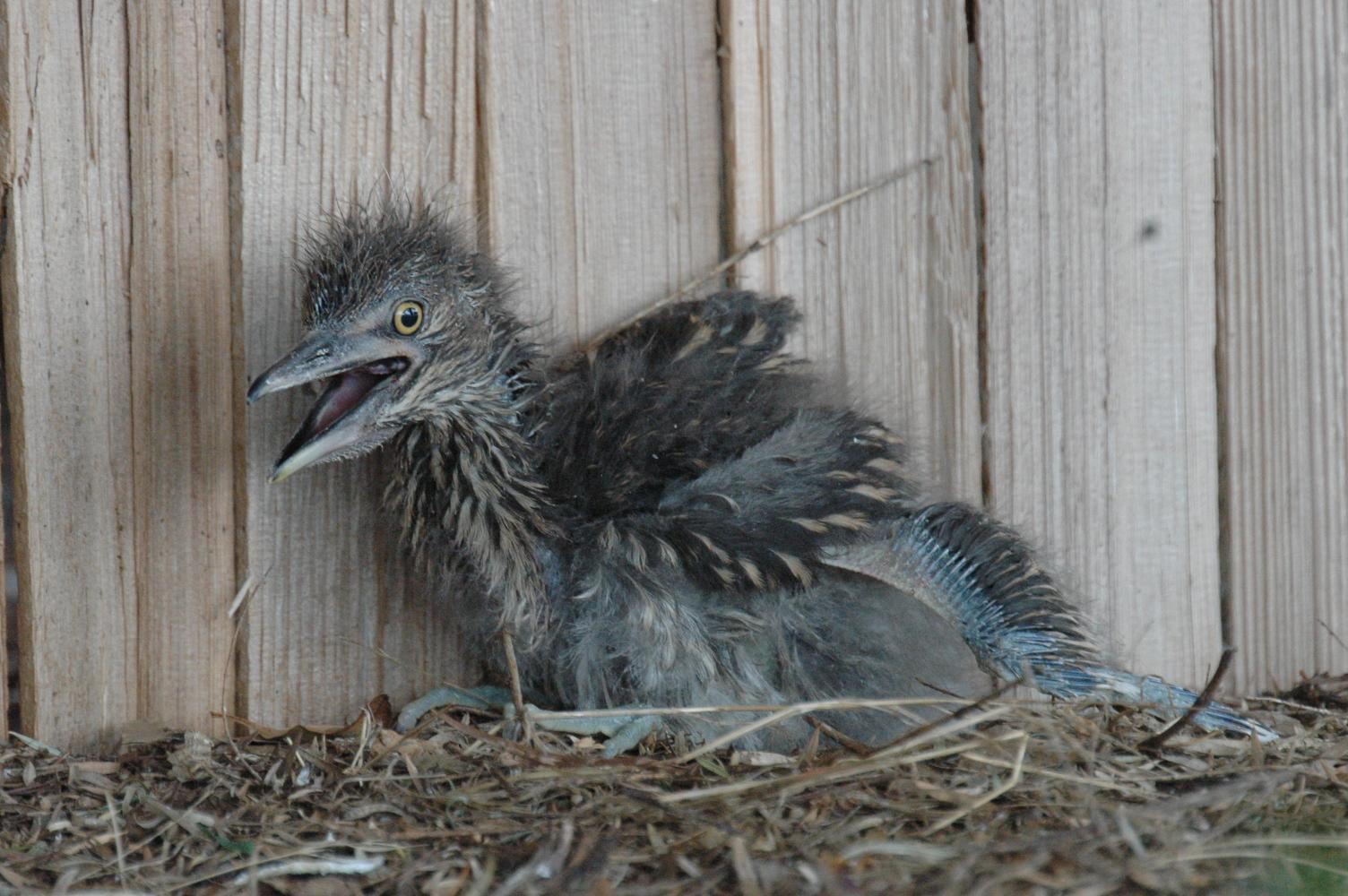 This was taken in early May and shows a fledgling night heron that has fallen out of it's nest. It took shelter next to a fence that was only a few feet from a path. I hope everyone knew to leave it alone. Its parents would care for it where it is, but it was quite vulnerable there.
This picture is being considered for inclusion in a training manual to be used by the
Toronto Wildlife Centre
(2007) Palo Alto Bird Sanctuary • Photo Posted May 27, 2007 • © 2007 Terry Costales 
#20070527.jpg Add a comment or report a mistake
|
|
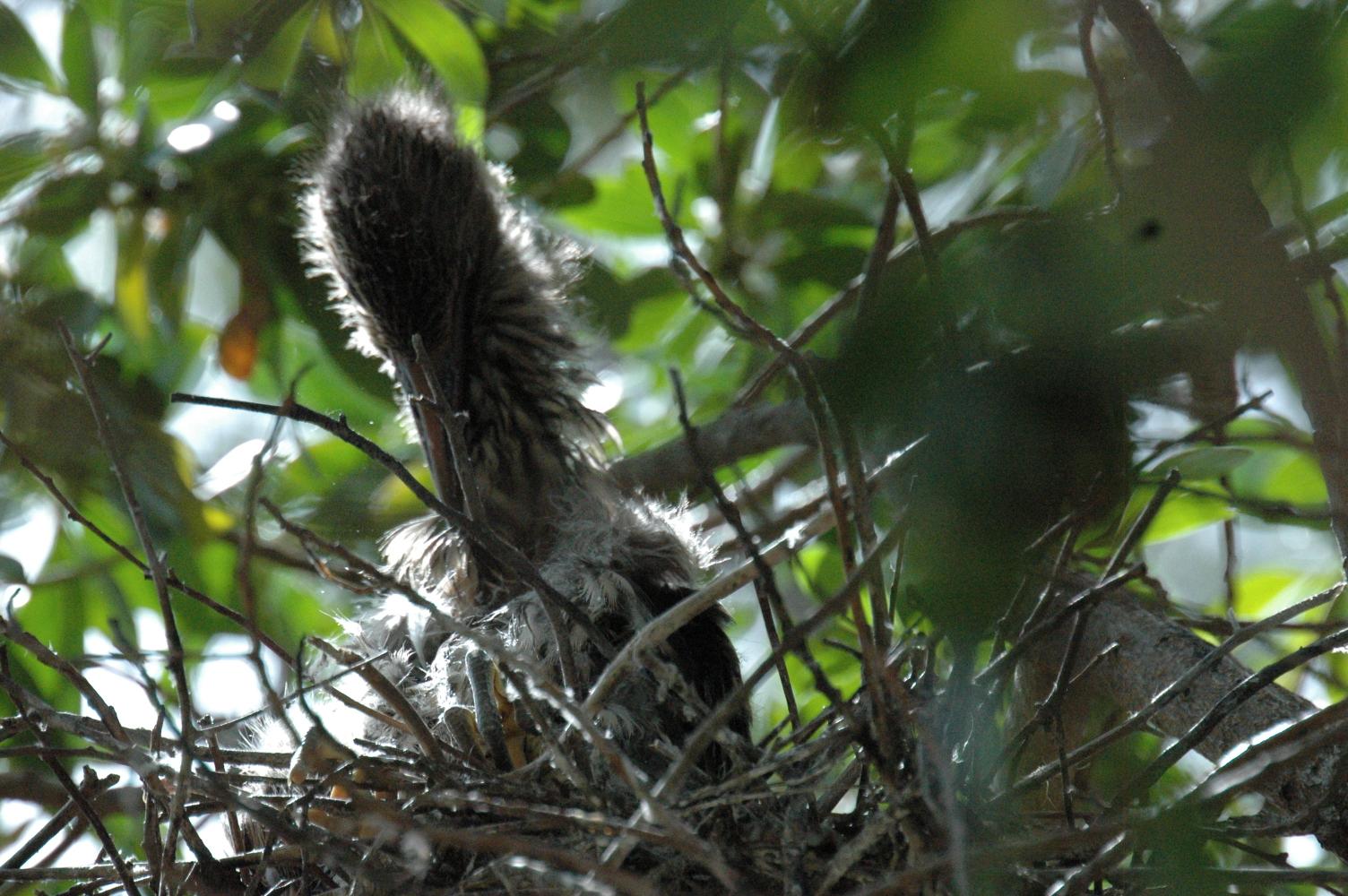 This picture was taken early May. The nest was in a very shady area and it was overcast, but luckily there was a brief break in the clouds which provided enough light for me to get a decent shot. This fledgling night heron managed to stay in the nest despite what looked like a precarious perch.
(2007) Palo Alto Bird Sanctuary • Photo Posted May 28, 2007 • © 2007 Terry Costales 
#20070528.jpg Add a comment or report a mistake
|
|
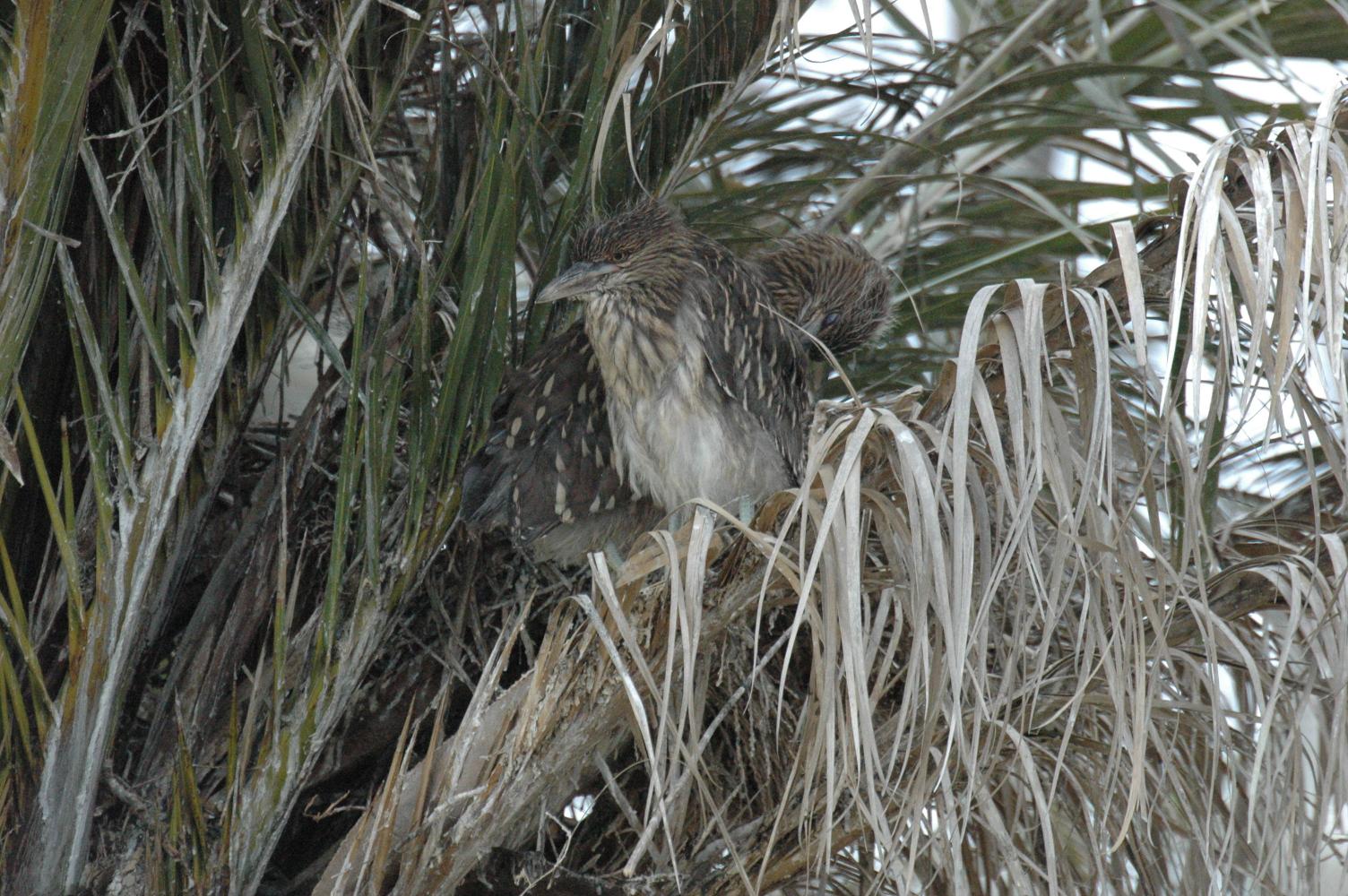 This picture was taken in early May and these two seem a little older than the other fledglings I saw. They have gotten big enough to come out of the nest and perch on the branches nearby.
(2007) Palo Alto Bird Santuary • Photo Posted May 29, 2007 • © 2007 Terry Costales 
#20070529.jpg Add a comment or report a mistake
|
|
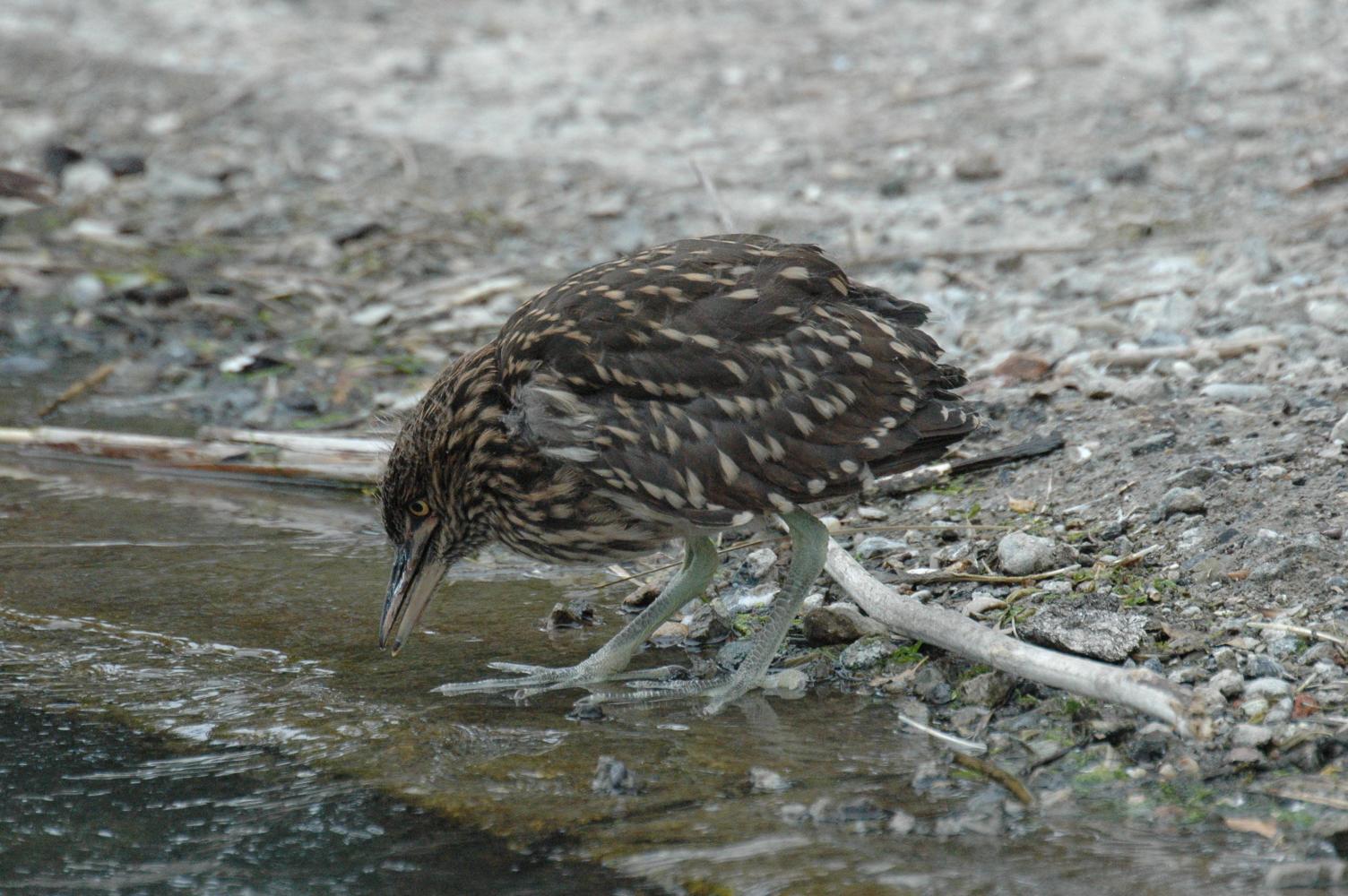 This photo was taken early in May. There were 4 or 5 young ones about this size on the ground all within the fenced in area. Sometimes one of them would clamber up into a bush, but mostly they sat quietly on the ground. This little night heron actually flew a short distance to explore the edge of the nearby pond. He made a few jabbing motions with his bill and managed a couple of times to pick up a twig
I felt quite privileged to have witnessed and recorded these birds and their behavior. Here are more of my
favorite pictures
(2007) Palo Alto Bird Sanctuary • Photo Posted May 30, 2007 • © 2007 Terry Costales 
#20070530.jpg Add a comment or report a mistake
|
|
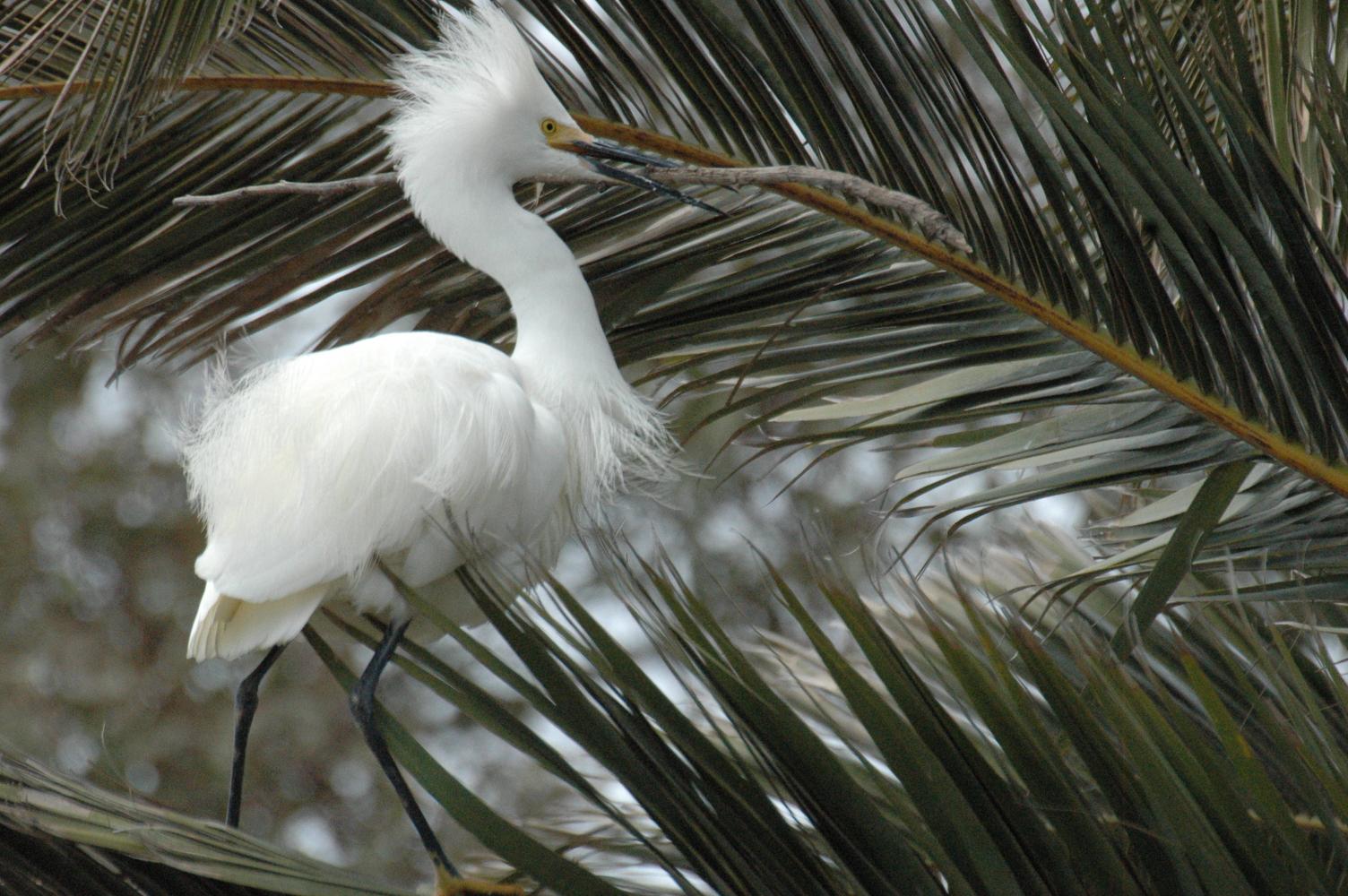 This picture was taken in late April of this year and shows this gorgeous Snowy Egret bringing a twig back to the nest as an offering to his mate.
Their distinguishing marks are the black legs, yellow feet and lacy plumes. The breeding season causes more plumes to develop on their backs and the area in front the eyes
(the lores
The only thing not beautiful about these birds are their voices. A gurgling "wogga, wogga, wogga." As if Donald Duck was imitating a drowning turkey.
(2007) Palo Alto Bird Sanctuary • Photo Posted May 31, 2007 • © 2007 Terry Costales 
#20070531.jpg Add a comment or report a mistake
|
|
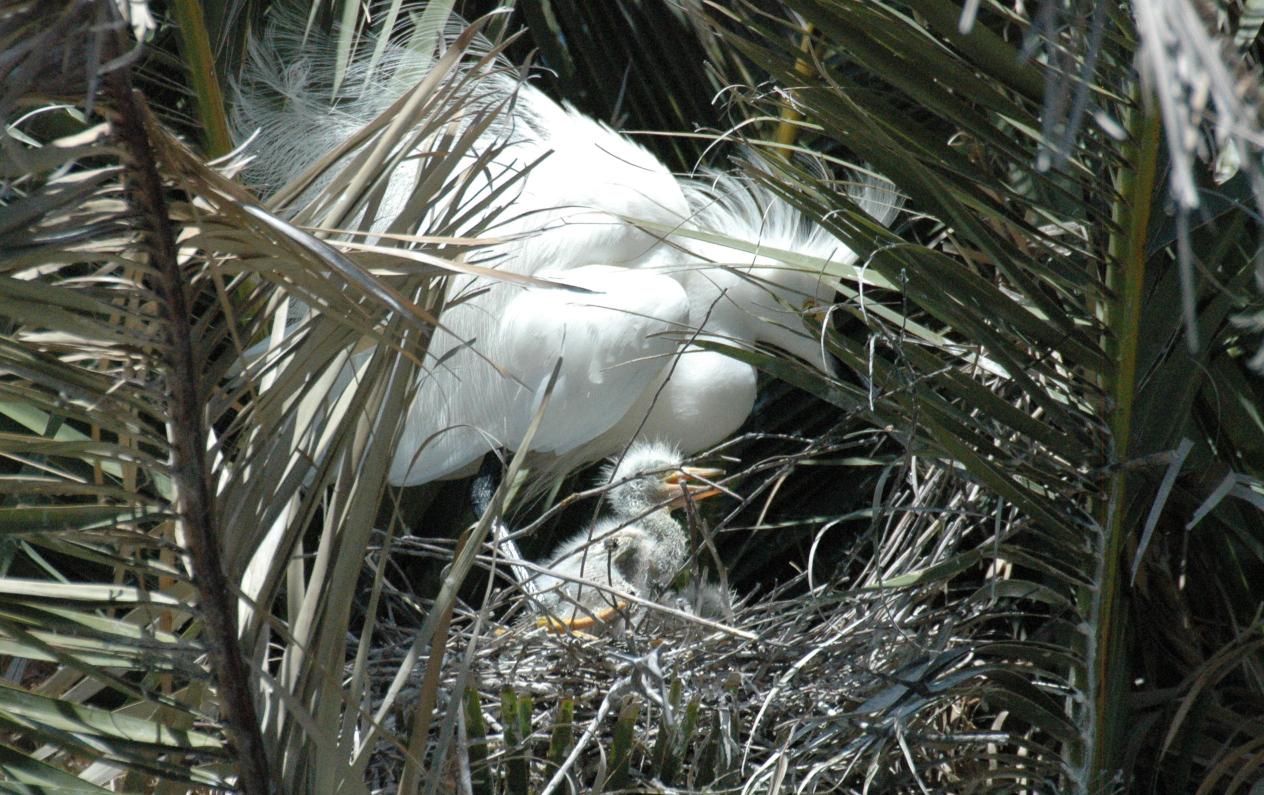 This picture was taken in late May. There were mother egrets in the colony still sitting on eggs while others, like the one above, were taking care of their small chicks. Many mother egrets were feeding larger chicks. Many larger fledglings were out on the branches but not yet flying. Quite an advance in procreation from my visit a month earlier.
(2007) Palo Alto Bird Sanctuary • Photo Posted June 1, 2007 • © 2007 Terry Costales 
#20070601.jpg Add a comment or report a mistake
|
|
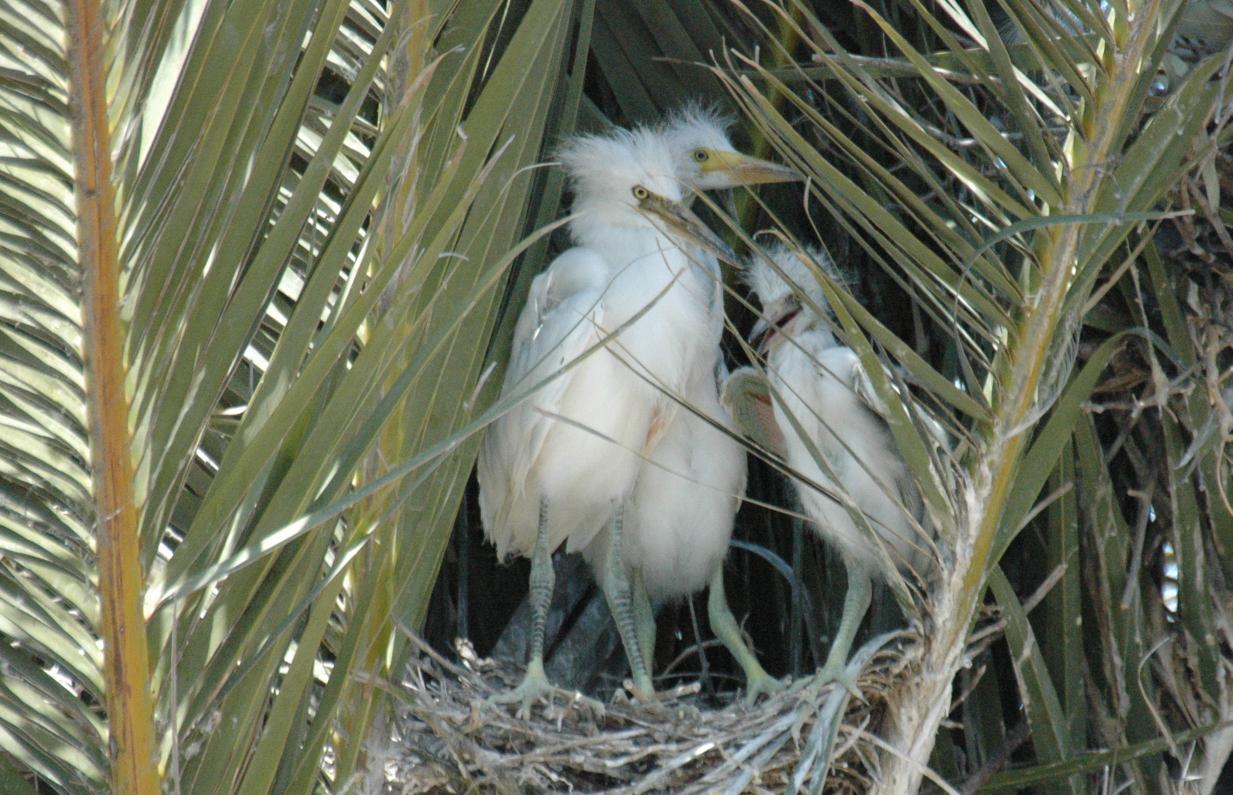 These 3 birds are all siblings but one is quite smaller than the rest. I kept expecting it to get shoved aside, or even knocked out of the nest, but it really held it's own. The mother would fly up to feed them and the little one was always in the front making the most noise and waggling its outstretched wings up and down in a frantic "feed me" dance. The young don't have the black legs or yellow feet like their parents, just a green that changes gradually to the adult colors as they grow.
(2007) Palo Alto Bird Sanctuary • Photo Posted June 2, 2007 • © 2007 Terry Costales 
#20070602.jpg Add a comment or report a mistake
|
|
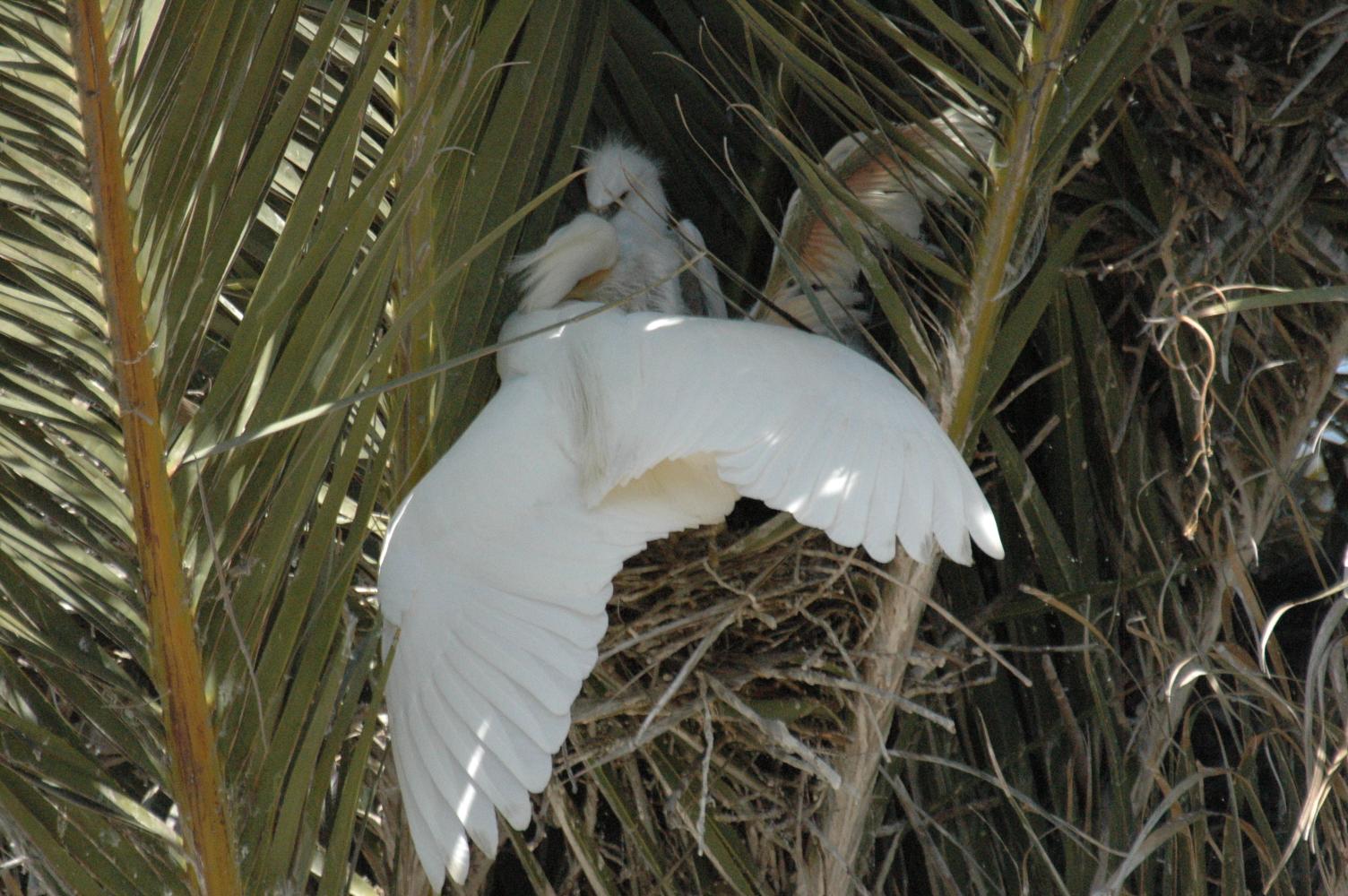 This is the trio of nestlings from yesterday's blog. Mom swoops in, holds on to the nest with her feet, uses her wings to stay balanced and feeds them on the fly, as it were. They set up a clamor when they see her nearby. "C'mon Mom, we're starving here!"
Here are
more photos
(2007) Palo Alto Bird Sanctuary • Photo Posted June 3, 2007 • © 2007 Terry Costales 
#20070603.jpg Add a comment or report a mistake
|
|
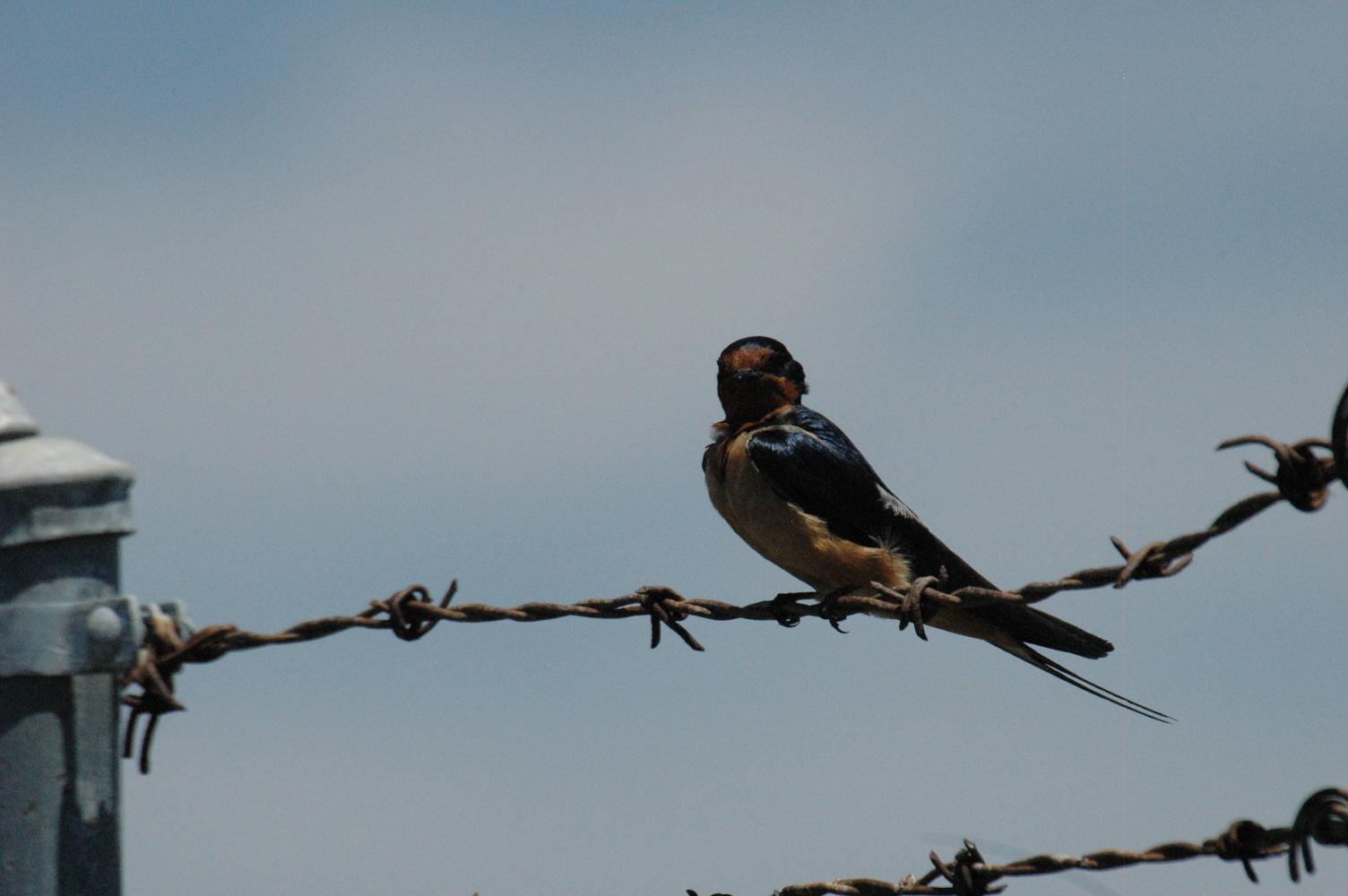 This picture was taken late May of this year. This is a very active bird so I was surprised and delighted to see it perch long enough for me to photograph it. The Barn Swallow is the only American swallow that has that deeply forked "swallow-tail".

#20070604.jpg Add a comment or report a mistake
|
|
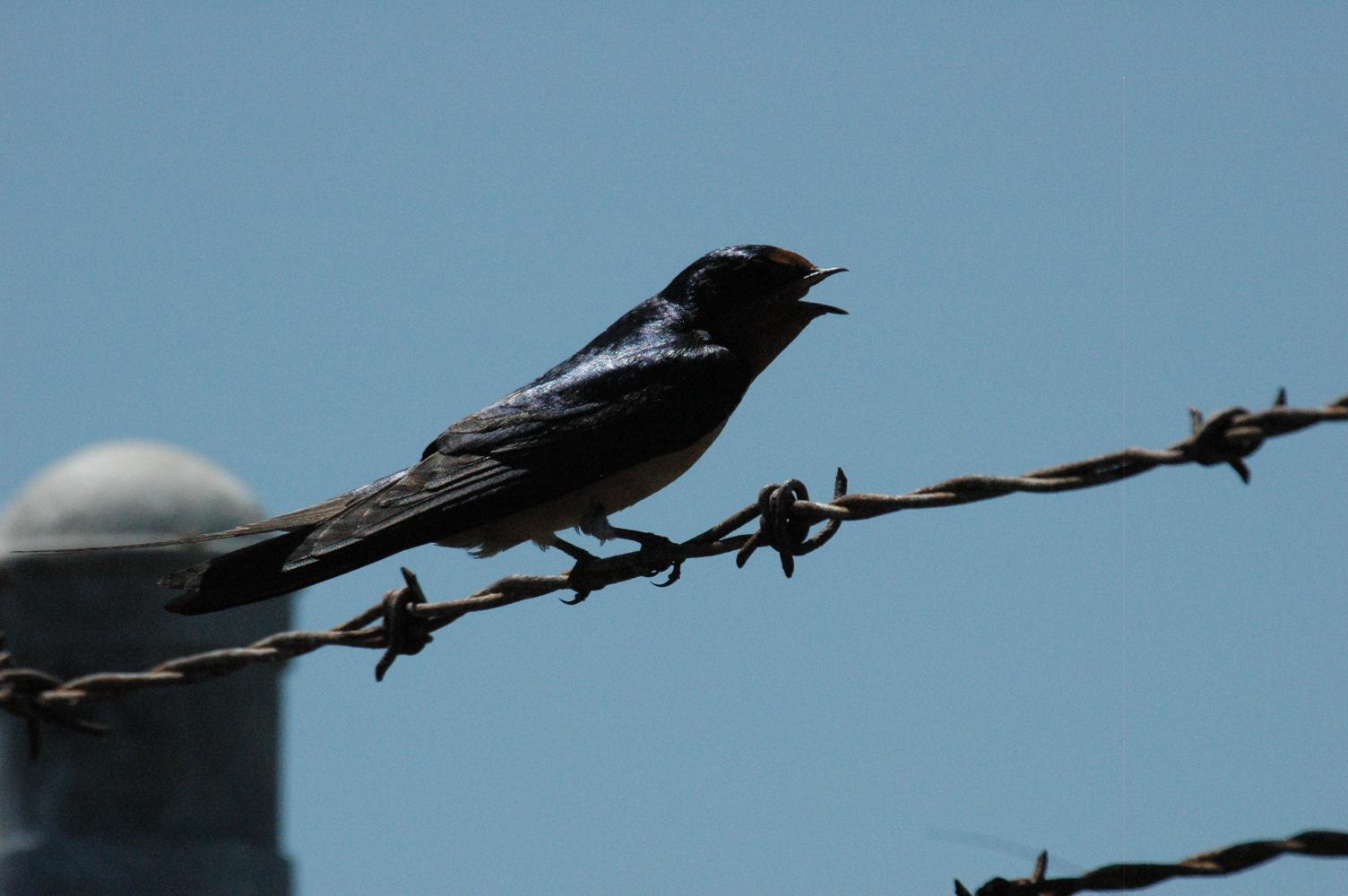 This picture was taken moments after the one I posted yesterday. It's a small bird, about 7 inches long, and was singing its little heart out. I only saw a couple of barn swallows that day, but there were almost a hundred cliff swallows nesting under the eaves of the Interpretive Center.
The name barn swallow derives from the fact that their nests are usually found inside barns. The
nest

#20070605.jpg Add a comment or report a mistake
|
|
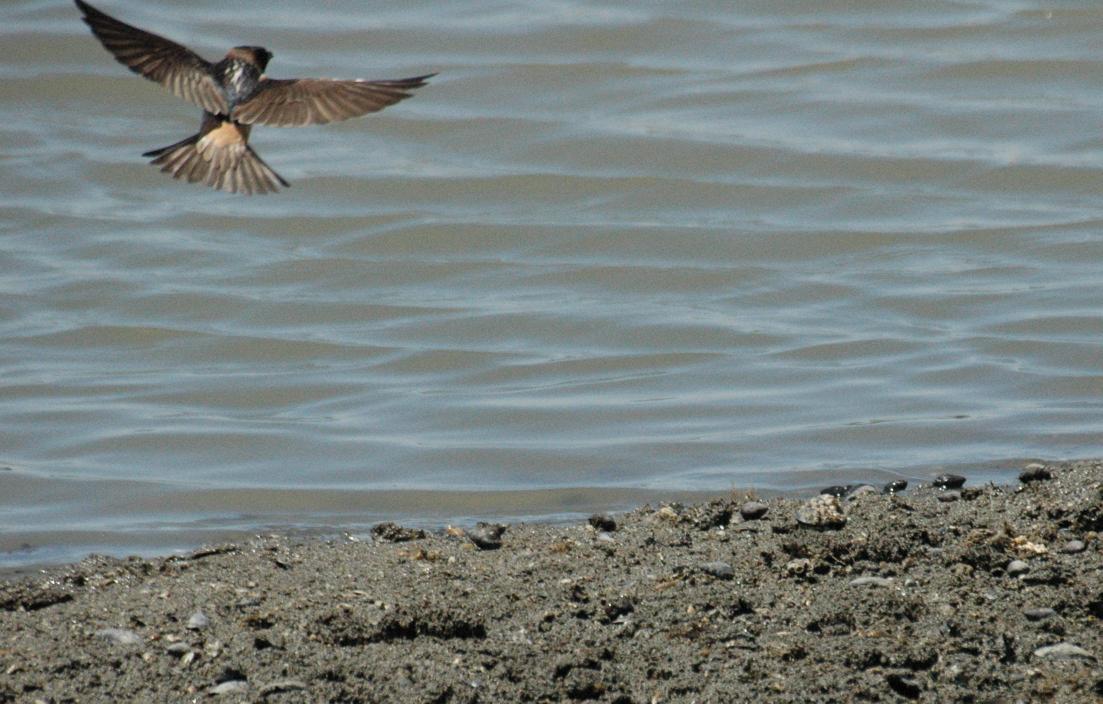 This picture was taken just after the swallow had gathered a mouthful of mud to add to its nest. It plainly shows the tail shape that helps to distinguish it from the Barn Swallow.
This is the kind of swallow that returns each year from Goya, Argentina to the
San Juan Capistrano
(2007) Palo Alto Bird Sanctuary • Photo Posted June 6, 2007 • © 2007 Terry Costales 
#20070606.jpg Add a comment or report a mistake
|
|
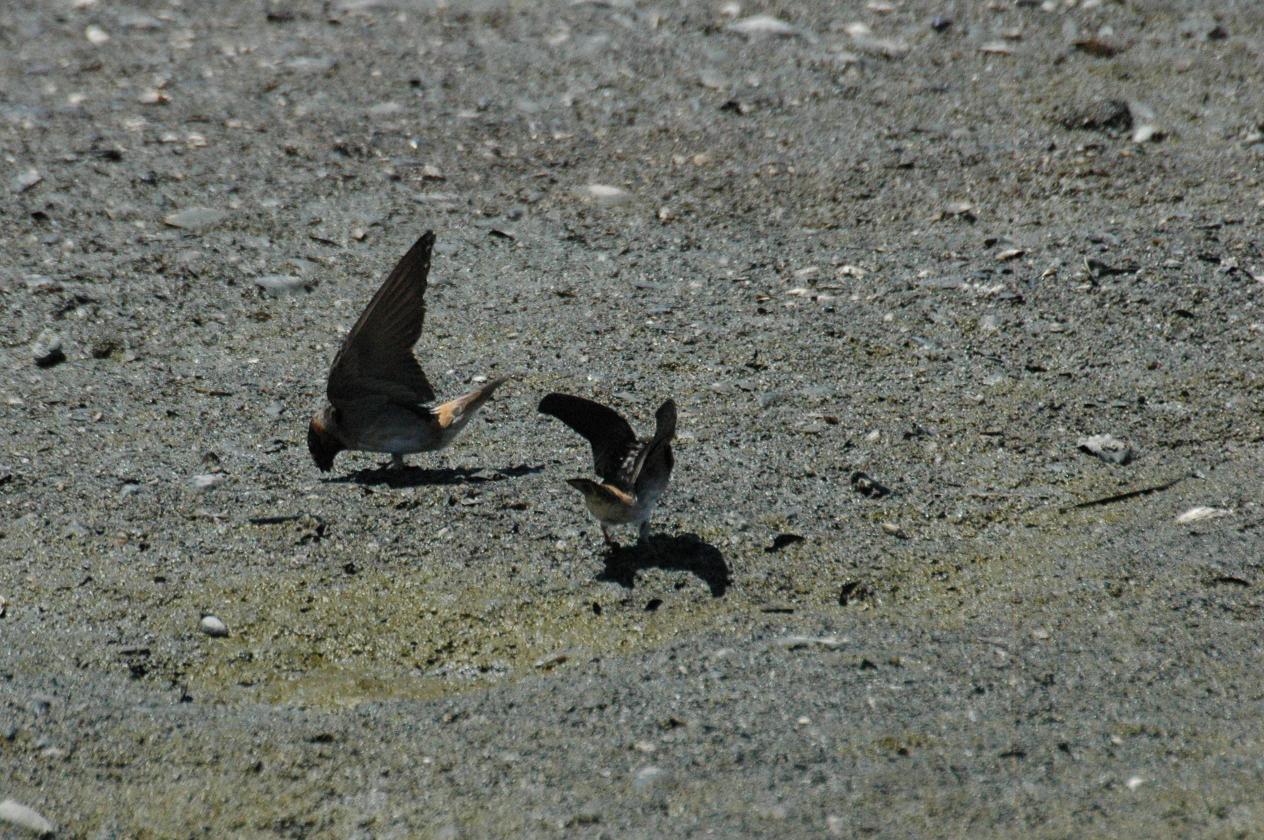 These two swallows were among dozens gathering mud on the bank of an inlet close to their colony. They landed and scooped up mud with their wings held high and fluttering. Once they got a good beakful they zipped back to their nests.
This group established themselves under the eaves of the
Interpretive Center
(2007) Palo Alto Bird Sanctuary • Photo Posted June 7, 2007 • © 2007 Terry Costales 
#20070607.jpg Add a comment or report a mistake
|
|
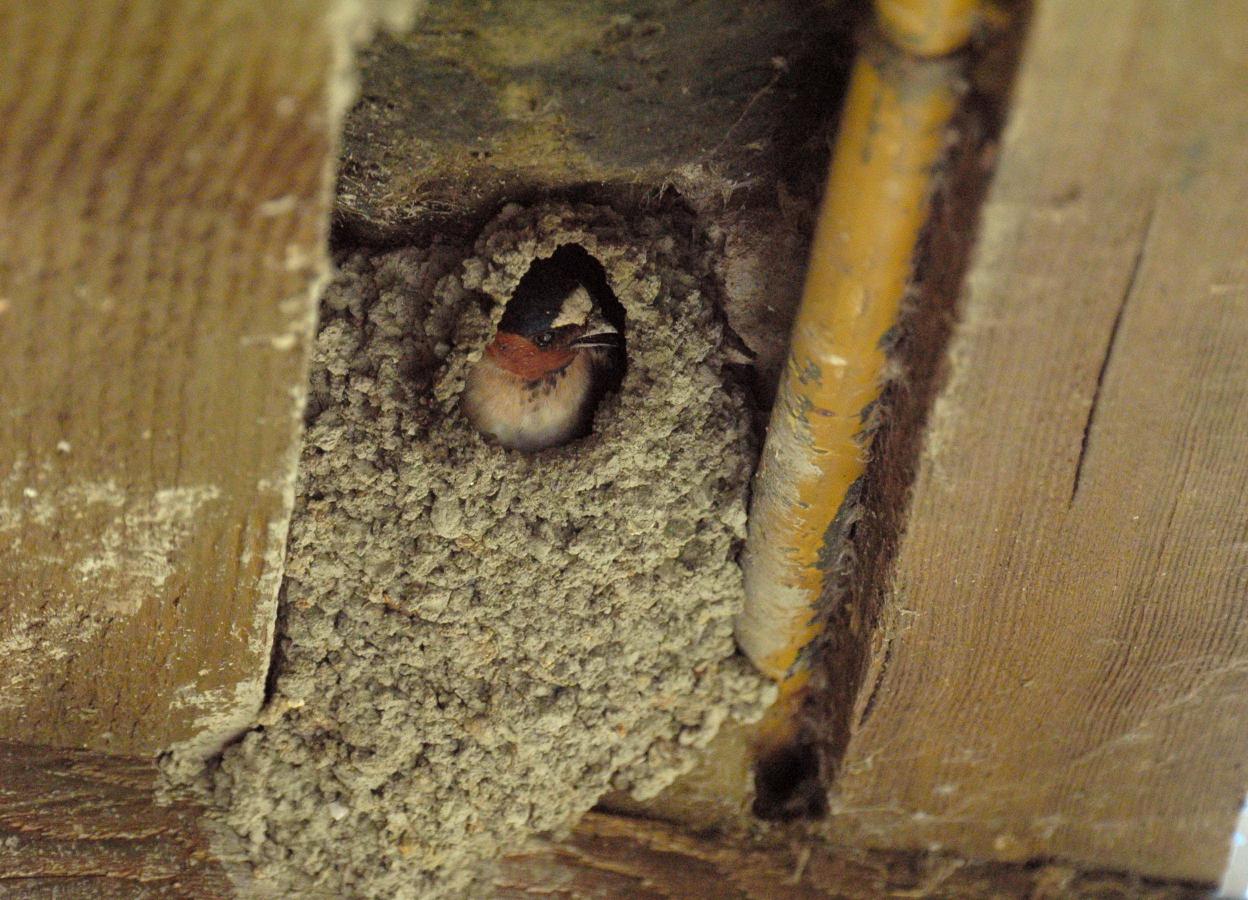 This is a close-up of a typical nest with the adult peering out. Mud gathering has made its bill appear lighter than it actually is.
(2007) Palo Alto Baylands Preserve • Photo Posted June 8, 2007 • © 2007 Terry Costales 
#20070608.jpg Add a comment or report a mistake
|
|
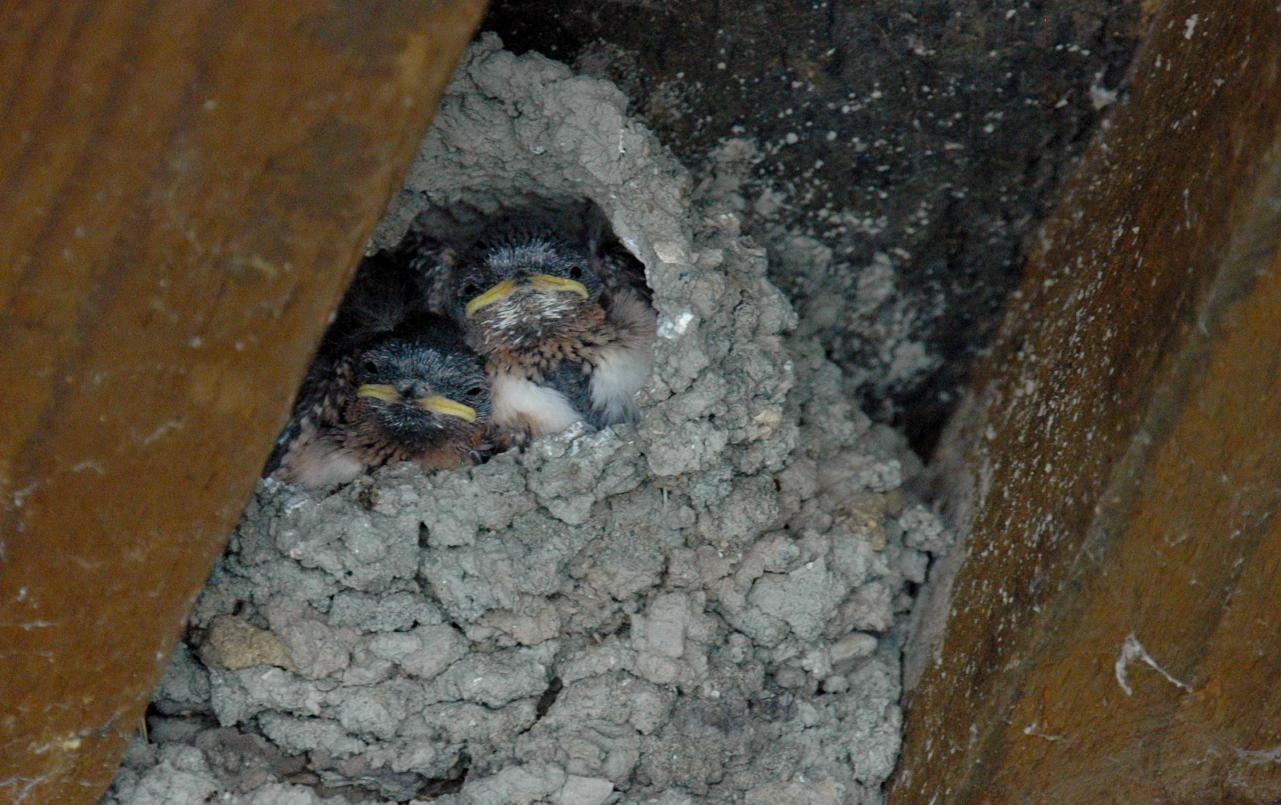 This photo was taken the last day of May. Nine days earlier there were no visible signs of chicks, although you could hear them peeping. On this day there were many little heads framed in the openings of nests. I wonder what another nine days will bring?
(2007) Palo Alto Bird Sanctuary • Photo Posted June 9, 2007 • © 2007 Terry Costales 
#20070609.jpg Add a comment or report a mistake
|
|
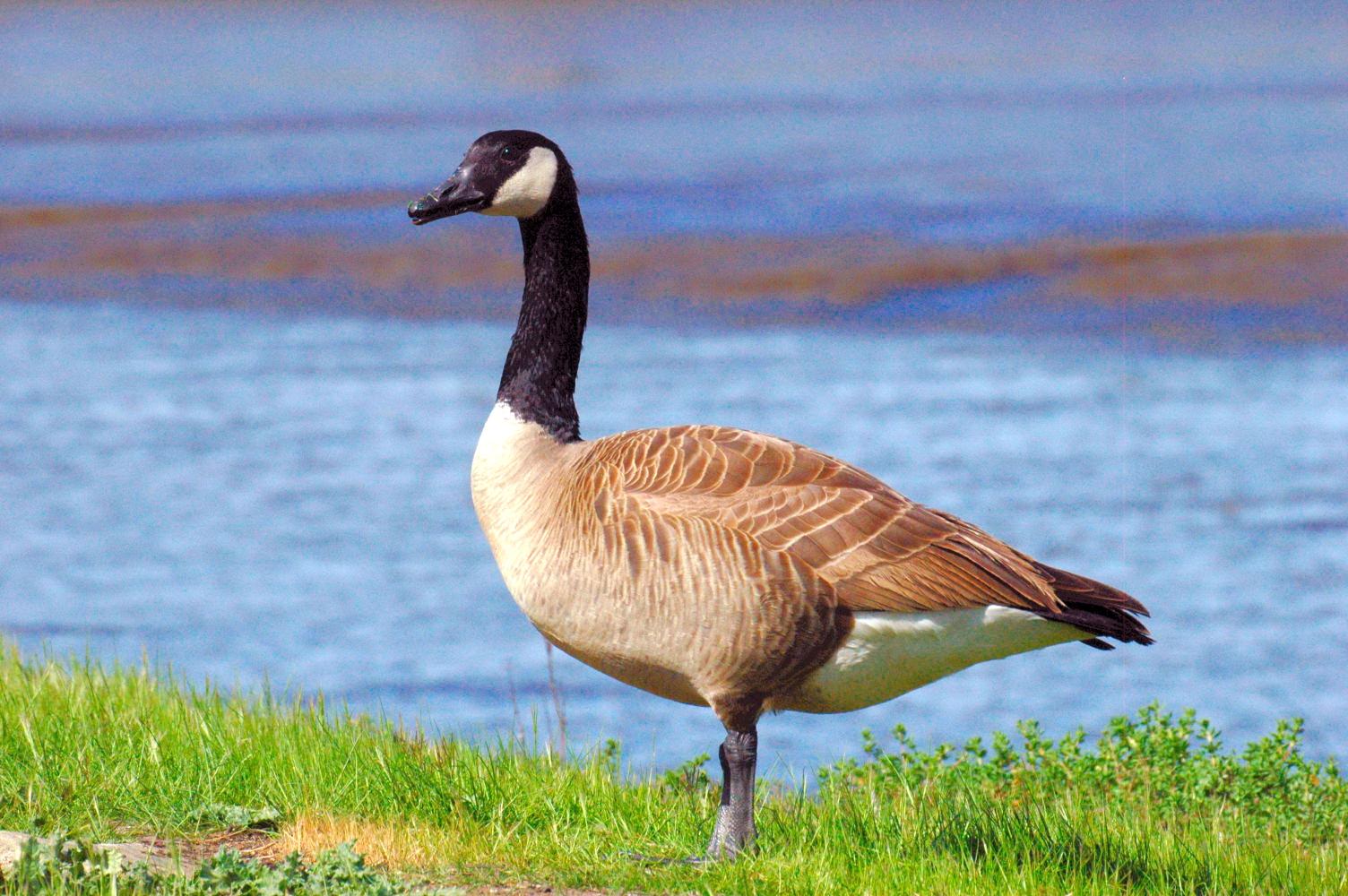 This goose is very widespread and commonly found in the wild, and at almost any park that has a pond, lake or marsh.
There are many other species of
ducks
(2007) Palo Alto Bird Sanctuary • Photo Posted June 10, 2007 • © 2007 Terry Costales 
#20070610.jpg Add a comment or report a mistake
|
|
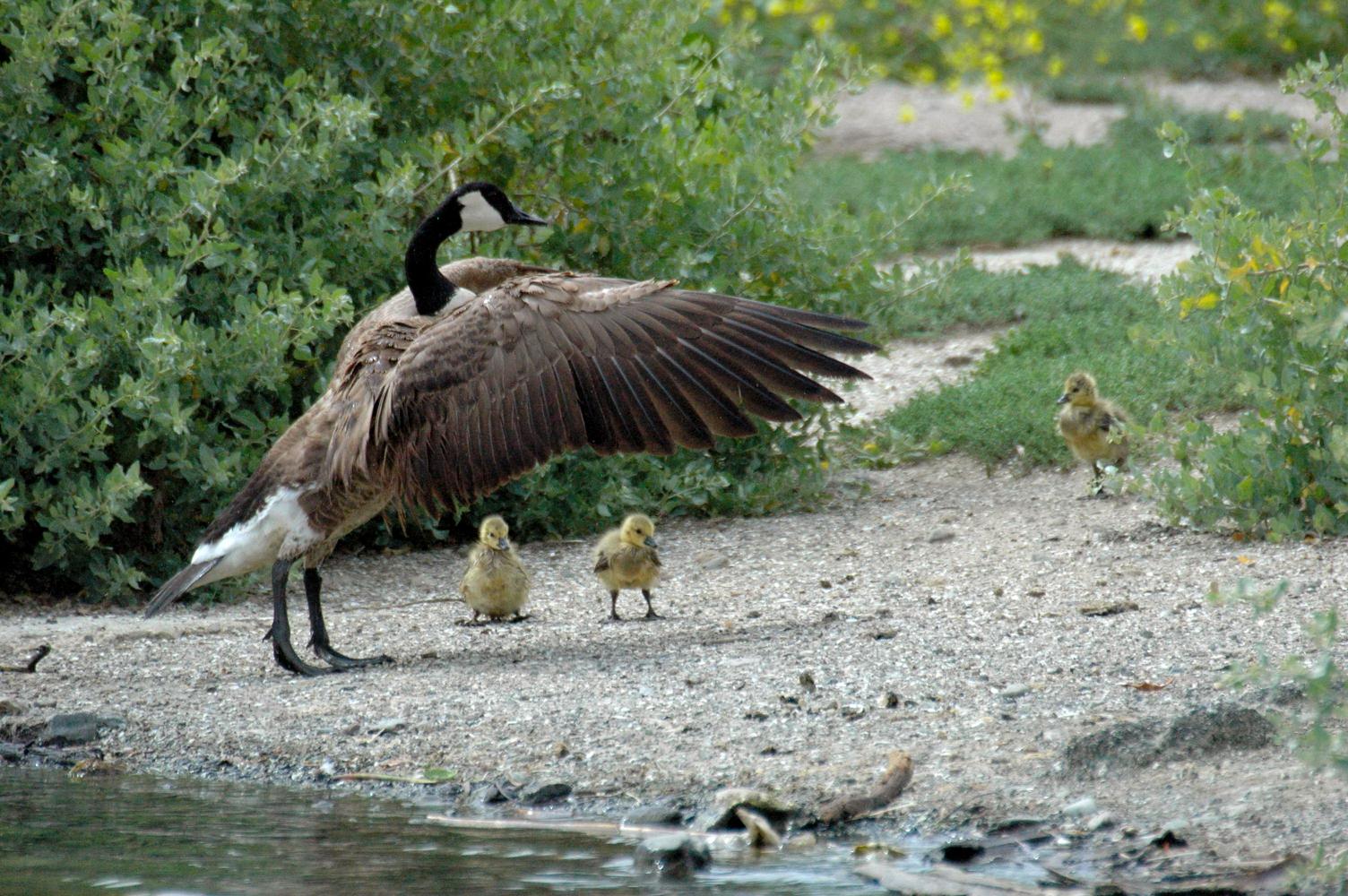
This is a real
Mother Goose
Mother Goose as a person in literature has been around for a very long time. There is even a
Mother Goose Society
More info can be found about real Canada Geese at
Wikipedia
(2007) Palo Alto Bird Sanctuary • Photo Posted June 11, 2007 • © 2007 Terry Costales 
#20070611.jpg Add a comment or report a mistake
|
|
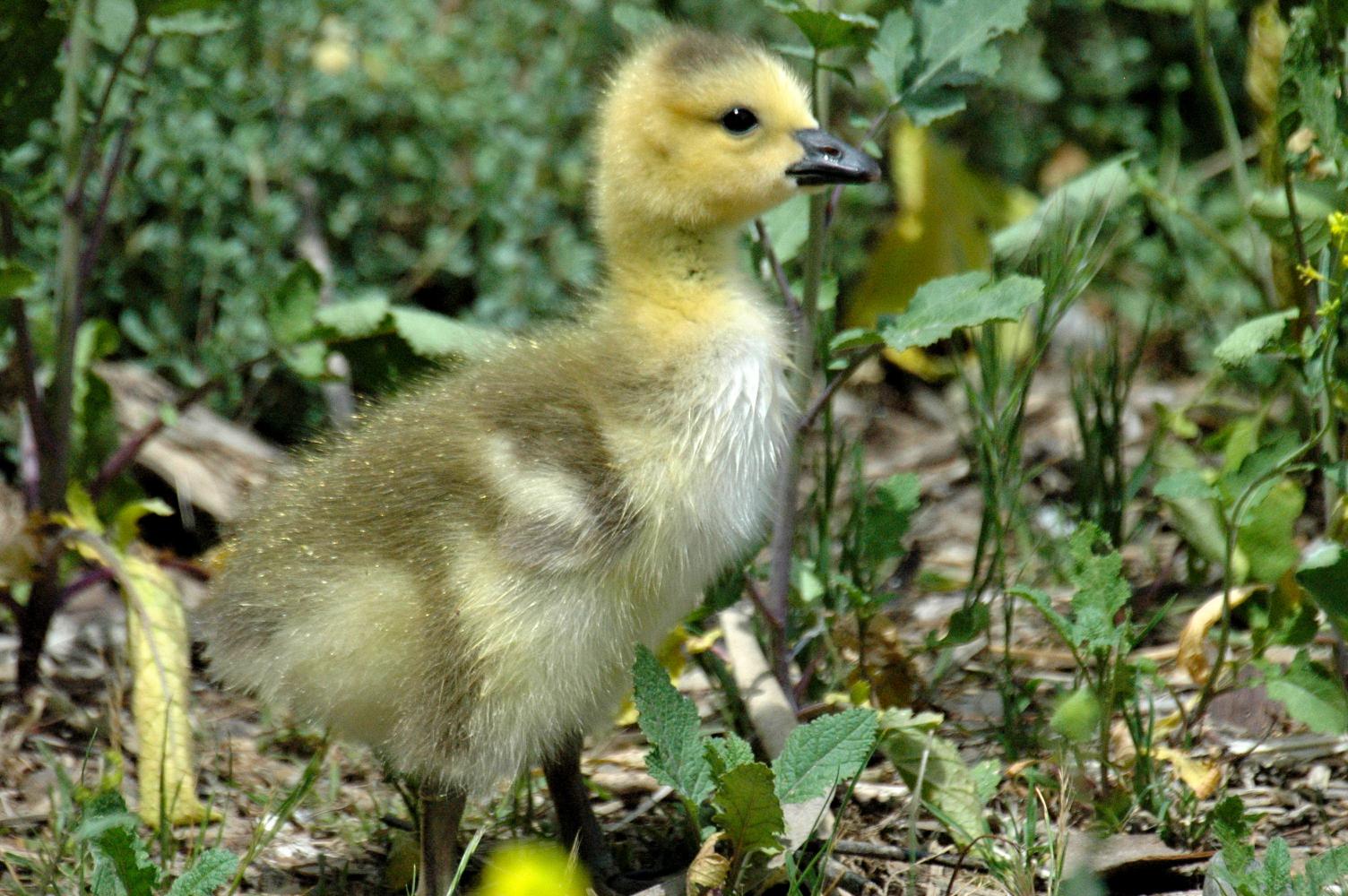
A gosling is so darn cute when it's little. It's hard to believe that there is an entire industry devoted to the task of making them go away. When large flocks of adult geese show up in a
"wrong locations"
Would you want them in your swimming pool? Your Koi pond? Your child's
playground
(2007) Palo Alto Bird Sanctuary • Photo Posted June 12, 2007 • © 2007 Terry Costales 
#20070612.jpg Add a comment or report a mistake
|
|
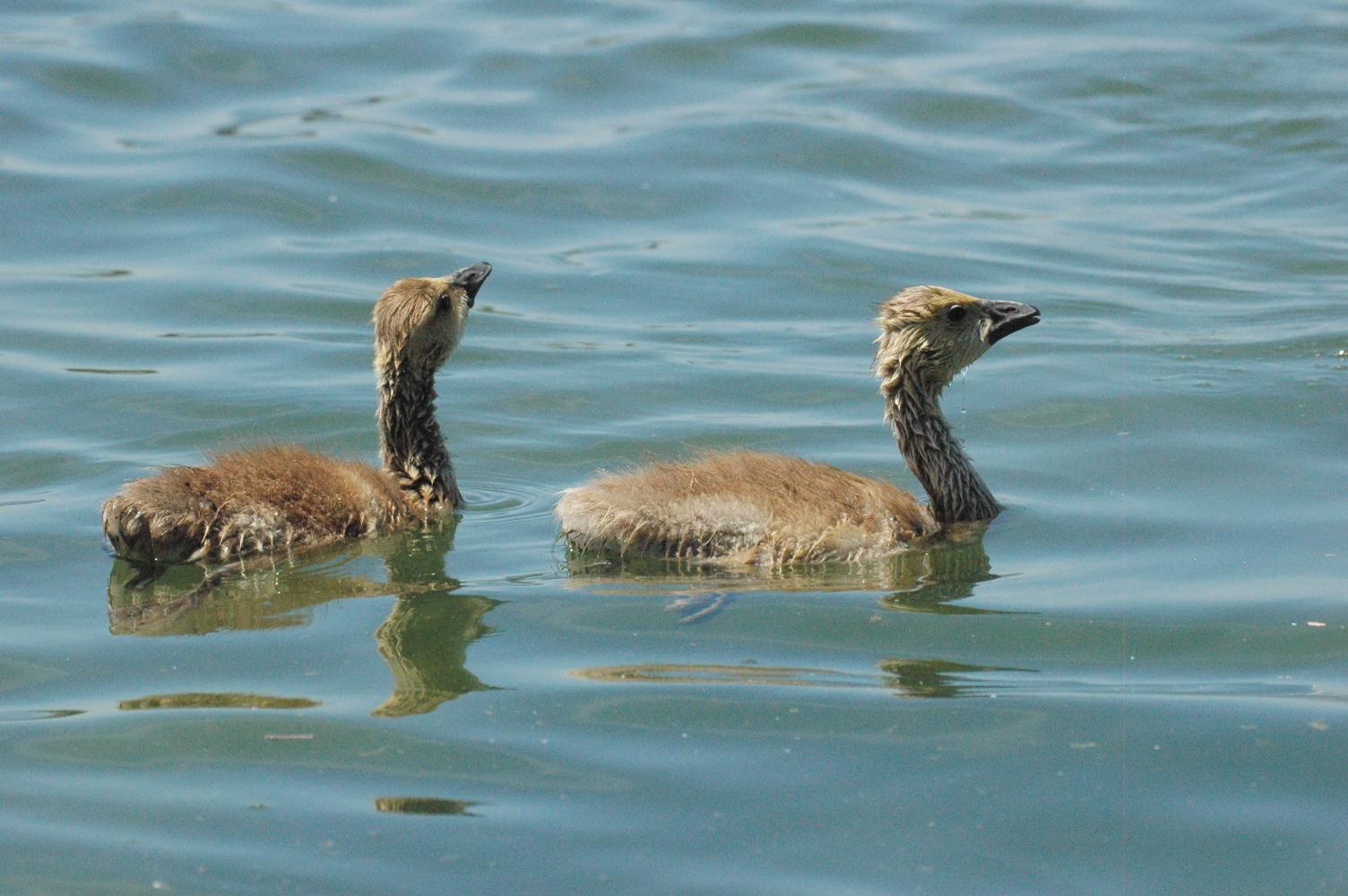 Yesterdays picture was taken of a gosling that was only a few days old. Today's photo was taken three weeks later. Now you should definitely be able to see that they are becoming adult geese. These goslings have lost their cute baby fuzz, but don't yet possess the handsome markings of an adult. But such is the bane of all adolescents.
(2007) Palo Alto Bird Sanctuary • Photo Posted June 13, 2007 • © 2007 Terry Costales 
#20070613.jpg Add a comment or report a mistake
|
|
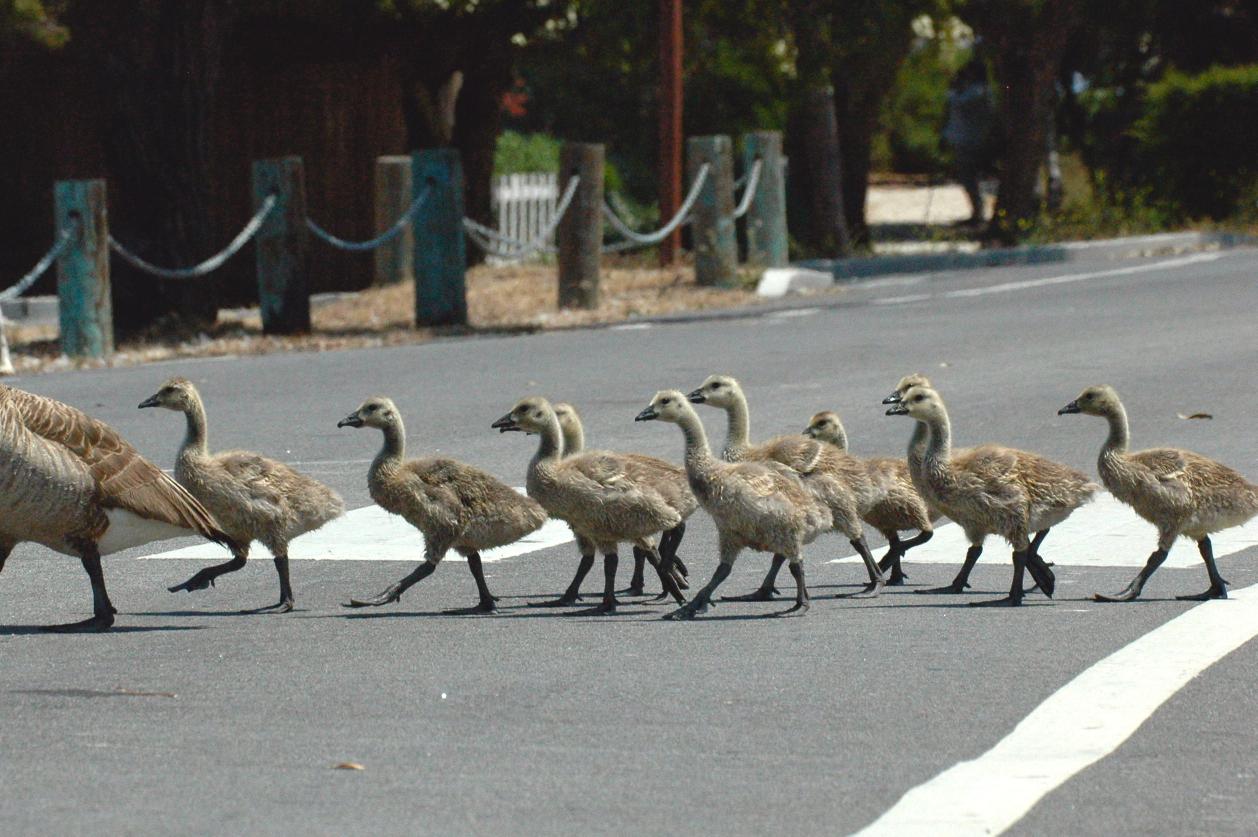 Mom is leading her brood from the duck pond, across the road and into the marsh. This is not an uncommon sight and one of the reasons there is a 15 MPH speed limit at the santuary.
(2007) Palo Alto Bird Sanctuary • Photo Posted June 14, 2007 • © 2007 Terry Costales 
#20070614.jpg Add a comment or report a mistake
|
|
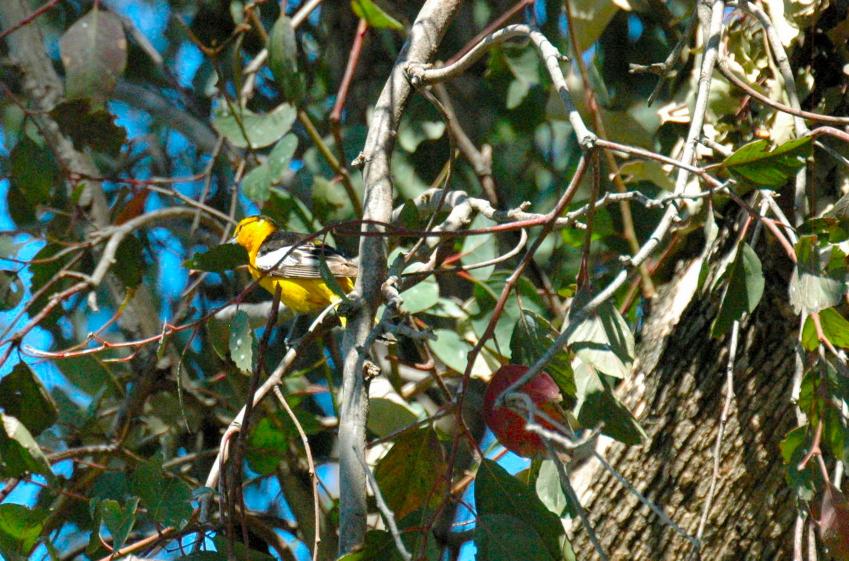
This oriole was named for
William Bullock In all my visits to this bird sanctuary, this was the only time I've seen this bird. I was very lucky to get some photos of it.
(2007) Palo Alto Bird Sanctuary • Photo Posted June 15, 2007 • © 2007 Terry Costales 
#20070615.jpg Add a comment or report a mistake
|
|
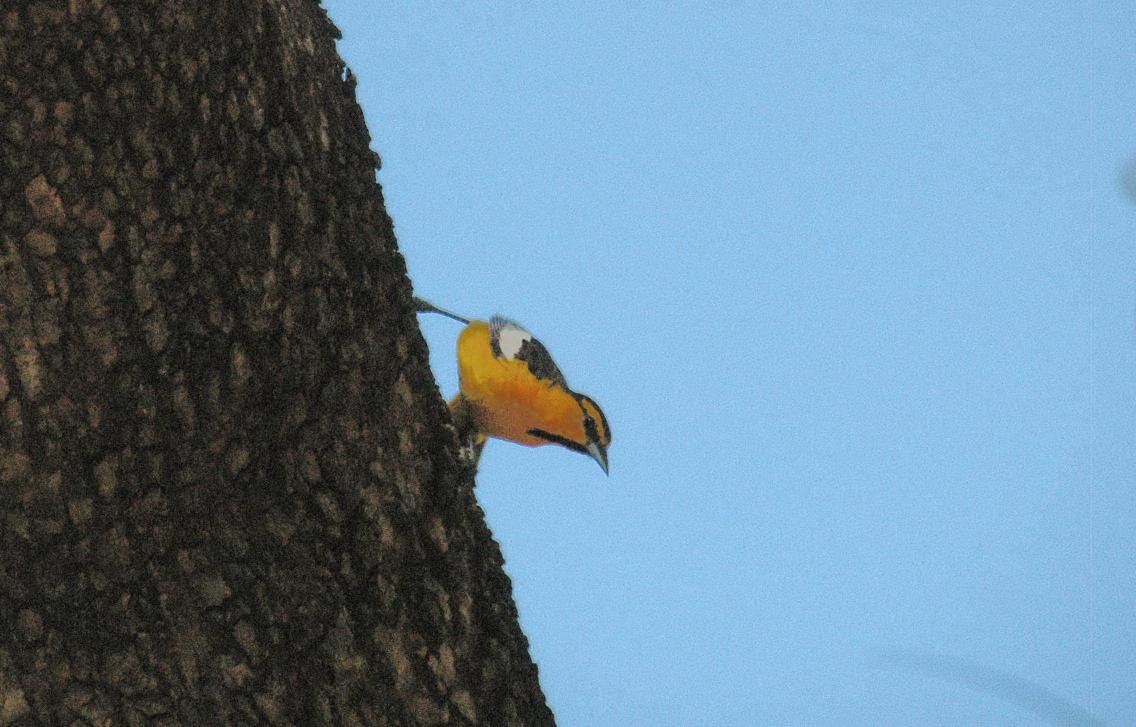
The Bullock's Oriole
This photo was taken late May and what a great pose he gave me.
(2007) Palo Alto Bird Sanctuary • Photo Posted June 16, 2007 • © 2007 Terry Costales 
#20070616.jpg Add a comment or report a mistake
|
|
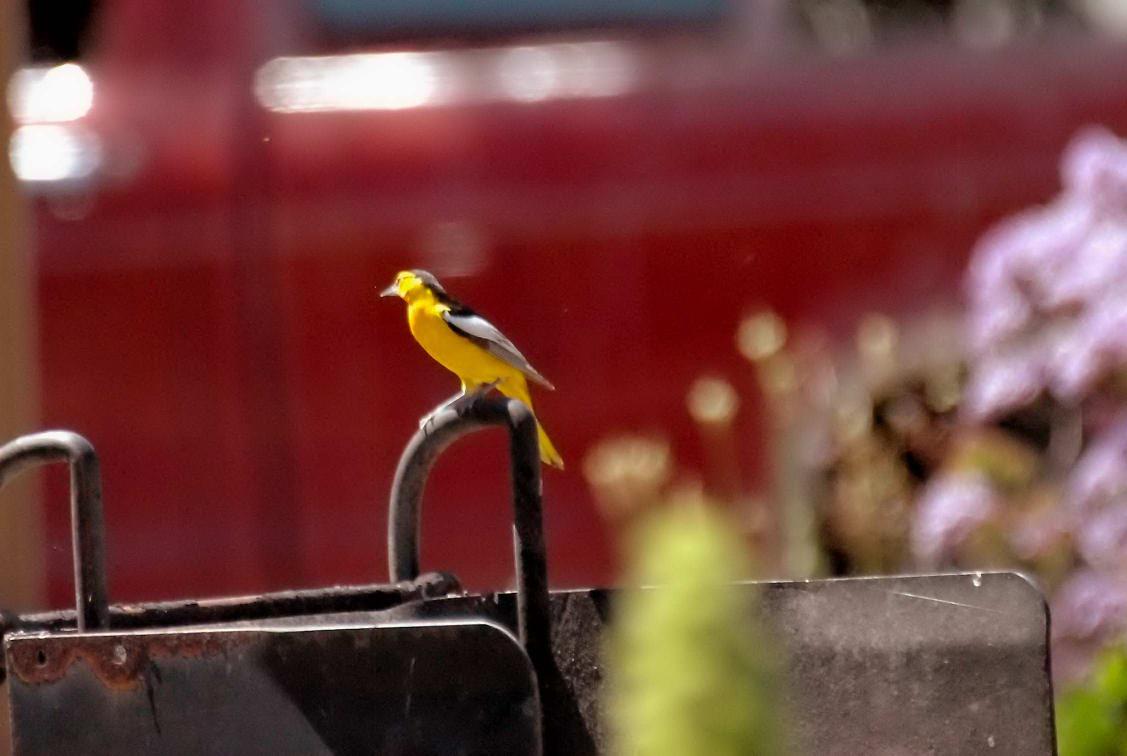 Here is the Oriole perched on a barbeque grill in the picnic area. He and several blackbirds had just chased a crow that dared to enter their territory. Crows are a threat to them because they will eat the young of these smaller birds.
There are several species of birds found at the sanctuary. There are
sparrows
(2007) Palo Alto Bird Sanctuary • Photo Posted June 17, 2007 • © 2007 Terry Costales 
#20070617.jpg Add a comment or report a mistake
|
|
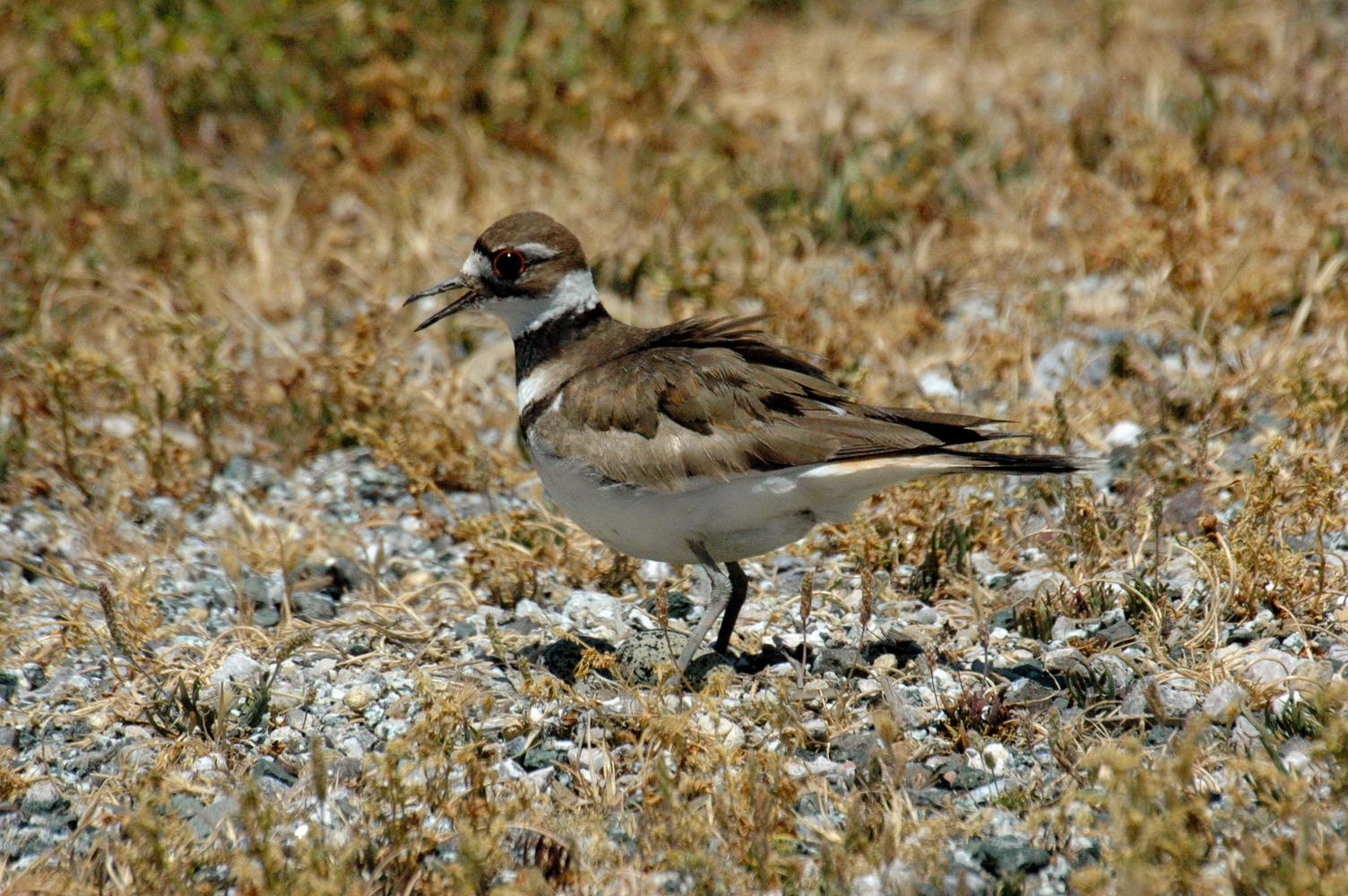 This female Killdeer is standing over eggs in its "nest." Three eggs are actually present but only one is clearly visible. Even the clearly visible one is very well camouflaged. It is reputed their call sounds like "kill deer" and thus the name. I don't hear it myself but maybe that's just me.
(2007) Palo Alto Bird Sanctuary • Photo Posted June 18, 2007 • © 2007 Terry Costales 
#20070618.jpg Add a comment or report a mistake
|
|
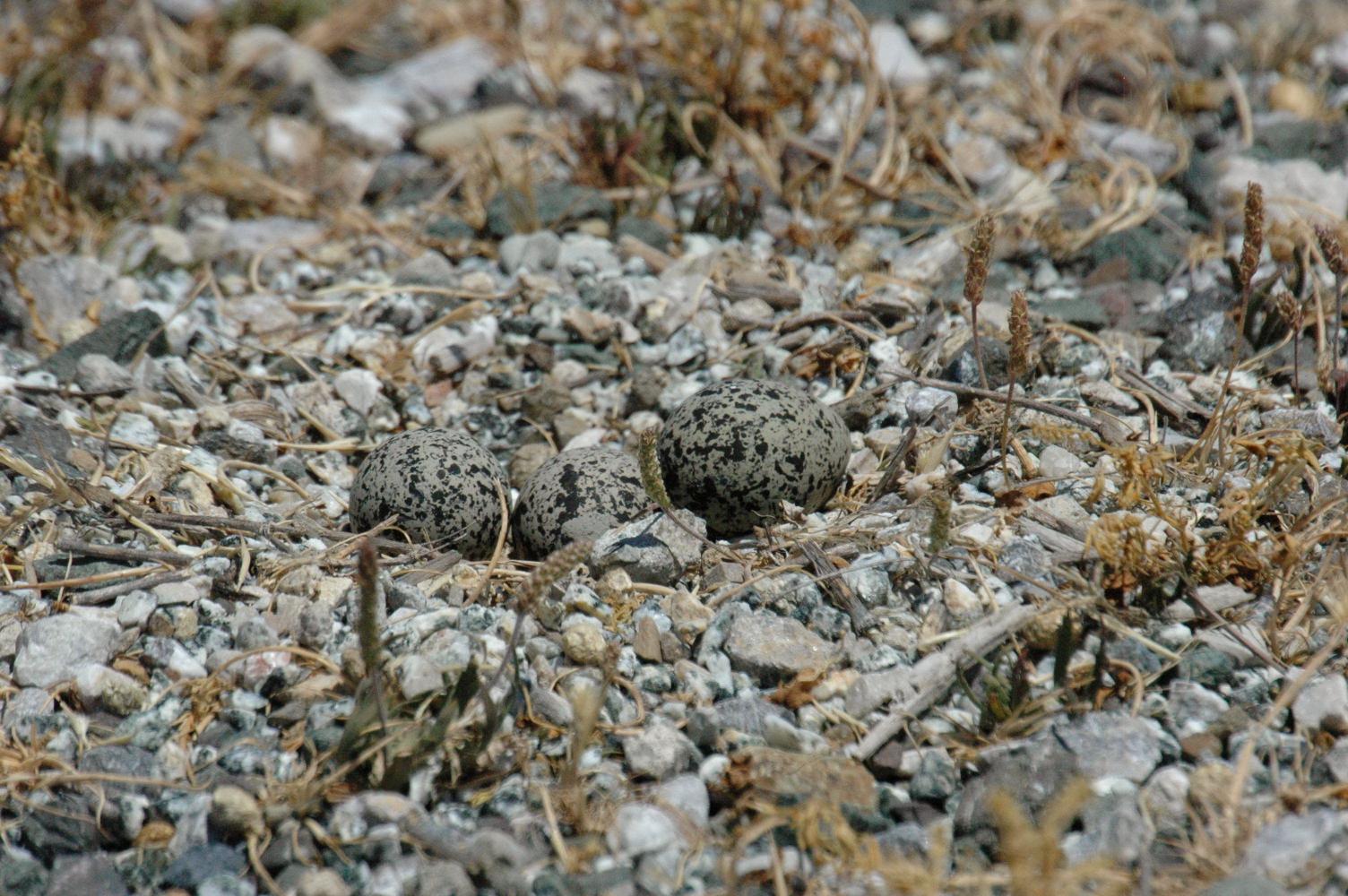
This is a photo of three very well camouflaged eggs in a Killdeer "nest." Because Killdeer often lay their
eggs on gravel
(2007) Palo Alto Bird Sanctuary • Photo Posted June 3, 2007 • © 2007 Terry Costales 
#20070619.jpg Add a comment or report a mistake
|
|
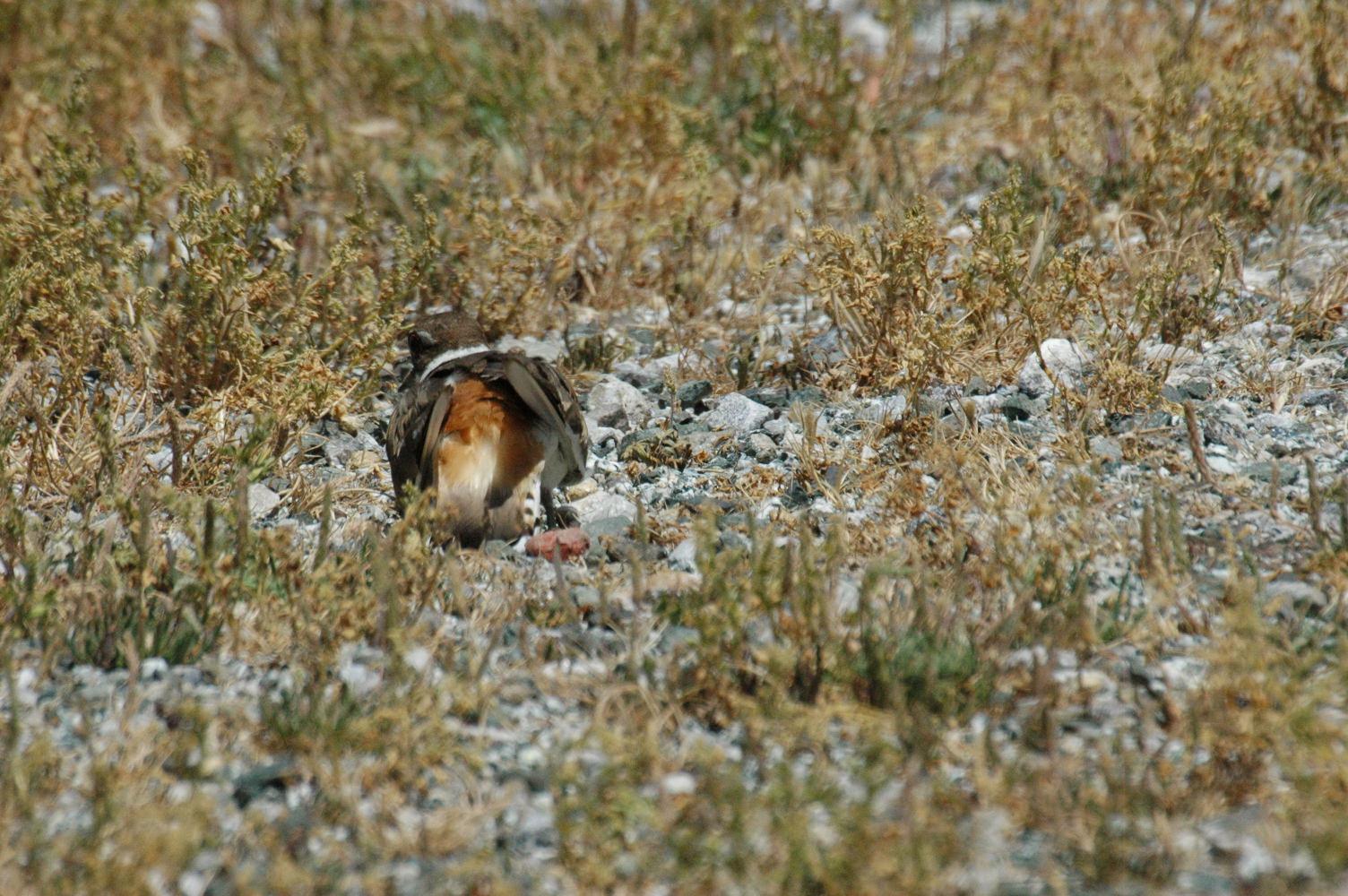 The female Killdeer in this picture is adopting a wounded bird pose and making a distress call. She is trying to lure me away from her nest by convincing me she is easy prey. Luckily for her I only wanted her photo.
(2007) Palo Alto Bird Sanctuary • Photo Posted June 20, 2007 • © 2007 Terry Costales 
#20070620.jpg Add a comment or report a mistake
|
|
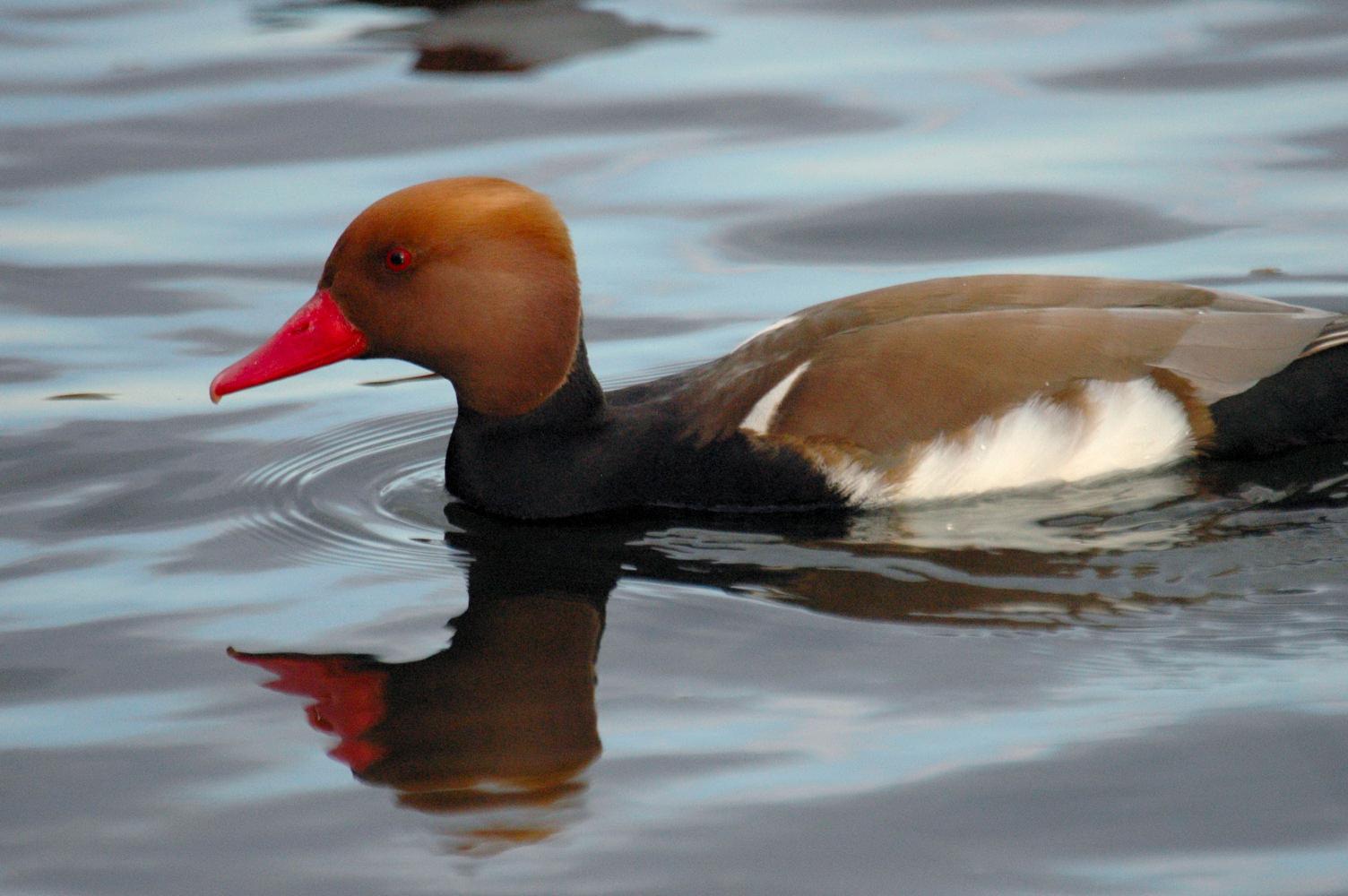 I took this photo April 4th of this year while in London. I didn't know what it was at the time but I knew I had never seen this duck before. I was quite taken with the brilliant gold of it's head. When the sun shone on its head there was an amazing metallic sheen which really has to be seen in person to be appreciated.
These pochards
(2007) Hyde Park, London, England • Photo Posted June 21, 2007 • © 2007 Terry Costales 
#20070621.jpg Add a comment or report a mistake
|
|
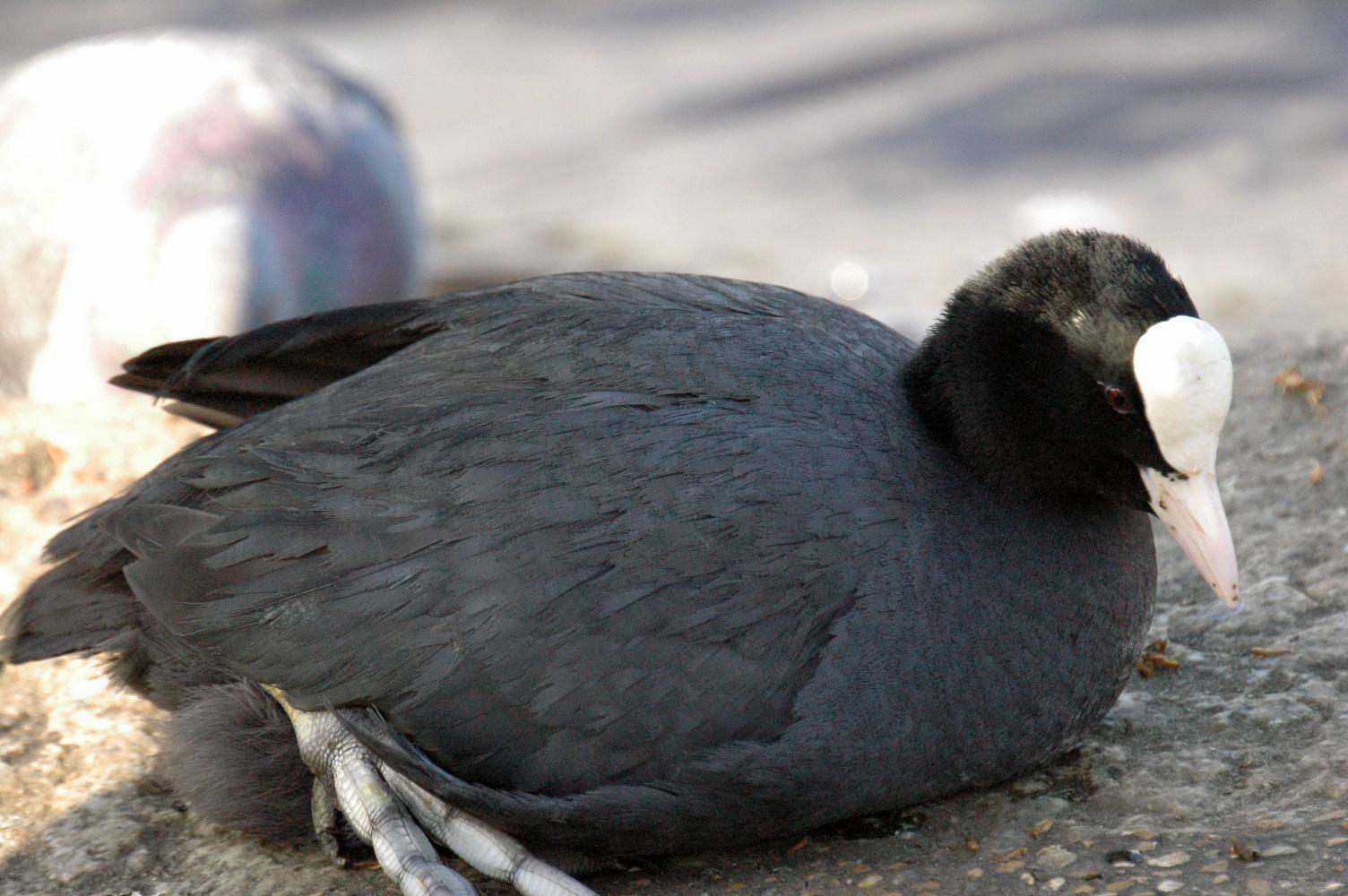
The most obvious difference between the Eurasian Coot and the American coot is the larger white face shield. The coots were very numerous in
Hyde Park
This shot shows the face shield, the greenish feet and the lobed toes. They are fascinating little
birds
(2007) Hyde Park, London, England • Photo Posted June 22, 2007 • © 2007 Terry Costales 
#20070622.jpg Add a comment or report a mistake
|
|
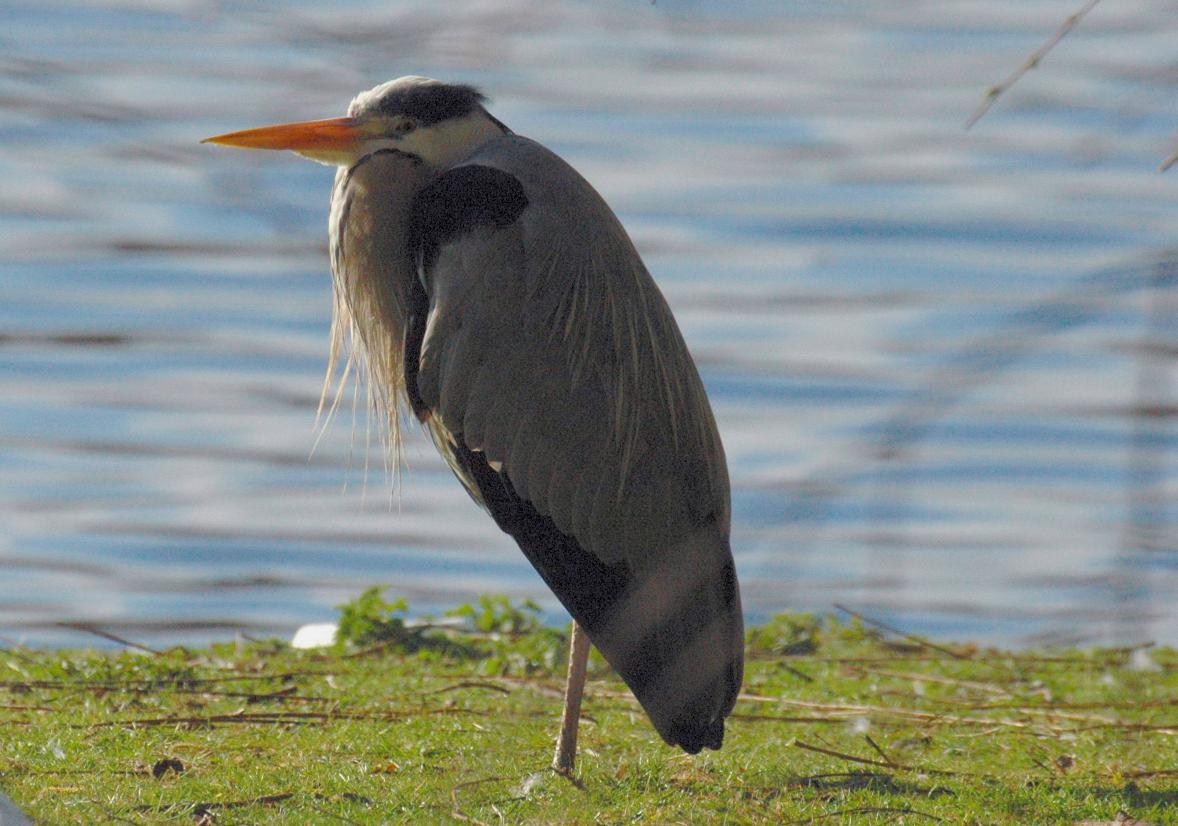
The Grey Heron is very similar to the larger Great Blue Heron we have in California. This one seems to be in full breeding plumage. It was the only heron I saw in
Hyde Park
He actually has a very long neck but they sit with it pulled in and folded against the chest. The Royal Society for the Protection of Birds has a nice page on these herons where you can see the long neck and even
hear it's call
(2007) Hyde Park, London, England • Photo Posted June 23, 2007 • © 2007 Terry Costales 
#20070623.jpg Add a comment or report a mistake
|
|
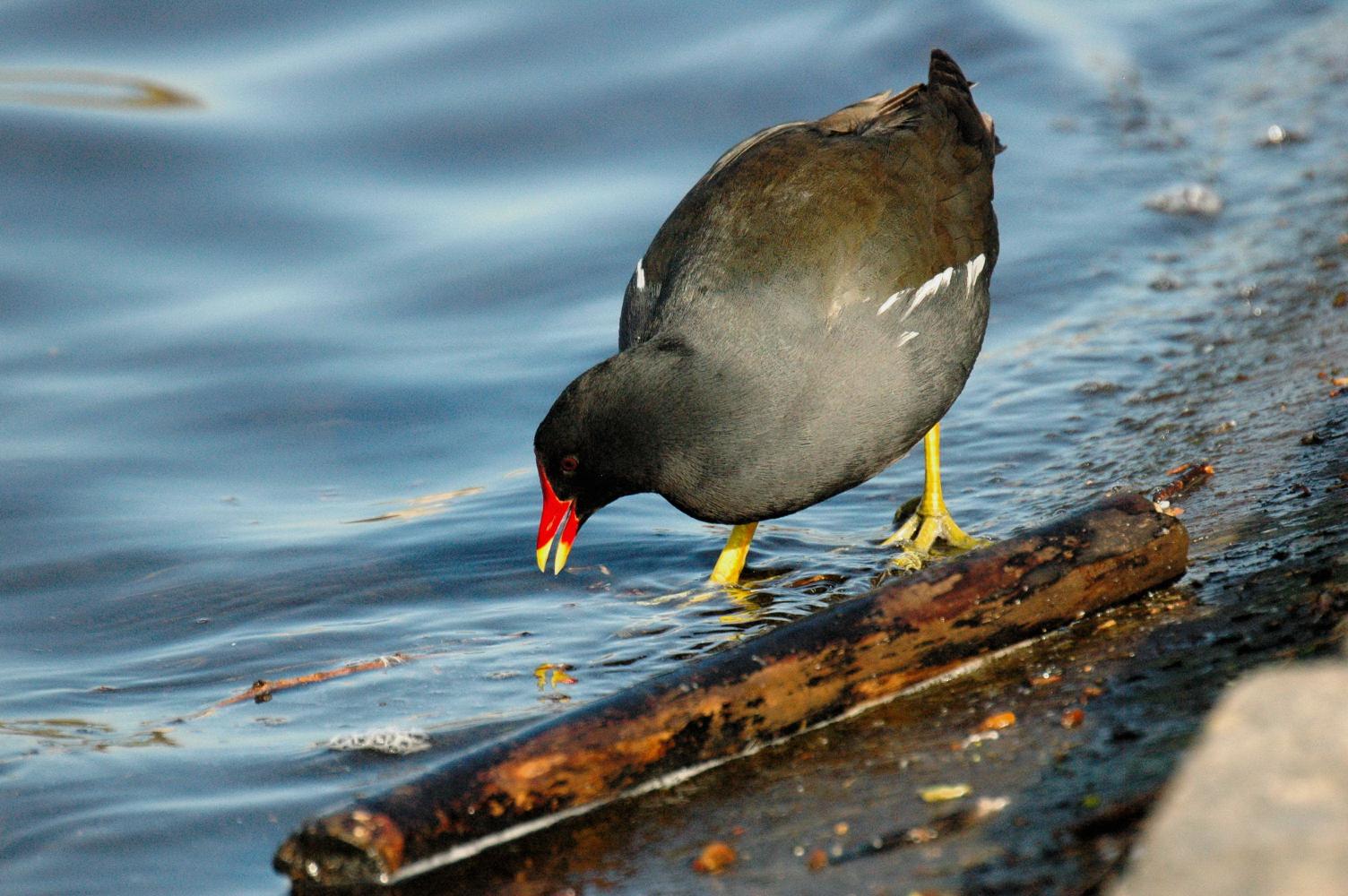
The moorhen
Moorhens are related more to Coots than to ducks. Moorhens and Coots both have greenish feet with lobed toes which allows them to walk over water-plants and mud.
(2007) Hyde Park, London, England • Photo Posted June 15, 2007 • © 2007 Terry Costales 
#20070624.jpg Add a comment or report a mistake
|
|
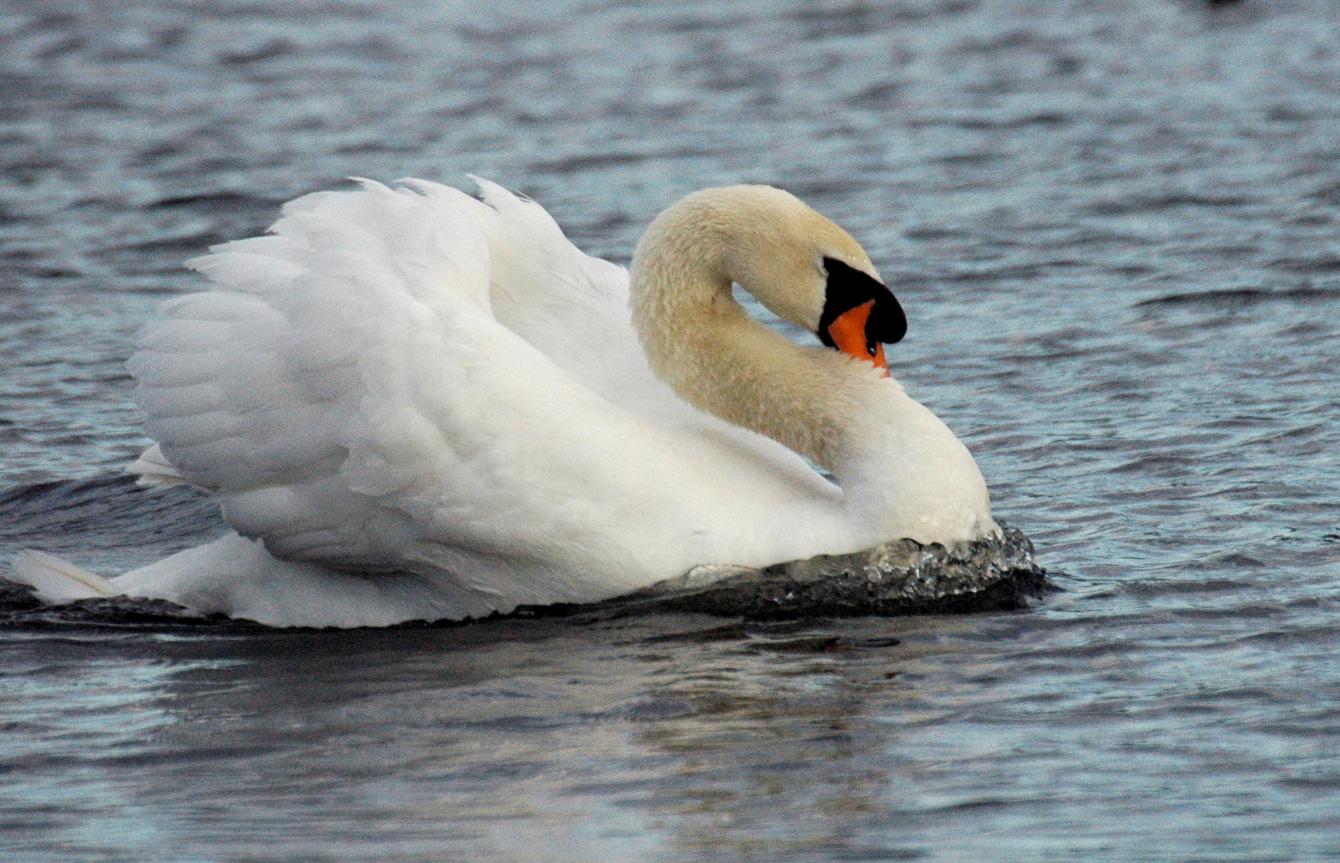 Something about a swan. I see one and I feel like I am getting a small glimpse into a fairy tale. Swans conjure images of fairy princesses, enchanted lakes and talking animals. I almost expect to turn my head and see a unicorn come to drink at the edge of this pond.
A more realistic approach to these birds is not to just admire them but protect them as well. The population of swans had declined
in the UK
The Mute swan is not natively found in the US and is not actually mute at all.
(2007) Hyde Park, London, England • Photo Posted June 15, 2007 • © 2007 Terry Costales 
#20070625.jpg Add a comment or report a mistake
|
|
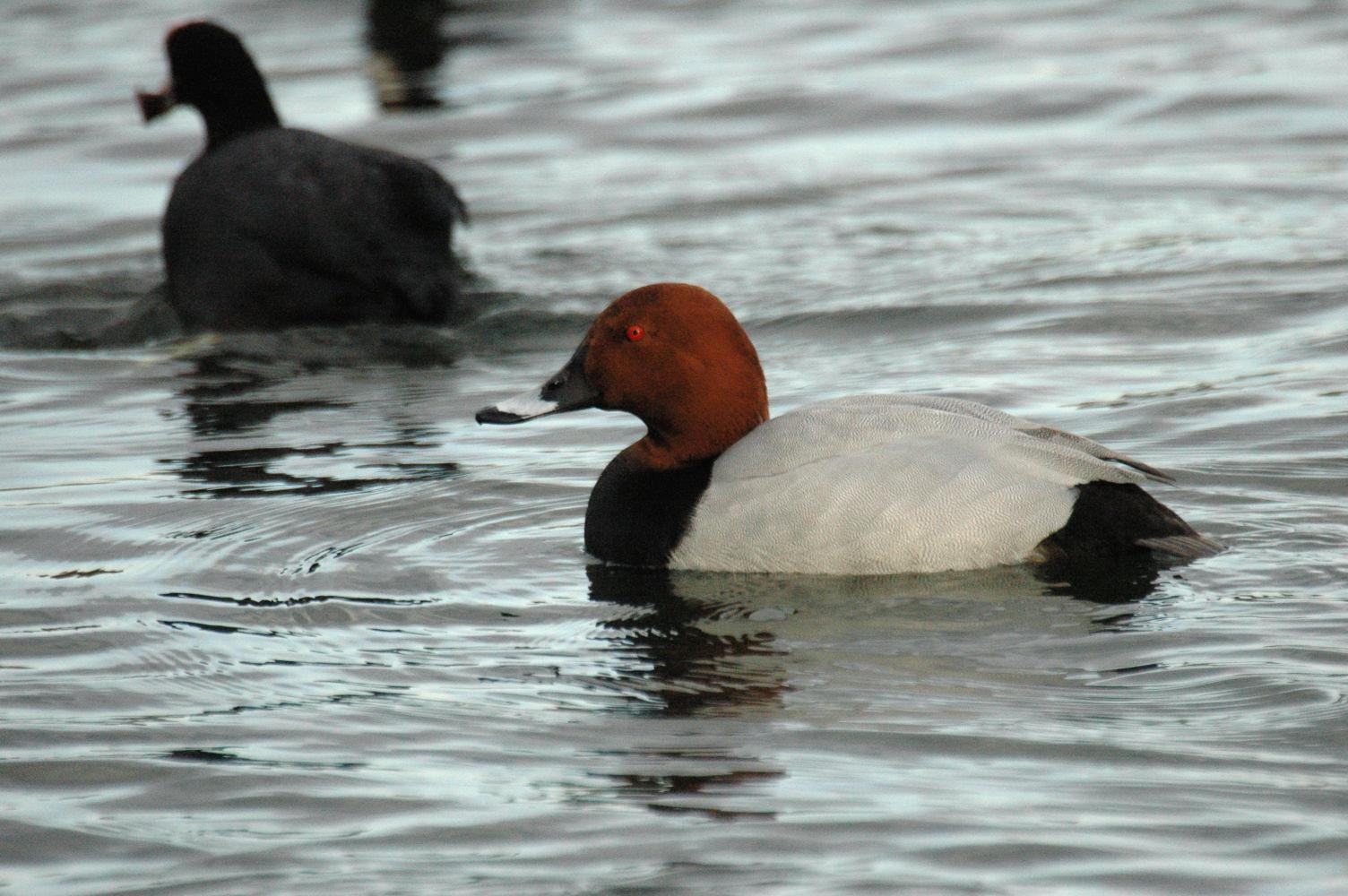
When I first saw this duck I thought it was a
Canvasback
The Pochard
(2007) Hyde Park, London, England • Photo Posted June 15, 2007 • © 2007 Terry Costales 
#20070626.jpg Add a comment or report a mistake
|
|
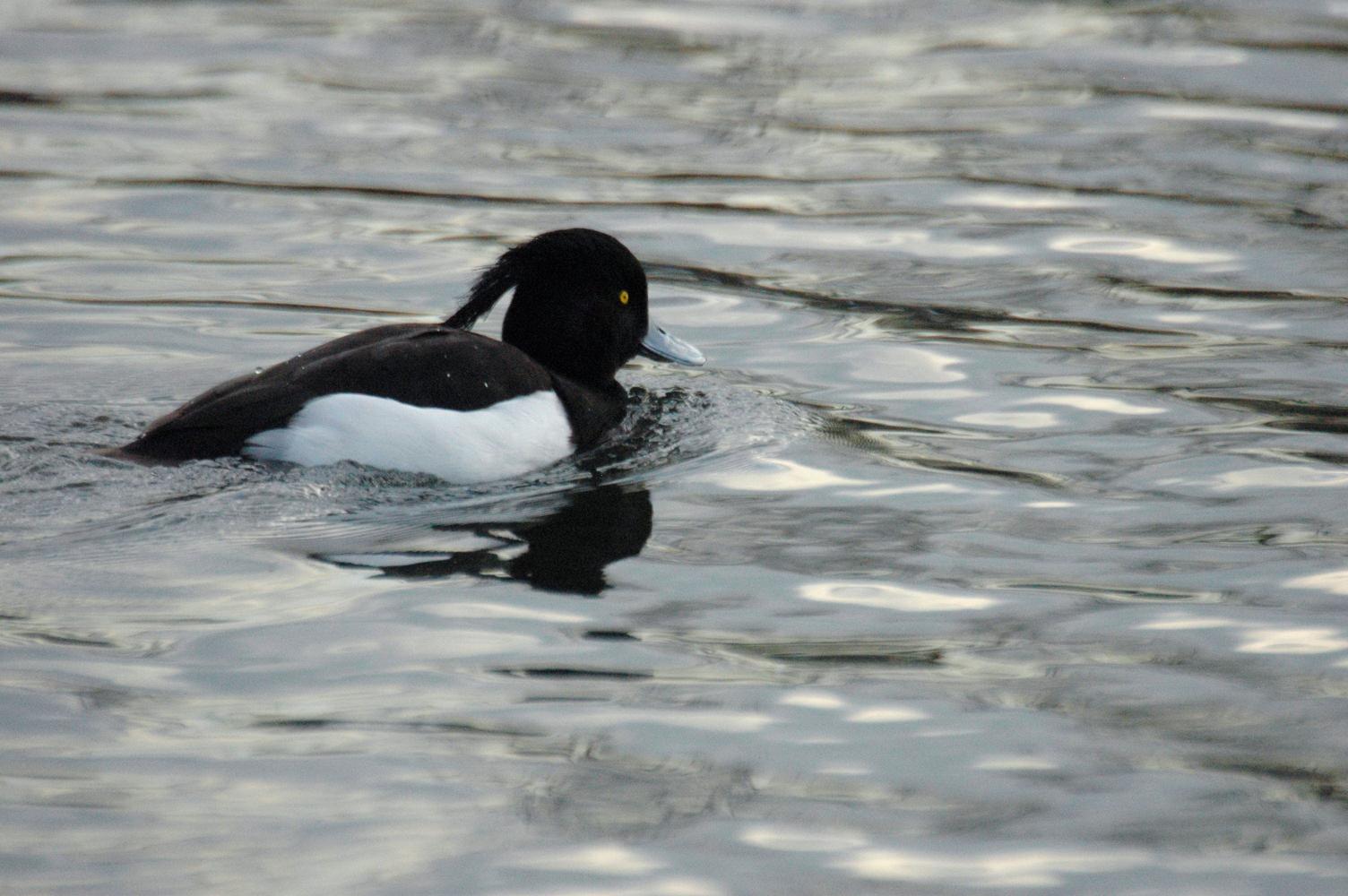
This is a photo of a duck with a "crazy hairdo". I had never before seen a picture of a Tufted Duck, and was quite startled to observe this unusual species. Looking at the photos on our return home I identified it as a Tufted Duck and found out these ducks are quite
common in England and Europe
(2007)Hyde Park, London, England • Photo Posted June 15, 2007 • © 2007 Terry Costales 
#20070627.jpg Add a comment or report a mistake
|
|
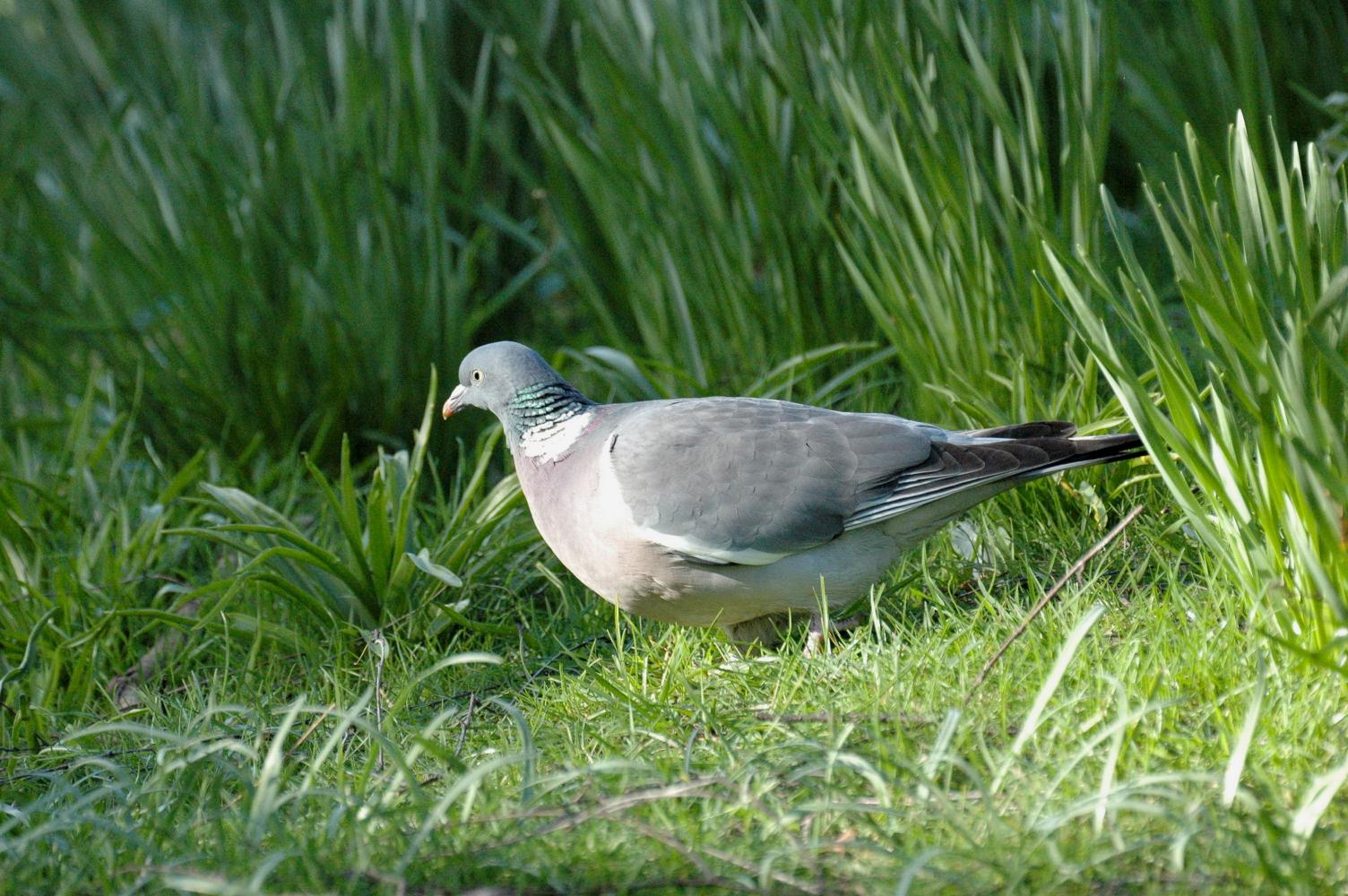
Of course England has it's fair share of "flying rats". For some reason this one in Hyde Park seemed more like an actual bird to me than just
feathered vermin I'm sure if I was there long enough they would become just as annoying as pigeons are here at home.
Animalblog 
#20070628.jpg Add a comment or report a mistake
|
|
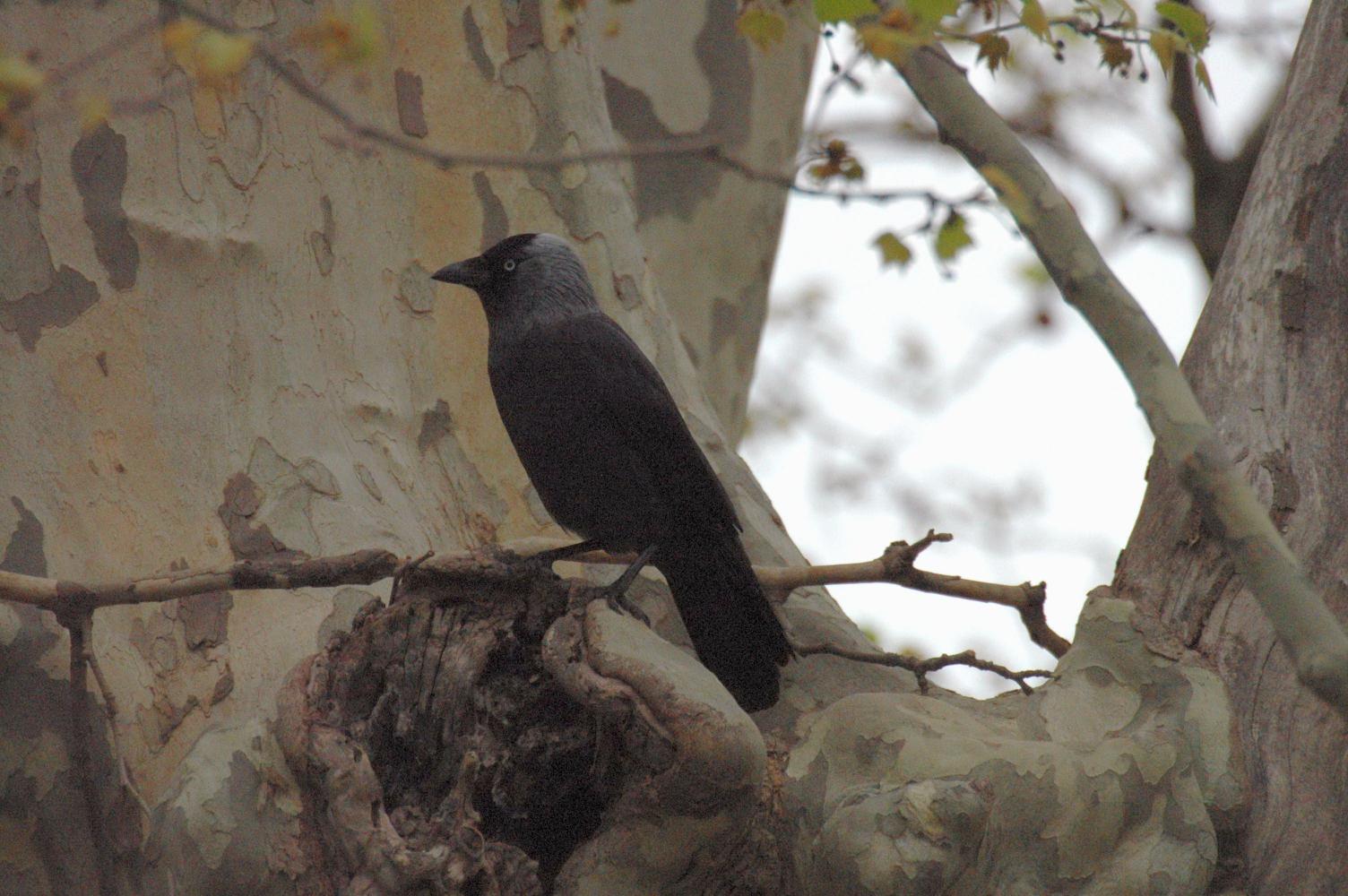
When I took this photo I thought it was a common crow. That was in April. I processed this photo recently and discovered it was actually a
jackdaw
A Jackdaw is a type of crow but has a grey head and pale eyes. Some people associated the Jackdaw with the children's nursery rhyme
"See Saw, Margery Daw"
(2007)Canal du Midi, France, EU • Photo Posted June 15, 2007 • © 2007 Terry Costales 
#20070629.jpg Add a comment or report a mistake
|
|
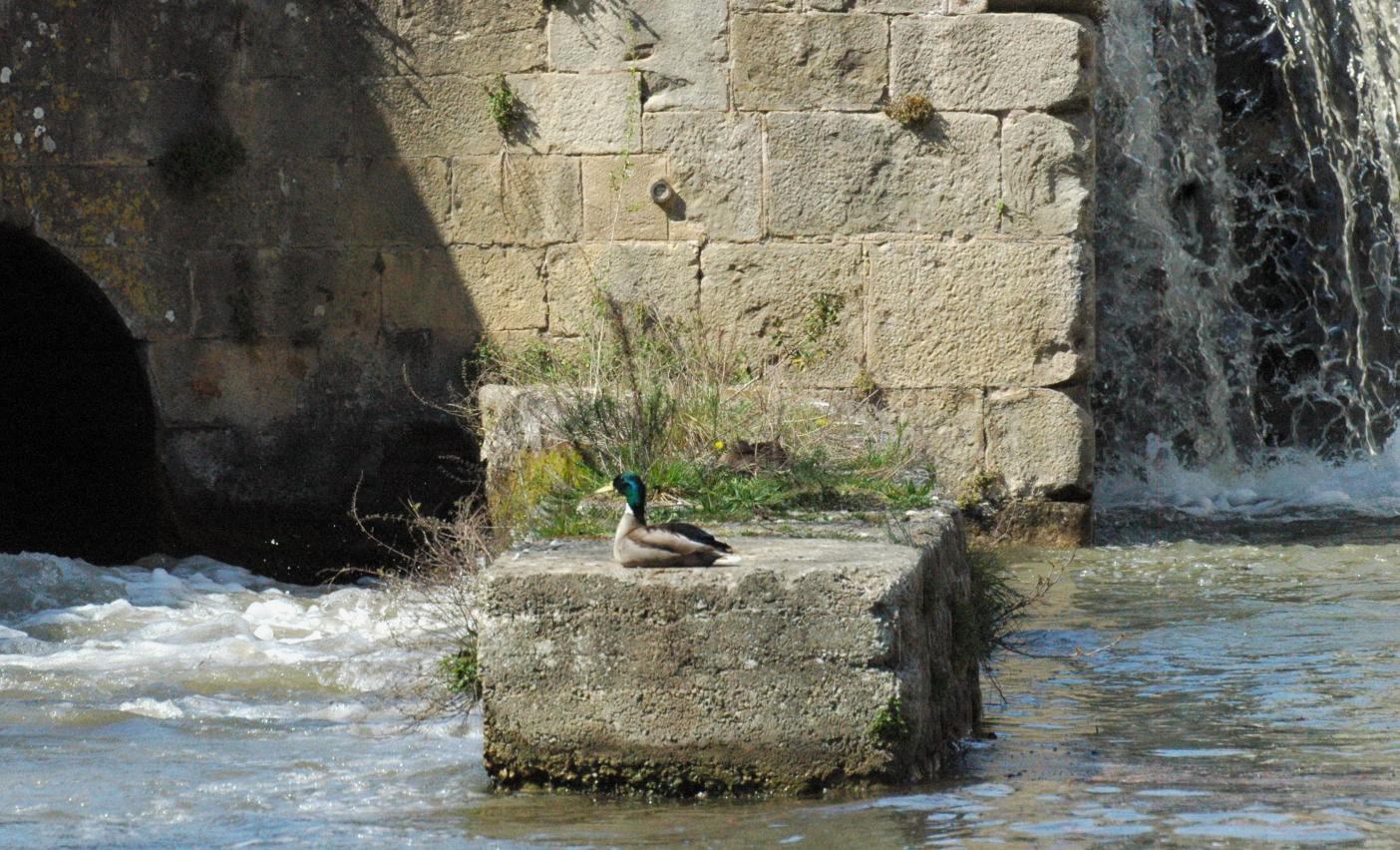
This is a photograph of a pair of Mallards nesting on a concrete outcropping that is part of this
canal lock The female Mallard is sitting on the nest a few feet behind the male and is very well camouflaged.
(2007)Canal du Midi, France, EU • Photo Posted June 15, 2007 • © 2007 Terry Costales 
#20070630.jpg Add a comment or report a mistake
|
|
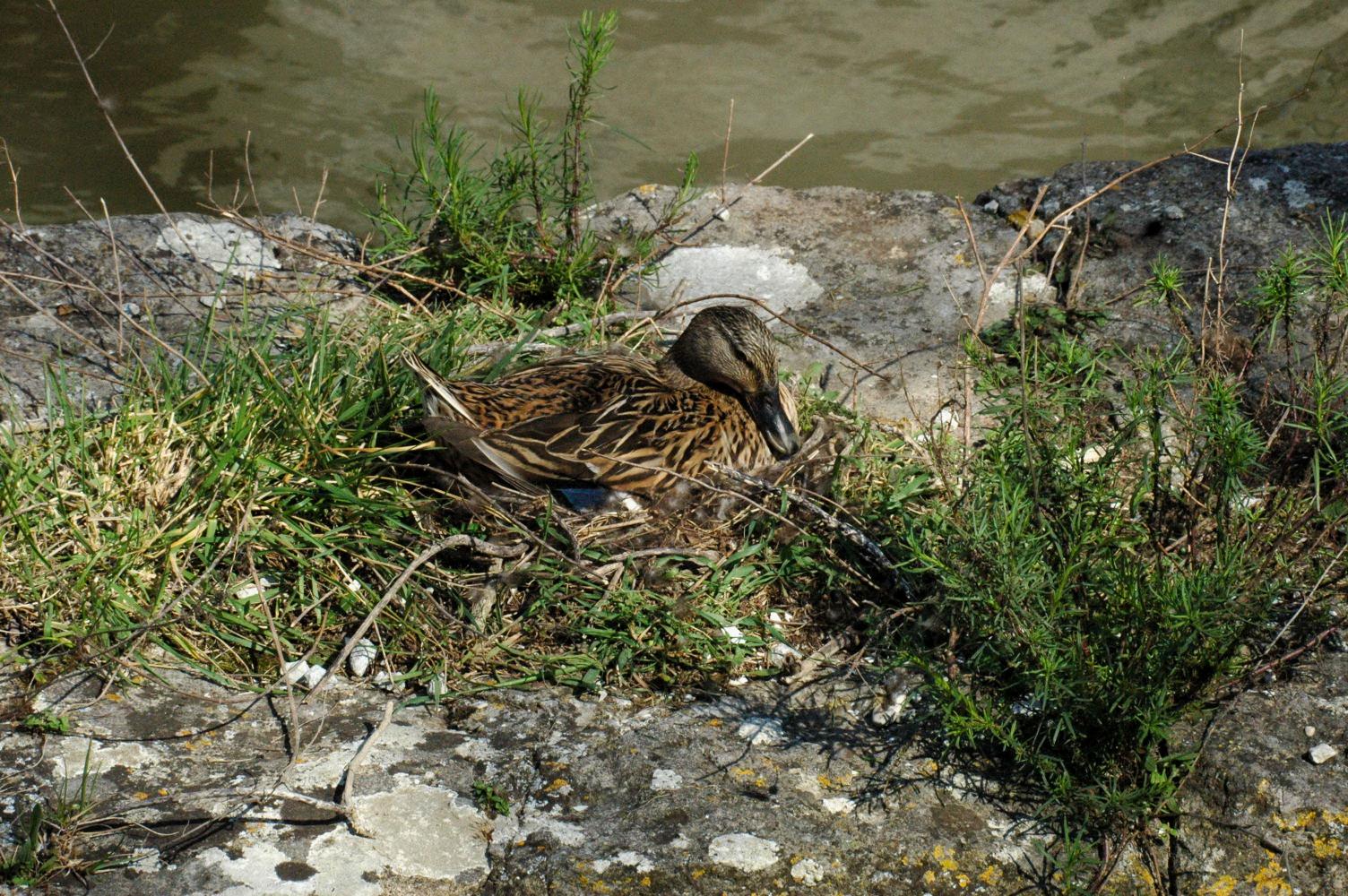
This is a photo of the female mallard from yesterday's posting
(2007) Canal du Midi, France, EU • Photo Posted July 1, 2007 • © 2007 Terry Costales 
#20070701.jpg Add a comment or report a mistake
|
|
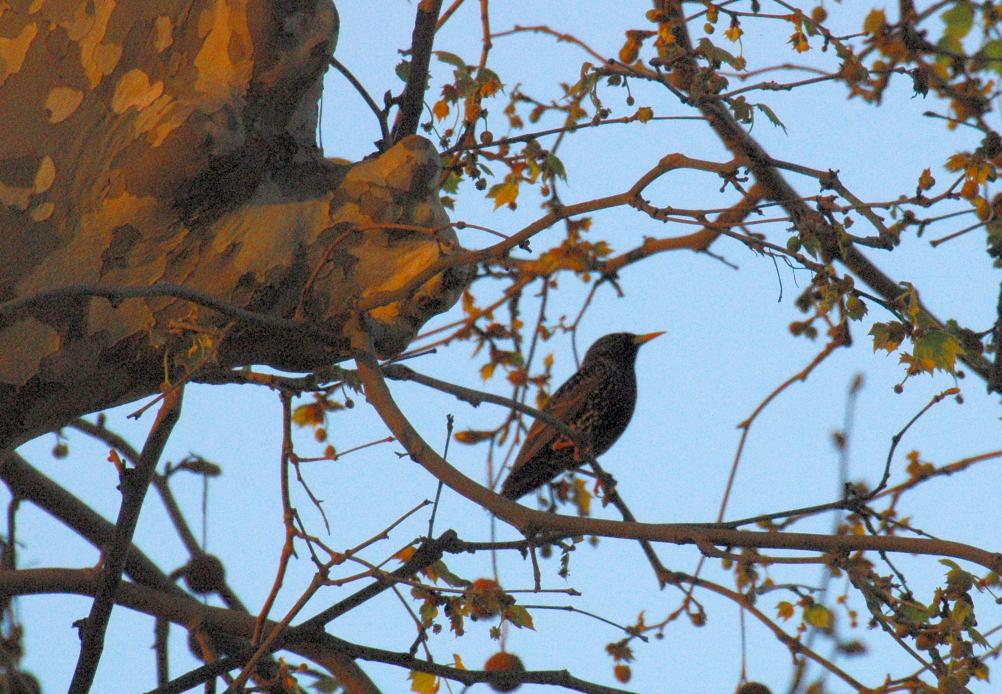 Finally a European starling where it belongs: in Europe. I have observed large flocks of Starlings since I was a kid. Sometimes I've seen enormous groups making, what I like to call, "flock circles" in the sky. When they do this it's very unnerving. The first time I saw this phenomenon it was in the skies over San Francisco about 15 years ago. I thought perhaps the birds could sense an impending disaster, perhaps an earthquake. If so, what was I doing in SAN FRANCISCO? Home of the big one that's always overdue.
I found out later this was normal behavior for starlings. The
Wikipedia article
Even knowing this is normal for Starlings and nothing supernatural, I still get the heebie-jeebies. Though I'll never admit it.
(2007) Canal du Midi, France, EU • Photo Posted July 2, 2007 • © 2007 Terry Costales 
#20070702.jpg Add a comment or report a mistake
|
|
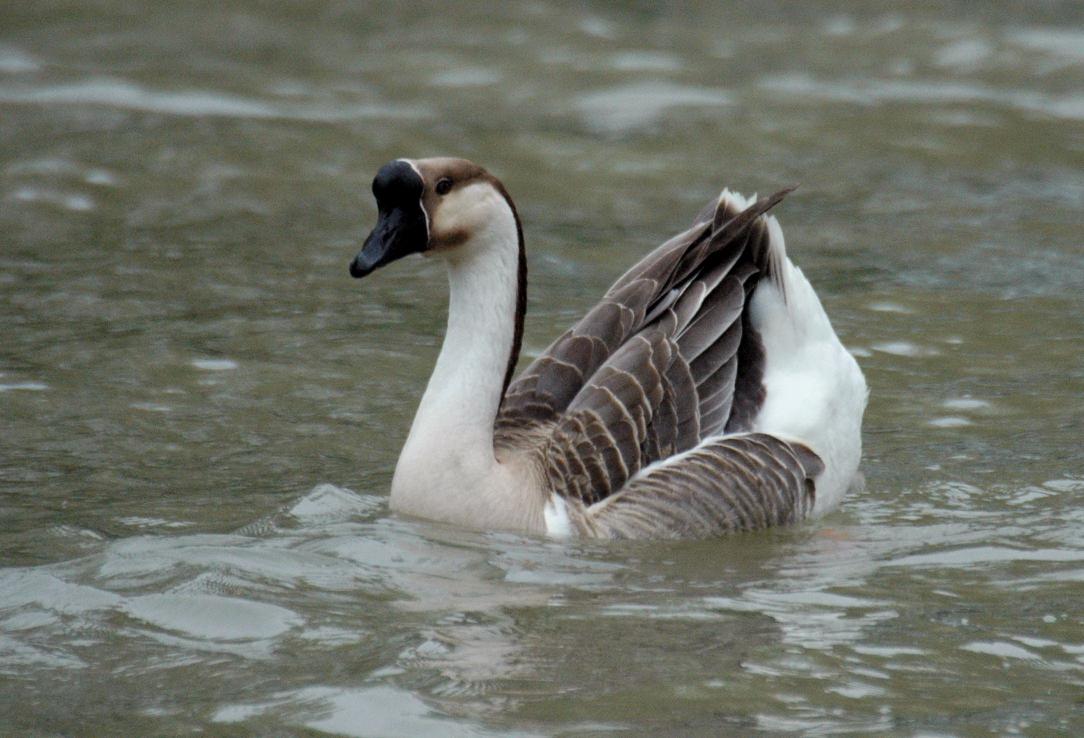
This is a photo of a domesticated
Swan Goose I've seen geese like this in California, Washington and France. Clearly they must adapt easily to many different climates.
(2007)Canal du Midi, France, EU • Photo Posted July 3, 2007 • © 2007 Terry Costales 
#20070703.jpg Add a comment or report a mistake
|
|
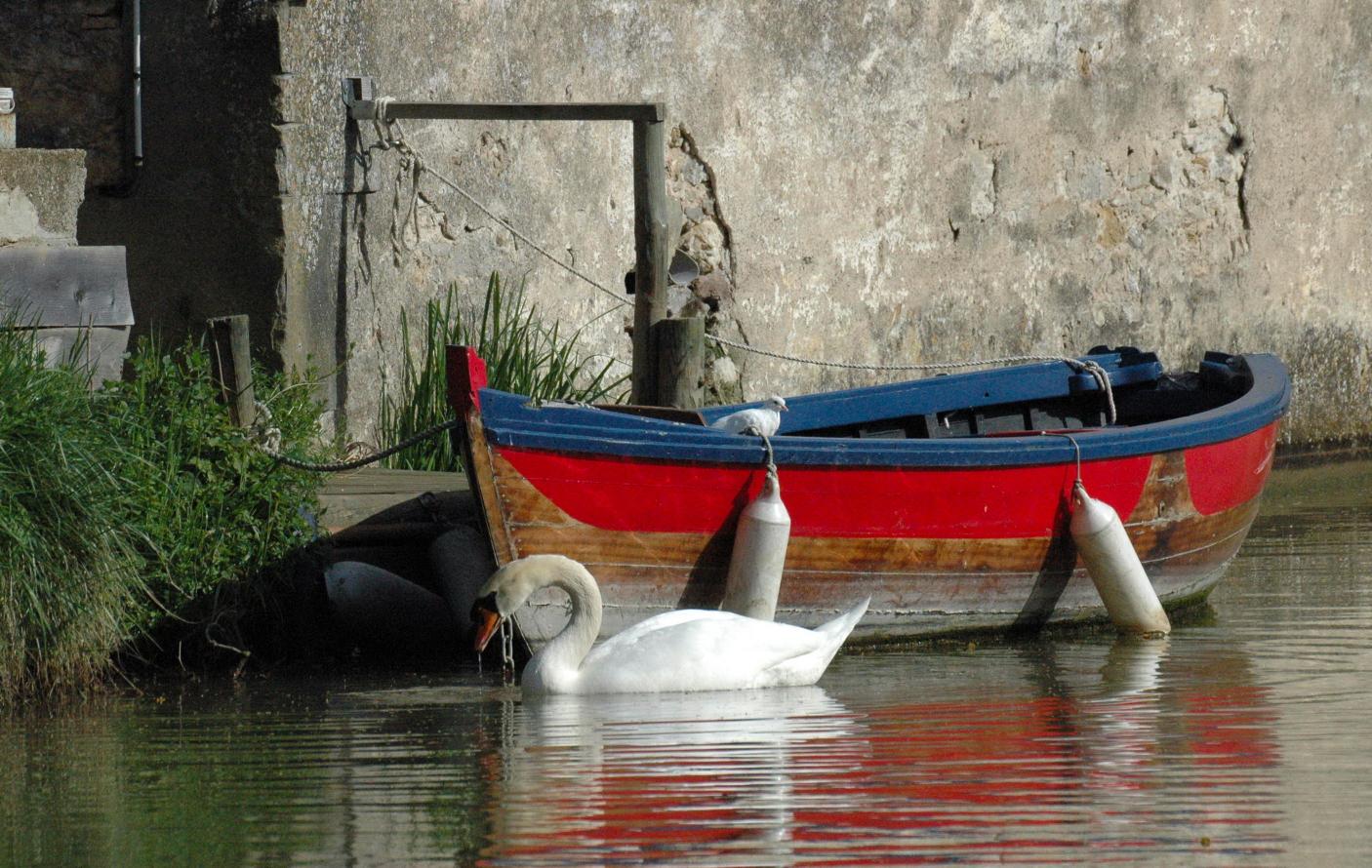
Our boat was moored on the Canal du Midi and the four of us aboard all commented on the picturesque
red and blue boat
When the swan swam near the boat I saw a photo op I couldn't resist. Only now, months later, did I notice that I had also photographed a white dove perched on the edge of the rowboat. The white dove is a symbol of peace and, on this July 4th, seems the most appropriate wish for this nation and the world.
(2007) Trebes, France, EU • Photo Posted July 4, 2007 • © 2007 Terry Costales 
#20070704.jpg Add a comment or report a mistake
|
|
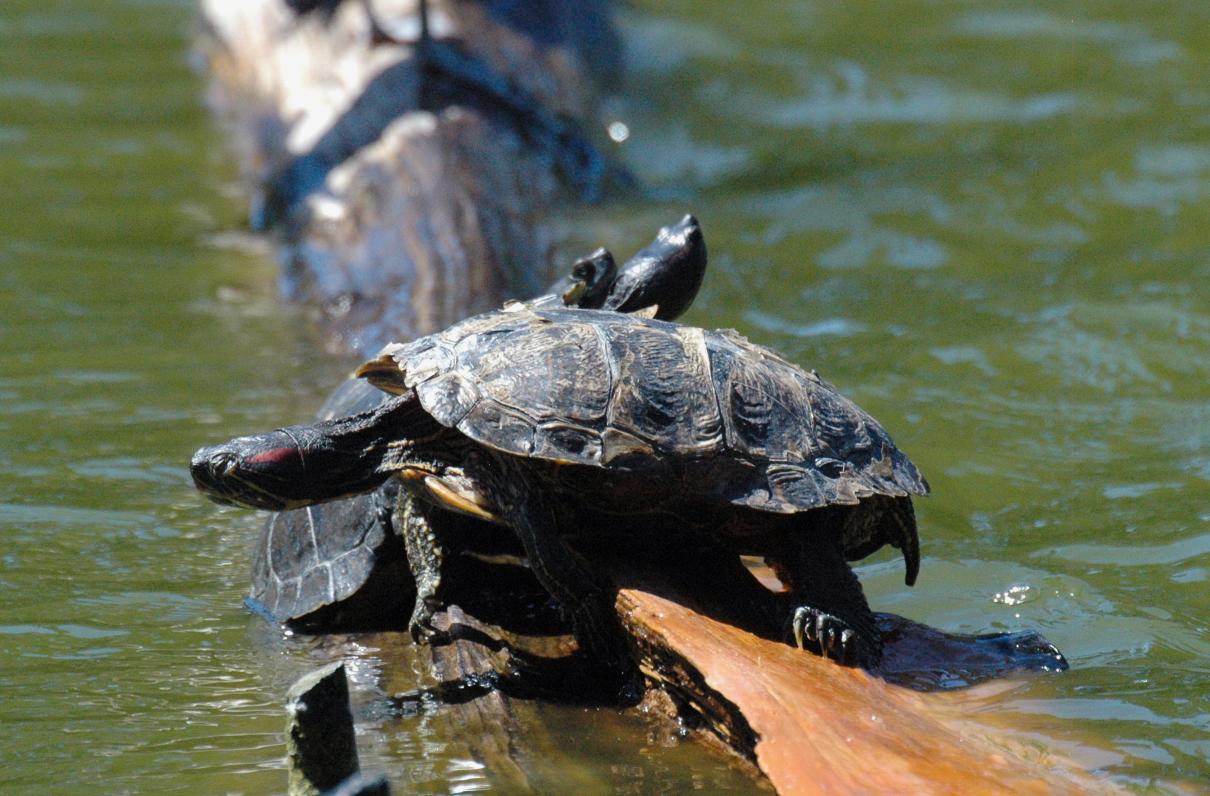
There are hundreds of these turtles in Stow Lake. If the little
pet turtle
I wonder how many of those little pets ended up in Stow Lake?
(2007)Stow Lake, Golden Gate Park, San Francisco, CA • Photo Posted July 5, 2007 • © 2007 Terry Costales 
#20070705.jpg Add a comment or report a mistake
|
|
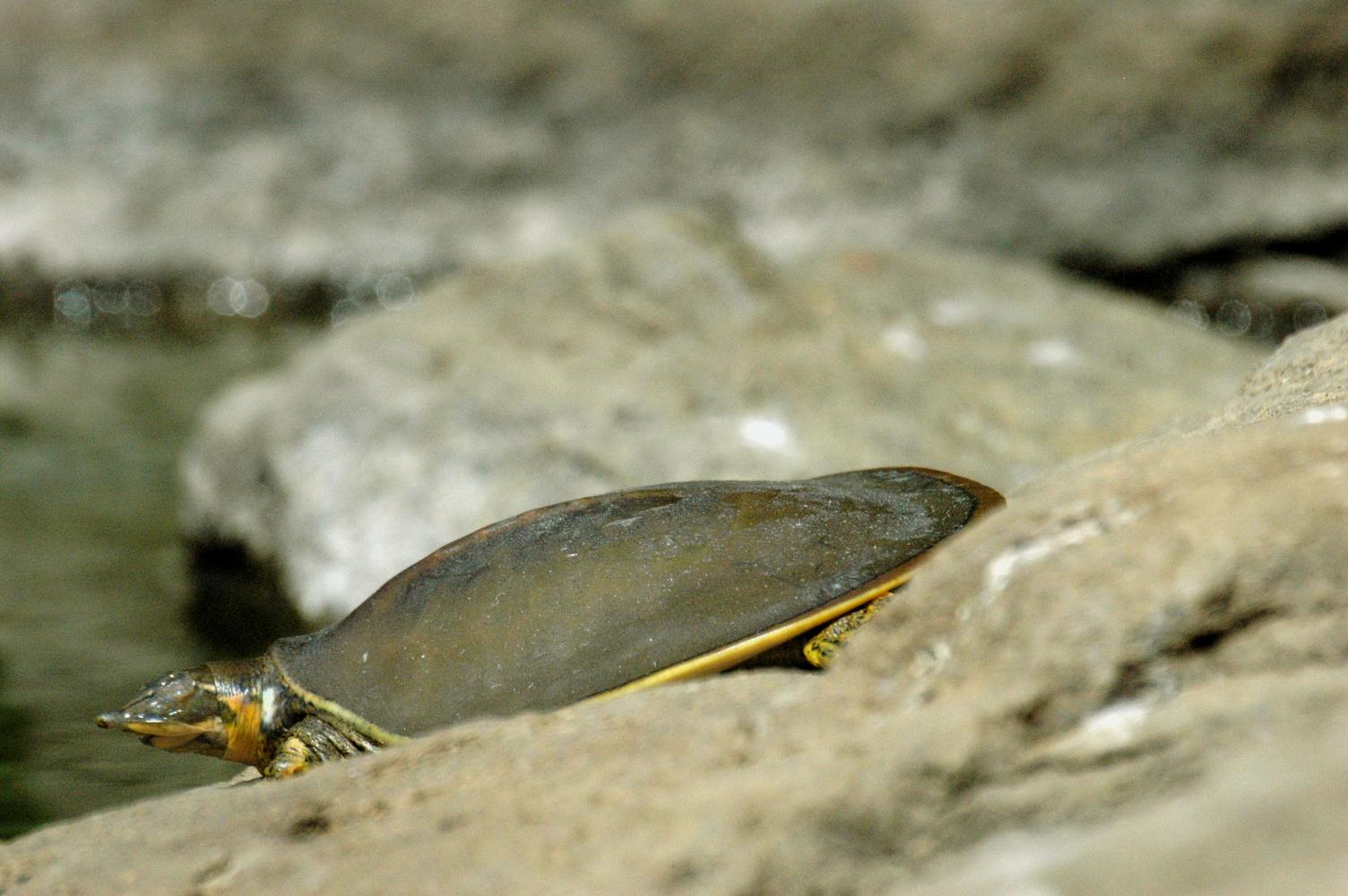
This is a photo of a
soft-shelled turtle
(2007) Stow Lake, Golden Gate Park, San Francisco, CA • Photo Posted July 6, 2007 • © 2007 Terry Costales 
#20070706.jpg Add a comment or report a mistake
|
|
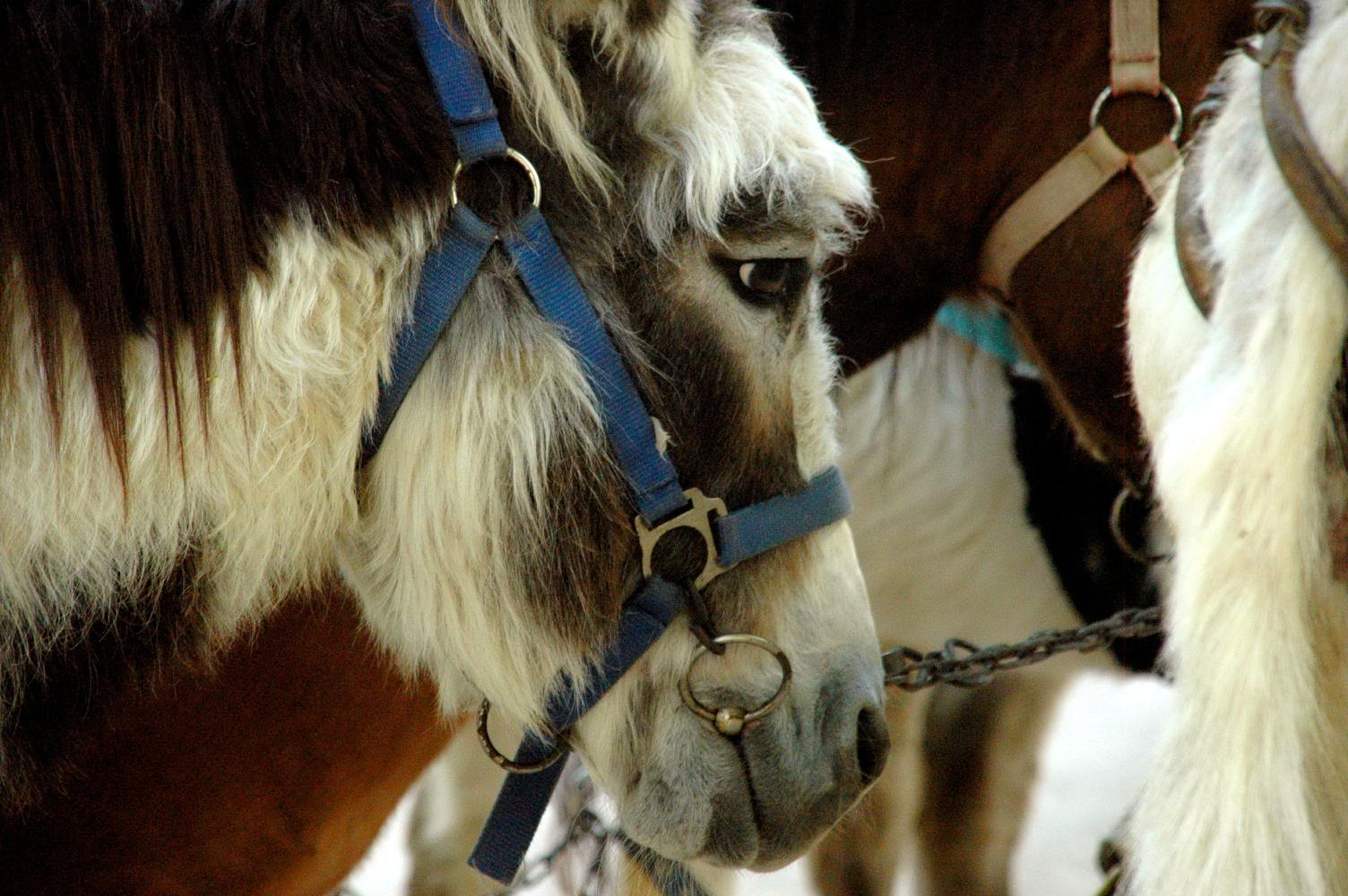
Just west of the Louvre are wonderful gardens called
Jardin des Tuileries
But, to my surprise, there was also a children's playground, carousel and
pony and donkey rides The photo above is of one of the donkeys, or âne in French.
(2007) Paris, France, EU • Photo Posted July 7, 2007 • © 2007 Terry Costales 
#20070707.jpg Add a comment or report a mistake
|
|
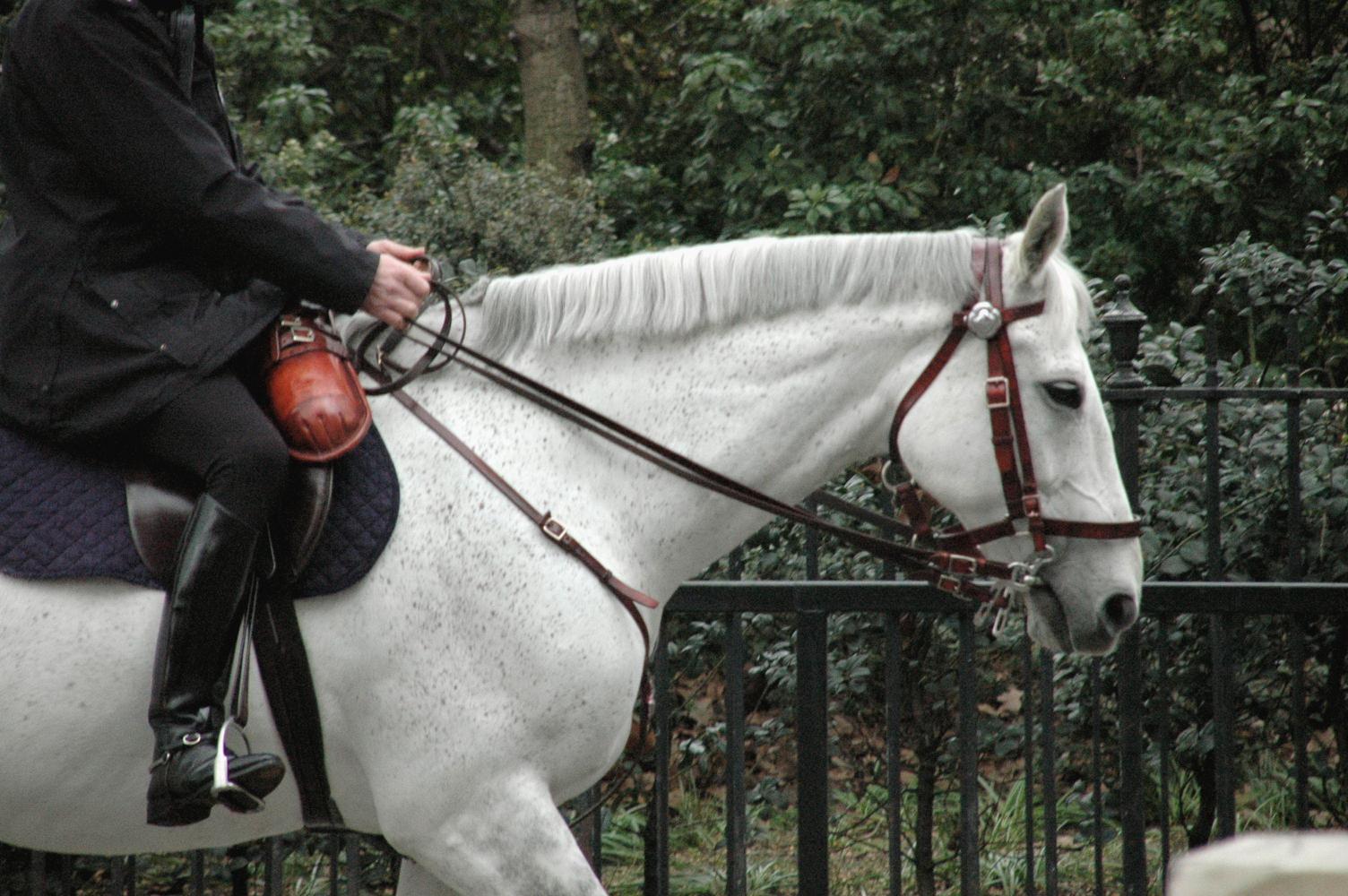
Hyde Park
This photo is of a very dignified, white, police horse.
(2007) Hyde Park, London, England, EU • Photo Posted July 8, 2007 • © 2007 Terry Costales 
#20070708.jpg Add a comment or report a mistake
|
|
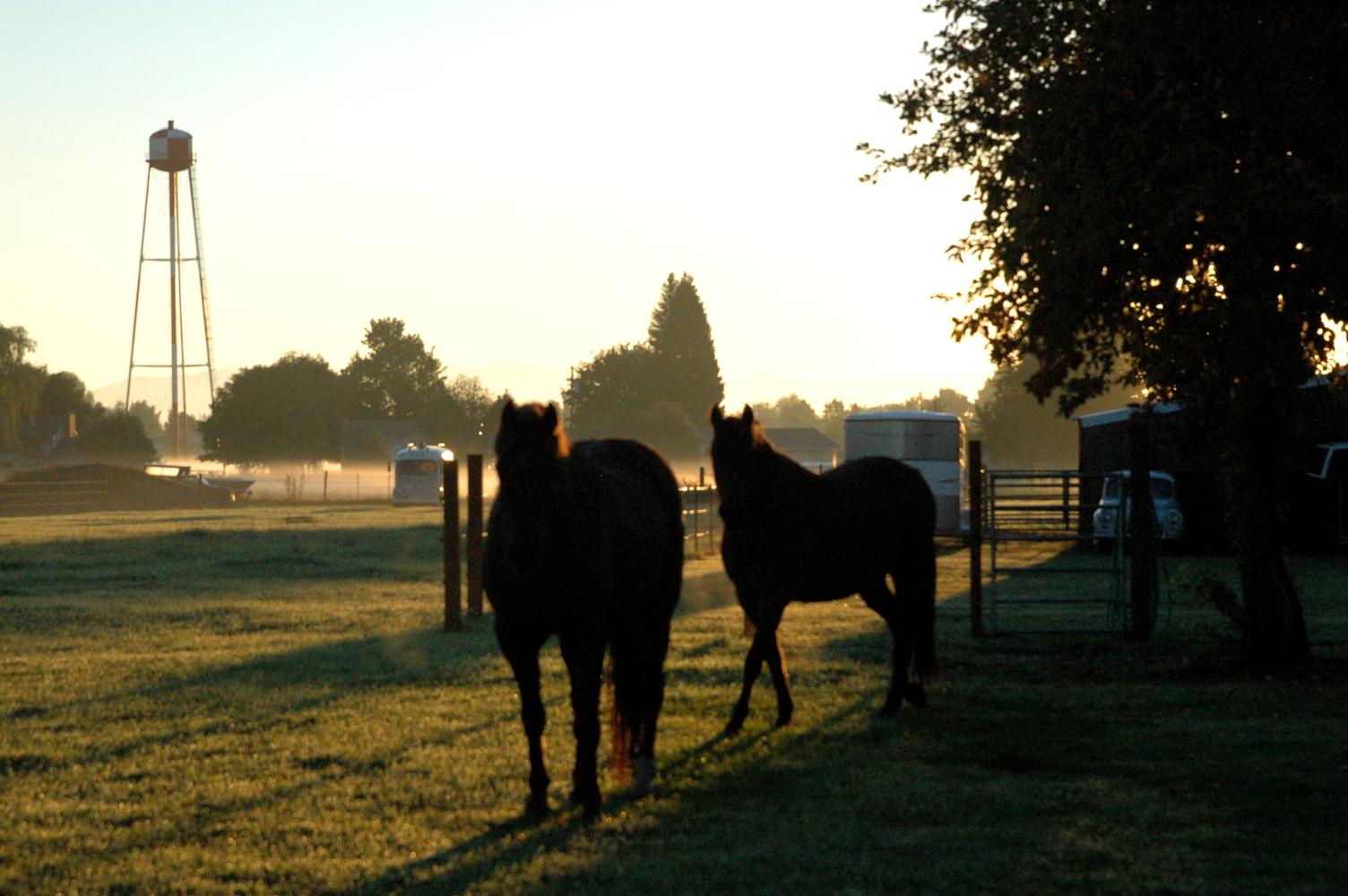
Backlit at dawn, two horses in the Northwest are a calm and beautiful sight.
Almost everything looks better when the
light
(2007) Otis Orchards, Washington • Photo Posted July 9, 2007 • © 2007 Terry Costales 
#20070709.jpg Add a comment or report a mistake
|
|
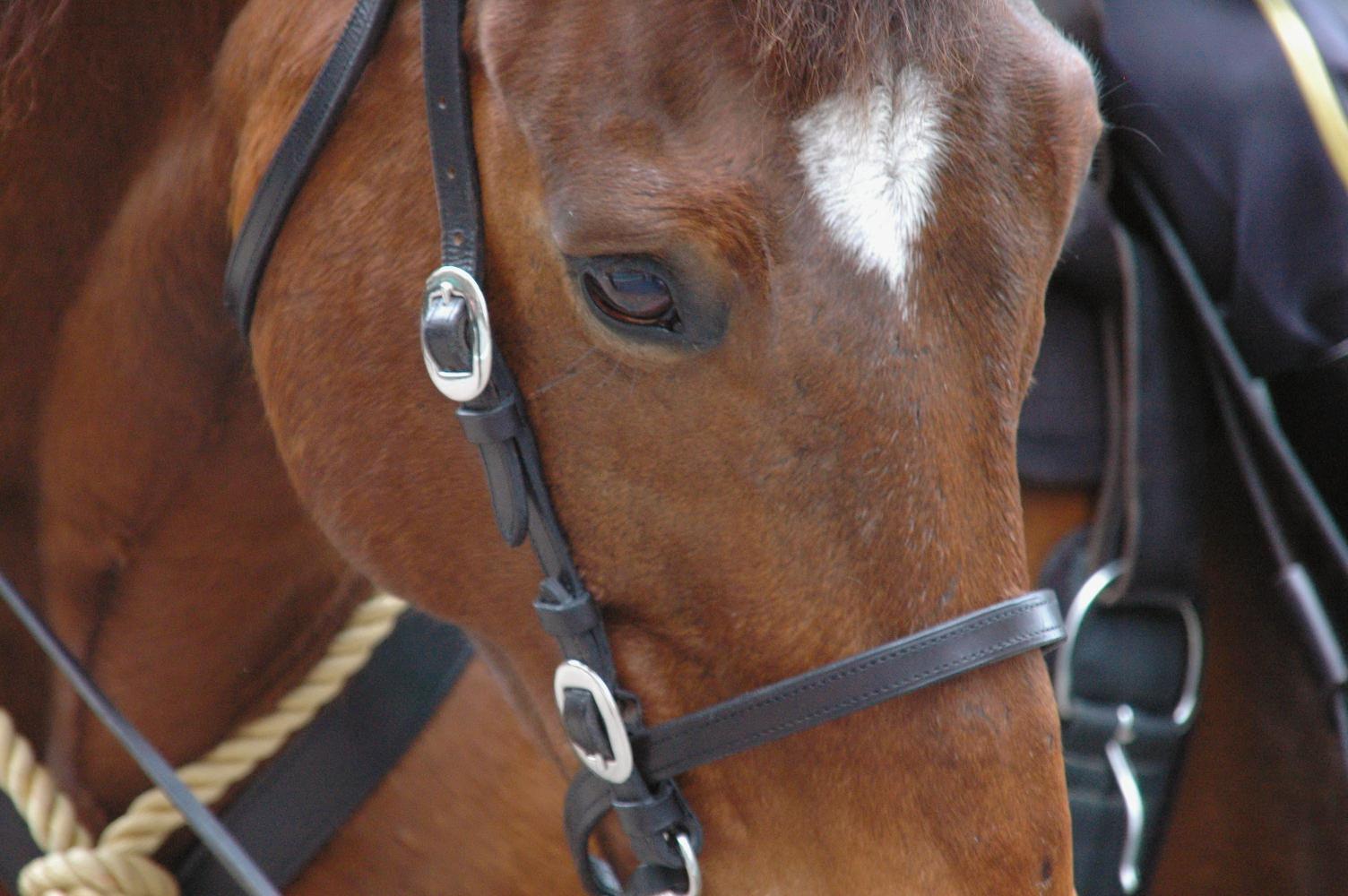 The face of a horse can be very fascinating. Such a large animal, capable of such force and power, yet with such gentle eyes it just makes one sigh.
This picture is a Police horse
(2007) St Patrick's Day Parade, San Francisco, CA, USA • Photo Posted July 10, 2007 • © 2007 Terry Costales 
#20070710.jpg Add a comment or report a mistake
|
|
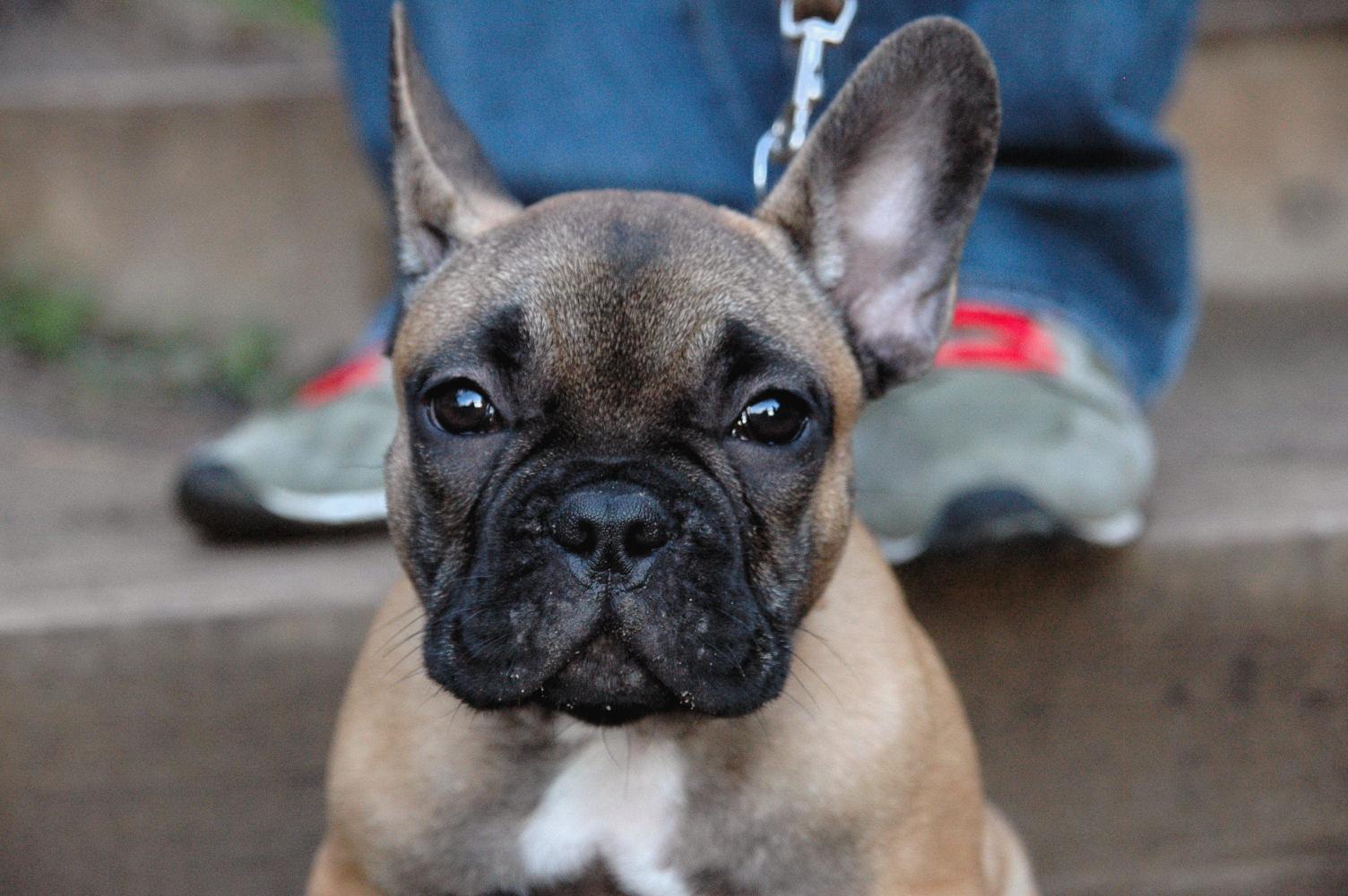
These are just the cutest
(2007) Coastal Trail, San Francisco, CA, USA • Photo Posted July 11, 2007 • © 2007 Terry Costales 
#20070711.jpg Add a comment or report a mistake
|
|
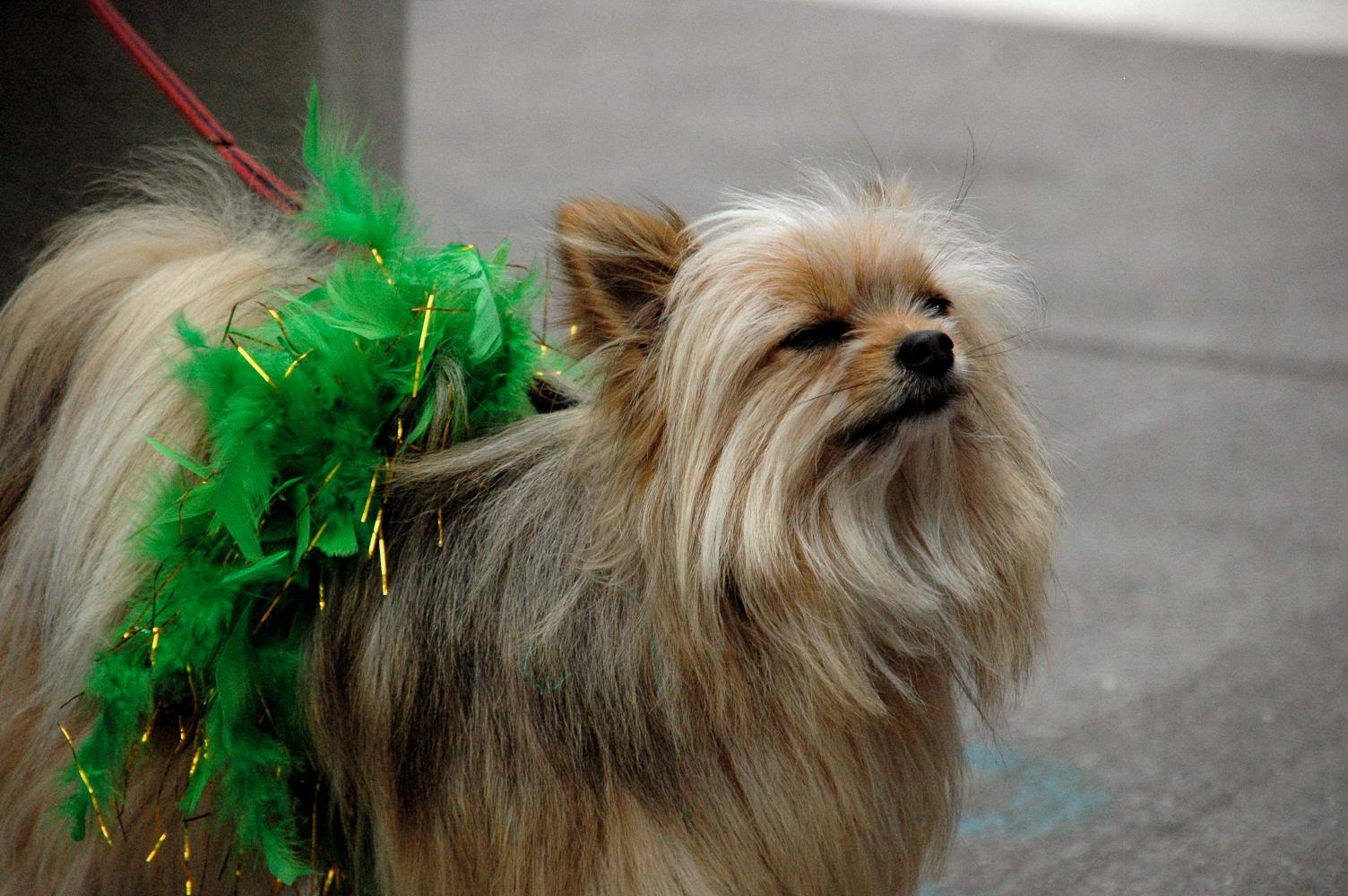
They say everyone is Irish on St Pat's Day and I guess that includes the animal kingdom. Our dogs are eager to accompany we humans on all of our crazy endeavors. Whether it's dogs on motorcycles
(2007) St. Patrick's Day Parade, San Francisco, CA • Photo Posted July 12, 2007 • © 2007 Terry Costales 
#20070712.jpg Add a comment or report a mistake
|
|
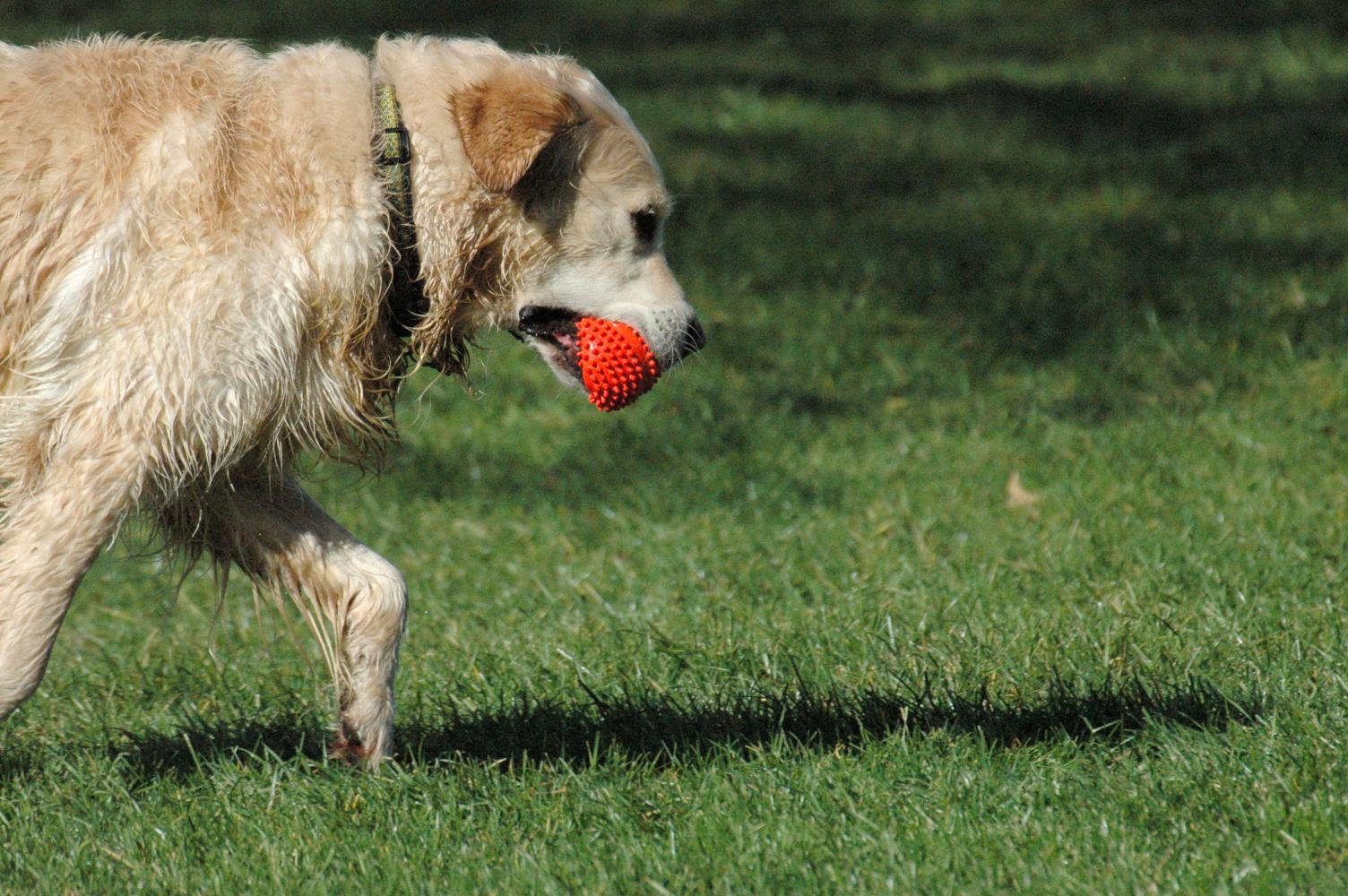 This is a happy dog. He's getting exercise, interacting in the park with his human companion. And that's a nice orange ball!
I've been watching the
Dog Whisperer
So take a walk. Take your dog with you. And do it every day!
(2007) Hyde Park, London, England • Photo Posted July 13, 2007 • © 2007 Terry Costales 
#20070713.jpg Add a comment or report a mistake
|
|
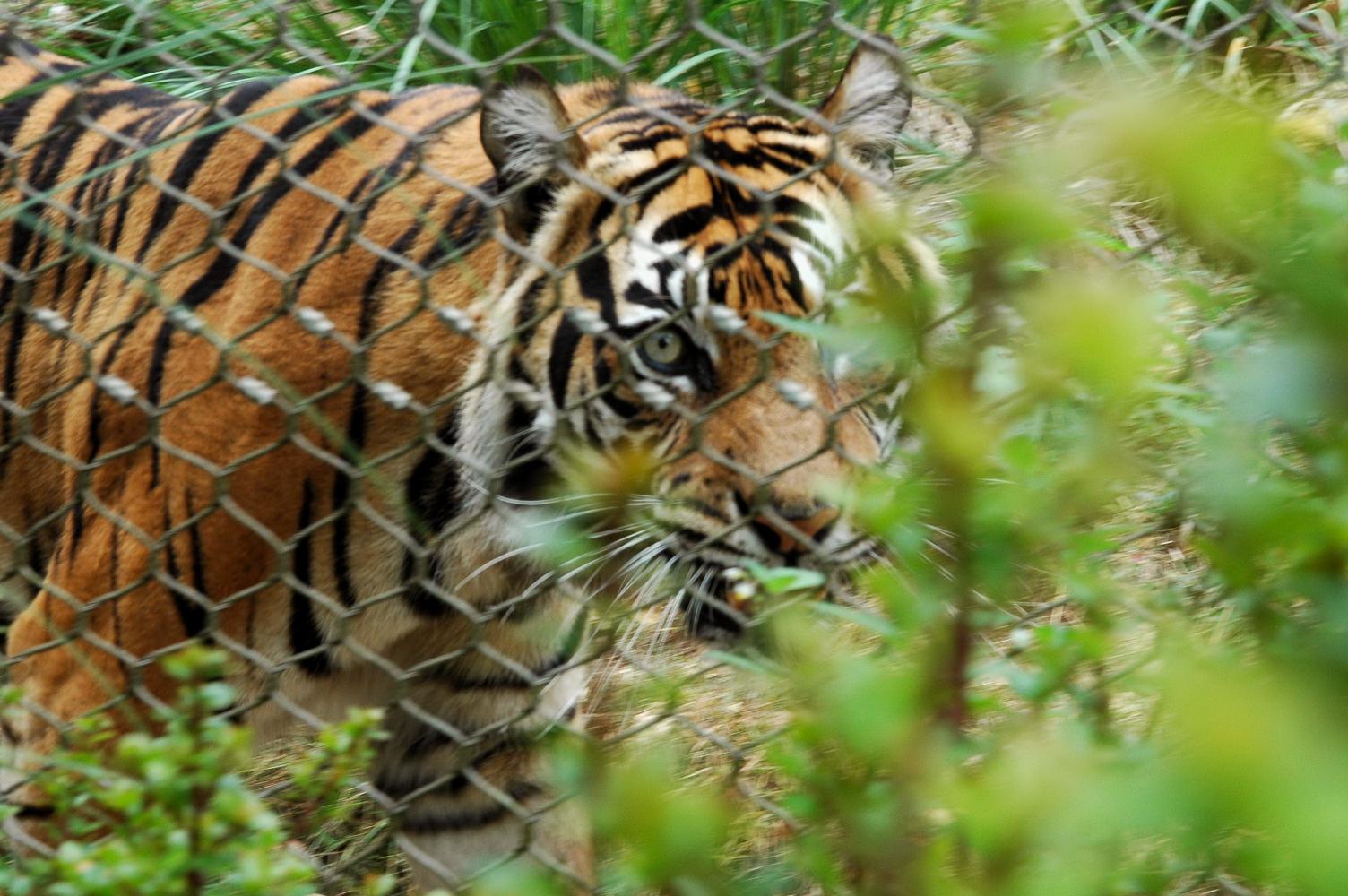 This photo was taken August 13th, 2006, which was my first day with my new camera. The tiger rapidly paced her cage, back and forth, revealing an occasional silent snarl. I waited in front of the enclosure for a good shot but in all my photos the tiger was out of focus or out of frame. Except for this one. This photo isn't the greatest I've ever taken, but I love it anyway. I caught that exact second our eyes met and for that breath-catching moment I was potential prey.
(2007) San Francisco Zoo, San Francisco, CA • Photo Posted July 14, 2007 • © 2007 Terry Costales 
#20070714.jpg Add a comment or report a mistake
|
|
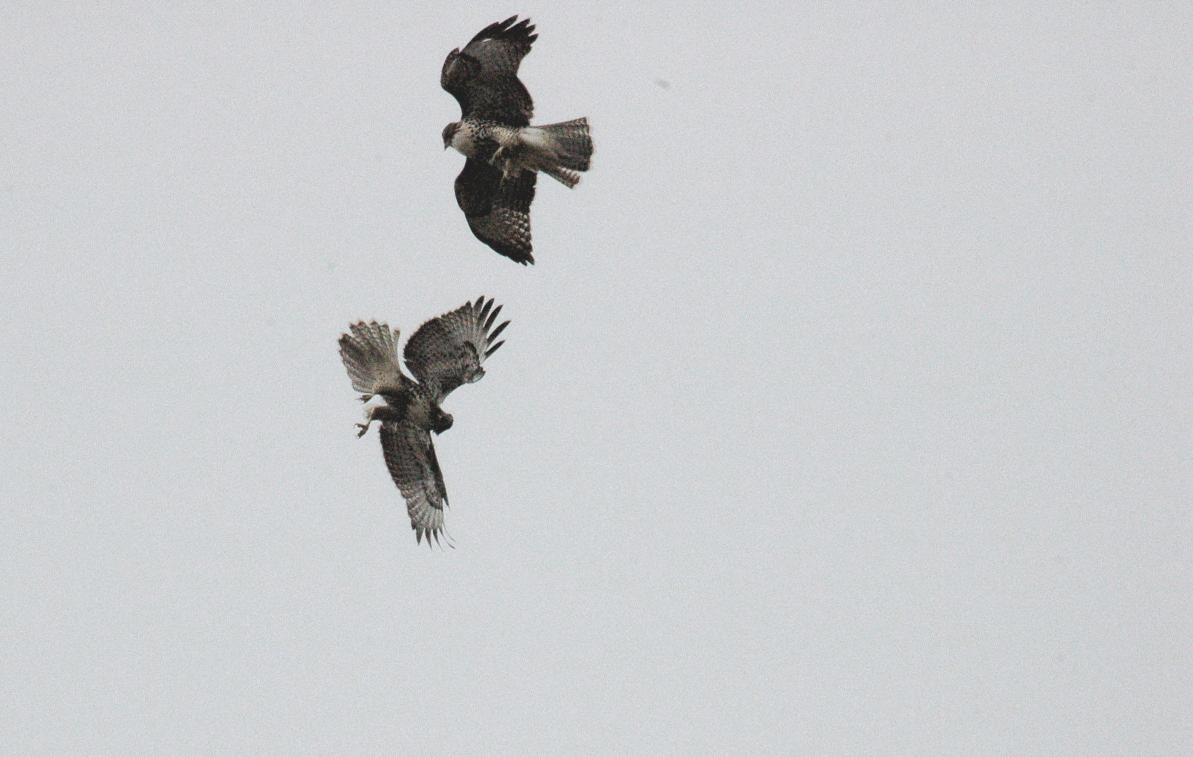 I took this photo before the fog had burned off yesterday. These two aerial acrobats had a good time swooping and clowning around. After this display they landed on top of a cypress tree and then sat peacefully side by side.
(2007) The Presidio, San Francisco, CA • Photo Posted July 15, 2007 • © 2007 Terry Costales 
#20070715.jpg Add a comment or report a mistake
|
|
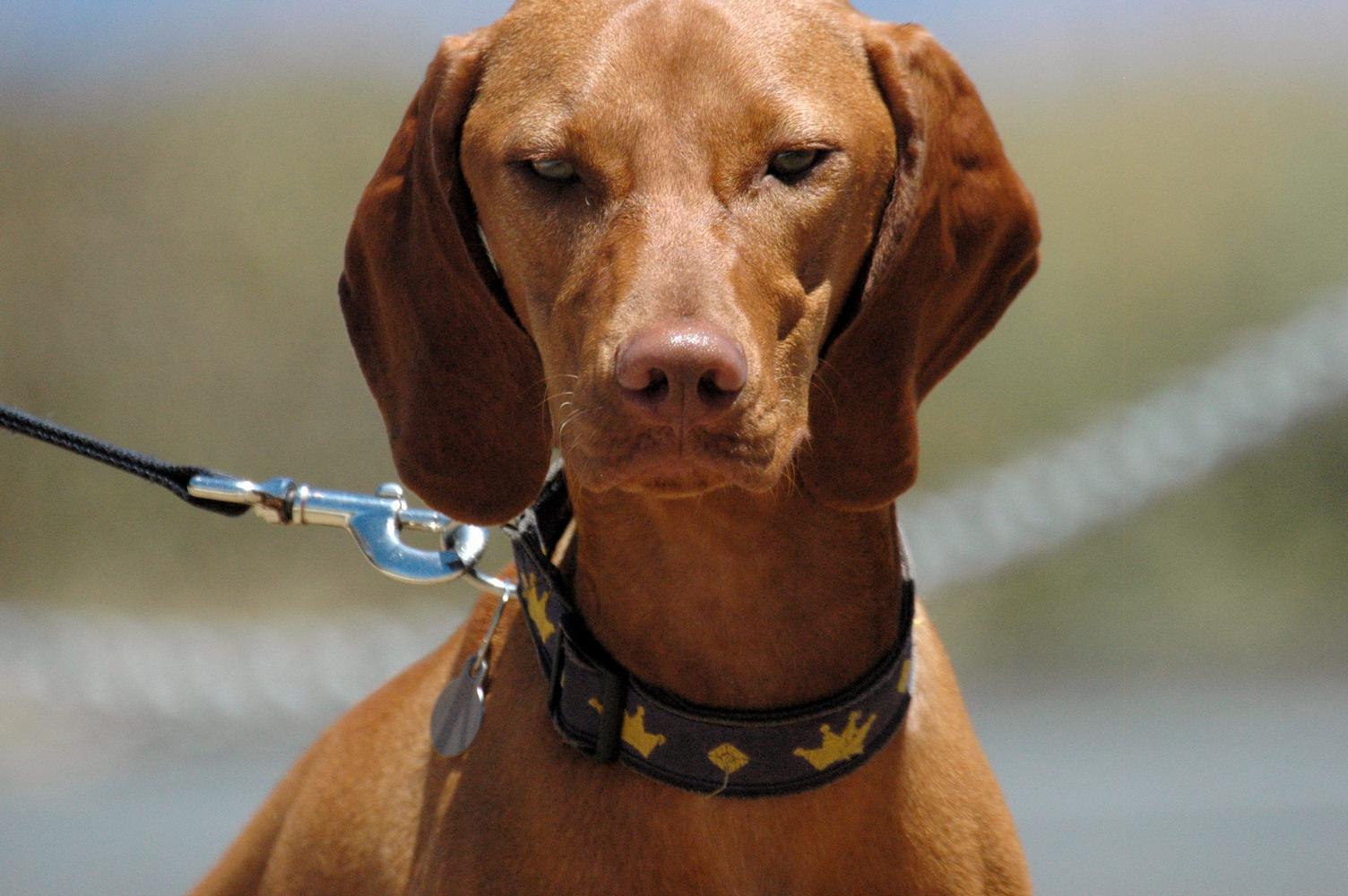
Today I met a very nice young woman and her beautiful dog Zoe. I learned a lot about the
Vizsla breed
(2007) Palo Alto Bird Sanctuary • Photo Posted July 16, 2007 • © 2007 Terry Costales 
#20070716.jpg Add a comment or report a mistake
|
|
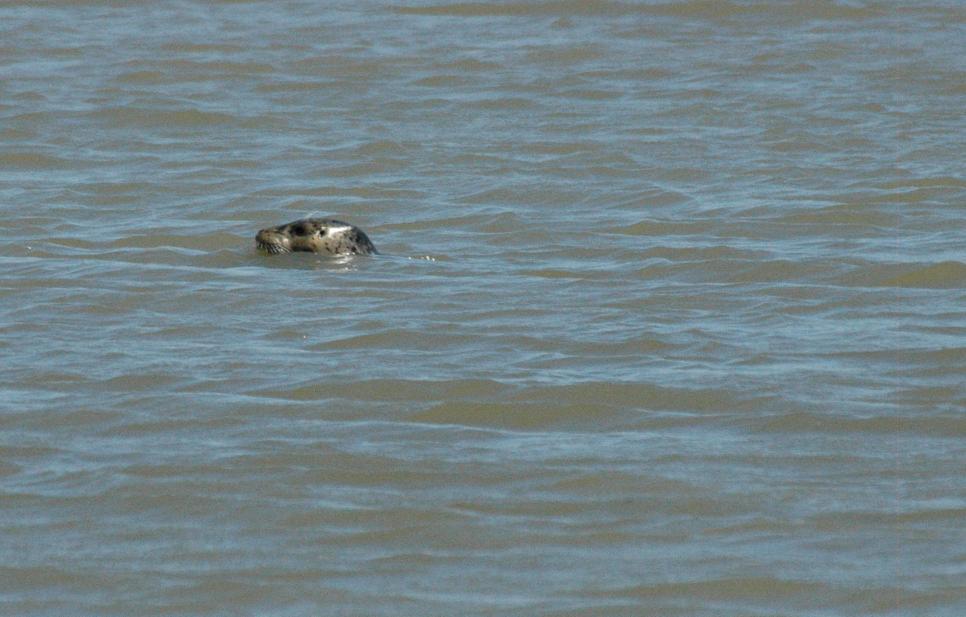
This photo of a Harbor Seal was taken very near the
Lucy Evans Interpretive Center
(2007) Palo Alto Bird Sanctuary • Photo Posted July 18, 2007 • © 2007 Terry Costales 
#20070718.jpg Add a comment or report a mistake
|
|
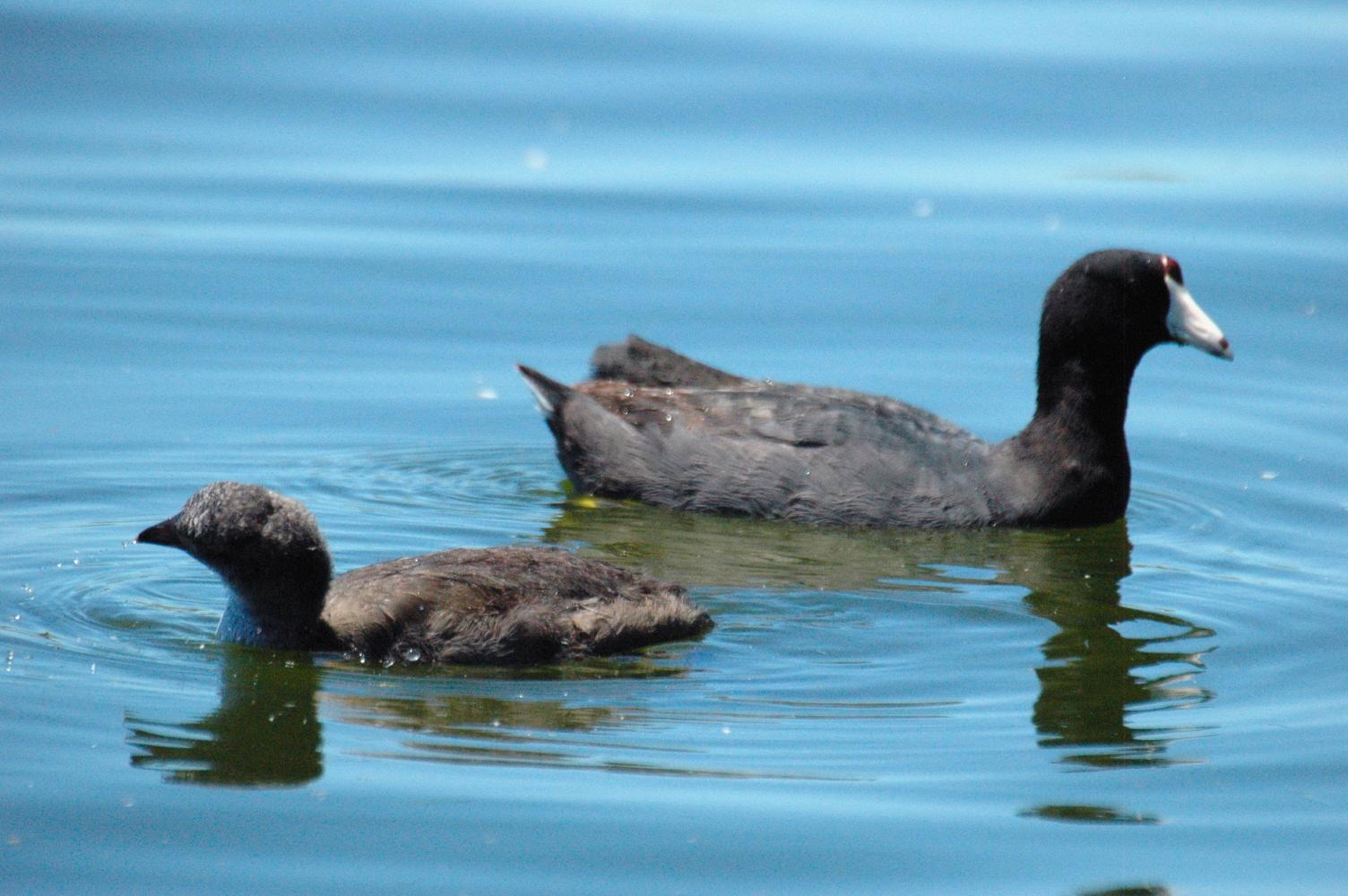 On July 16th I was surprised to see a young coot with its parent. I hadn't been to this location in a while and I had missed seeing the coot chick when it was small. That's one of the attractions of birding. You never know what you will see on any given day. Usually it's not what you expect.
(2007) Palo Alto Bird Sanctuary • Photo Posted July 20, 2007 • © 2007 Terry Costales 
#20070720.jpg Add a comment or report a mistake
|
|
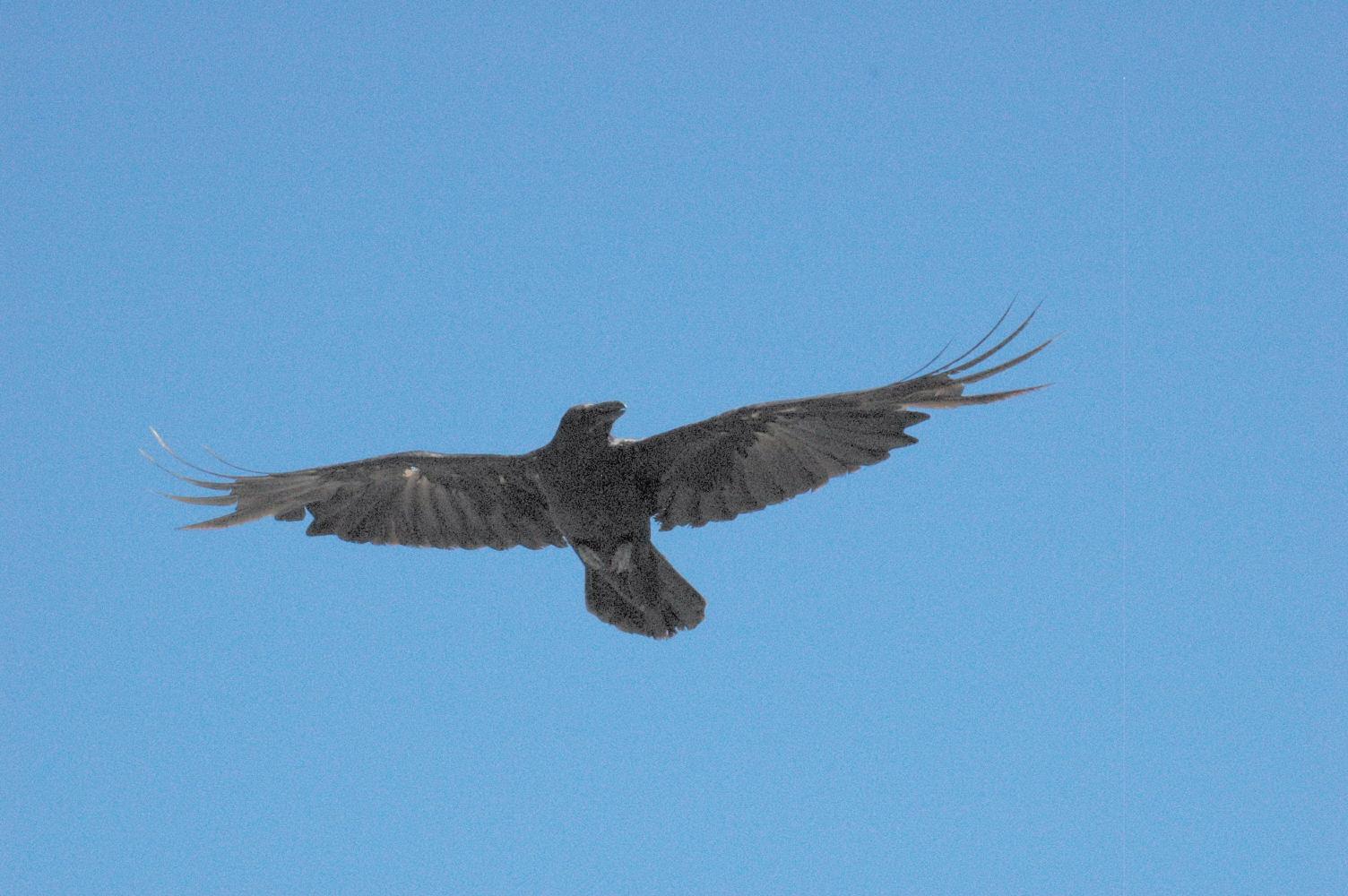
Long to soar,
(2007) Palo Alto Bird Sanctuary • Photo Posted July 23, 2007 • © 2007 Terry Costales 
#20070723.jpg Add a comment or report a mistake
|
|
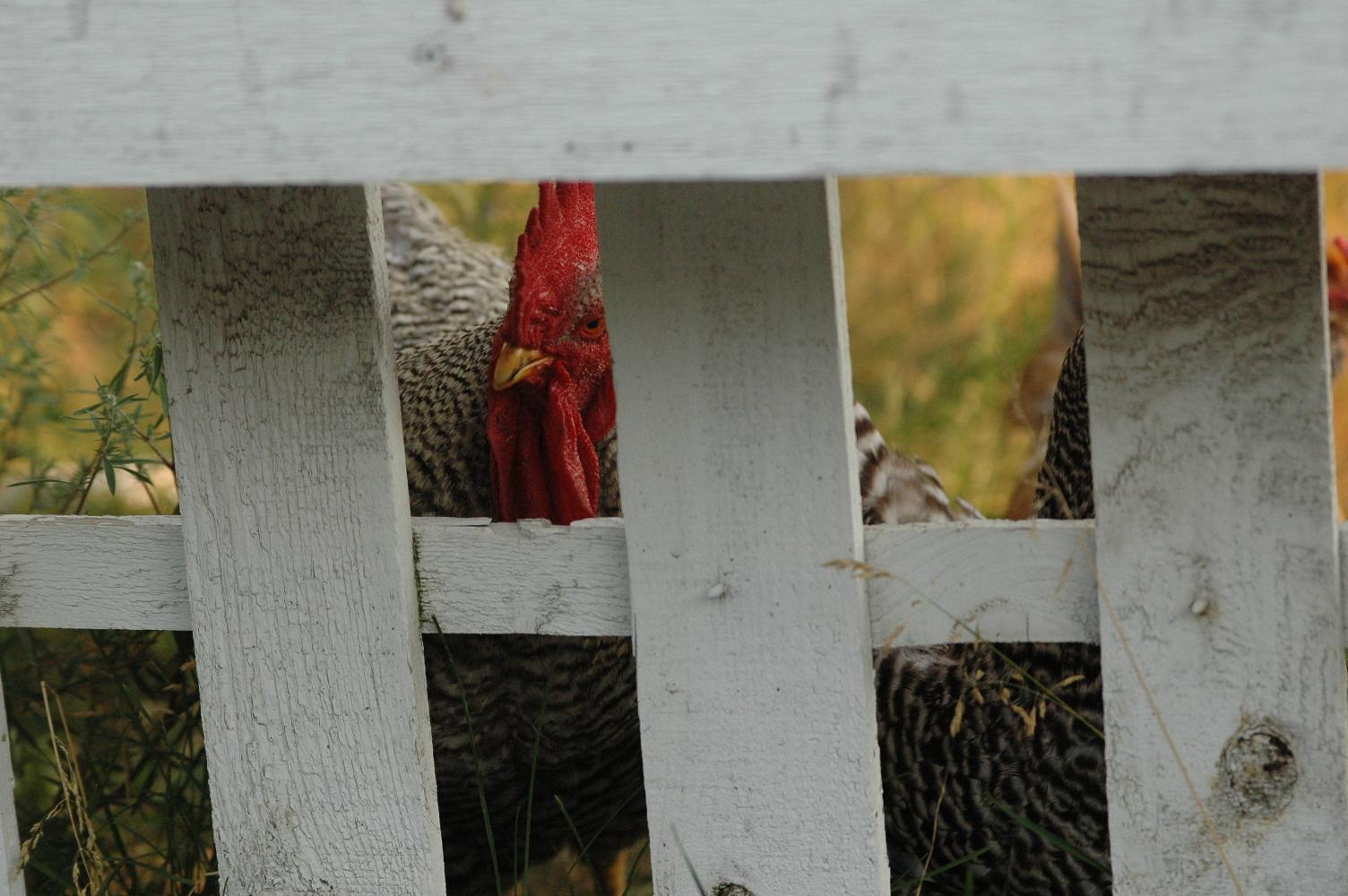 Weezie was supposed to be a hen. He was picked at random out of bin of Barred Plymouth Rock chicks, 90% guaranteed to be female. As you can see Weezie turned out to not be female. He grew up to terrorize the dogs, kids and even me. He would approach to see what goodies I might have then, even when indulging, he would forget he was glad to see me and sneak in a few vicious kicks. Now that I'm in San Francisco with no chickens, I don't miss him at all. Not one little bit.
(2007) Otis Orchards, Washington • Photo Posted August 1, 2007 • © 2007 Terry Costales 
#20070801.jpg Add a comment or report a mistake
|
|
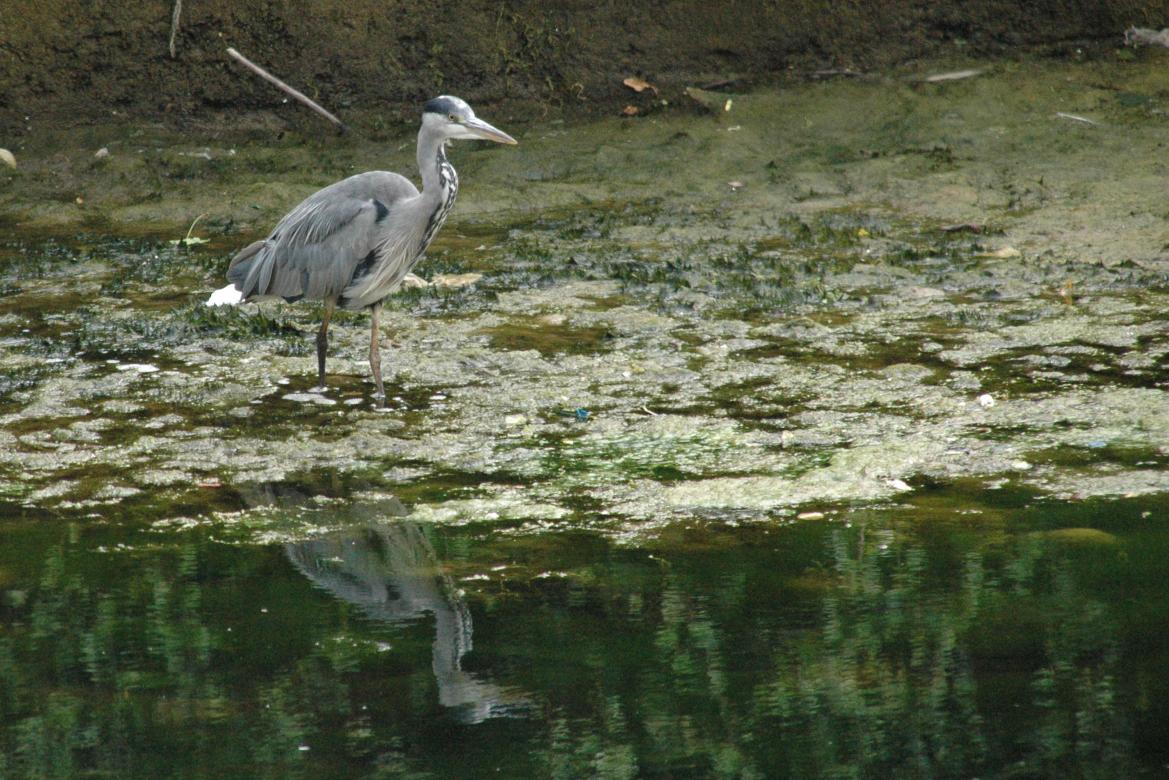 Taken August 23rd, this is a Grey Heron hunting for food in a Dublin canal. This bird is a year round resident throughout England and Ireland. But I didn't expect one to be found downtown! Fifteen feet above this heron was the morning commute rushing over a bridge!
I also saw one other Grey Heron
(2007) Dublin, Ireland • Photo Posted September 2, 2007 • © 2007 Terry Costales 
#20070902.jpg Add a comment or report a mistake
|
|
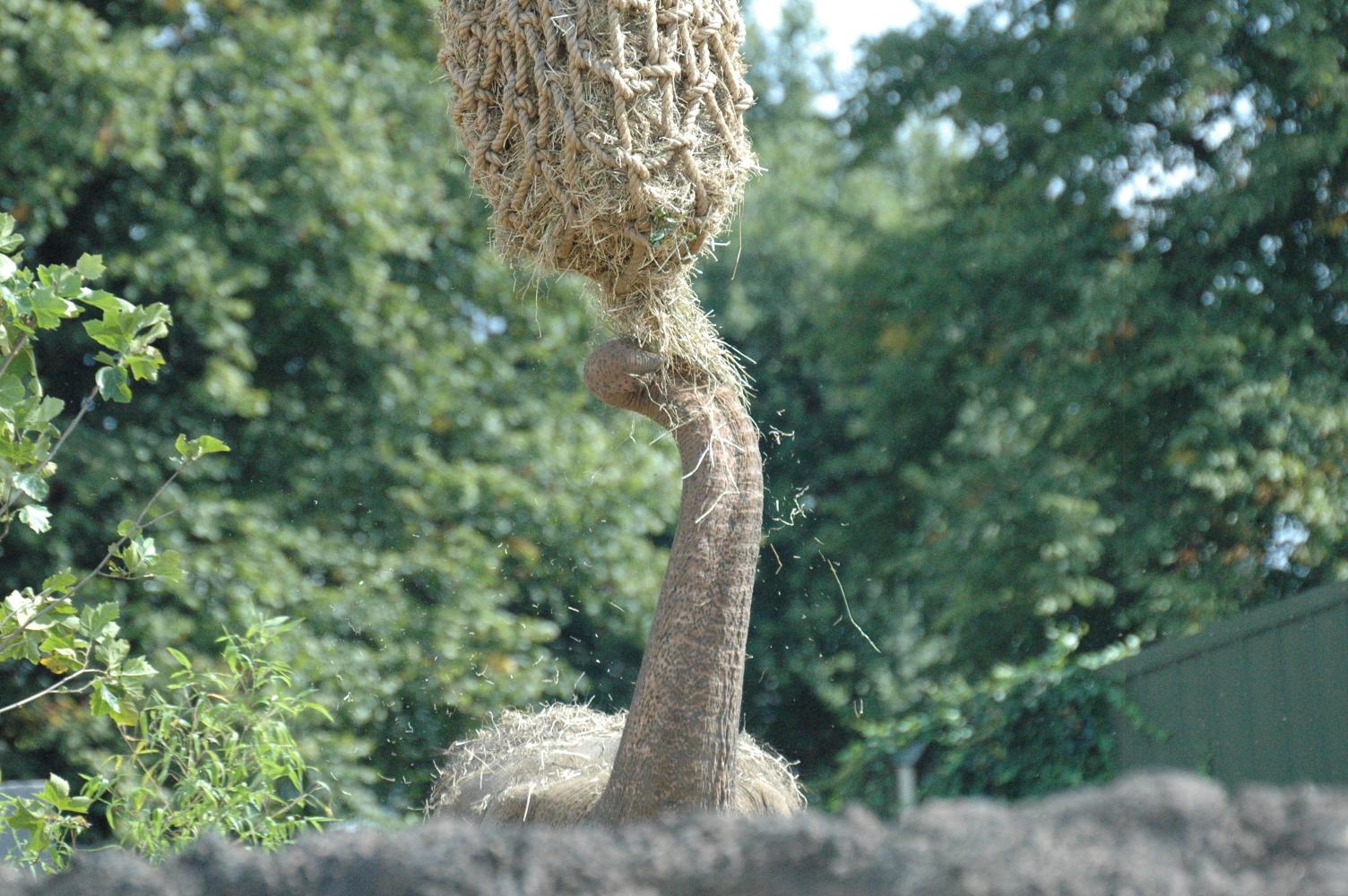
The largest elephant in the group reached up to pull down some hay. The elephants in this zoo had a very large enclosure with varying terrain. The
Dublin Zoo
(2007) The Dublin Zoo • Photo Posted September 3, 2007 • © 2007 Terry Costales 
#20070903.jpg Add a comment or report a mistake
|
|
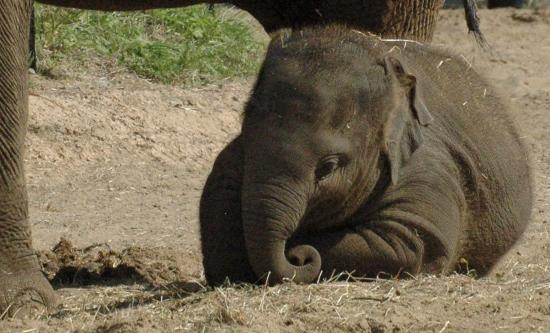
This is a baby
Asian Elephant
(2007) Dublin Zoo, Ireland • Photo Posted September 4, 2007 • © 2007 Terry Costales 
#20070904.jpg Add a comment or report a mistake
|
|
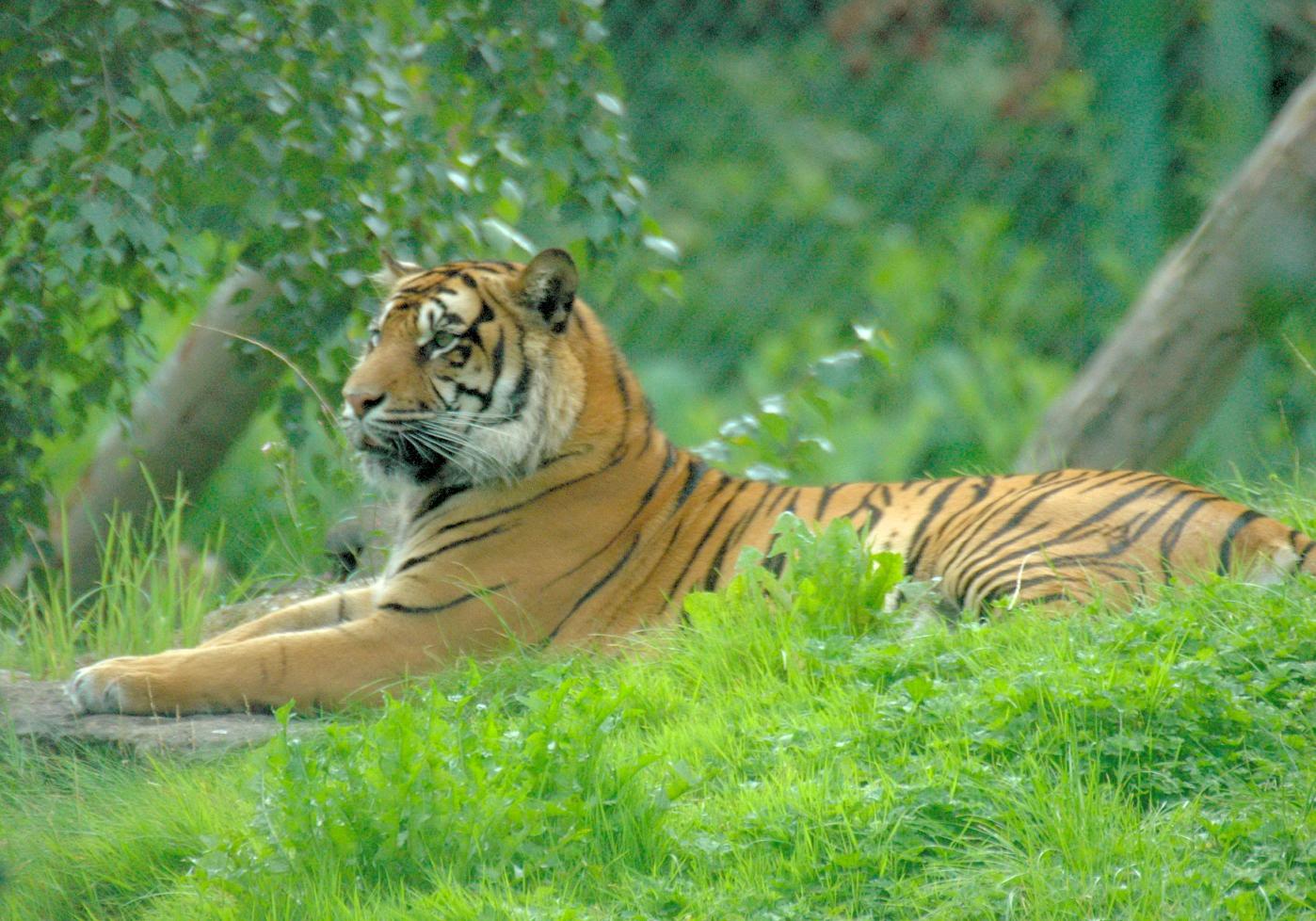 To me the tiger is the most awe inspiring animal I have ever seen. So majestic and powerful I could watch them forever, but in zoos they don't tend to do much whenever I'm around.
(2007) Dublin Zoo, Ireland • Photo Posted September 5, 2007 • © 2007 Terry Costales 
#20070905.jpg Add a comment or report a mistake
|
|
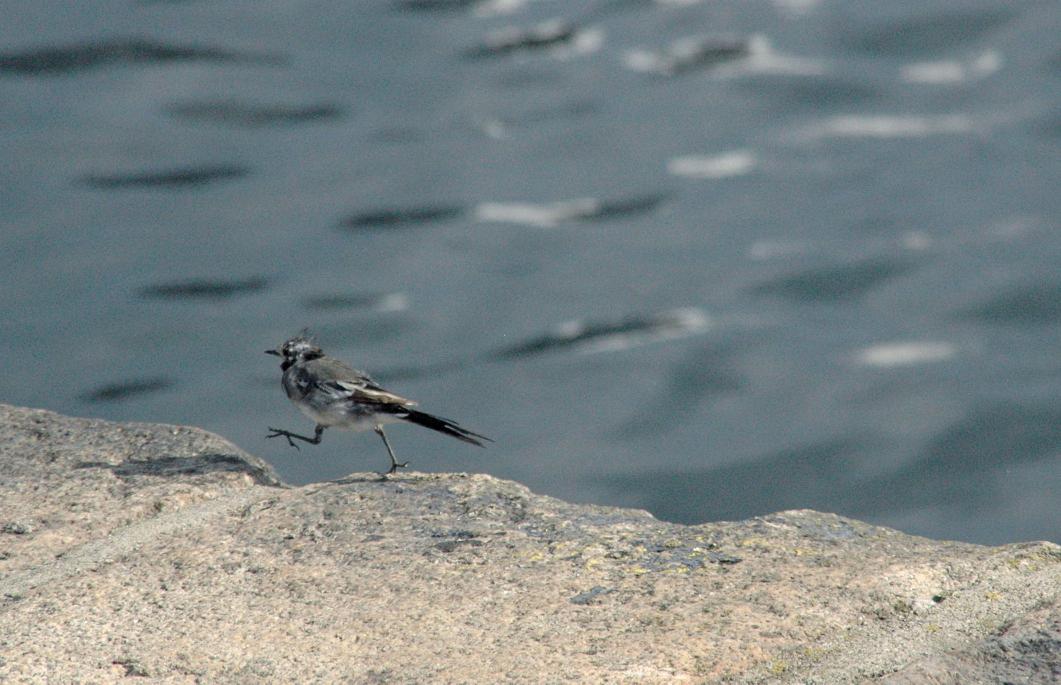 This little bird was fast and wary and did not want its picture taken. Persistent stalking wins the day (and the photo).
(2007) Dublin Quay, Dublin, Ireland • Photo Posted September 6, 2007 • © 2007 Terry Costales 
#20070906.jpg Add a comment or report a mistake
|
|
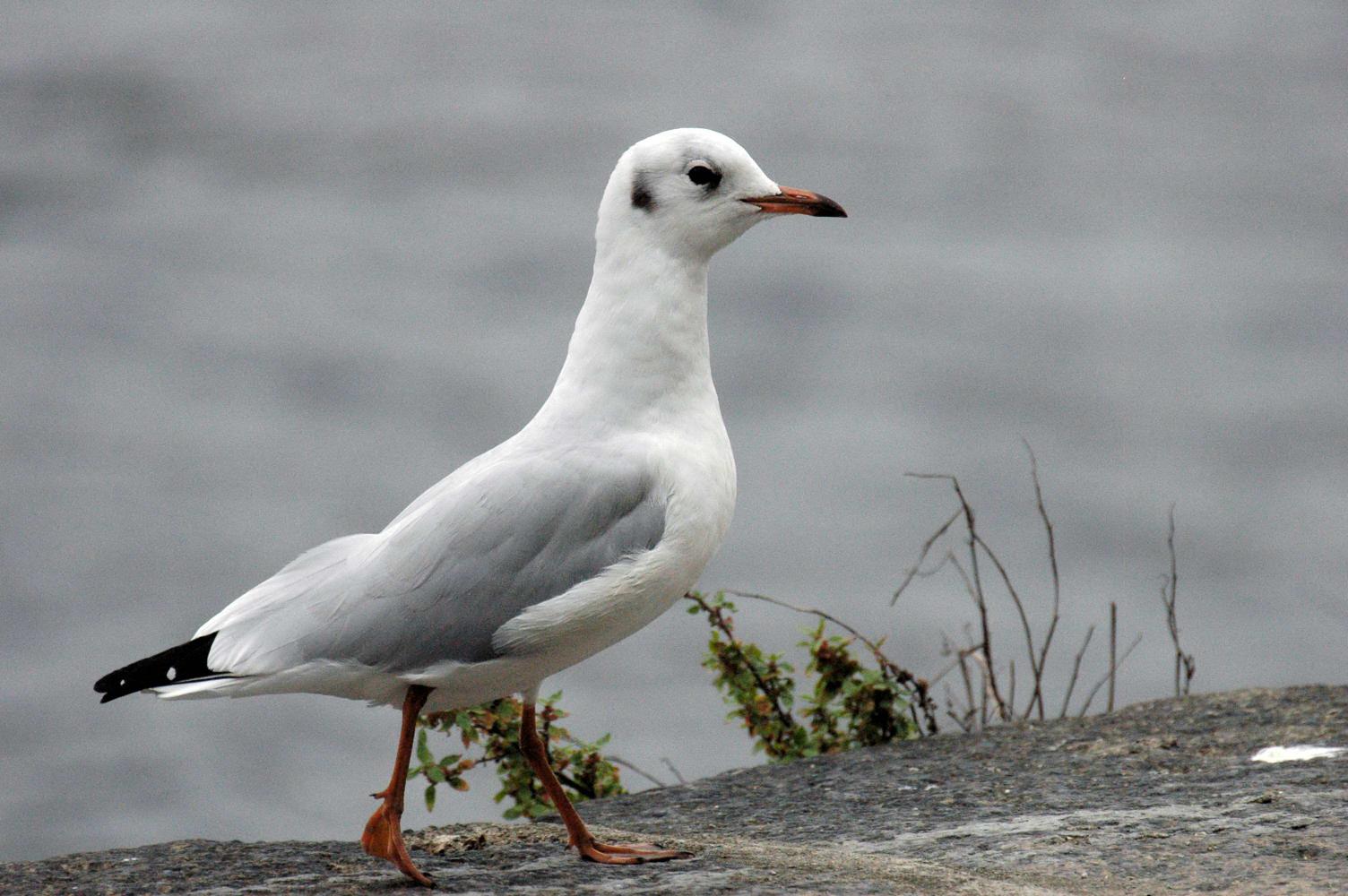
All the
Black-headed gulls
(2007) Dublin, Ireland • Photo Posted September 8, 2007 • © 2007 Terry Costales 
#20070908.jpg Add a comment or report a mistake
|
|
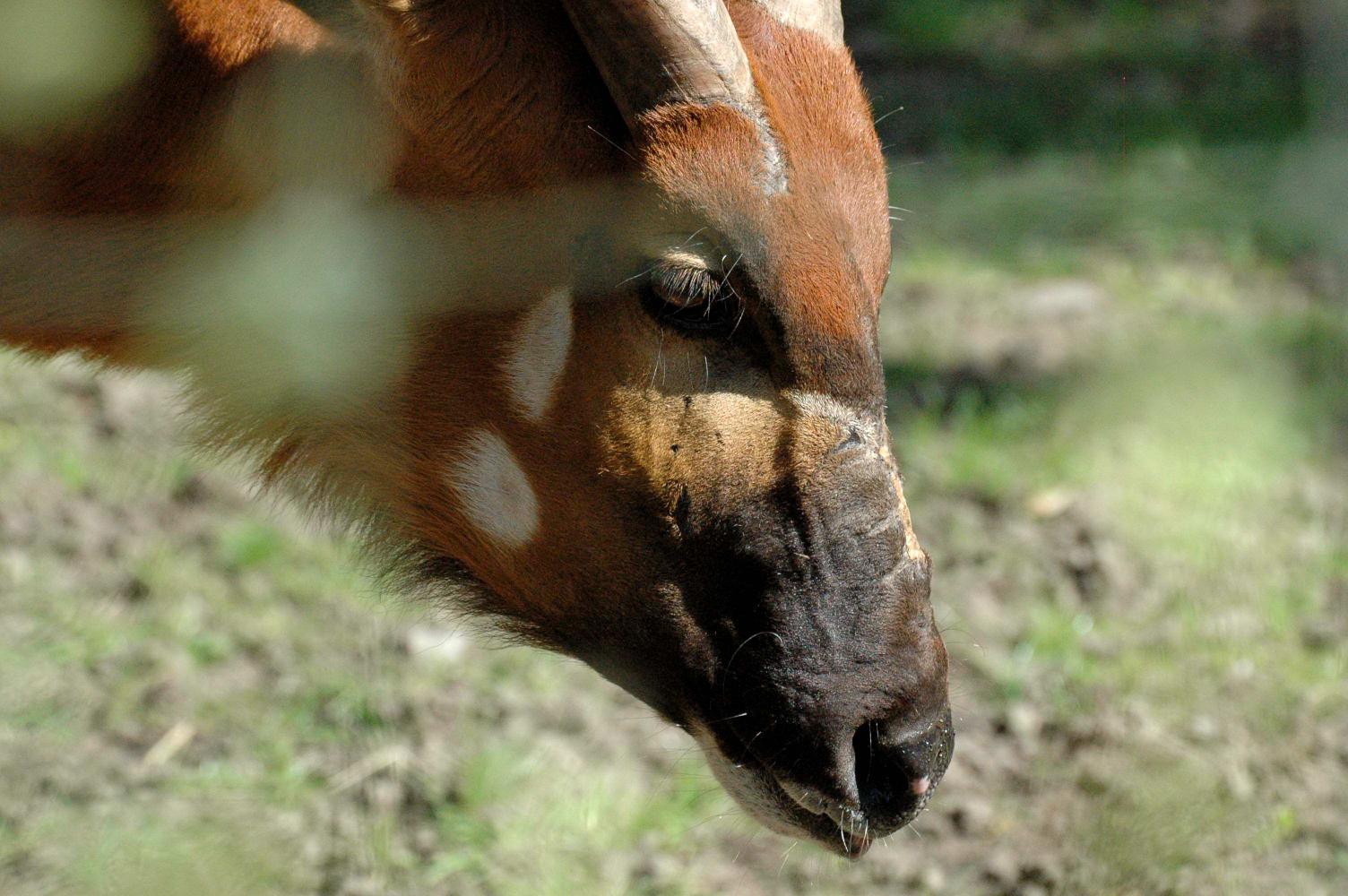
It was difficult to get a shot through the fence of the
Bongo
(2007) Dublin Zoo, Dublin, Ireland • Photo Posted September 9, 2007 • © 2007 Terry Costales 
#20070909.jpg Add a comment or report a mistake
|
|
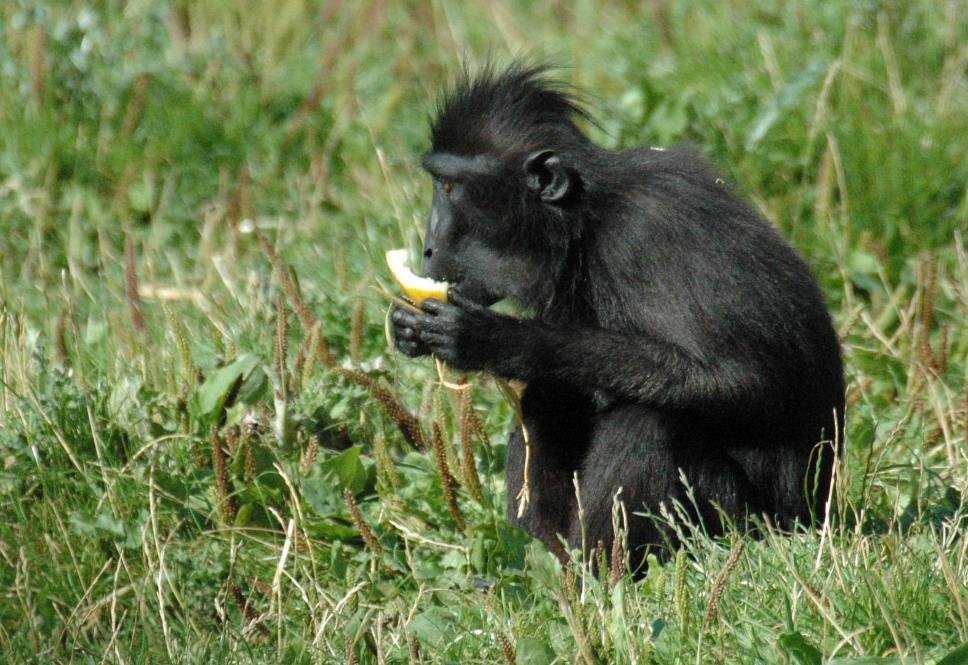 Monkeys and apes aren't my favorite animals but this guy looked interesting. Cool hairdo.
(2007) Dublin Zoo, Dublin, Ireland • Photo Posted September 10, 2007 • © 2007 Terry Costales 
#20070910.jpg Add a comment or report a mistake
|
|
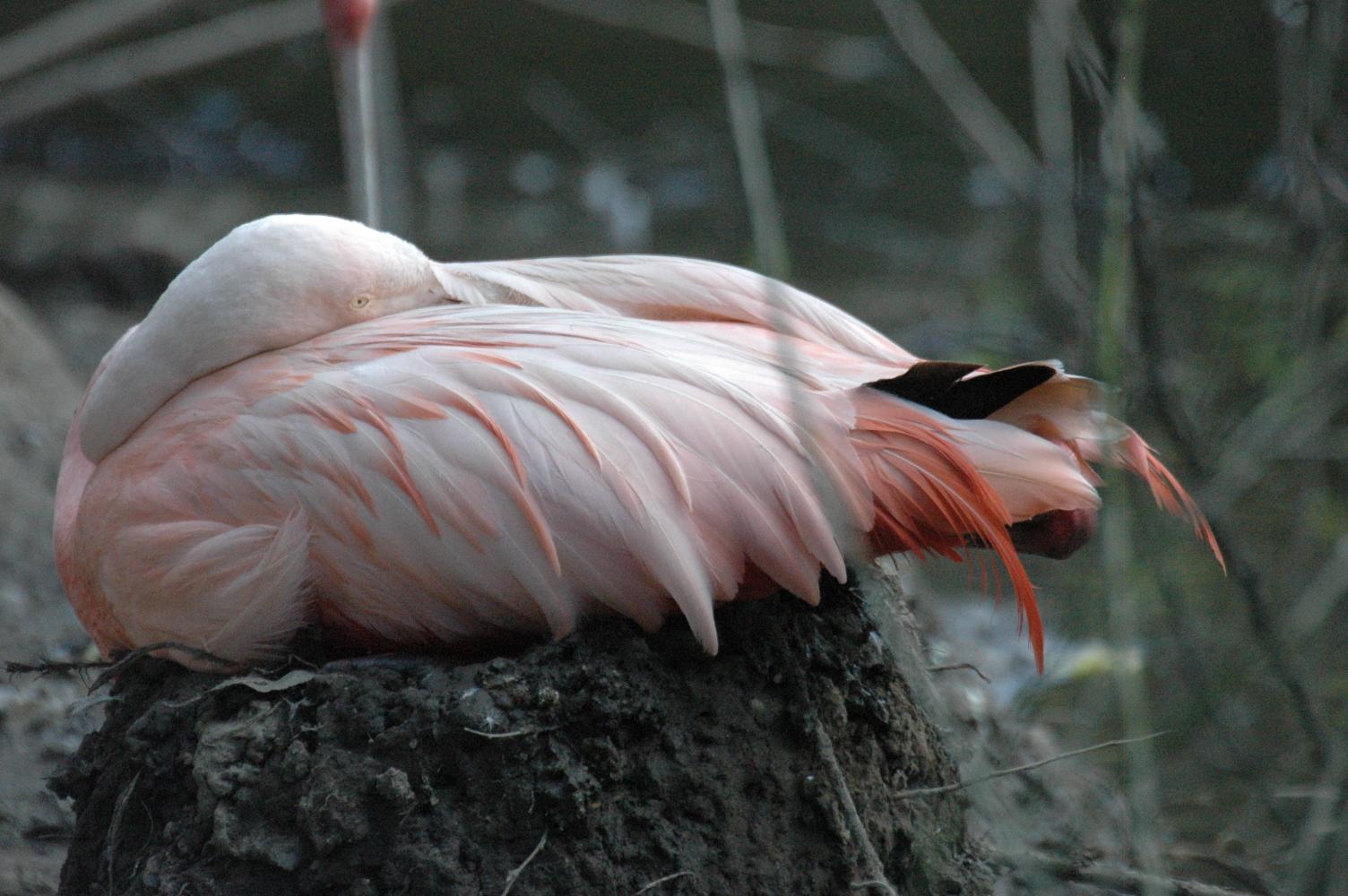 I love this close-up of a flamingo on its nest. I never realized their eyes were so pale.
(2007) Dublin Zoo, Dublin, Ireland • Photo Posted September 11, 2007 • © 2007 Terry Costales 
#20070911.jpg Add a comment or report a mistake
|
|
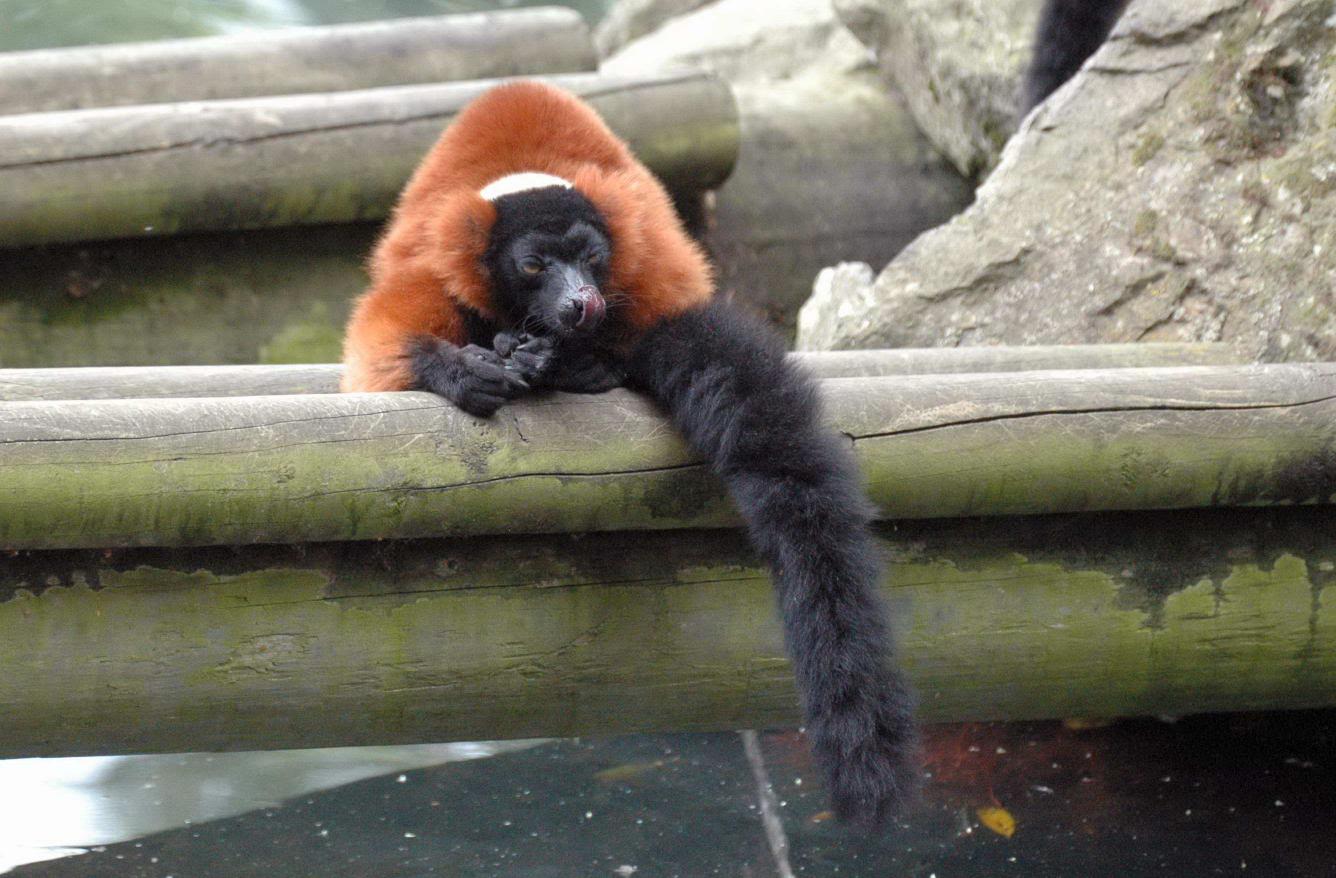 The red-ruffed lemur is a pretty big animal. I love watching them interact with one another. This one looks like he was wringing his paws with glee after stealing a tasty treat.
(2007) Dublin Zoo, Dublin, Ireland • Photo Posted September 12, 2007 • © 2007 Terry Costales 
#20070912.jpg Add a comment or report a mistake
|
|
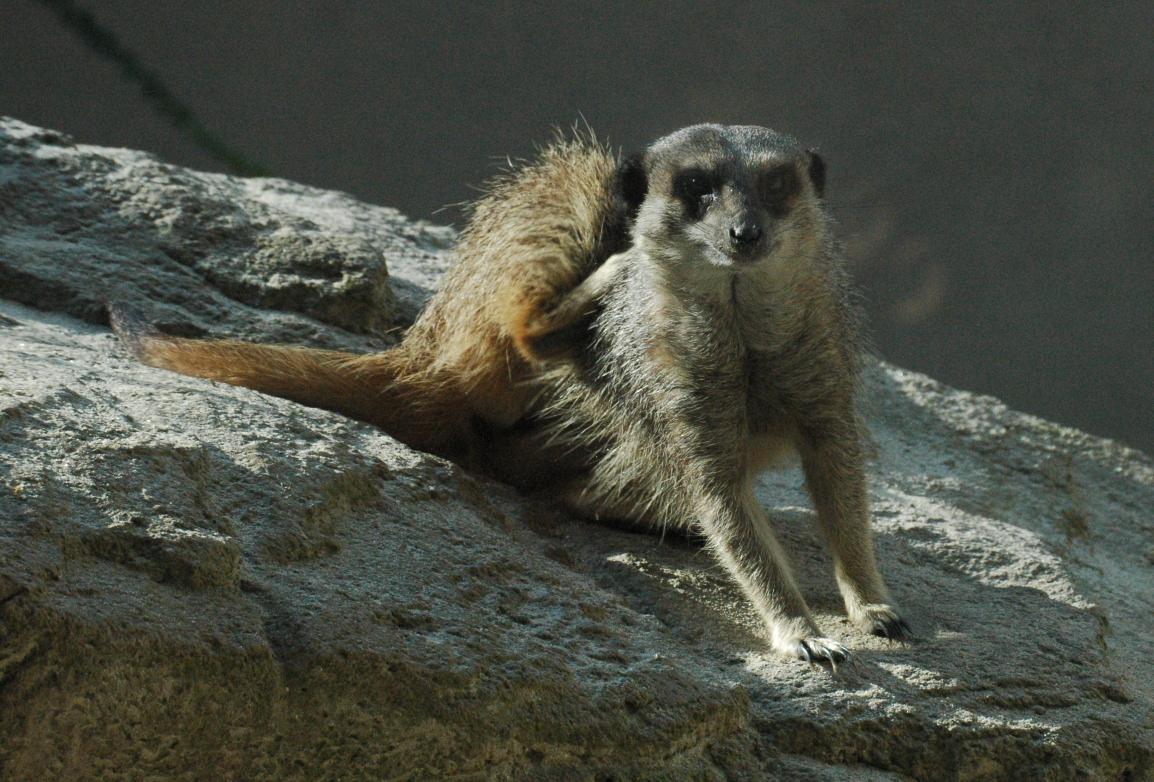
Here is a meerkat
Meerkats have been popular since the movie
"The Lion King"
(2007) Dublin Zoo, Dublin, Ireland • Photo Posted Thursday, September 13, 2007 • © 2007 Terry Costales 
#20070913.jpg Add a comment or report a mistake
|
|
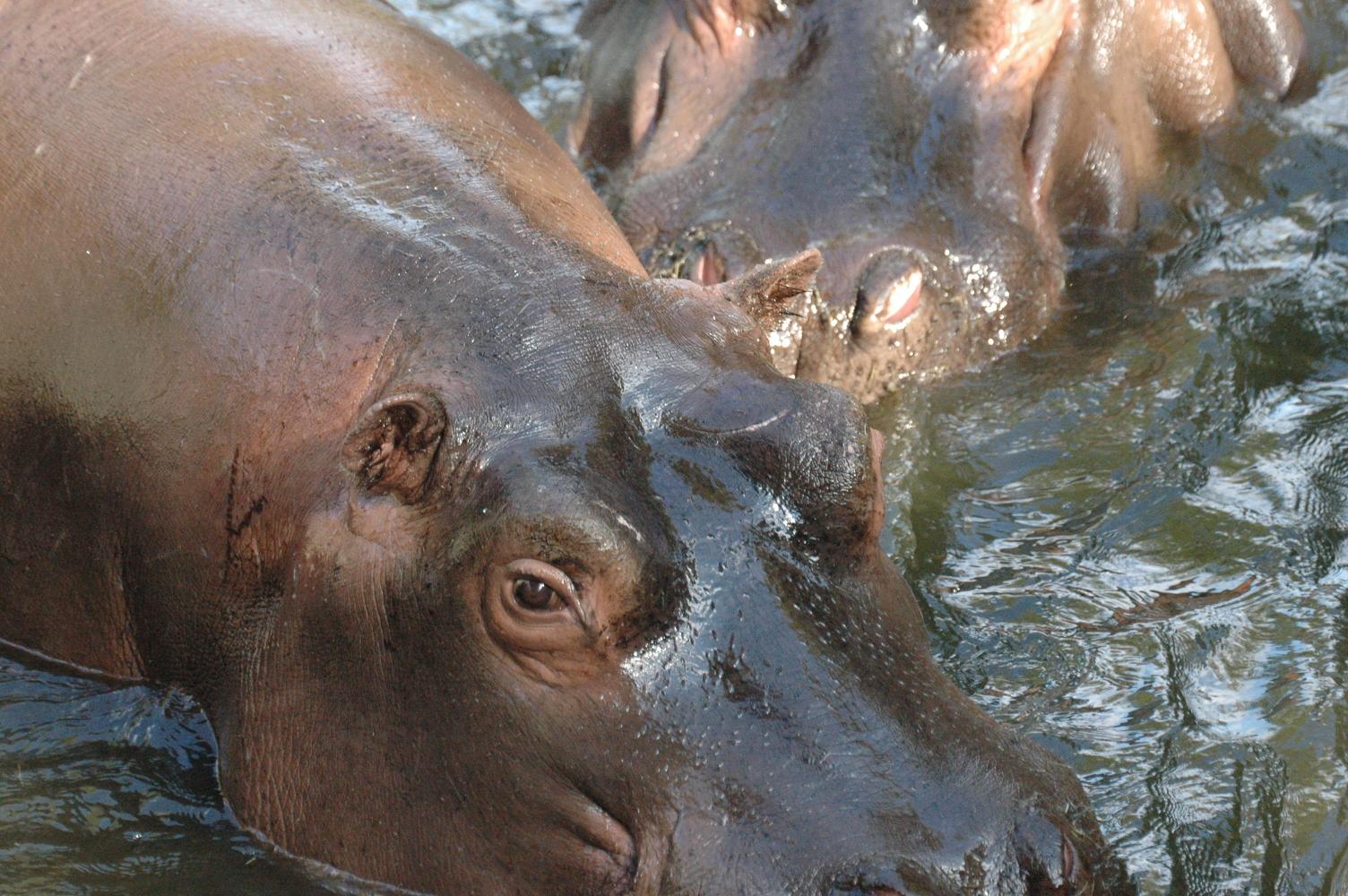
The hippos
(2007) Dublin Zoo, Dublin, Ireland • Photo Posted Friday, September 14, 2007 • © 2007 Terry Costales 
#20070914.jpg Add a comment or report a mistake
|
|
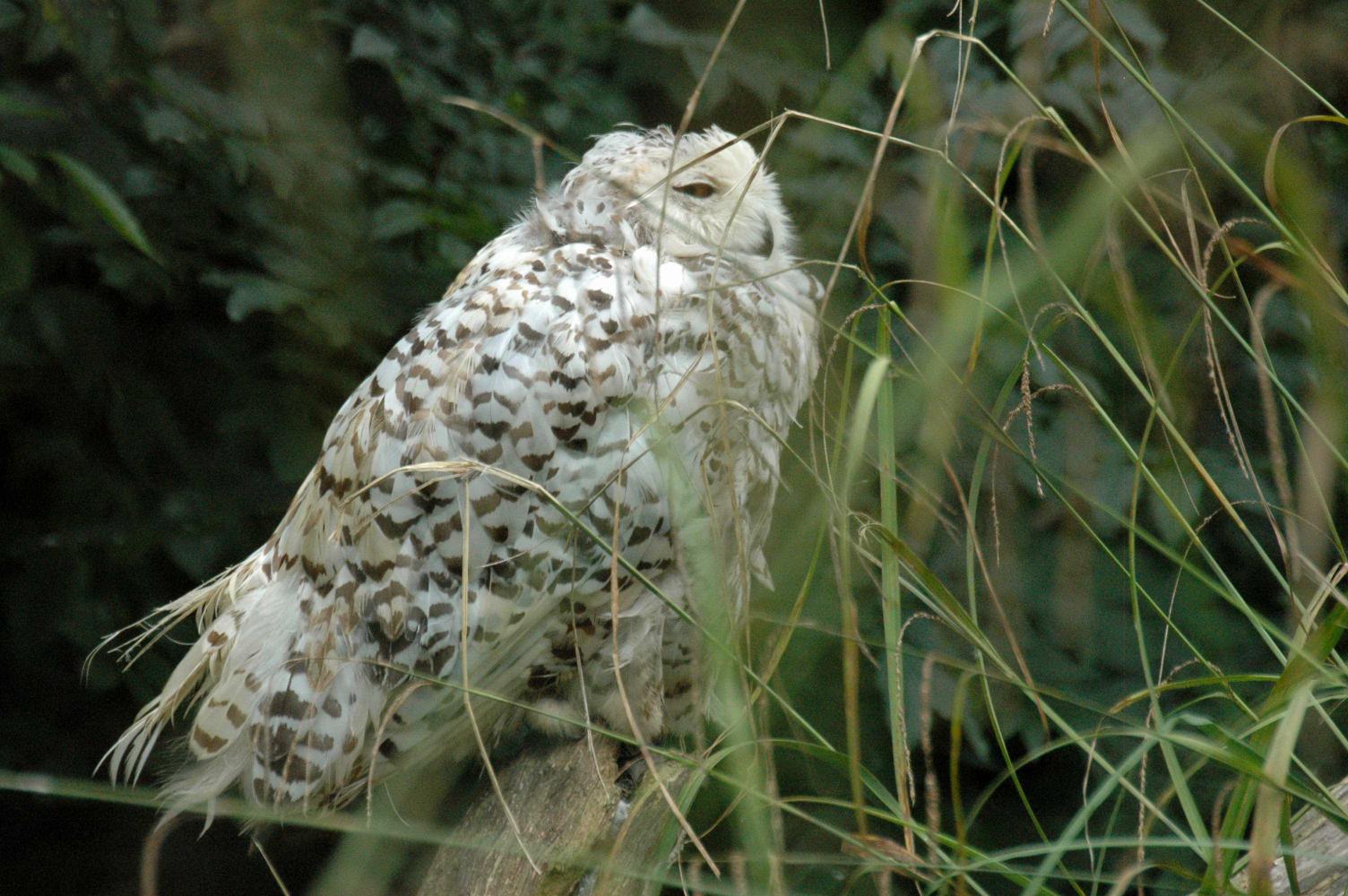
This snowy owl
(2007) Dublin Zoo • Photo Posted Saturday, September 15, 2007 • © 2007 Terry Costales 
#20070915.jpg Add a comment or report a mistake
|
|
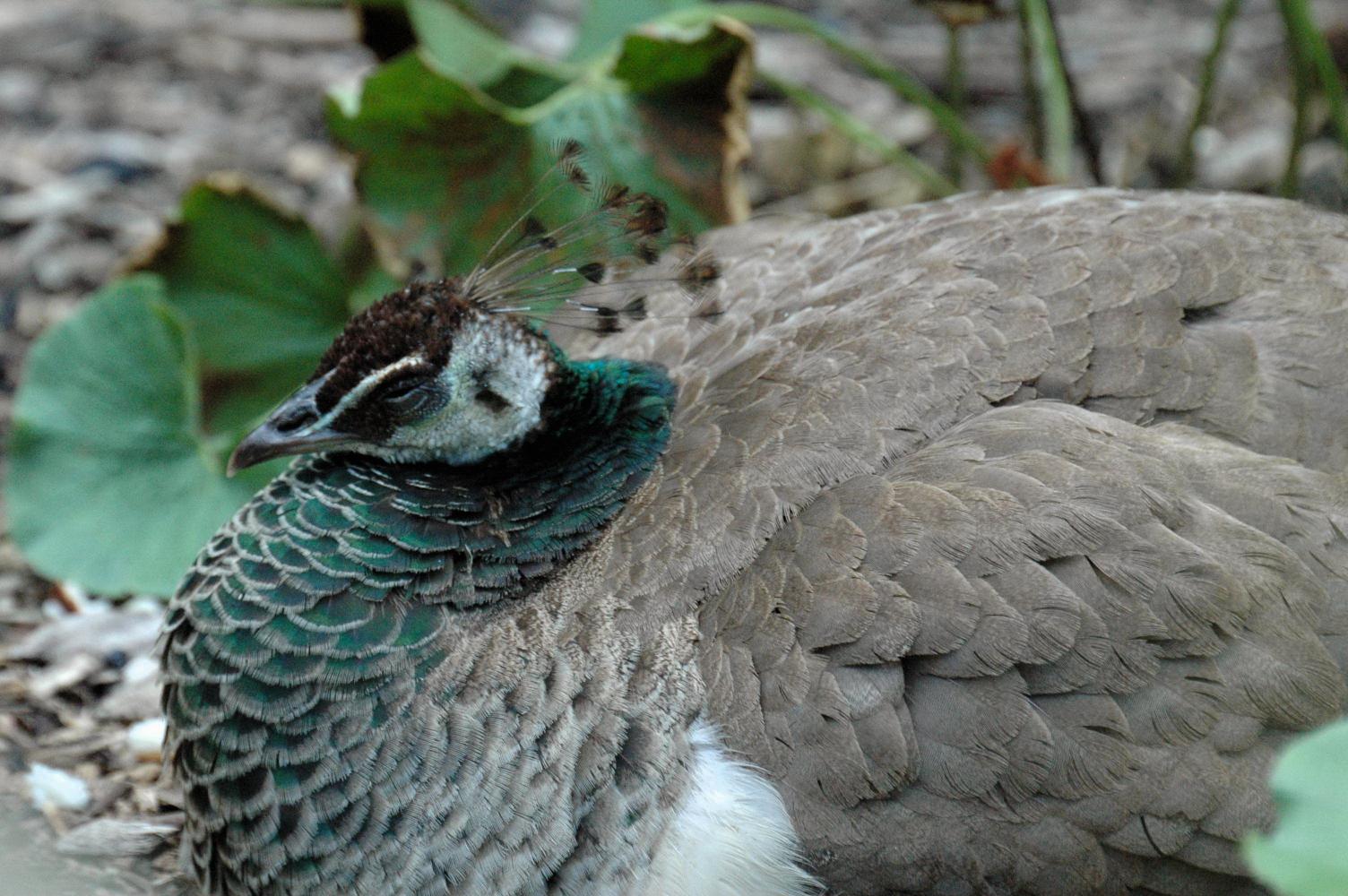
This female
peafowl
(2007) Dublin Zoo, Dublin, Ireland • Photo Posted Sunday, September 16, 2007 • © 2007 Terry Costales 
#20070916.jpg Add a comment or report a mistake
|
|
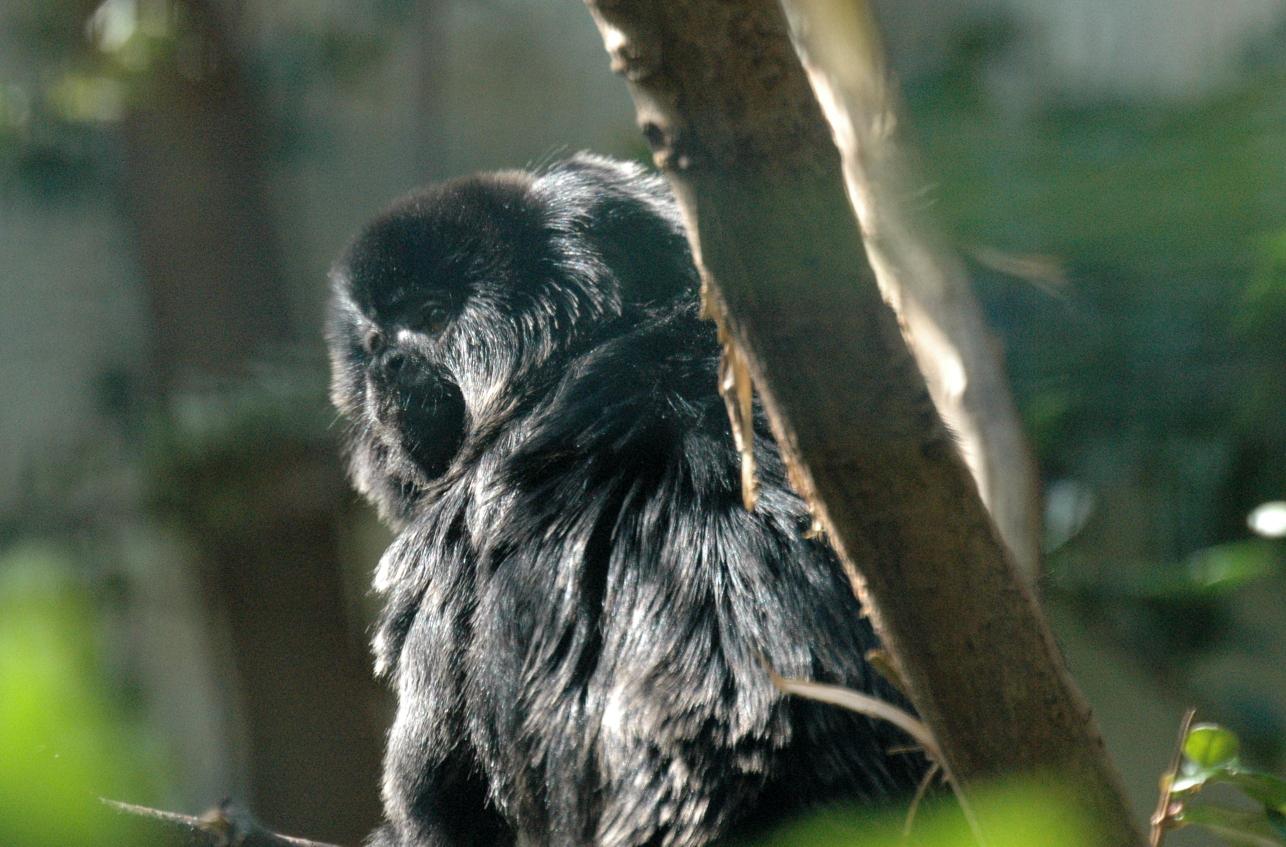 As I have mentioned before, monkeys are not my favorite animals. That said however, this guy was little, cute and the afternoon sun made for a shot I couldn't resist.
Goeldi's Monkeys
(2007) Dublin Zoo, Dublin, Ireland • Photo Posted Tuesday, September 18, 2007 • © 2007 Terry Costales 
#20070918.jpg Add a comment or report a mistake
|
|
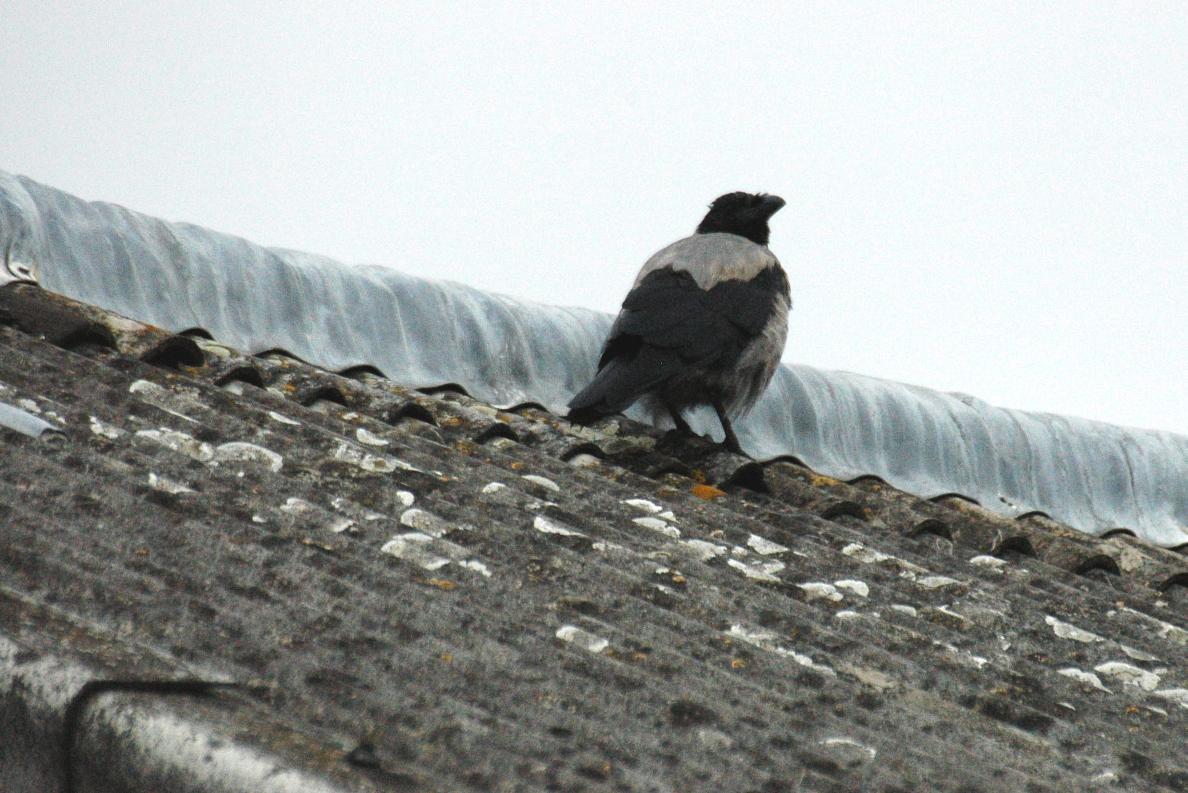
I had never seen this kind of crow
(2007) Quay, Dublin, Ireland • Photo Posted Thursday, September 27, 2007 • © 2007 Terry Costales 
#20070927.jpg Add a comment or report a mistake
|
|
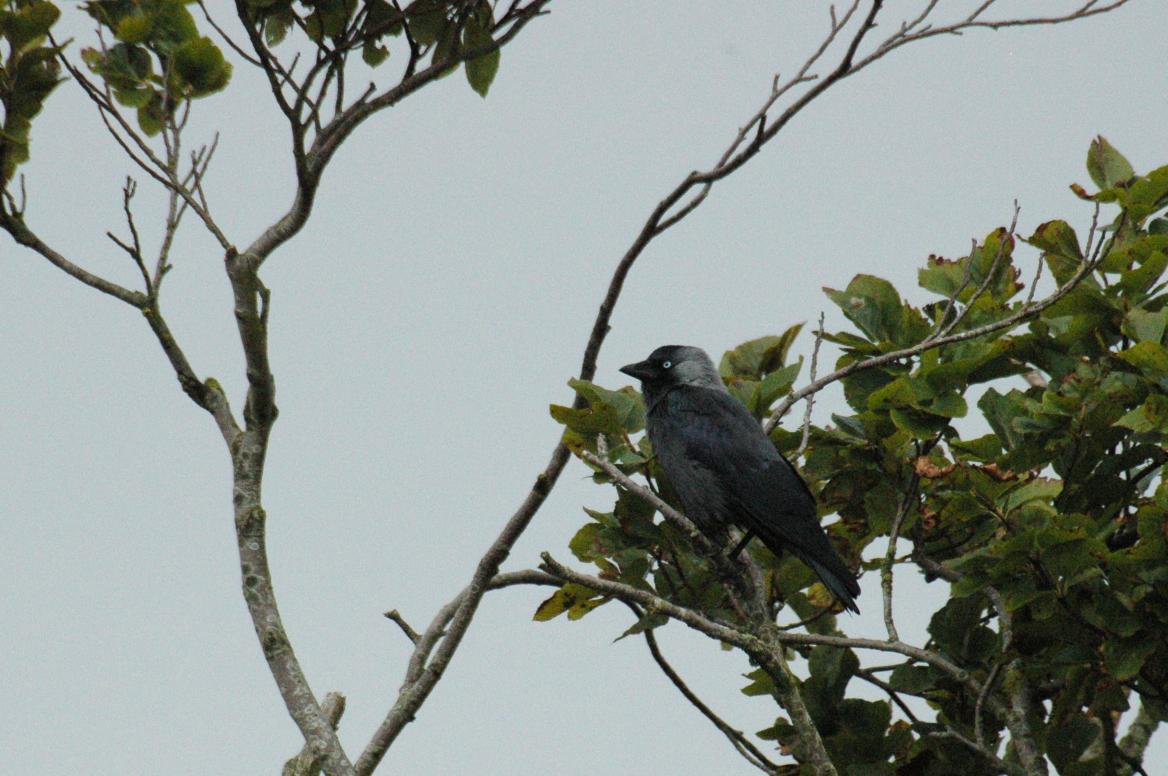
The Jackdaw
(2007) Belfast, Northern Ireland • Photo Posted Friday, September 28, 2007 • © 2007 Terry Costales 
#20070928.jpg Add a comment or report a mistake
|
|
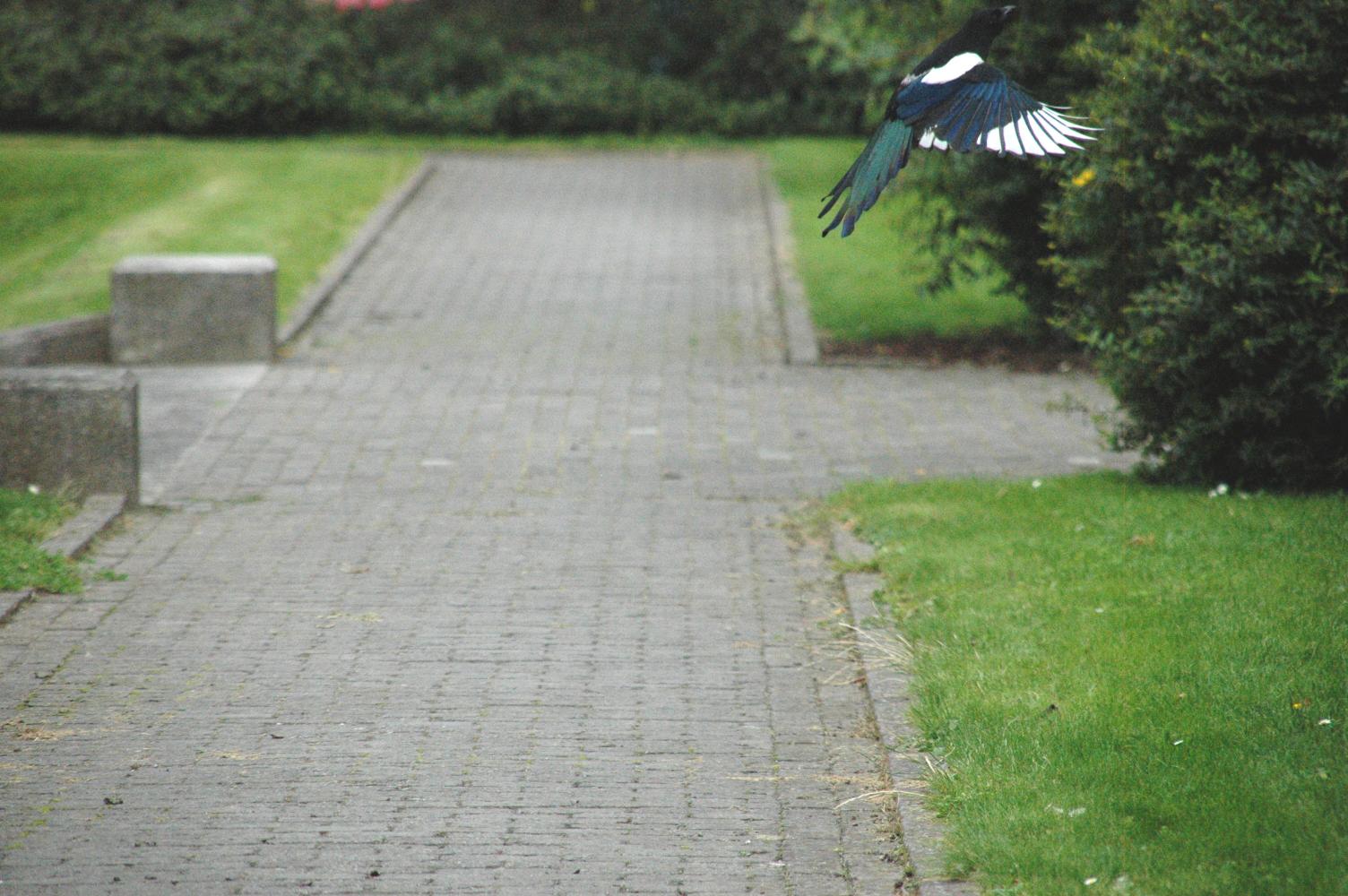
Flying shots are hard to get.
The bird
(2007) Dublin, Ireland • Photo Posted Saturday, September 29, 2007 • © 2007 Terry Costales 
#20070929.jpg Add a comment or report a mistake
|
|
 What a face. A puppy and a kitten sleeping together in a basket couldn't be cuter than this!
Visit the San Francisco Zoo
(2007) San Francisco Zoo, SF, California • Photo Posted Sunday, September 30, 2007 • © 2007 Terry Costales 
#20070930.jpg Add a comment or report a mistake
|
|
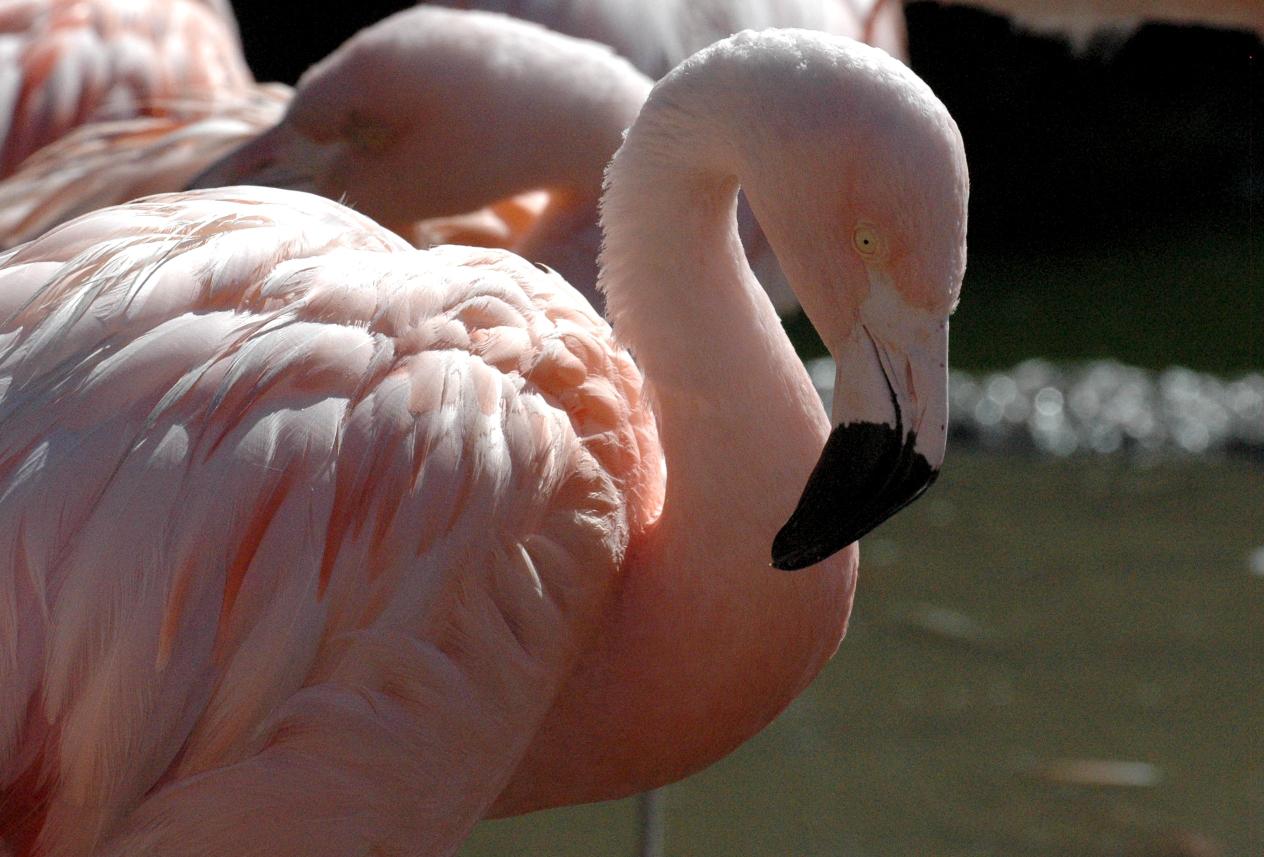
The flamingos
(2007) San Francisco Zoo, SF, California • Photo Posted Monday, October 1, 2007 • © 2007 Terry Costales 
#20071001.jpg Add a comment or report a mistake
|
|
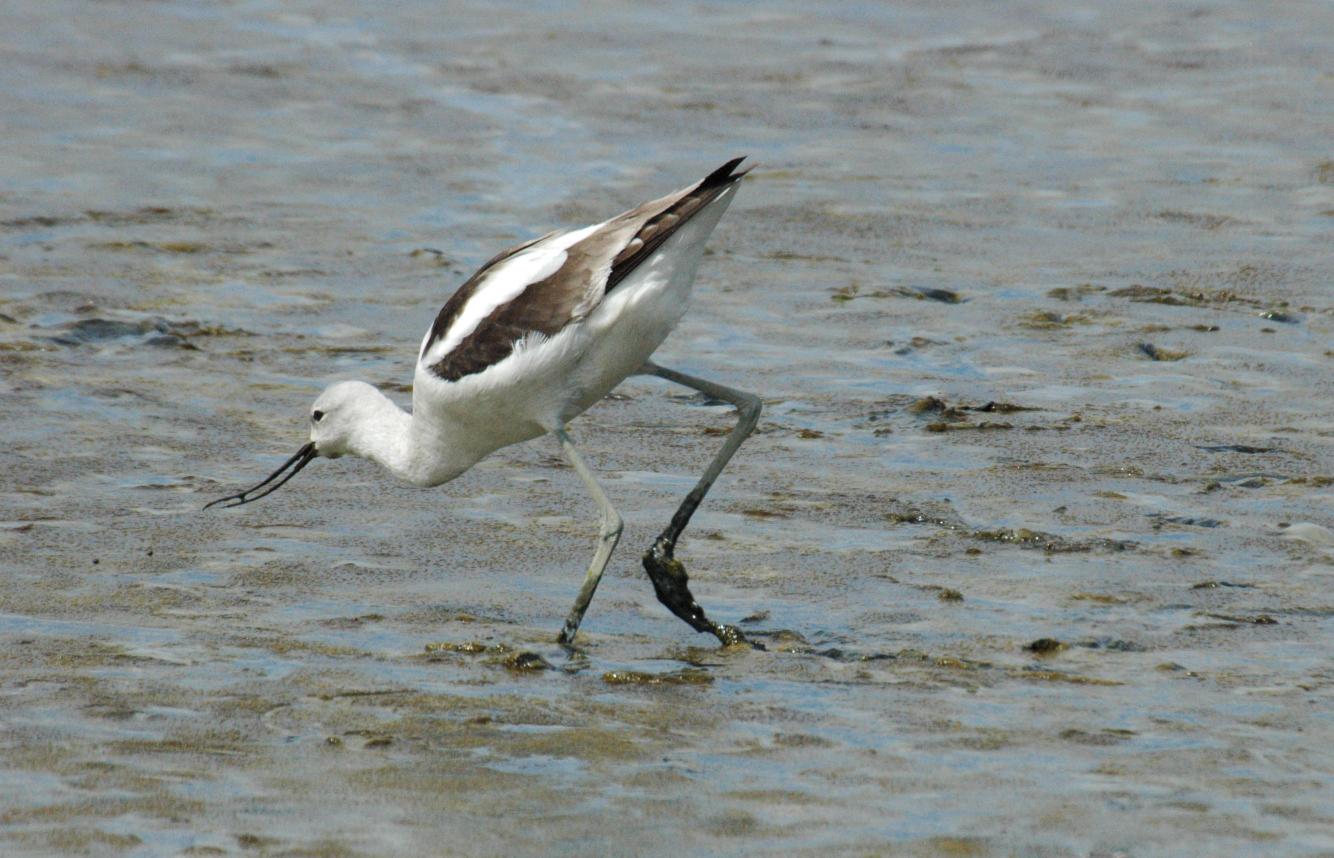 This photo was taken late March of this year and many birds were still in just black and white. For courting and breeding the necks and chest acquire a rusty or tan color. They really seem to enjoy their mud-flats.

#20070519.jpg Add a comment or report a mistake
|
|
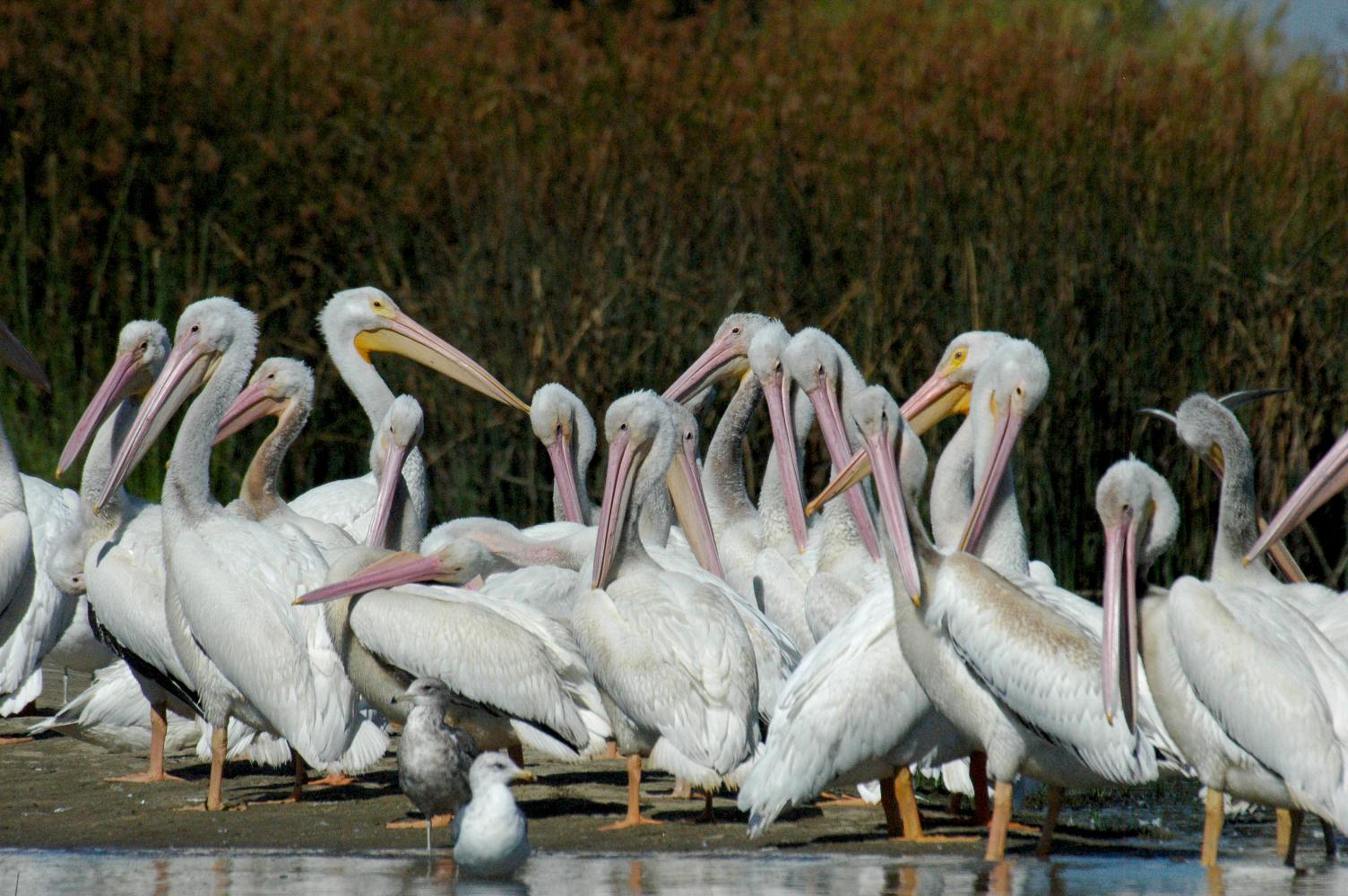 Taking photos from a boat was a new experience. I was able to get much closer to this flock of Pelicans before they took flight. These appear to be Australian Pelicans because of the pink bills. Or do American White Pelicans have pink bills in the winter? Further research needed.
(2007) Delta waters near Oakley, California • Photo Posted Tuesday, October 9, 2007 • © 2007 Terry Costales 
#20071009.jpg Add a comment or report a mistake
|
|
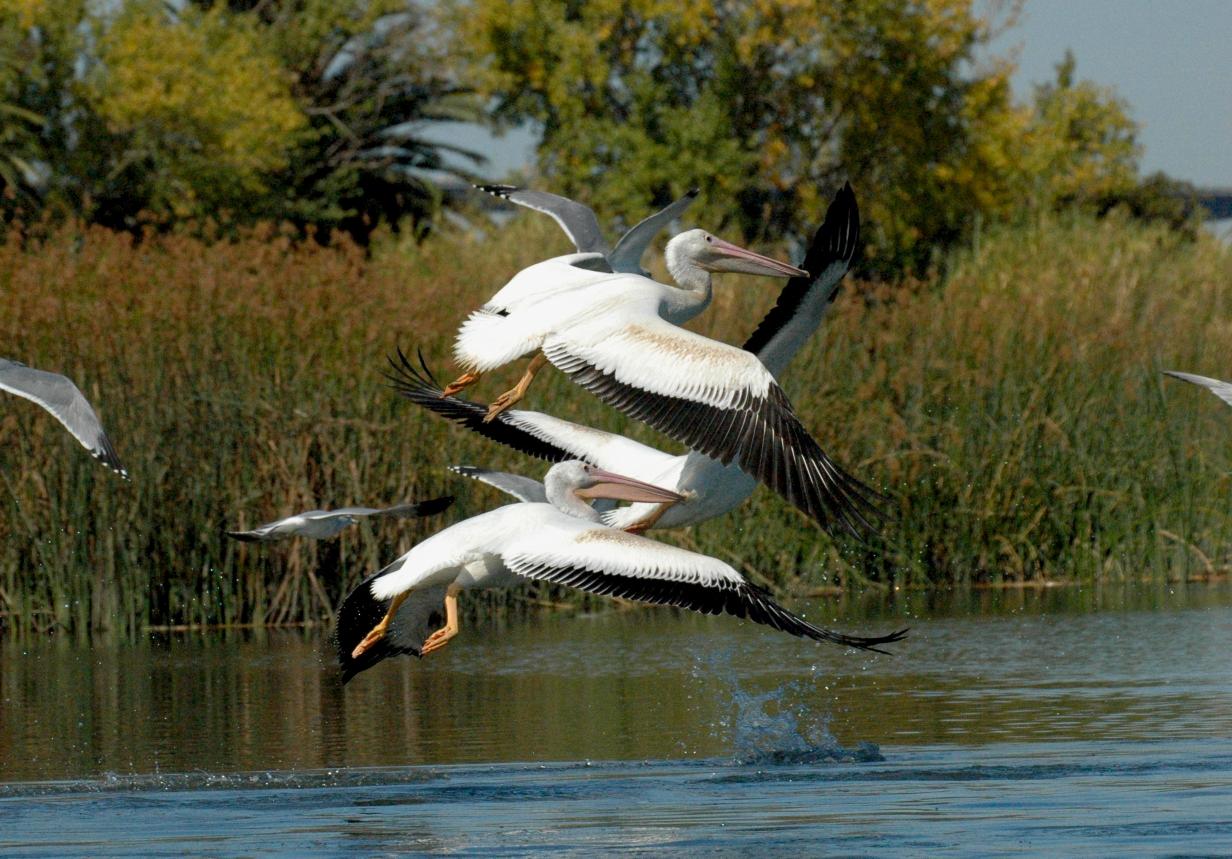
Yesterday I thought these birds might be Australian Pelicans
I'm glad that's settled.
(2007) Delta waters near Oakley, California • Photo Posted Wednesday, October 10, 2007 • © 2007 Terry Costales 
#20071010.jpg Add a comment or report a mistake
|
|
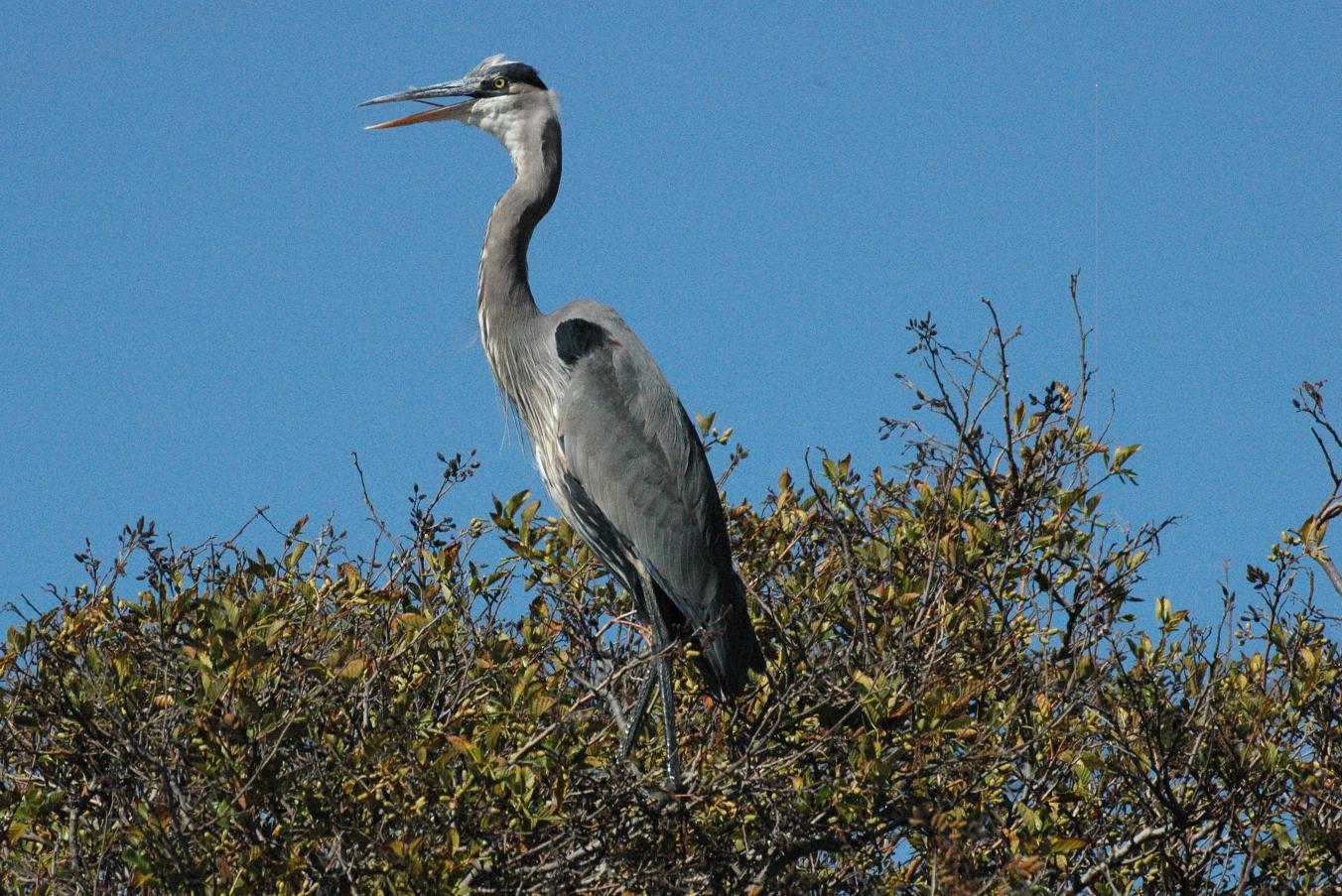
I went out on my brother's boat last Monday and saw many
Great Blue Herons
(2007)Delta waters near Oakley, California • Photo Posted Thursday, October 11, 2007 • © 2007 Terry Costales 
#20071011.jpg Add a comment or report a mistake
|
|
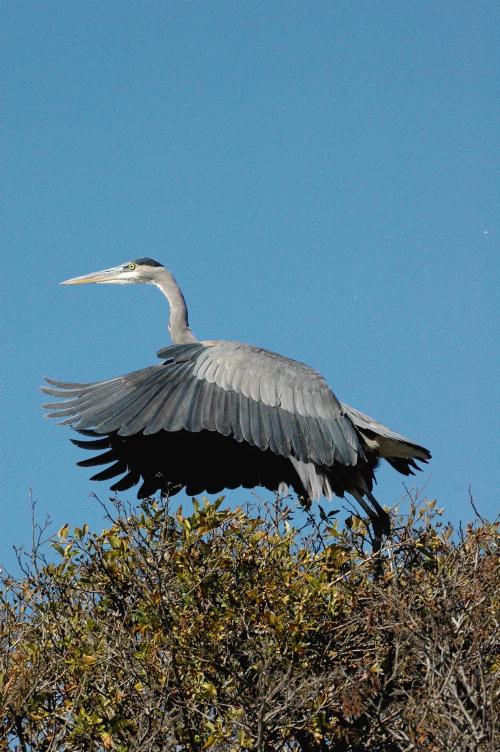 This is a photo of the heron taking off as the boat got too close for comfort.
(2007) Delta waters near Oakley, California • Photo Posted Friday, October 12, 2007 • © 2007 Terry Costales 
#20071012.jpg Add a comment or report a mistake
|
|
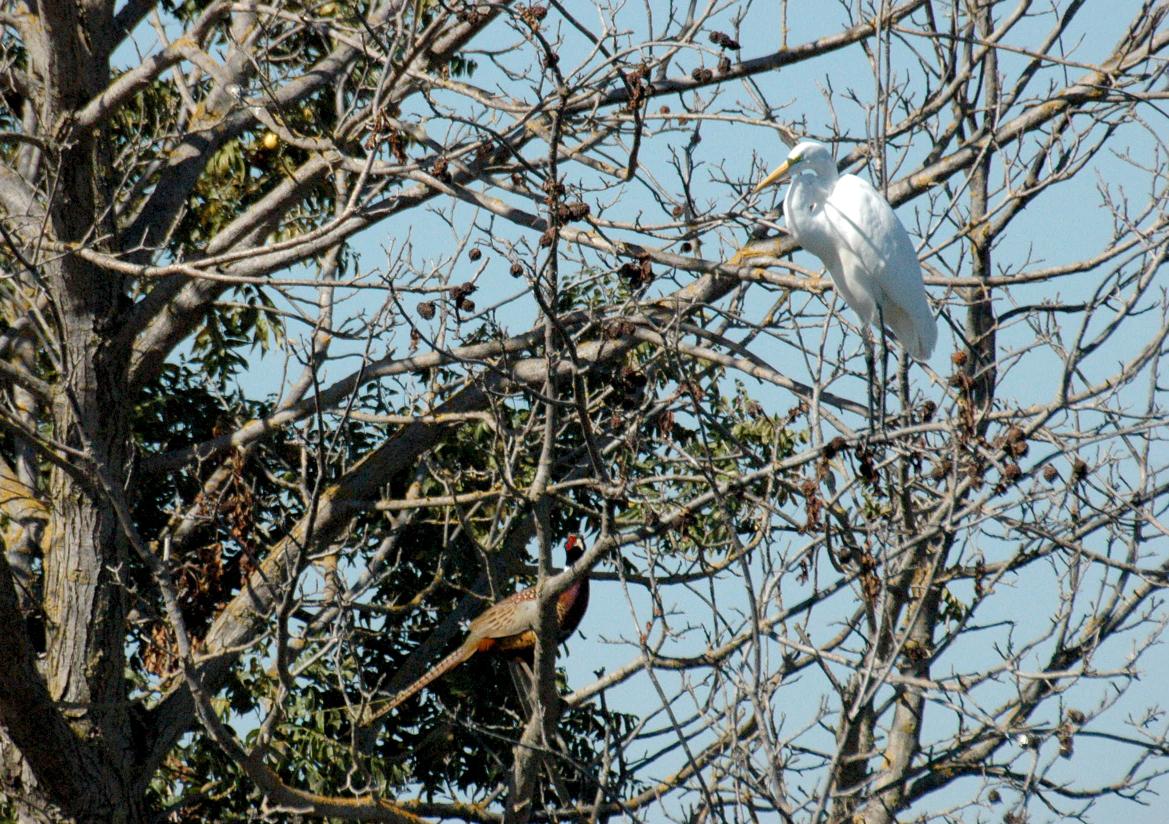 I didn't see a pheasant when I looked at this tree, only the Egret. As the boat drew nearer to the tree the pheasant burst out, startling the egret and me. I tried to get a shot of them as they flew past, but I was much too slow. It wasn't until I looked at the photos at home that I had the pleasure to see I had gotten a shot of the pheasant after all.
(2007) Delta waters near Oakley, California • Photo Posted Saturday, October 13, 2007 • © 2007 Terry Costales 
#20071013.jpg Add a comment or report a mistake
|
|
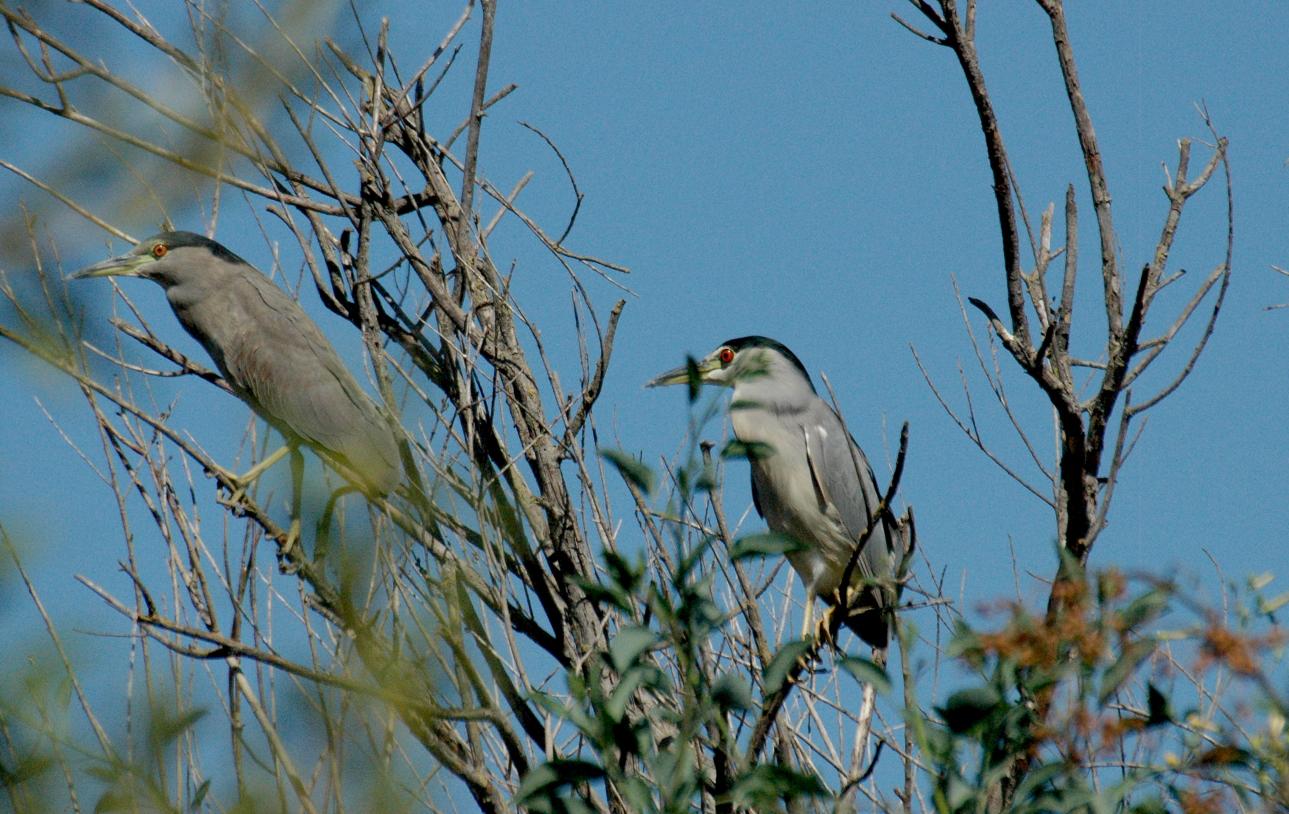 The bird on the left is a young adult who won't achieve the look of the mature bird on its right for another year.
(2007) Delta waters near Oakley, California • Photo Posted Monday, October 15, 2007 • © 2007 Terry Costales 
#20071015.jpg Add a comment or report a mistake
|
|
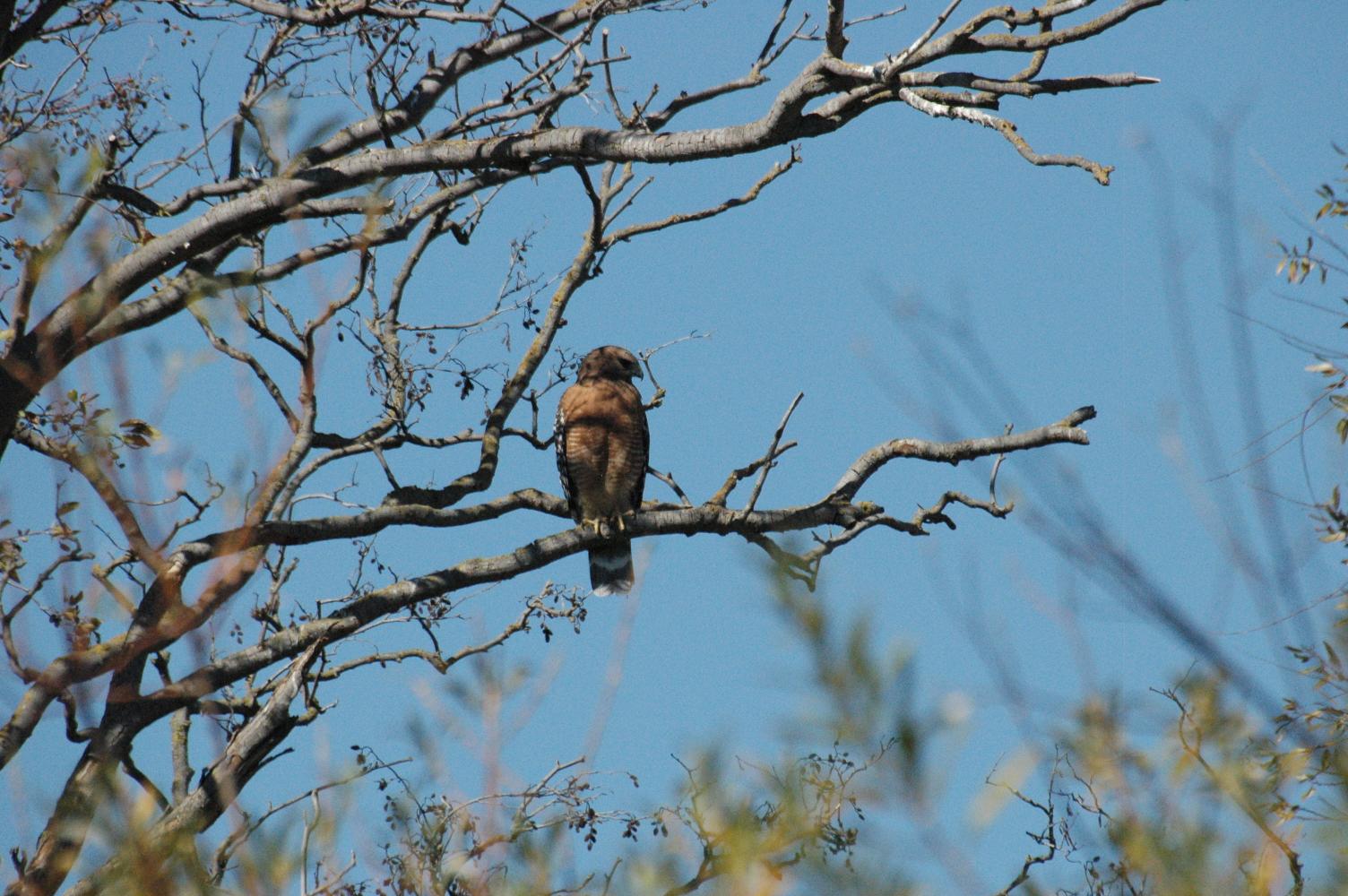 There are many hawks living in the Delta, doing their part to keep the circle of life rolling.
Red-shouldered Hawk 
#20071016.jpg Add a comment or report a mistake
|
|
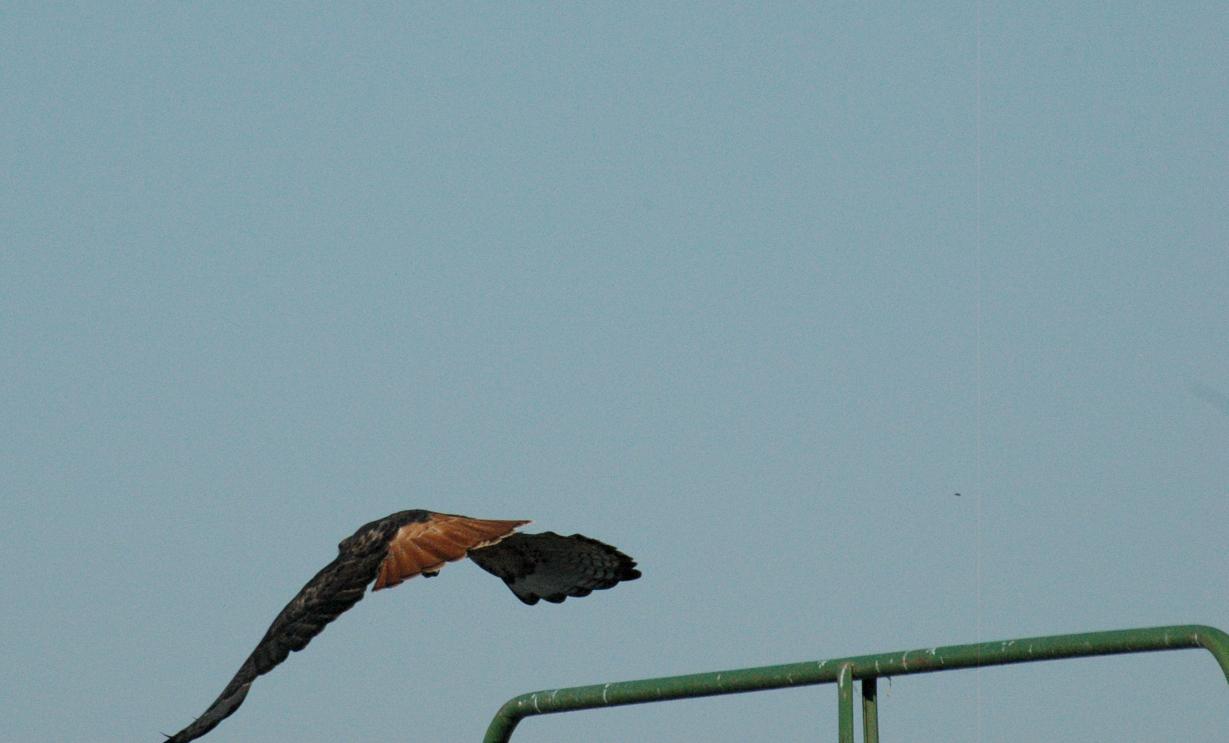 The namesake tail.
(2007) Delta waters near Oakley, California • Photo Posted Wednesday, October 17, 2007 • © 2007 Terry Costales 
#20071017.jpg Add a comment or report a mistake
|
|
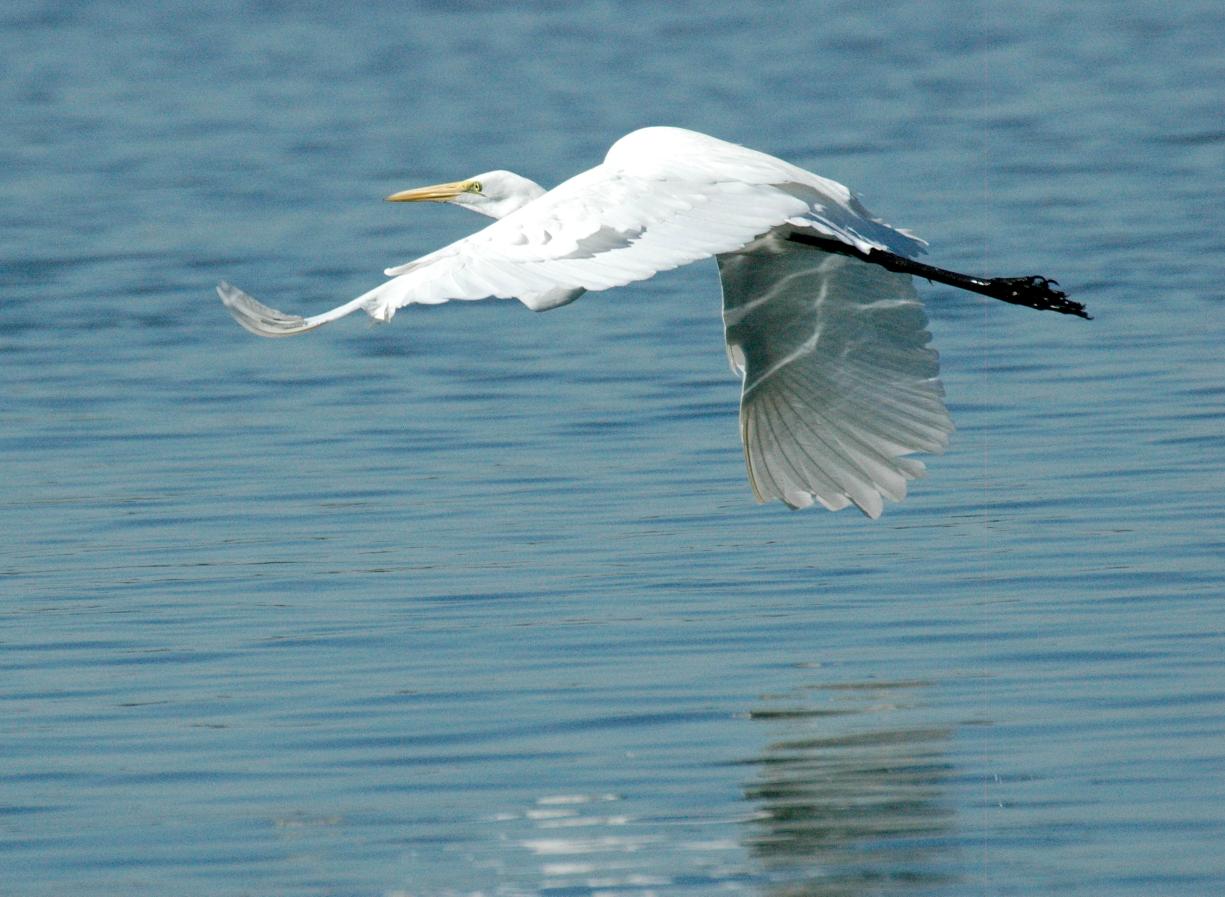 To get a shot of a graceful bird flying is always a coup.
(2007) Delta waters near Oakley, California • Photo Posted Thursday, October 18, 2007 • © 2007 Terry Costales 
#20071018.jpg Add a comment or report a mistake
|
|

Seeing a bright red eye on a bird, to me, is quite startling. Although the heron
(2007) Delta waters near Oakley, California • Photo Posted Saturday, October 20, 2007 • © 2007 Terry Costales 
#20071020.jpg Add a comment or report a mistake
|
|
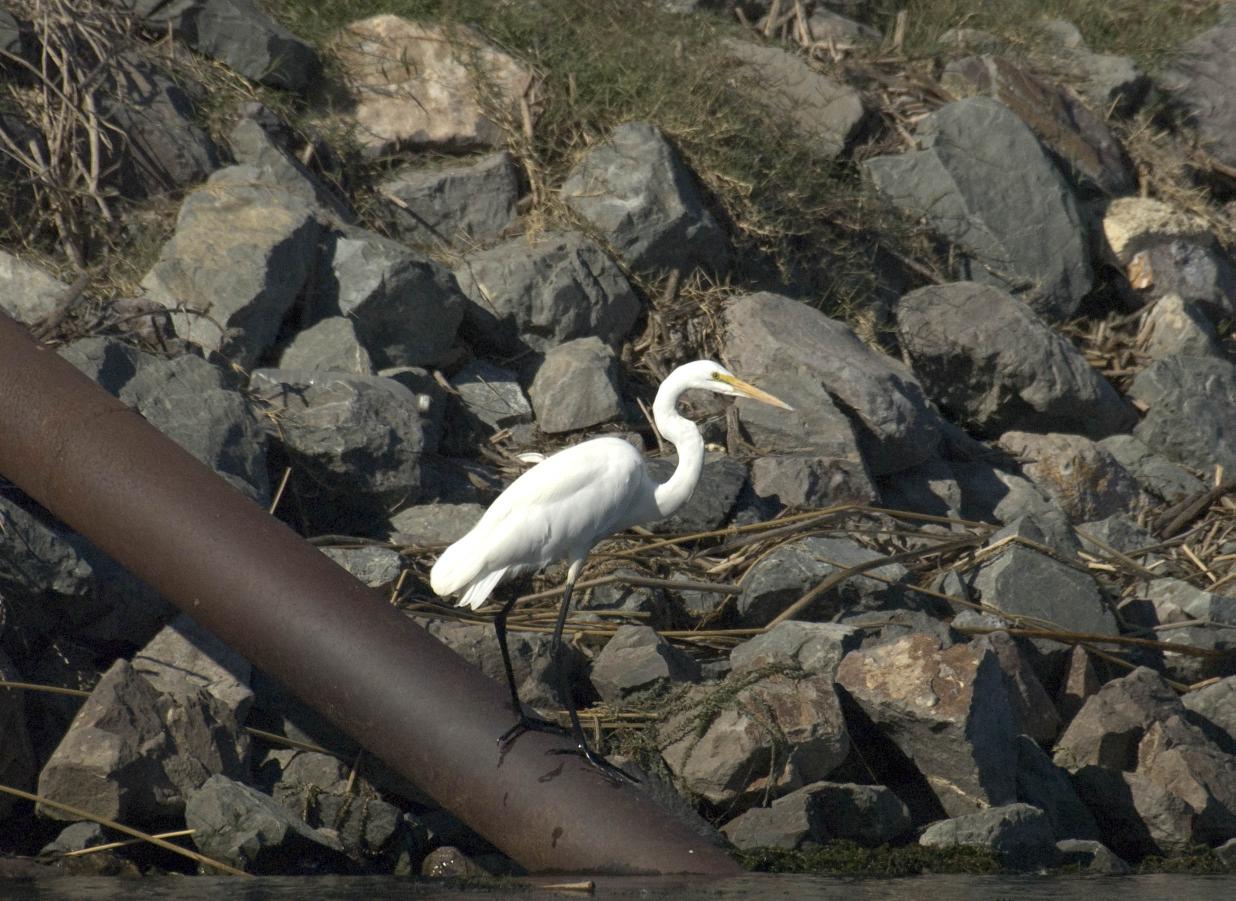 I got this shot just as the egret was landing. Look closely and you can see the feet haven't quite come to rest on the pipe.
(2007) Delta Waters near Oakley, California • Photo Posted Sunday, October 21, 2007 • © 2007 Terry Costales 
#20071021.jpg Add a comment or report a mistake
|
|
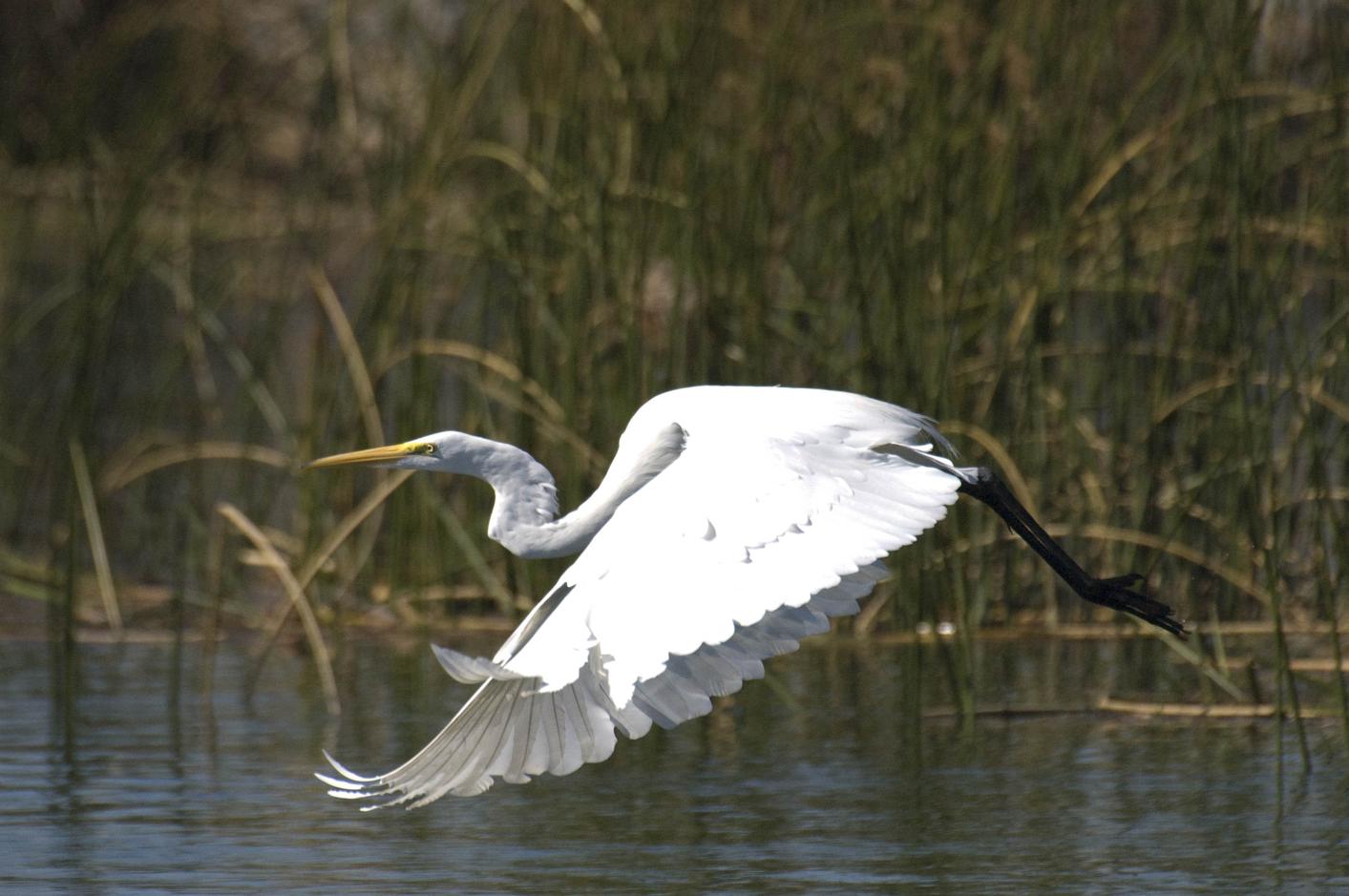 I think I am addicted to taking shots of flying egrets.
(2007) Delta waters near Oakley, California • Photo Posted Monday, October 22, 2007 • © 2007 Terry Costales 
#20071022.jpg Add a comment or report a mistake
|
|
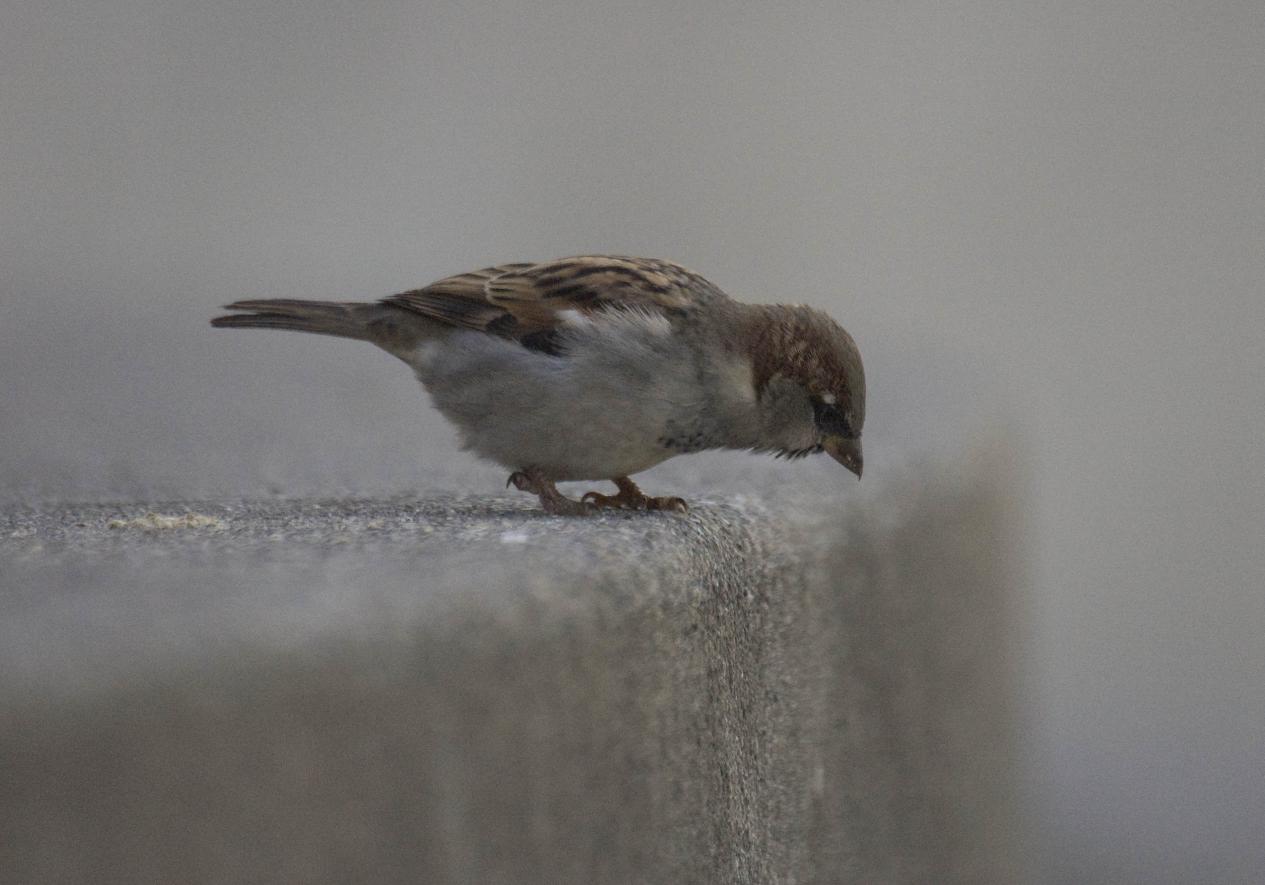 I don't usually photograph English Sparrows because it is common knowledge what this introduced species looks like. I like this shot not so much for the subject, but for the shot itself. The narrow area of focus lends the bird a softer and more delicate appearance.
(2007) Riverfront Park, Spokane, Washington • Photo Posted Tuesday, October 23, 2007 • © 2007 Terry Costales 
#20071023.jpg Add a comment or report a mistake
|
|
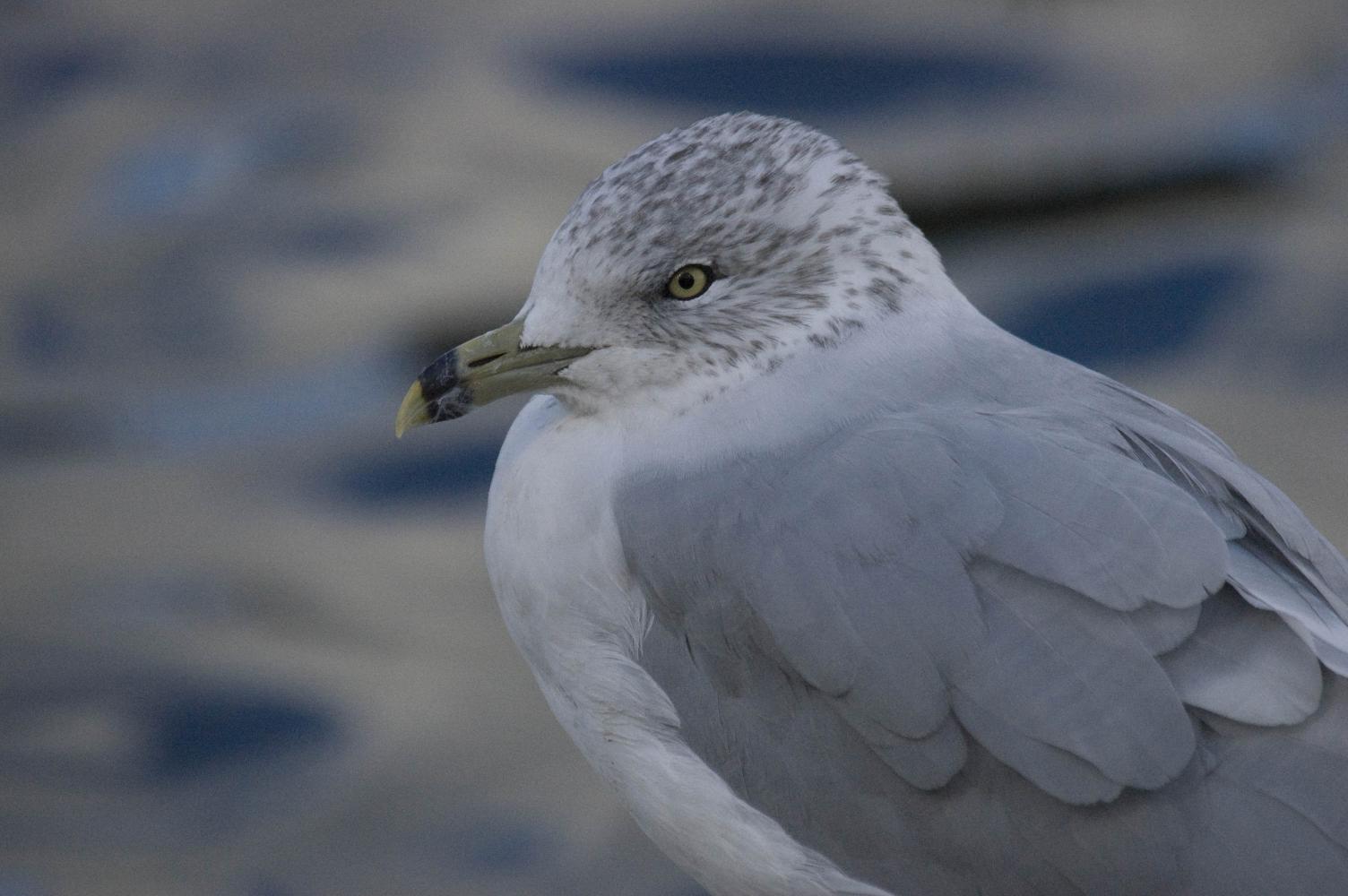
This photo caught a sleepy juvenile
(2007) Riverfront Park, Spokane, Washington • Photo Posted Wednesday, October 24, 2007 • © 2007 Terry Costales 
#20071024.jpg Add a comment or report a mistake
|
|
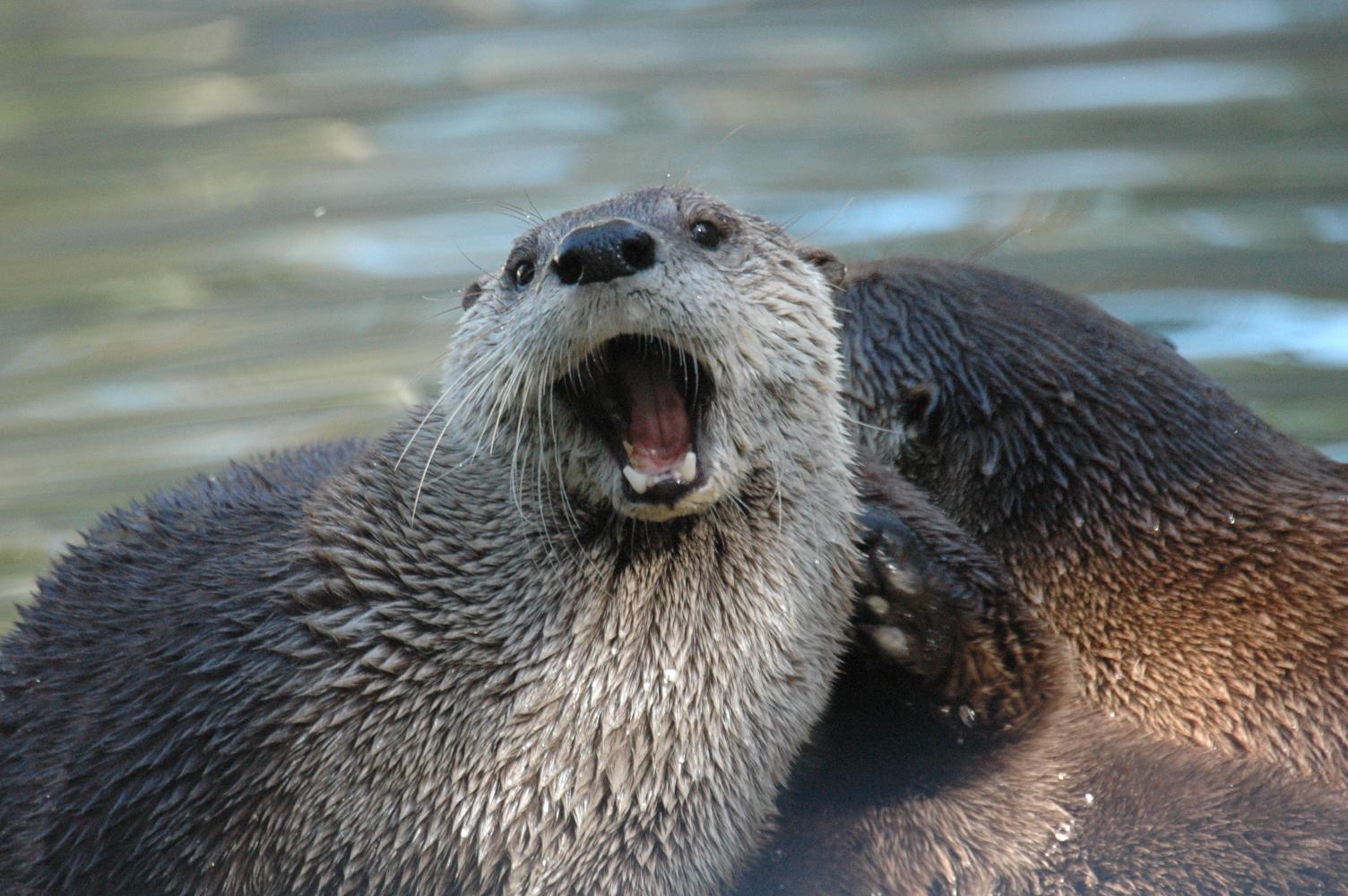
This is a North American River Otter
(2007) San Francisco Zoo, California • Photo Posted Thursday, October 25, 2007 • © 2007 Terry Costales 
#20071025.jpg Add a comment or report a mistake
|
|
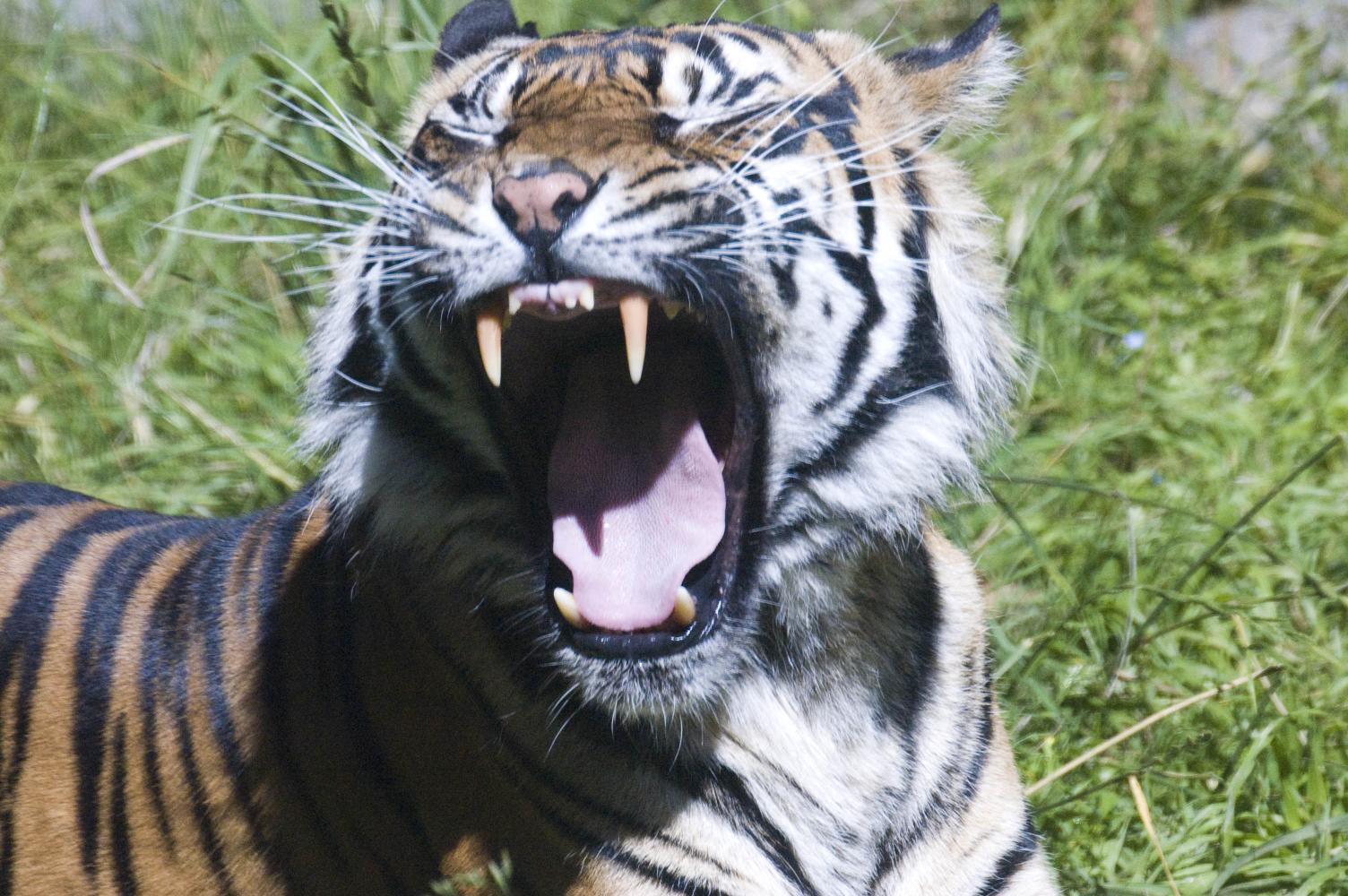
I hate to give away the secret behind this shot but, in actuality, this ferocious tiger
(2007) San Francisco Zoo, California • Photo Posted Friday, October 26, 2007 • © 2007 Terry Costales 
#20071026.jpg Add a comment or report a mistake
|
|
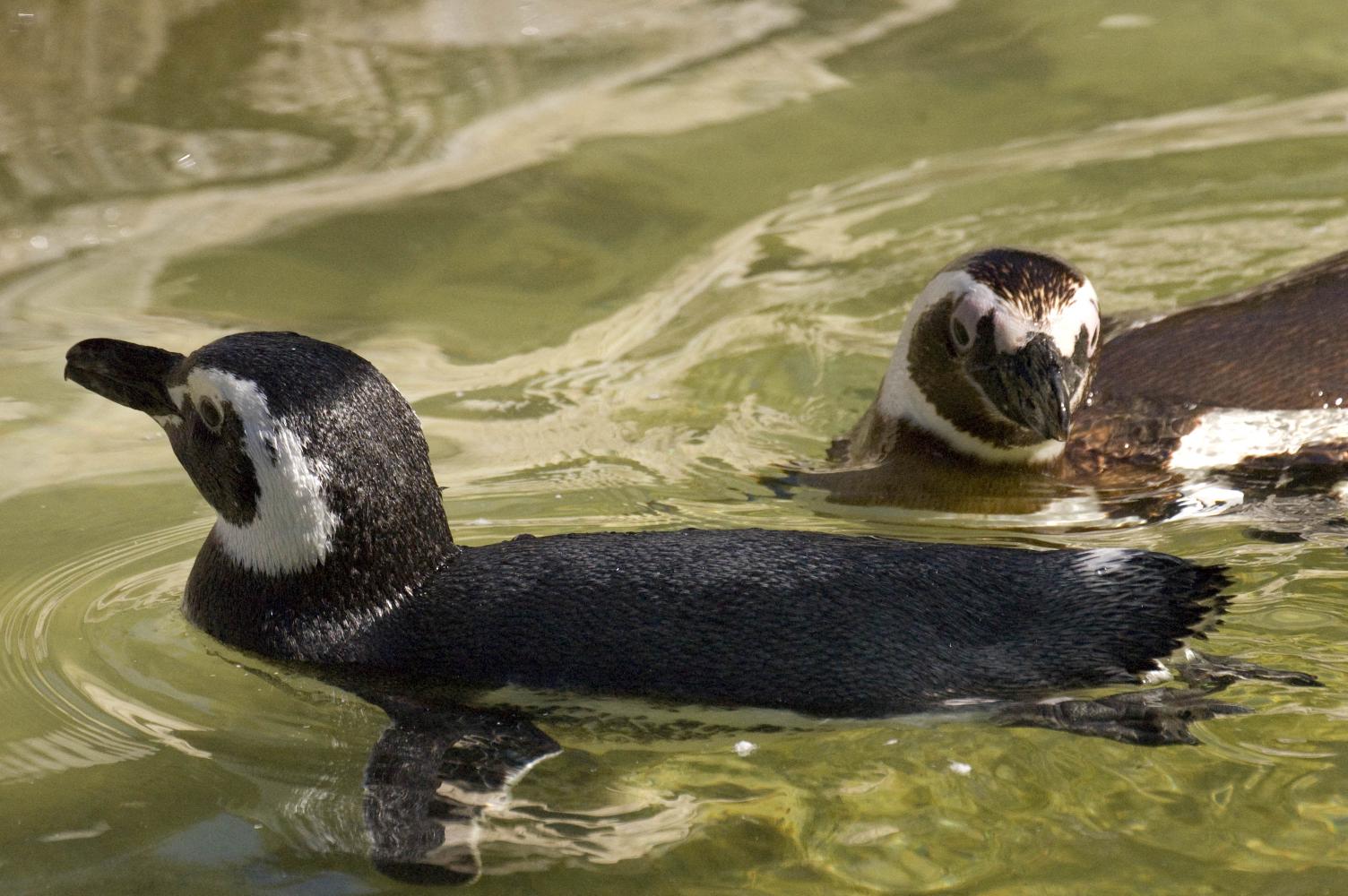
When the brown and white penguin
(2007) San Francisco Zoo, California • Photo Posted Saturday, October 27, 2007 • © 2007 Terry Costales 
#20071027.jpg Add a comment or report a mistake
|
|
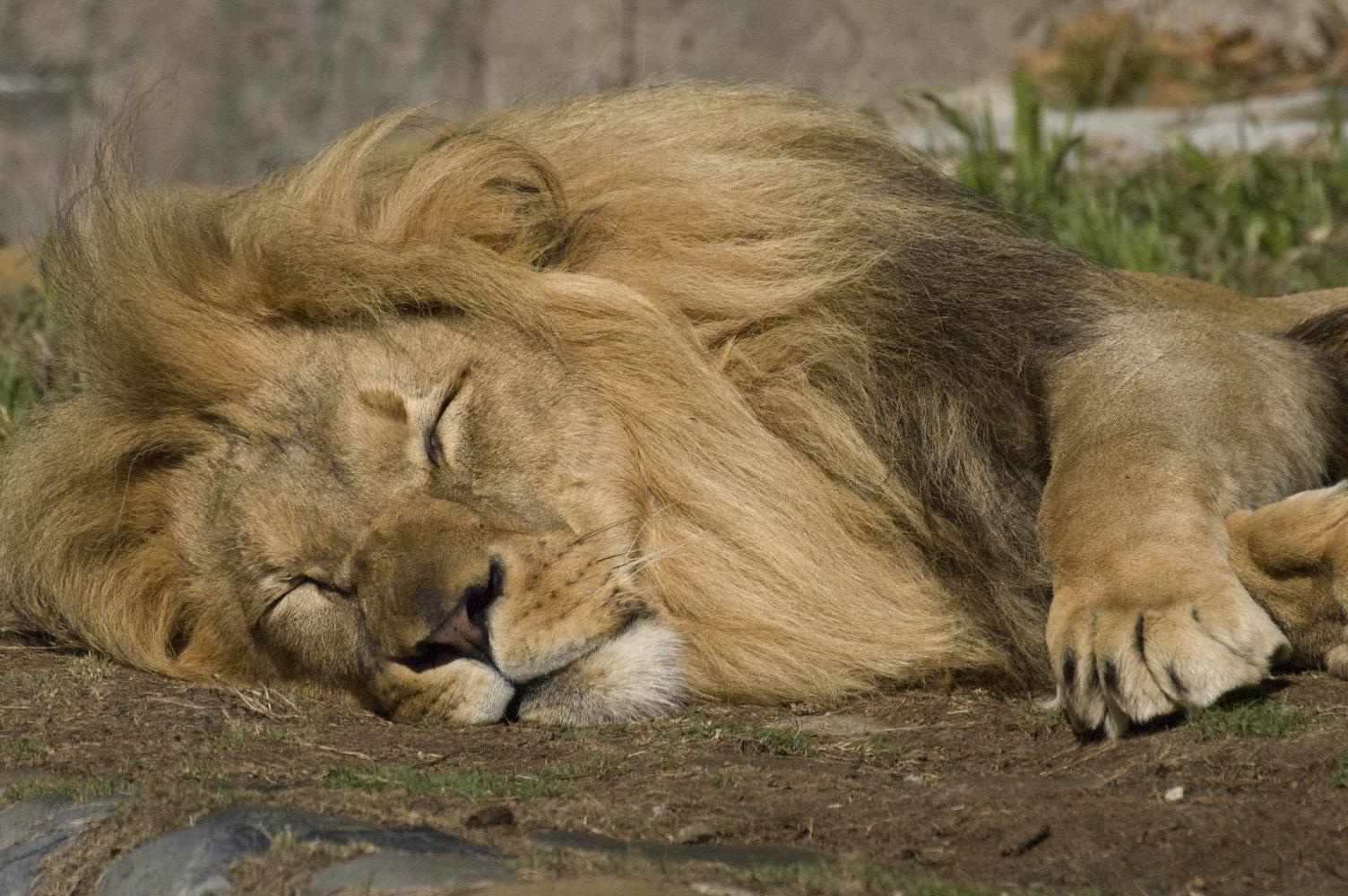
Here is a photo of a lion
(2007) San Francisco Zoo, California • Photo Posted Sunday, October 28, 2007 • © 2007 Terry Costales 
#20071028.jpg Add a comment or report a mistake
|
|
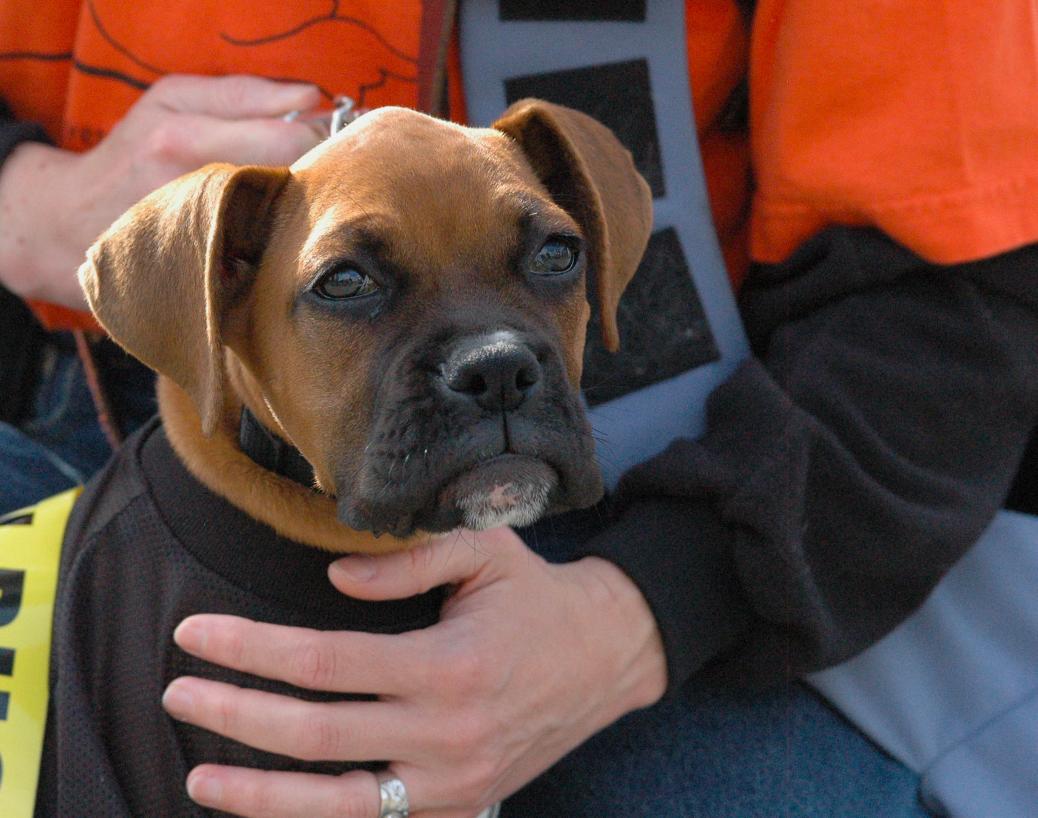
This little guy
(2007) San Francisco, California • Photo Posted Wednesday, October 31, 2007 • © 2007 Terry Costales 
#20071031.jpg Add a comment or report a mistake
|
|
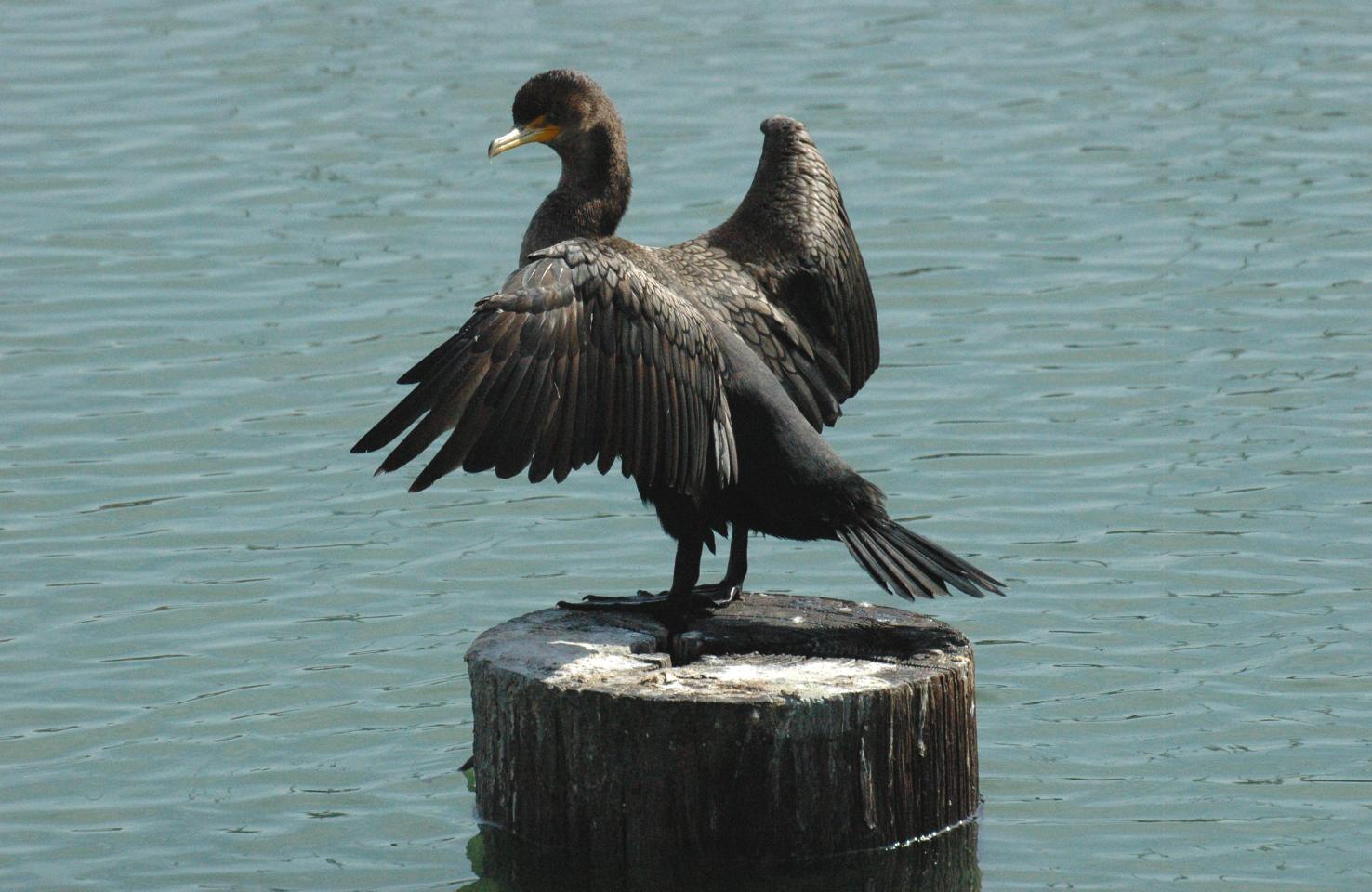
Here is a cormorant
The name "double-crested" is insired by the tufts of white feathers over the eyes that only appear in breeding season.
(2007) San Francisco, California • Photo Posted Thursday, November 1, 2007 • © 2007 Terry Costales 
#20071101.jpg Add a comment or report a mistake
|
|
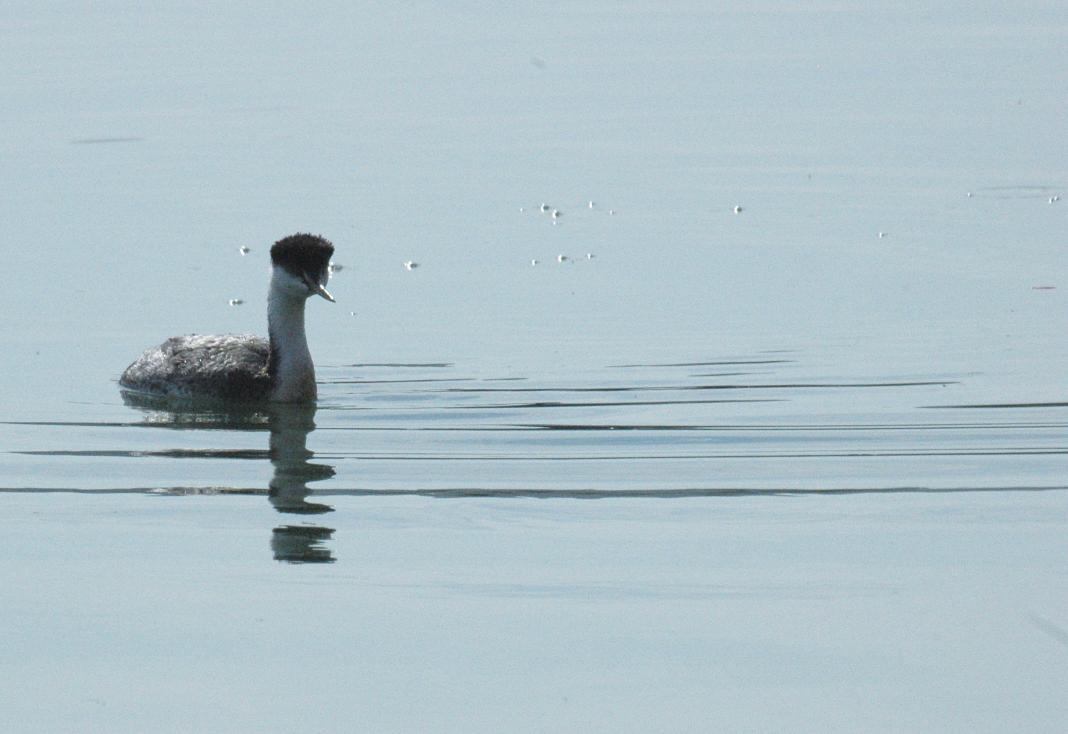
An adult Western Grebe
(2007) San Francisco, California • Photo Posted Friday, November 2, 2007 • © 2007 Terry Costales 
#20071102.jpg Add a comment or report a mistake
|
|
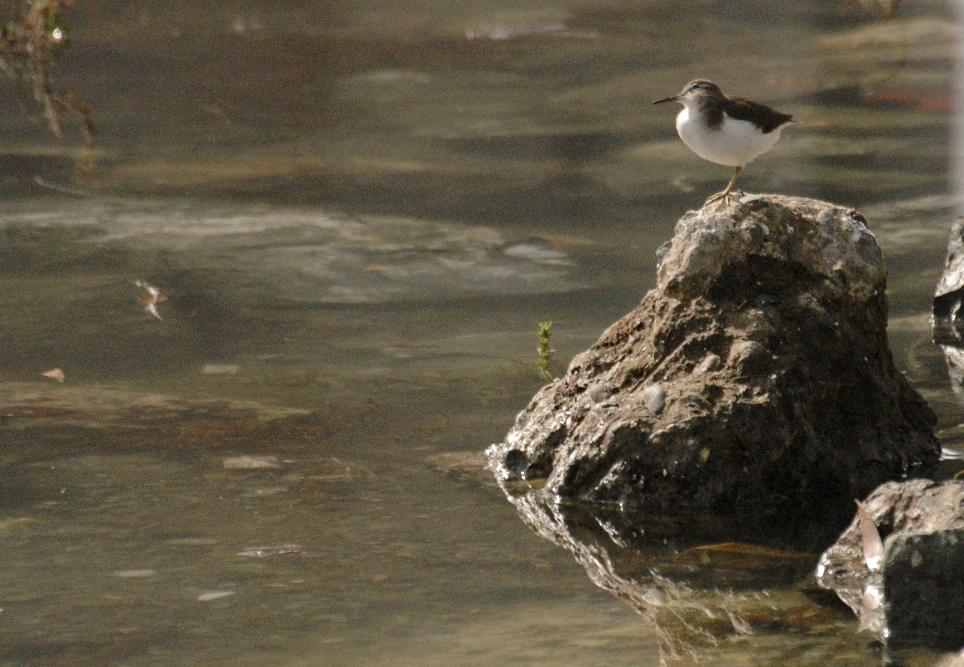 A small shorebird, about 4-6 inches long, was perched on a rock. I don't know what kind it is.
(2007) San Francisco, California • Photo Posted Saturday, November 3, 2007 • © 2007 Terry Costales 
#20071103.jpg Add a comment or report a mistake
|
|
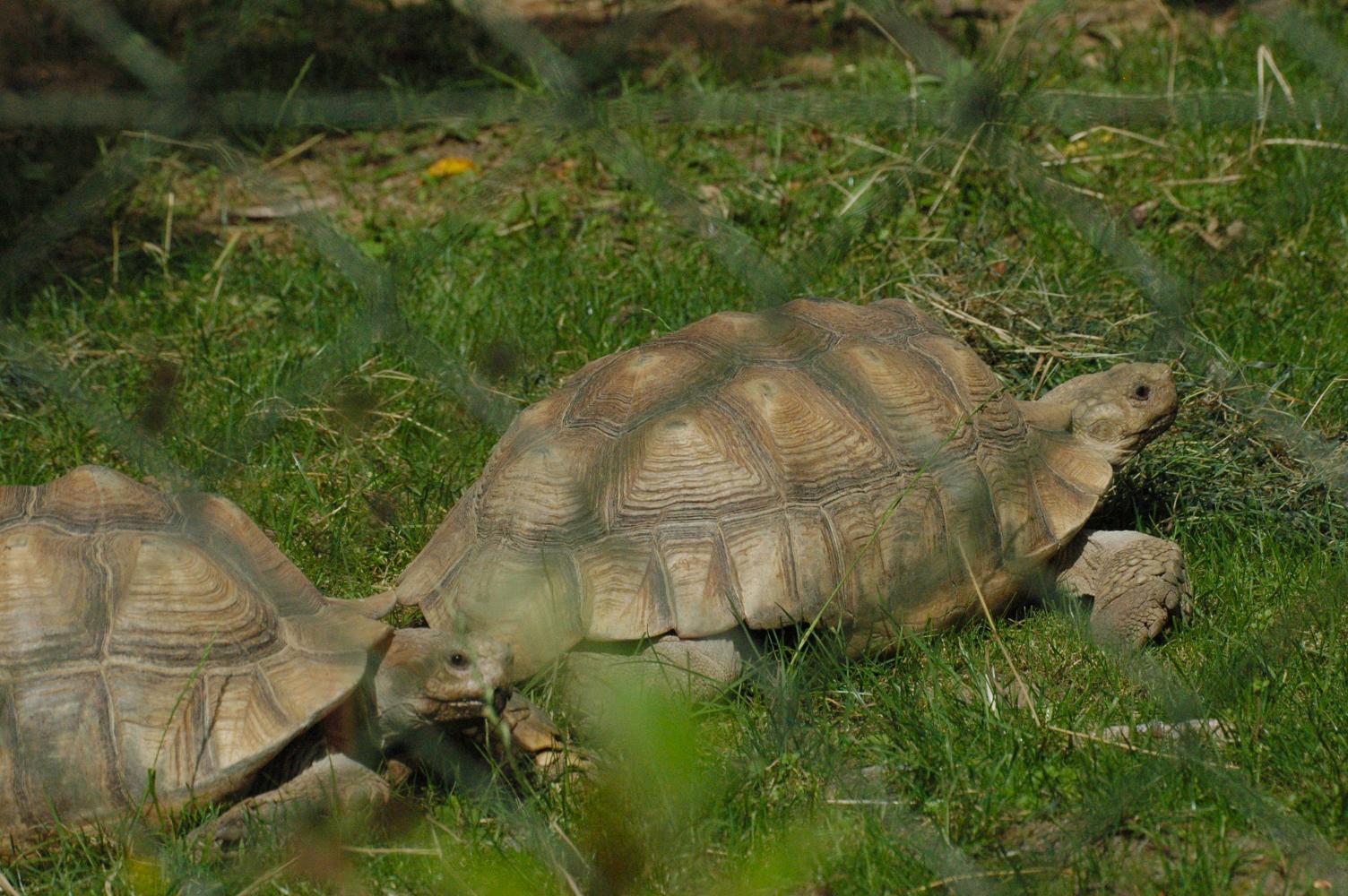 These two large tortoises ambled about and were not as sluggish as one might expect. I dont know which species of tortoise this is because I forgot to photograph the sign.
(2007) Dublin Zoo, Dublin, Ireland • Photo Posted Sunday, November 4, 2007 • © 2007 Terry Costales  #Dublin_Zoo
#Dublin_Zoo
Add a comment or report a mistake
|
|
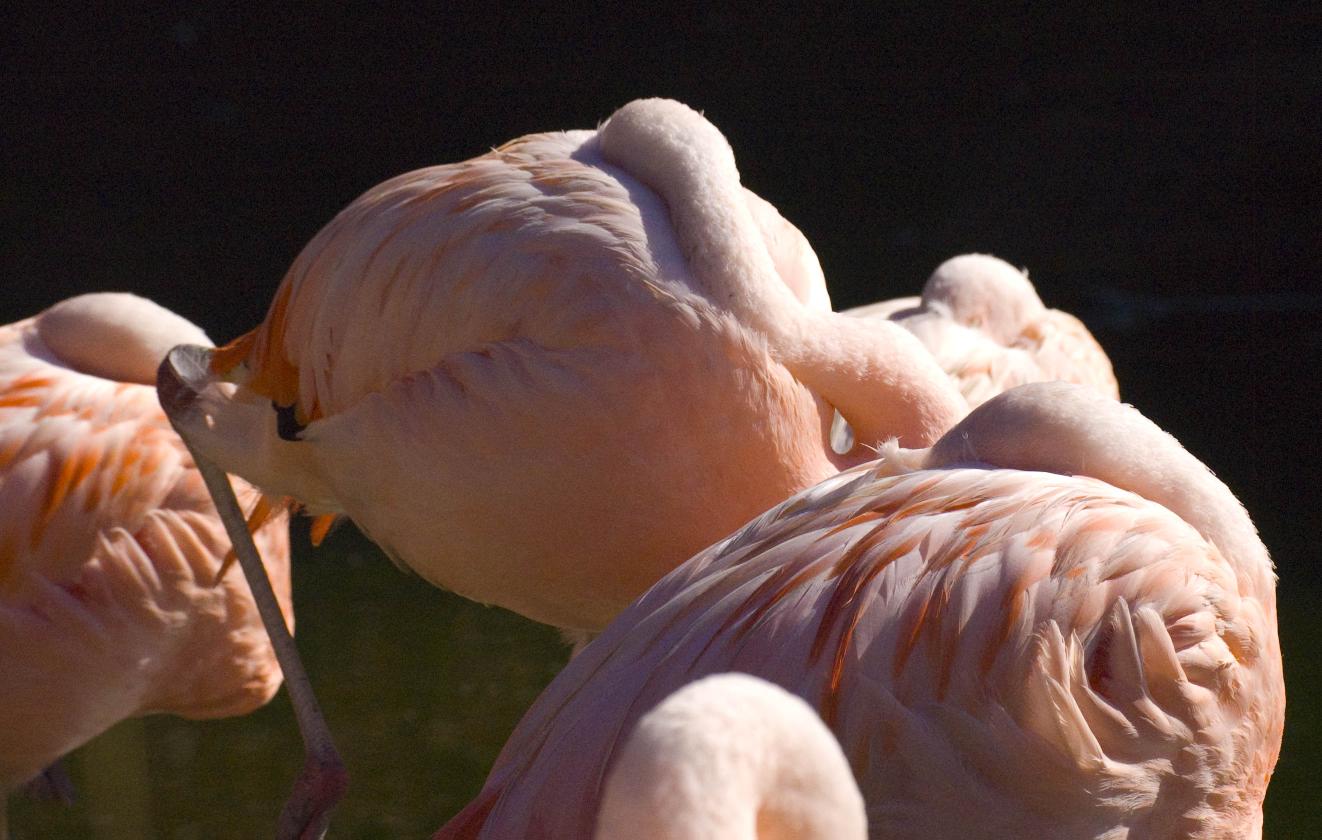 This photo reminds me of peach colored roses in a garden, ready to unfurl.
(2007) San Francisco Zoo, California • Photo Posted Monday, November 5, 2007 • © 2007 Terry Costales 
#20071105.jpg Add a comment or report a mistake
|
|
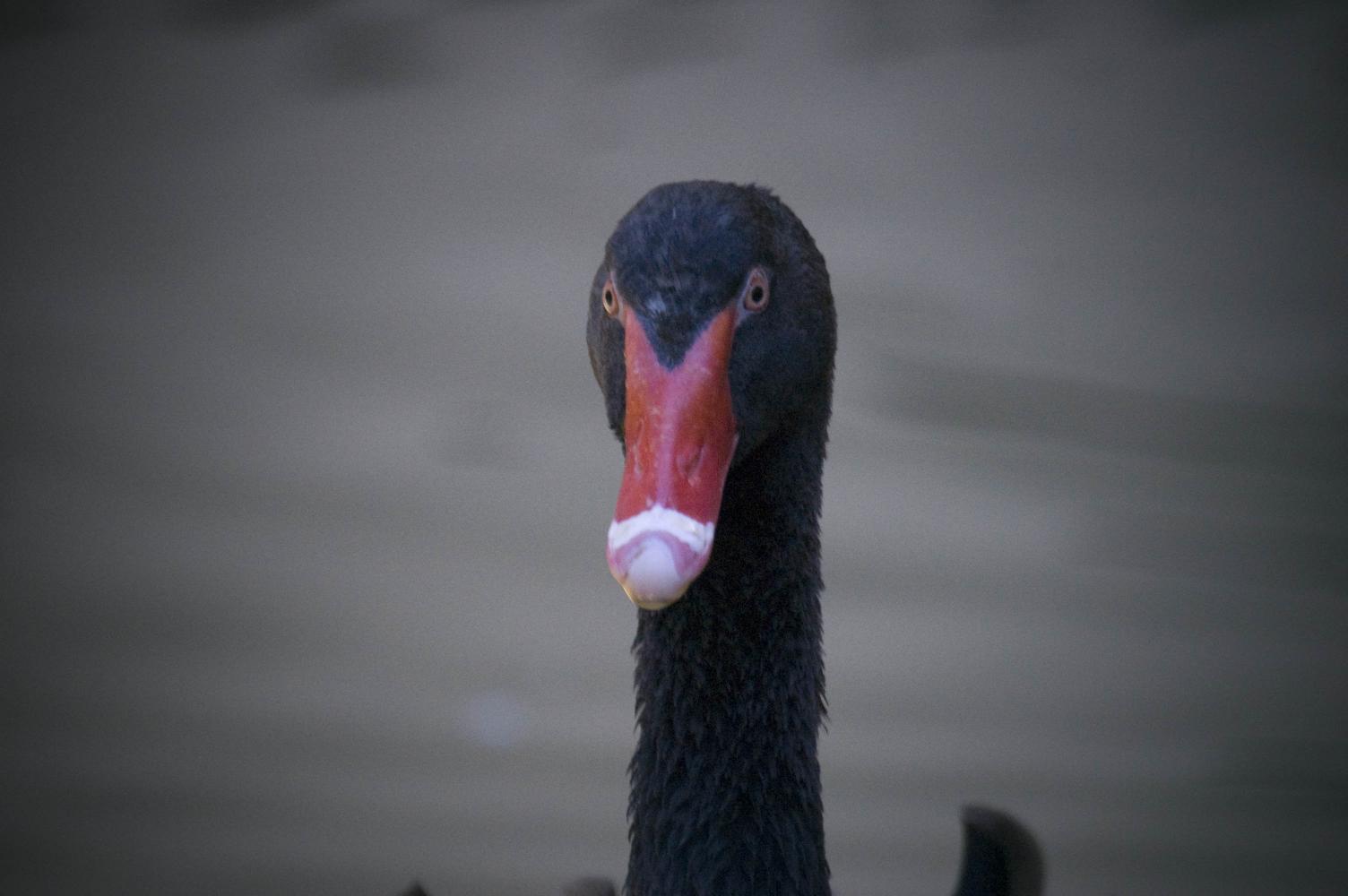
The face of an Australian bird
(2007) San Francisco, California • Photo Posted Tuesday, November 6, 2007 • © 2007 Terry Costales 
#20071106.jpg Add a comment or report a mistake
|
|
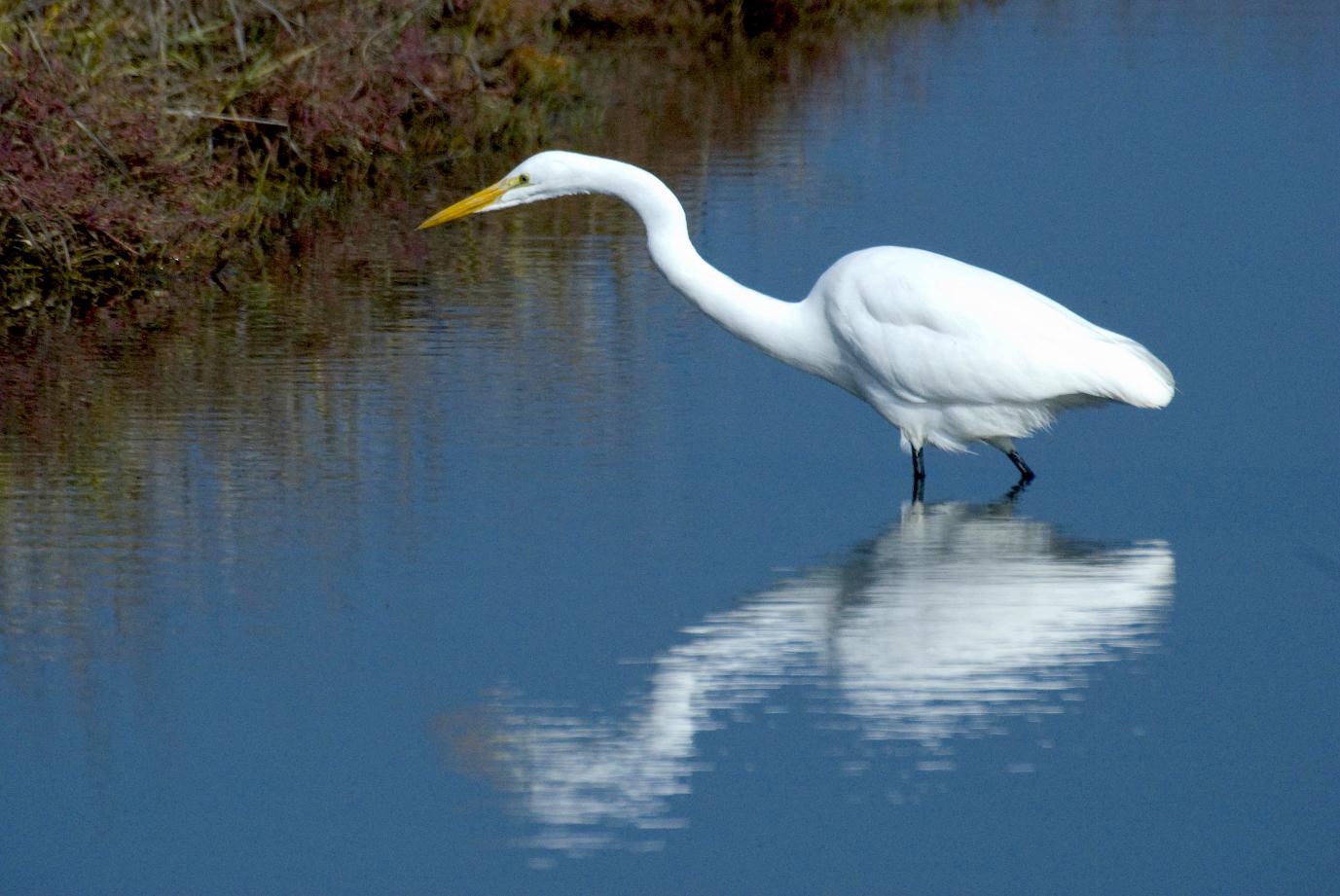
I was fascinated to watch this egret hunt
(2007) Palo Alto Bird Sanctuary • Photo Posted Thursday, November 8, 2007 • © 2007 Terry Costales 
#20071108.jpg Add a comment or report a mistake
|
|
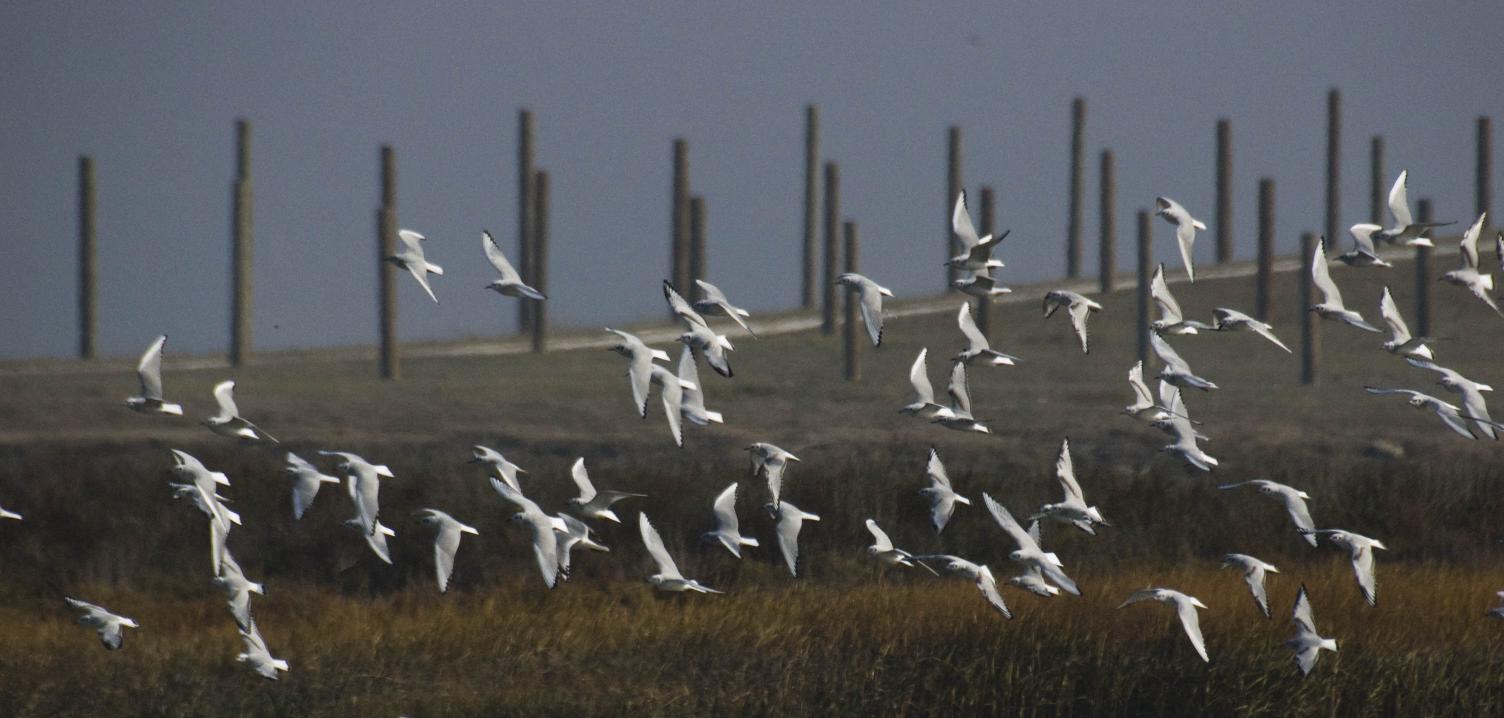
I generally prefer to photograph individual birds or pairs. But sometimes the flock
(2007) Palo Alto Bird Sanctuary, California • Photo Posted Friday, November 9, 2007 • © 2007 Terry Costales 
#20071109.jpg Add a comment or report a mistake
|
|
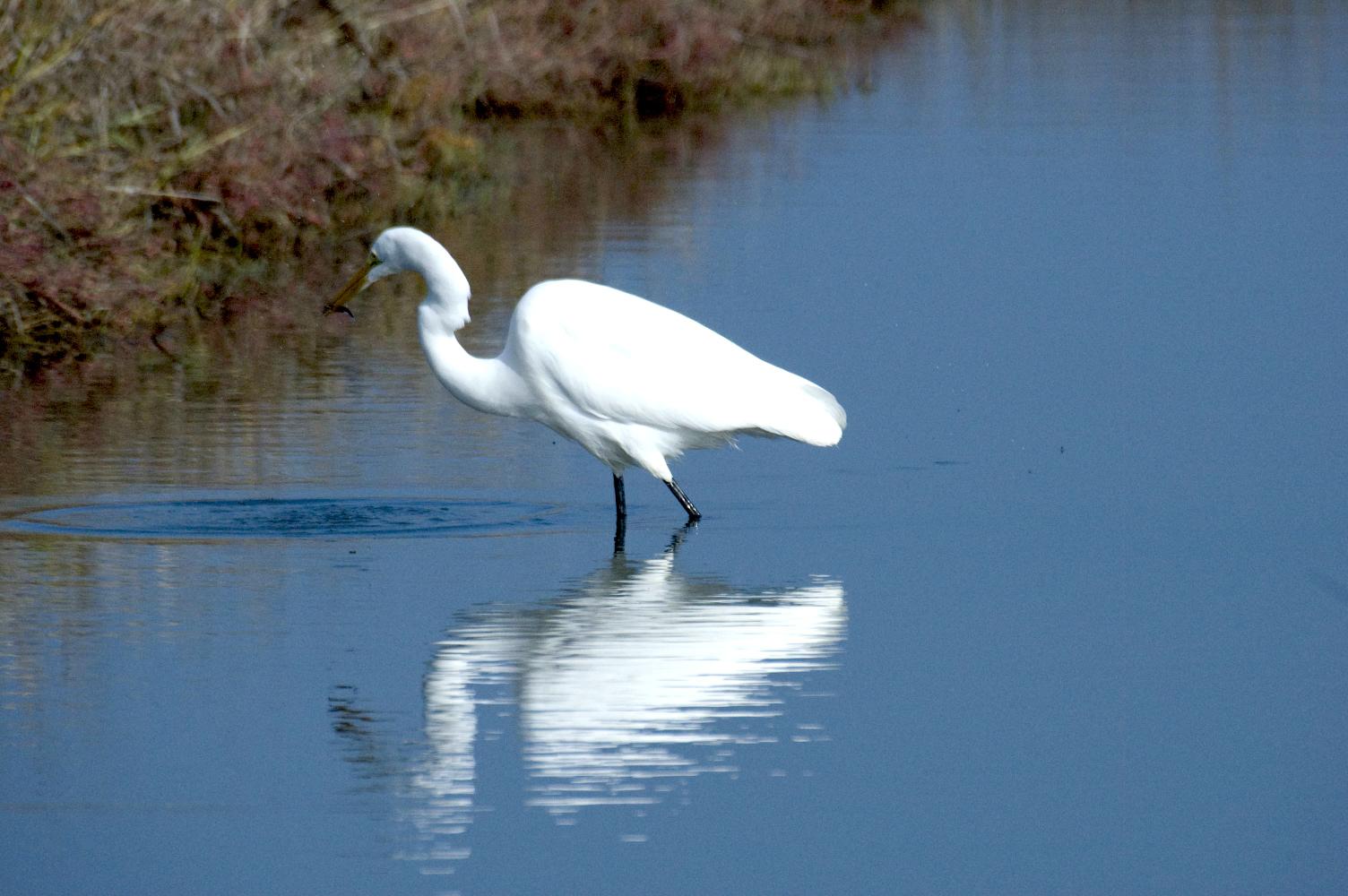 The Great Egret has just caught a small fish.
(2007) Palo Alto Bird Sanctuary, California • Photo Posted Saturday, November 10, 2007 • © 2007 Terry Costales 
#20071110.jpg Add a comment or report a mistake
|
|
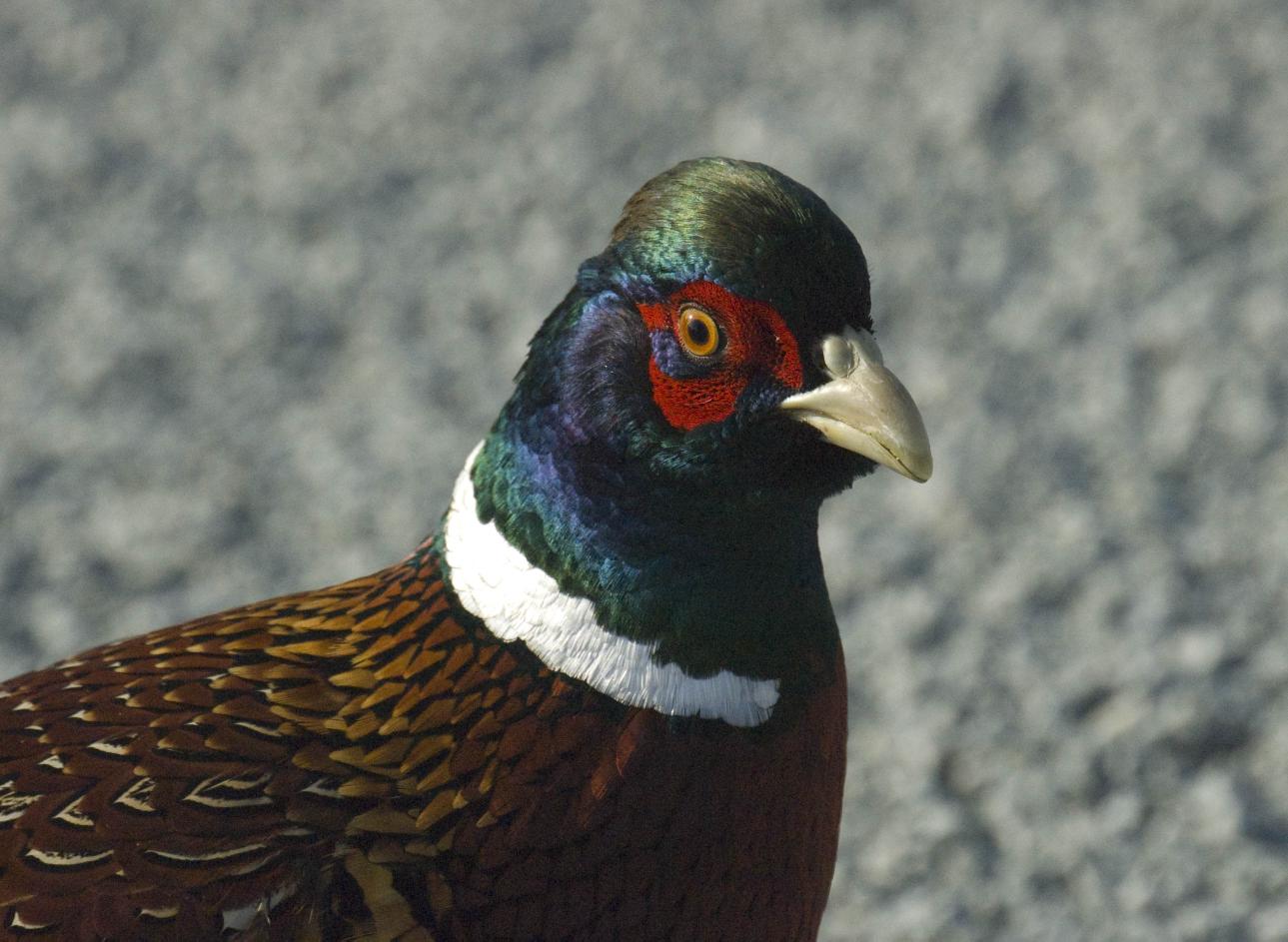
This gorgeous male pheasant
(2007) Palo Alto Bird Sanctuary, California • Photo Posted Sunday, November 11, 2007 • © 2007 Terry Costales 
#20071111.jpg Add a comment or report a mistake
|
|
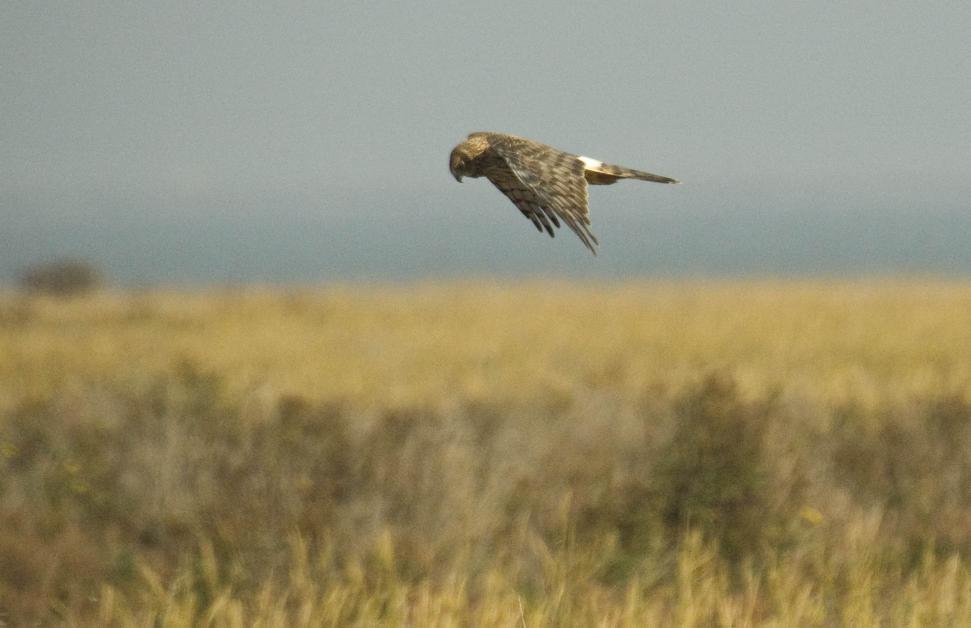
In all my visits to this area over the past year, I finally captured a decent shot of a Harrier

#20071112.jpg Add a comment or report a mistake
|
|
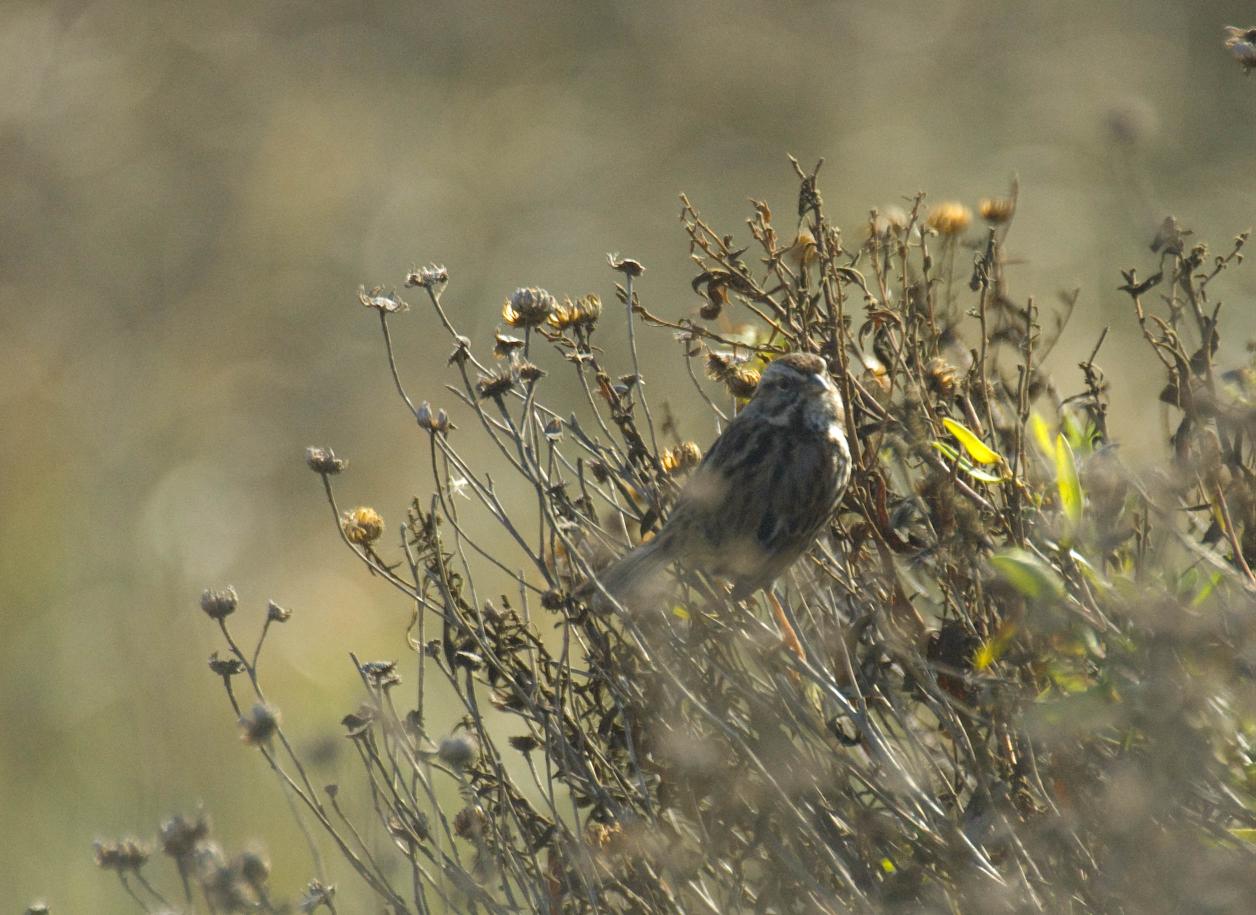
A well camouflaged
(2007) Palo Alto Bird Sanctuary • Photo Posted Tuesday, November 13, 2007 • © 2007 Terry Costales 
#20071113.jpg Add a comment or report a mistake
|
|
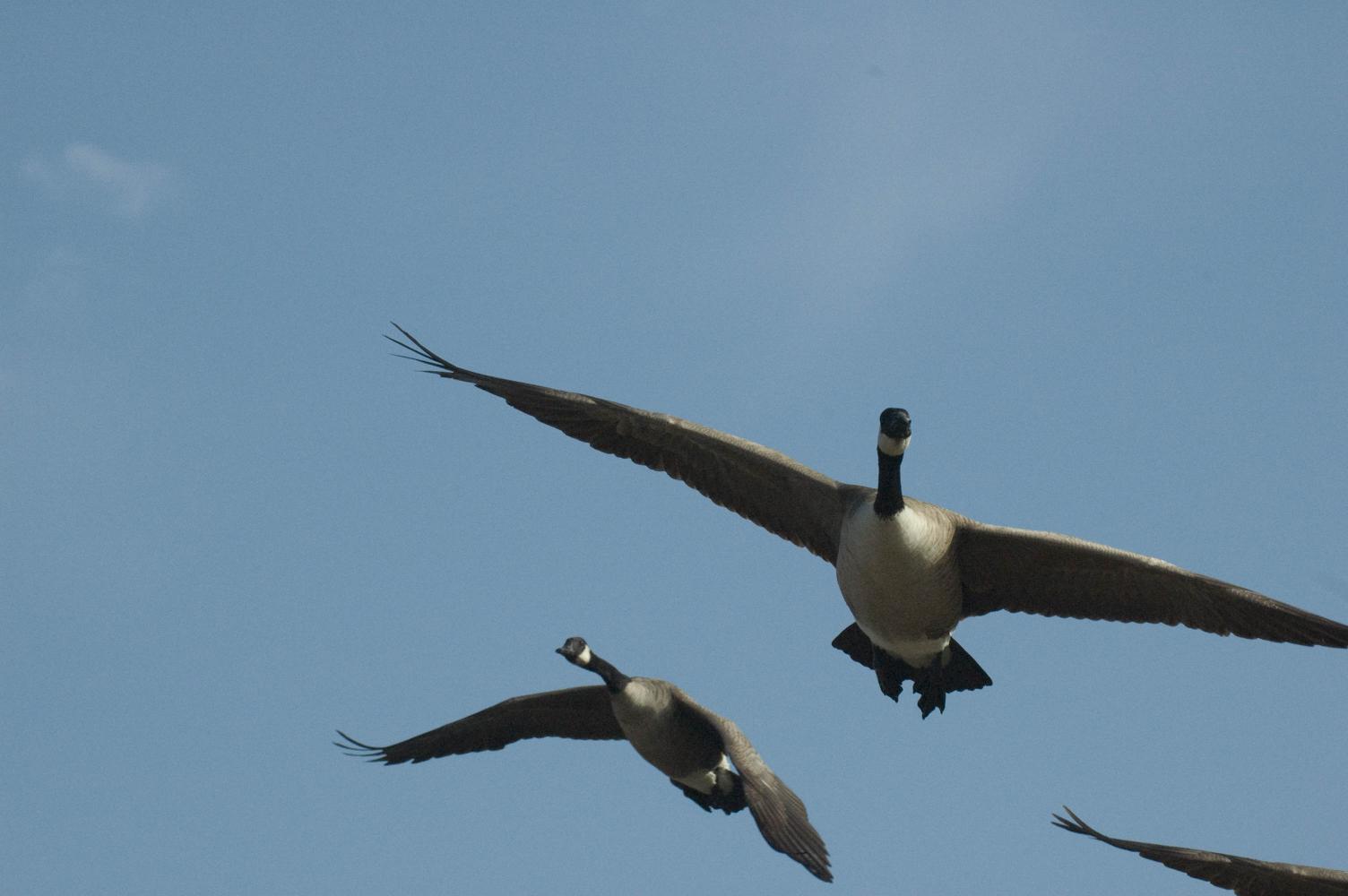
When Canada Geese
(2007) Palo Alto Bird Sanctuary • Photo Posted Thursday, November 15, 2007 • © 2007 Terry Costales 
#20071115.jpg Add a comment or report a mistake
|
|
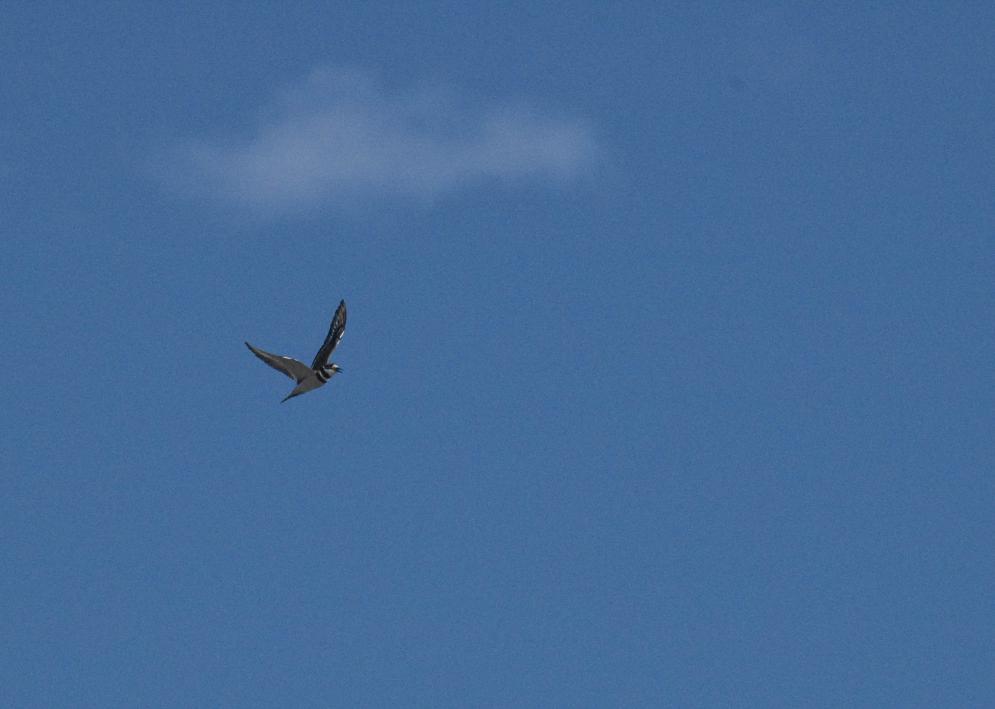
Killdeer
(2007) Palo Alto Bird Sanctuary, California • Photo Posted Friday, November 16, 2007 • © 2007 Terry Costales 
#20071116.jpg Add a comment or report a mistake
|
|
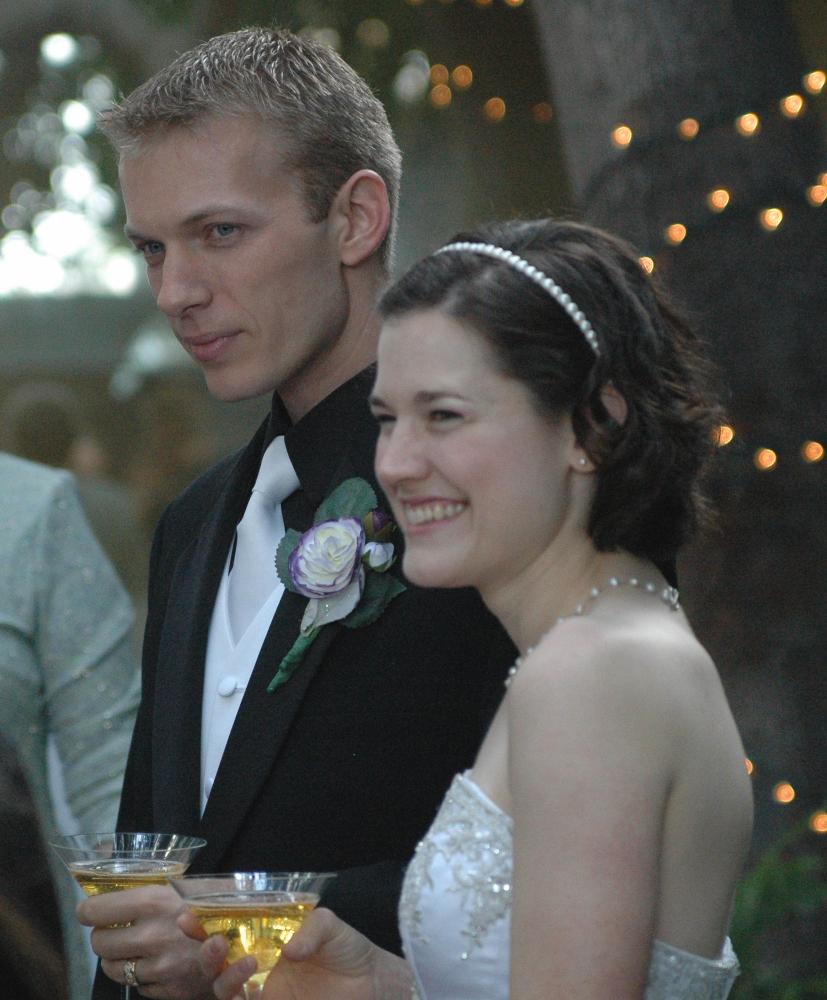 I know this should be the Animalblog, but my only son, Dieter, got married this Sunday! Here is Dieter with his beautiful wife, Lizzy. My Congratulations and Best Wishes to them both.
(2007) Los Angeles, California • Photo Posted Tuesday, November 20, 2007 • © 2007 Terry Costales 
#20071120.jpg Add a comment or report a mistake
|
|
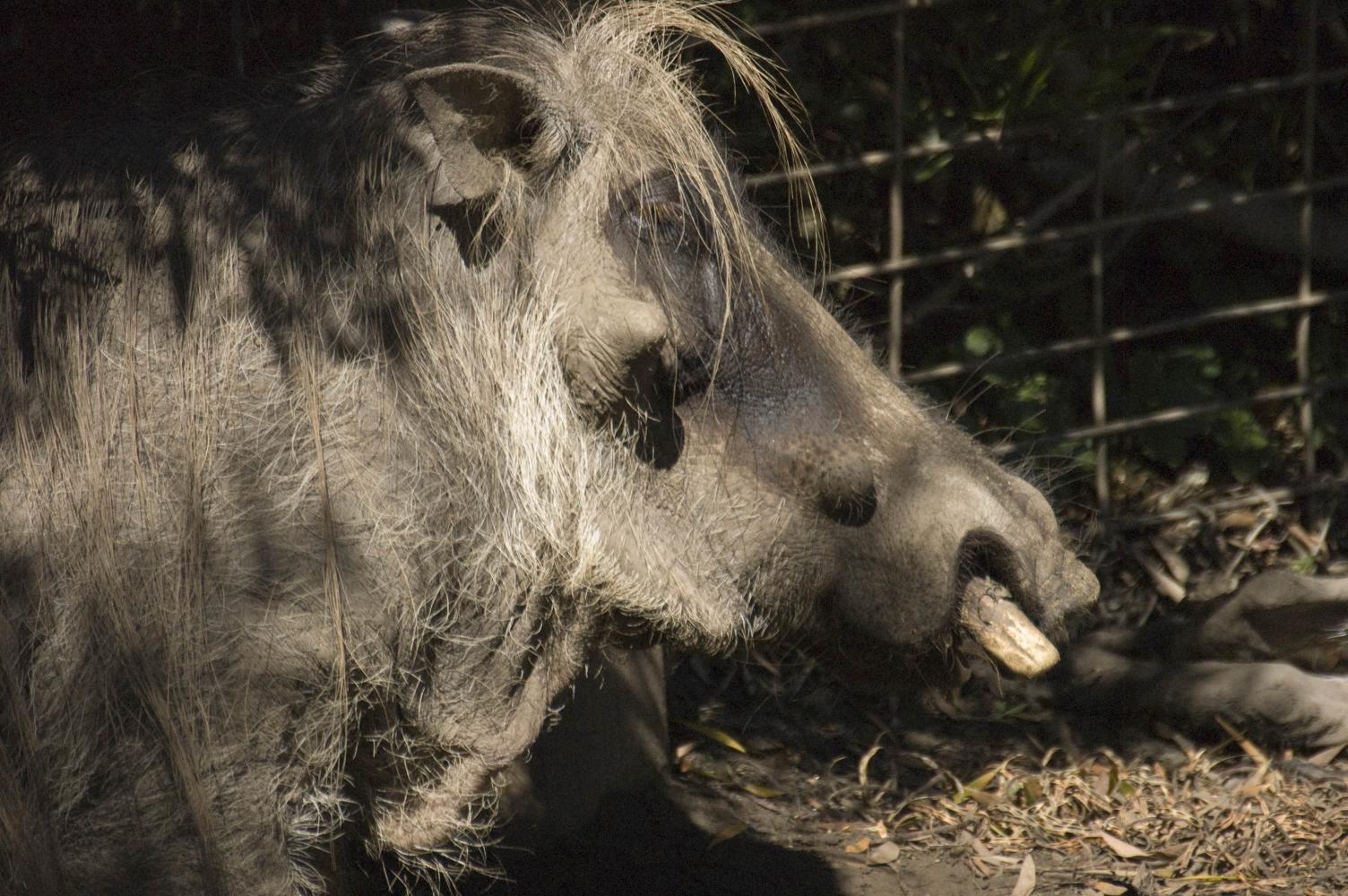
The profile of a warthog They do have their niche in nature, but they just don't look good filling it.
(2007) San Francisco Zoo, California • Photo Posted Wednesday, November 21, 2007 • © 2007 Terry Costales 
#20071121.jpg Add a comment or report a mistake
|
|
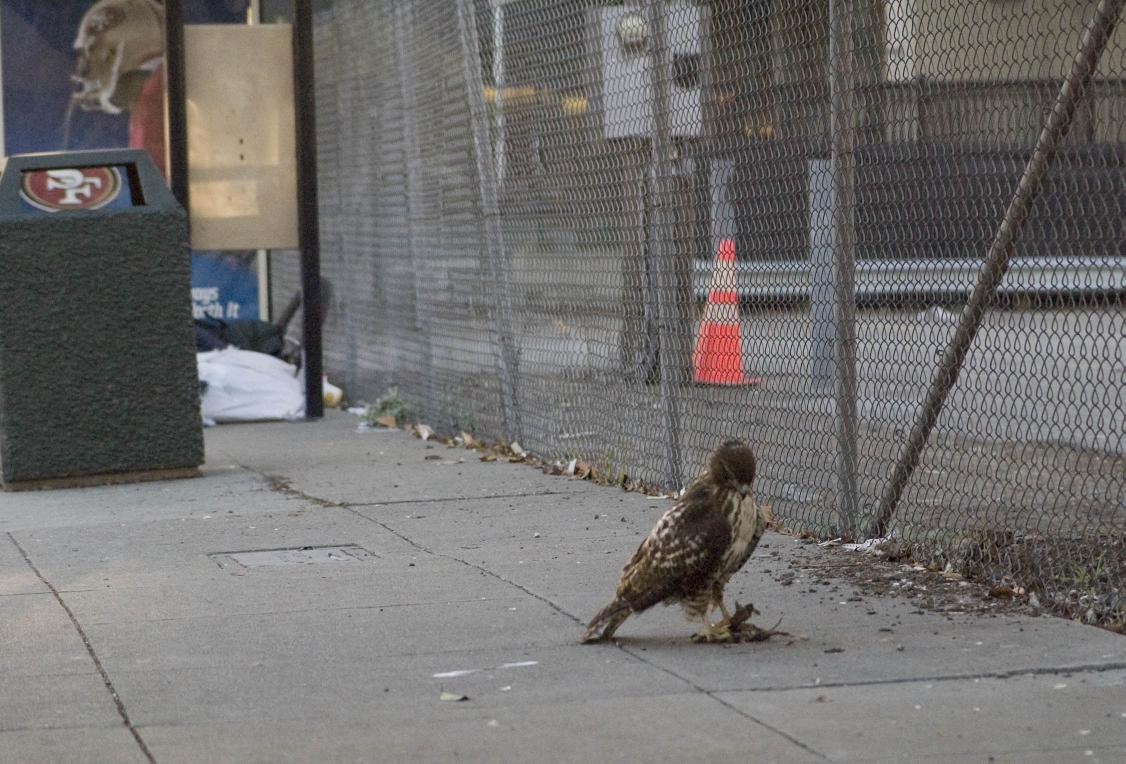 This hawk unaware that it was Thanksgiving morning, none the less, enjoyed the holiday while helping the city lessen its vermin problem.
(2007) Main Street, San Francisco, California • Photo Posted Saturday, November 24, 2007 • © 2007 Terry Costales 
#20071124.jpg Add a comment or report a mistake
|
|
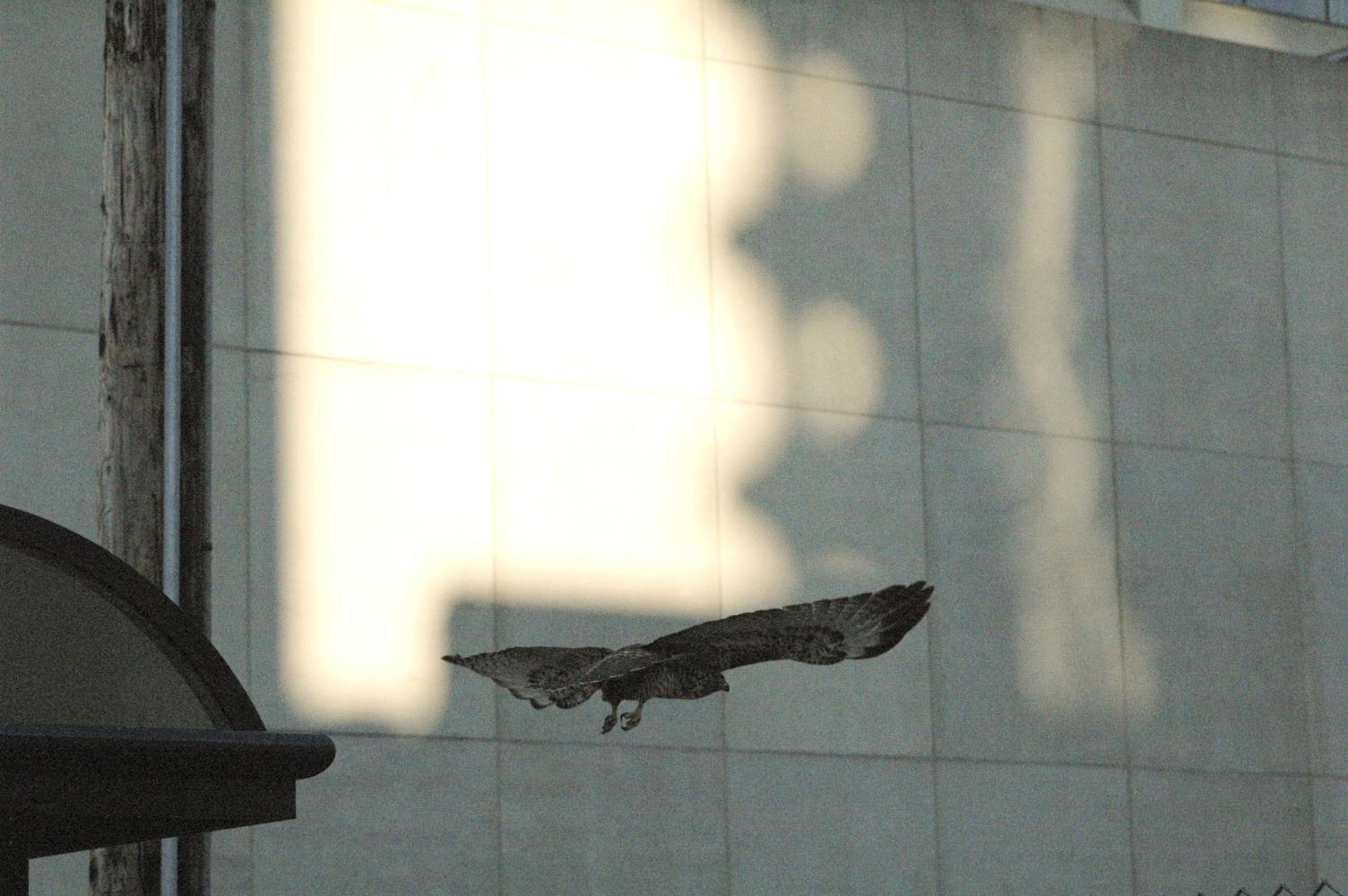
Disturbed by photographer, the Thanksgiving hawk
(2007) Main and Fulton, San Francisco, California • Photo Posted Sunday, November 25, 2007 • © 2007 Terry Costales 
#20071125.jpg Add a comment or report a mistake
|
|
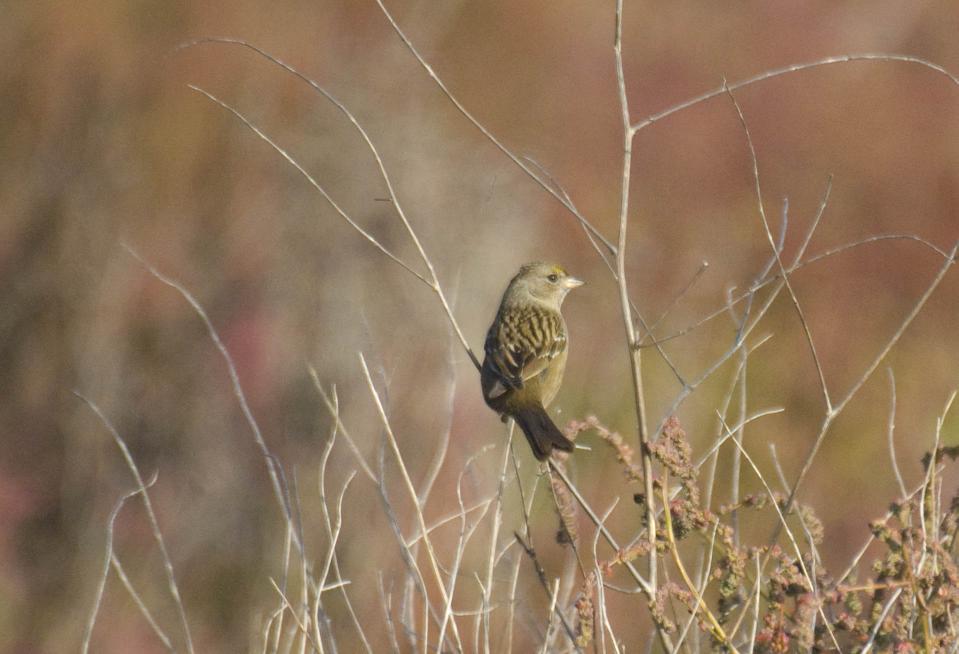
Fall colors provide a wonderful background for this little sparrow.
(2007) California Delta, California • Photo Posted Saturday, December 1, 2007 • © 2007 Terry Costales 
#20071201.jpg Add a comment or report a mistake
|
|
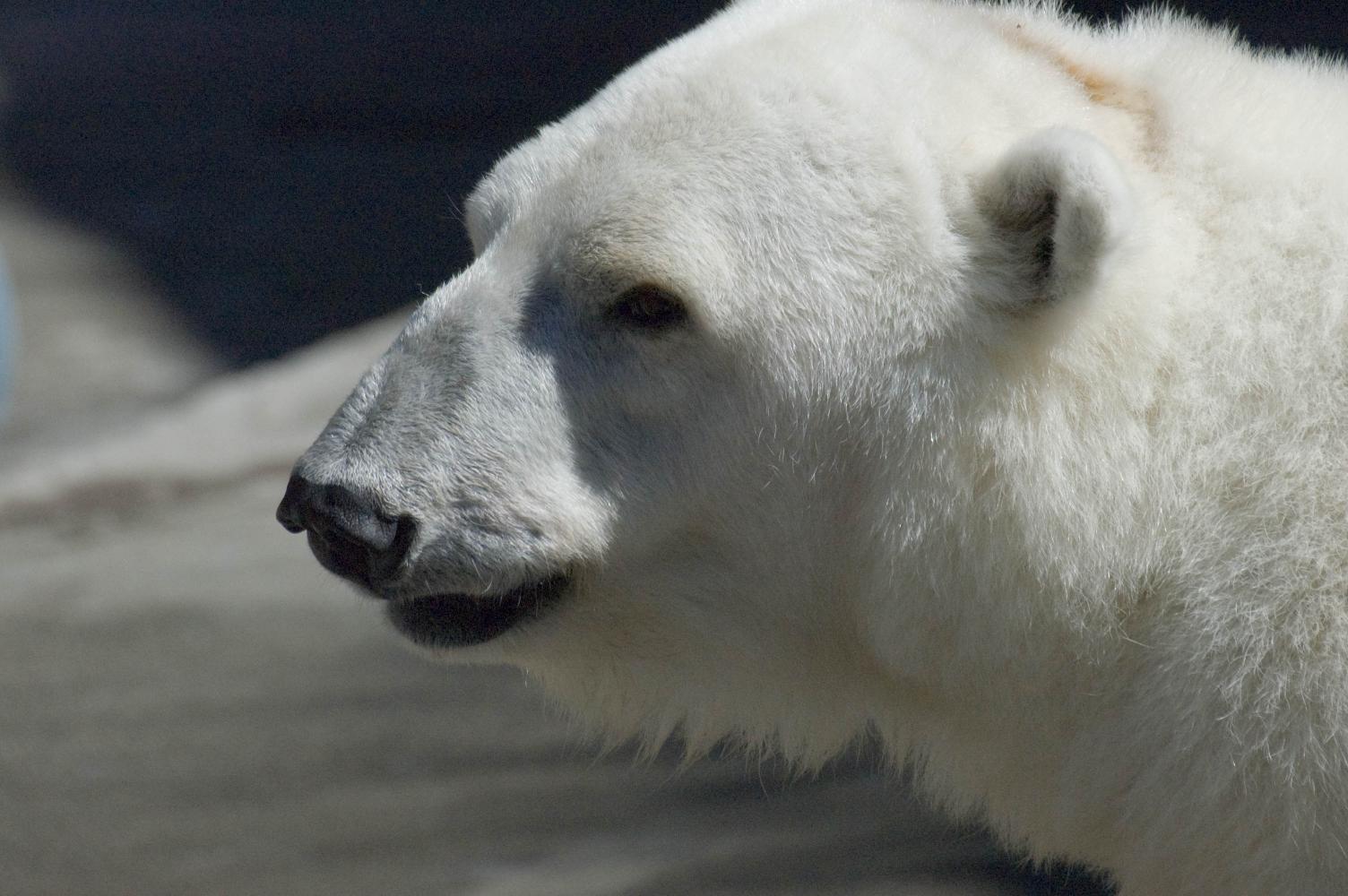
What a face.
(2007) San Francisco Zoo, California • Photo Posted Sunday, December 2, 2007 • © 2007 Terry Costales 
#20071202.jpg Add a comment or report a mistake
|
|
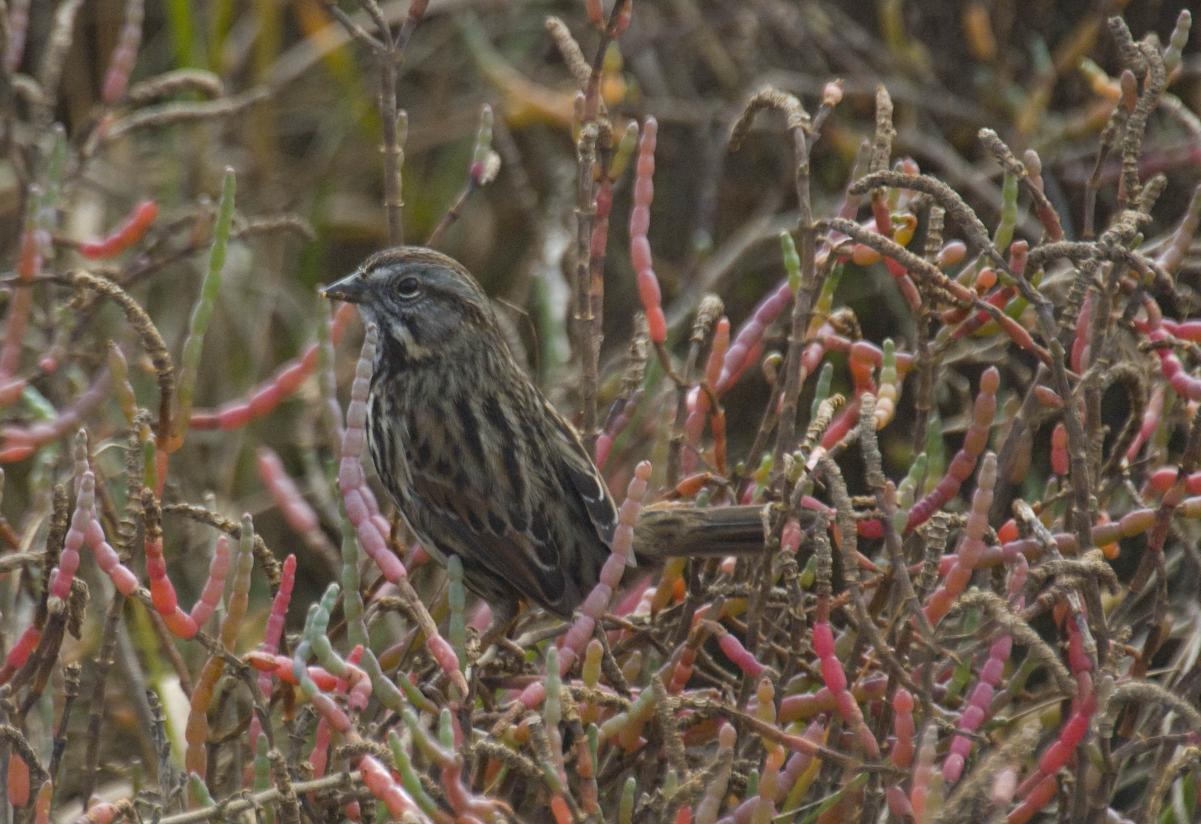 Pickleweed makes even a little sparrow look good.
(2007) Palo Alto Bird Sanctuary • Photo Posted Friday, December 7, 2007 • © 2007 Terry Costales 
#20071207.jpg Add a comment or report a mistake
|
|
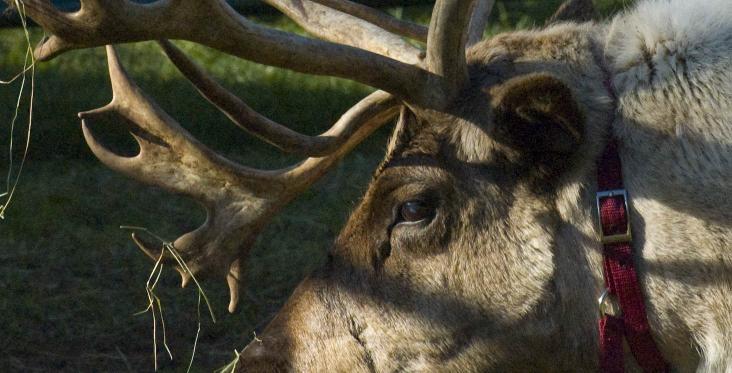
The quintessential Christmas animal.
(2007) San Francisco Zoo, California • Photo Posted Saturday, December 8, 2007 • © 2007 Terry Costales 
#20071208.jpg Add a comment or report a mistake
|
|
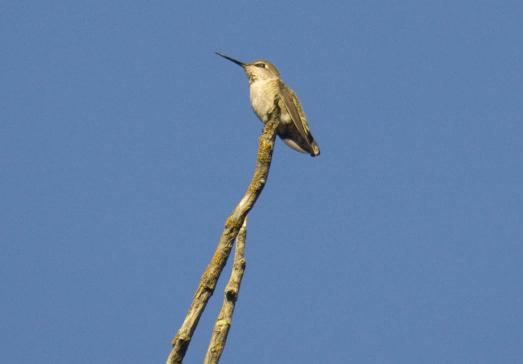
A female hummingbird on a stick.
(2007) San Francisco, California • Photo Posted Sunday, December 9, 2007 • © 2007 Terry Costales 
#20071209.jpg Add a comment or report a mistake
|
 |
| home • contact • topic guide • top 25 • photos • video • writing • blogs • upload • terms • privacy |